9 Stunning Backpacking Trips in the U.S. You Should Know About
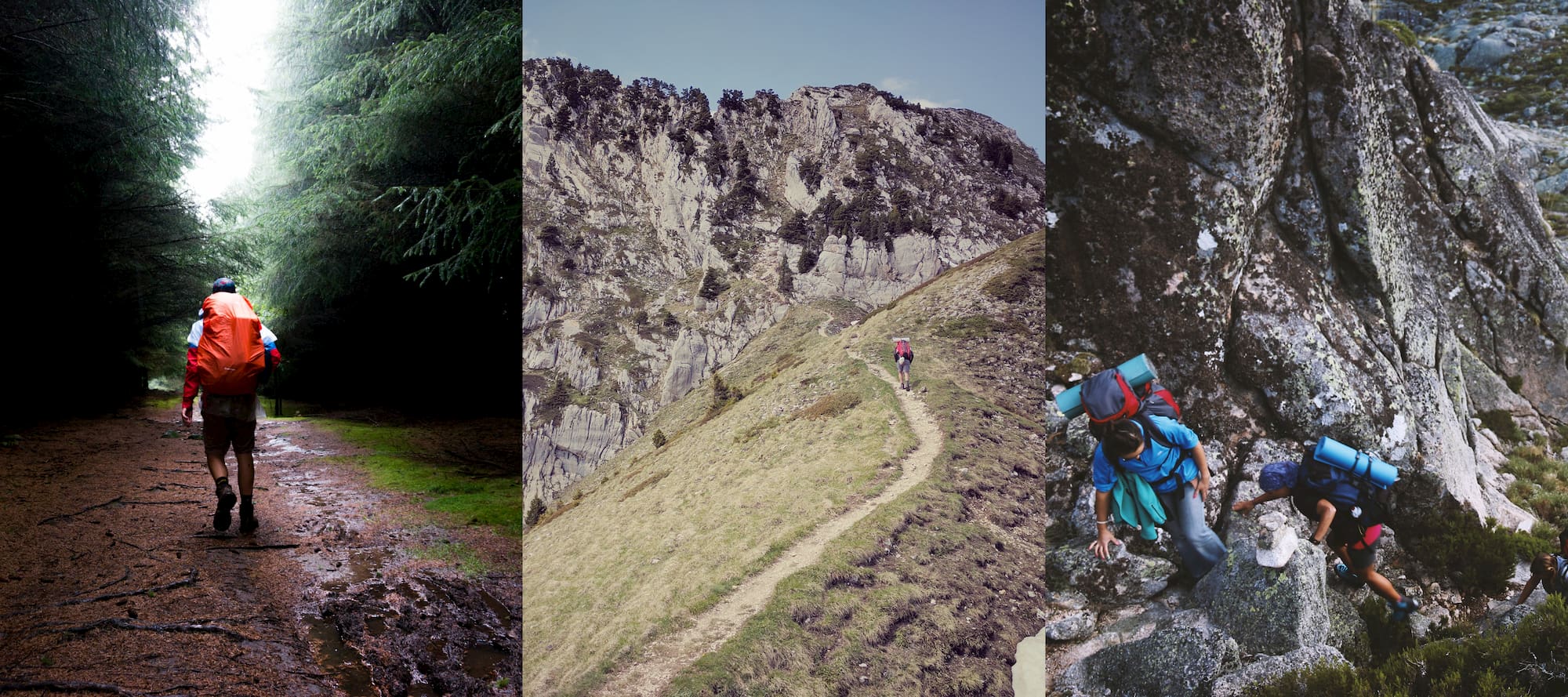
This article on the best backpacking trips in the U.S. is brought to you by Gregory , the makers of hiking backpacks that are tough enough for day hikes, weekend trips and thru-hiking adventures.
Backpack camping—an approach that involves hiking to your campsite, usually carrying a hefty backpack of gear with you—isn’t for everyone. The KOA North American Camping Report of 2019 supports that statement; while camping popularity in the U.S. has overall reached new heights among a wider audience of households in recent years, those new campers are generally drawn to car camping, glamping, and the more convenient destinations. Which means that backpacking continues to offer an escape from the crowds.
Venture out on a backcountry trail in any crowded national park and you’ll find the crowds all but disappear, just a few miles in. If you bring your camping supplies with you, a secluded, quiet camping experience awaits you in the wilderness.
The best backpacking trips in the U.S. span a range of experience levels. Once you’ve collected your gear (with some help from our backpacking checklist ), it’s time to pick a trail.

9 Bucket List Backpacking Trips in the U.S.

Photo Courtesy of William Saunders
This list of backpacking trips in the U.S. offer a range of accessibility depending on your skills and experience. No matter the experience level required, they’re all stunning and enjoyable. Researching this backpacking resource definitely made us want to get away from our computers and hit all of these trails.
1. The Lost Coast Trail —Northern California
Length: 24 miles Elevation Change: 1,542 feet Days: 2-4 Trailheads: Mattole Beach, Black Sands Beach
California’s Golden Coast gets visitors galore, with hotspots mostly south of the Bay Area. But head north, beyond the hillside mansions where the famous Pacific Coast Highway disconnects from the coastline, and you’ll find the Lost Coast Trail along the state’s King Range National Conservation Area. As a wilderness trail along some of the state’s rockiest beach terrain, this backpacking trip is relatively short, but the rock scrambles and sand dunes along the way make challenge and rewarding option for beginners.
Backpacking this trail requires an overnight permit from the Bureau of Land Management, available online from Recreation.gov. The trail is best done via a shuttle service between the two trailheads, as either route is point-to-point.
2. The North Coast Route —Olympic National Park,Washington
Length: 20 miles Elevation Change: 200 feet Days: 2-4 Trailheads: Rialto Beach, Ozette Campground
Positioned along the coastal portion of Washington’s Olympic National Park, this 20-mile backpacking trail is an ideal entry point for inexperienced backpackers with a penchant for seaside views. Backpackers will find a relatively flat shoreline and fair weather seasonally along this trail, ideal for a long weekend backpacking trip on the Olympic Peninsula. With one of the lowest elevation gains on this list, hikers looking to test their distance-per-day will find a perfect path ahead.
Camping along the trail is done at established campgrounds between the trailheads, and no permit is needed for the hike itself. Keep your eyes peeled for tidepools teeming with life, as much of the coast’s rocky shore plays host to underwater life.
3. Lake Aloha Trail —Central California
Length: 12 miles Elevation Change: 1,873 feet Days: 2-3 Trailheads: Echo Lake Trailhead
The Lake Aloha trail, on the southern end of California’s Lake Tahoe, is seemingly custom built for entry-level backpackers interested in a postcard-worthy view. A hike along this 12-mile loop trail takes you along a number of alpine lakes in the Desolation Wilderness, and brings you up 1,800 feet in total. Take a leisurely pace to make the incline portion much easier, and after a long sweaty hike, take a swim in Lake Aloha, where there’s dispersed camping along a ridge nearby.
Since this is one of the best backpacking trips in the U.S., snagging a reservation for camping in the area can be tough—look to plan this trip early in the off-season, and expect to check online regularly for openings. Campfires are never allowed in the Desolation Wilderness, and campers should check out safety tips from the Lake Tahoe Basin Management Unit .

The Timberline Trail
4. Mount Sterling Loop Trail (Via Low Gap) —Great Smoky Mountains National Park, Tennessee
Length: 28.5 miles Elevation Change: 8,110 feet Days: 4-5 Trailheads: Low Gap Trailhead, Big Creek Trailhead
Situated in the country’s most visited national park, the Mount Sterling Loop Trail offers an intermediate-level backpacking trip to the peak of one of the tallest points in the park. Hike from the Low Gap trailhead in Crosby, NC and pass through old growth forests—crossing state lines into Tennessee on your way. You’ll follow the Big Creek to the summit of Mount Sterling, where you’ll come across a firetower, built during the 1930s by the Civilian Conservation Corps—perfect for getting sweeping views of the misty mountains. Continue on from the summit and you’ll complete a loop around the mountain, circling back to the Low Gap Trailhead. The total 8,000+ elevation gain is subtle on the majority of the trail, although some points climb sharply via switchbacks as you begin to circle the mountain.
As part of the Great Smoky Mountains National Park , backcountry camping on this trail requires a backcountry permit from the park office, alone with reservations made in advance for campgrounds/shelters along the way. More information on reservations and permits can be found from the park’s Backcountry Office at 865-436-1297.
5. Timberline Trail —Mount Hood National Forest, Oregon
Length: 38.3 miles Elevation Change: 9,000 feet Days: 4-5 Trailheads: Timberline Lodge
Mount Hood is one of Oregon’s Seven Wonders, an active volcano just about an hour outside of Portland. While many make a point to visit the mountain’s cozy Timberline Lodge, backpackers looking for a more scenic view of this monolith can venture out on the Timberline Trail which circles the mountain. Start from the parking lot of Timberline Lodge and head east or west on the trail to get started; you’ll traverse roughly 9,000 feet of elevation change over about four days. The loop will circle you back to Timberline Lodge, where you should relax apres-hike with a warm drink indoors.
This trail involves a decent amount of trail merges, so be careful when navigating that you don’t make a wrong turn on to various off-shoots. The Timberline Trail can be dangerous when inclement weather is present, as with any instance of high-elevation hiking, you should feel confident that your backpacking skills match the worst weather scenarios you might face. No permits are needed for the hike.
6. Cottonwood Marble Canyon Loop Trail —Death Valley National Park, California
Length: 26-28 miles Elevation Change: 5,613 feet Days: 3 Trailheads: Stovepipe Wells
With terrain and scenery pulled straight from Mars, hiking around Death Valley National Park (or the Mojave desert in general) is as interesting as it is intense. The Cottonwood-Marble Canyon Loop Trail takes backpackers through a dry and stark terrain, and requires more planning than a typical backpacking trip. The trail, running close to 30 miles in a loop, will connect from the Stovepipe Wells trailhead, and can take about 3 days. As with most desert backpacking, you must plan your trip around water resources—this trail offers a few natural streams at some campsites but water is scarce for the majority of the hike. Along with plenty of water, be sure to bring a water filter to refill when available.
Getting to the trailhead requires a 4WD vehicle at all times of the year, but no pre-planning for a permit is needed. Permits are available for free at visitor contact stations across the park. The challenge of this trail lies mainly in the difficult conditions of the desert, so be sure to read Death Valley National Park’s tips on planning this hike in advance.
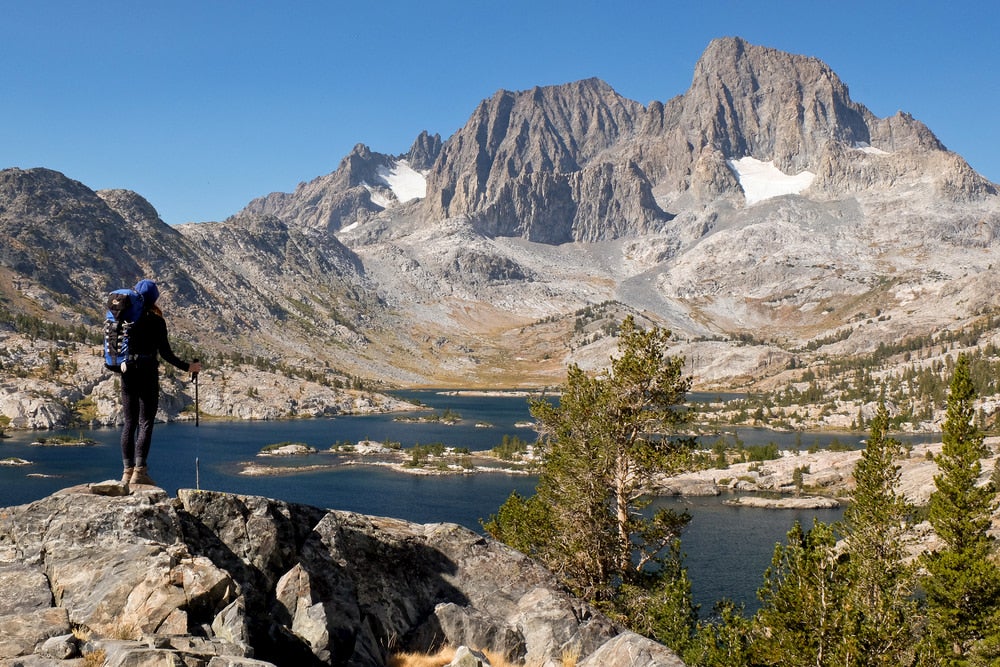
The John Muir Trail
7. The John Muir Trail —California
Length: 221 Miles Elevation Change: cumulative 47,000 feet Days: 20-30 Trailheads: (Southbound) Happy Isles, Sunrise Lakes, Glacier Point, Lyell Canyon
Cutting more than 200 miles through central California’s Sierra Nevada mountains, the John Muir Trail is as legendary as it is scenic. Plan for close to a month of hiking, camping, and exploring part of the state’s rocky, snow-spotted terrain, with an elevation gain more than 1.5 times the height of Mount Everest.
Getting yourself a backpacking permit for the John Muir Trail might be one of the hardest parts of this trip. Hikers should plan to enter the online lottery system as early as possible, about 24 weeks before your planned trip, or possible chance a first-come, first-served permit available from the ranger station. As well, hikers should plan out resupply stops at certain campsites and vantage points along the way.
8. The Wonderland Trail —Mount Rainier National Park, Washington
Length: 93 miles Elevation Change: cumulative 22,000 feet Days: 12-14 Trailheads: Fryingpan Creek Trailhead
With so many amazing mountains to climb and trails to backpack in the Pacific Northwest, it’s hard to think there could be one trail that stands above the rest. At least in elevation, the Wonderland Trail around Washington’s Mount Rainier does just that, circling the PNW’s only mountain over 14,000 feet.
The trail itself isn’t as lengthy as other advanced backpacking trips, but serves as a short-but-tough alternative to many other trails. Climbing over 22,000 feet in cumulative elevation gain along the Wonderland Trail, you’ll enjoy dense evergreen forests and snowy peaks year-round.
The trail’s high elevation is a serious consideration as thin air can wear on hikers who aren’t used to these conditions. Take caution when beginning and ending the trip, as acclimation might be necessary for a comfortable hike. While specific permits aren’t required to thru-hike the trail, a general wilderness permit is required for backcountry camping along the way.
9. The Long Trail —Vermont
Length: 272 miles Elevation Change: cumulative 69,000 feet Days: 20-30 Trailheads: Appalachian Trail Vermont/Massachusetts, Journey’s End Road
While it may not rival some of the more scenic trails in the western U.S., Vermont’s Long Trail offers hikers a look at a stunning variety of nature along one of the greenest states east of the Mississippi River. Stretching 272 miles from the southern border with Massachusetts to the Canadian border to the north, the oldest thru-hiking trail in the United States spares no view of the Green Mountain State throughout. What this hike lacks in dramatic views akin to the western U.S., it makes up for in greenery and ease‚ with a relatively balanced elevation incline throughout. While trail conditions can get muddy starting in the late summer and early fall, hiking through the New England fall foliage is one of the most popular attractions for the backpacking trip. Finishing the trail from north to south or south to north earns you the title of “End-to-Ender,” a boast-worthy epithet you can share at the breweries along the trail .
Planning for this hike is pretty simple; no permits are required for hiking or camping along the way. The Green Mountain Club has maintained the trail since its establishment in 1930, and offer tips and guidebooks online and in print for hikers planning ahead.
This post was brought to you by our pals at Gregory .

From small day hiking backpacks to top-of-the-line backpacking backpacks — Gregory has you covered!
Related Campgrounds:
- Clear Lake Campground , Mount Hood National Forest, OR
- Tahoe Valley Campground , South Lake Tahoe, CA
- New Melones Lake Camping , CA
- Sly Park Campground , Pollock Pines, CA
Popular Articles:
- Get the Latest 2023 Camping Travel Trends
- How To Find Free Camping in National Forests
- The Checklist Every First Time RVer Needs
- Find Free Camping With The Dyrt Map Layers
- The Ulimate Boondocking Guide To Free Camping
- Everything You Need To Know About Wifi For Your RV
- 7 of The Best Overland Routes in North America
- 14 Wilderness Survival Tools You Should Have in The Backcountry
- Here's What To Add To Your Primitive Camping Checklist
Kevin Johnson
Kevin is the Assistant Editor for The Dyrt, with bylines in National Geographic Traveler and Atlas Obscura. Although originally from the swamps of Washington, D.C., he's now based in the trees of Portland. He's been interested in geography and travel since seeing his first map as a kid, and is now working toward seeing it all in person. You can find him exploring the coastal beaches or a record store in his free time.
More Articles

7 Coffee Gear Essentials for Campers Who Need Their Caffeine (Like, Now)
On my daily commute to The Dyrt’s office in Portland, Oregon, I find myself passing five coffee shops within a 15-minute bike ride. Portland is…

Pickleball Has Become a Favorite Sport at RV Parks Across the Country
This article is brought to you by Liquid IV, which is the perfect addition to your pre- or post- workout routine. Get all the hydration…
Protect Your Trip »
Best places to hike in the usa.
If snowcapped peaks, jagged cliffs, towering volcanoes and old-growth forests are calling your name, then there's no time like the present to grab your boots and hit the trails in some of the world's most beautiful landscapes . Editors at U.S. News considered expert opinions and traveler votes, as well as scenery, diversity of hiking trails and presence of crowds, to determine the best hiking destinations across the U.S. Use this list to plan your next outdoor excursion, and cast your vote below to help decide next year's list.
Glacier National Park
Zion national park, grand teton national park, mammoth lakes, yosemite national park, rocky mountain national park, grand canyon national park, pisgah national forest, olympic national park, pictured rocks national lakeshore, acadia national park, hawaii - the big island, adirondacks.

Glacier National Park offers more than 700 miles of hiking trails that crisscross the northern Montana park's roughly 1 million acres of wilderness. Keep an eye out for the bears, beavers and bighorn sheep that populate the park while you climb up, across and around its towering mountains and freshwater streams. You'll find trails that appeal to everyone, including several that are wheelchair accessible like Trail of the Cedars. Seasoned hikers can take on harrowing trails to Grinnell Glacier or the Granite Park Chalet. Before starting your journey, stop by a visitor center or ranger station to plan the perfect adventure.

Sandstone cliffs with varying shades of red tower over visitors at Zion National Park. Three areas house this Utah national park's trails and attractions: Zion Canyon, the Kolob Canyons and the Kolob Terrace Wilderness. The less-visited Kolob Canyons and Kolob Terrace Wilderness sections appeal to explorers due to their group size limits and primitive amenities. Meanwhile, Zion Canyon is the easiest to reach thanks to its shuttle service to multiple trailheads, including the famous and challenging Narrows and Angels Landing (permit required). Keep in mind, though, that the shuttle only runs from late May through late November.

The Teton Range creates the backbone of Grand Teton National Park, and hikers here can count on scenic views while weaving up and around the peaks. The park, which sits in Wyoming's Jackson Hole valley, caters to every level of hiker with its more than 200 miles of trails. While you traverse the trails in popular areas like Cascade Canyon and Jenny Lake, keep your eyes peeled for grazing bison and soaring bald eagles. Also remember to pack bear spray since black and grizzly bears are frequently spotted here. For the best hiking conditions, arrive between May and October.

This California town in the Eastern Sierra draws adventure travelers with a long ski season, but its 300-plus miles of trails that curve through granite peaks, forests and alpine lakes are equally invigorating. Crystal Lake Trail, a moderate hike with panoramic views of the Mammoth Lakes Basin, is a must-do. Meanwhile, a trip to the Devils Postpile National Monument provides access to the Pacific Crest Trail, a bucket list trek for many backpackers. As an added bonus, Mammoth Lakes sits near some of California's best hot springs , so you'll be able to end your day of exertion with a well-deserved soak.

Most travelers flock to the Yosemite Valley area of Yosemite National Park to explore some of the park's most popular trails. Though you may have to rub elbows with other hikers as you traverse world-renowned paths like the daunting Half Dome Trail (permit required), you'll be rewarded with stunning vistas. For a less-crowded atmosphere and gorgeous views of kaleidoscopic wildflowers, timeworn sequoias and jaw-dropping rock formations, consider hiking quieter routes like the Four Mile Trail and the Swinging Bridge Trail. You'll have about 800 miles of trails to choose from in this nearly 750,000-acre park in central California.

This national treasure roughly 70 miles northwest of Denver is a Colorado must-see. With a base camp packed with amenities (Estes Park), exciting wildlife opportunities (think: moose, elk and bighorn sheep) and more than 350 miles of trails, Rocky Mountain National Park is a hiker's dream. Advanced trekkers looking to conquer a 14er (a peak higher than 14,000 feet above sea level) can climb the majestic Longs Peak. But travelers of all skill levels can catch an eyeful of the park's unparalleled beauty on routes like Emerald Lake Trail, which passes by four alpine lakes, and the Ute Trail, which affords exceptional views with minimal elevation gain.

Even for seasoned hikers, the combination of this Arizona national park's immense size and its unique climate make for an unforgettable adventure. The Grand Canyon's rims provide trails with varying degrees of difficulty and panoramic views. You'll find frequented routes like the Bright Angel Trail and the Rim Trail along the canyon's South Rim. If you're looking to avoid the crowds, head to the North Rim to trek paths like the challenging North Kaibab Trail. No matter which trails you plan on exploring, you'll want to set aside several days and map out your visit ahead of time.

Hikers make a beeline for this vast forest in western North Carolina for its perennial beauty. Depending on the time of year, Pisgah National Forest might be dotted with wildflowers, bursting with wild blueberries or awash with fall foliage. Trails like Looking Glass Rock Trail grant stunning views of the Blue Ridge Mountains, while others lead trekkers to gorges and waterfalls. The Appalachian Trail also passes through this forest, so visitors can walk along the iconic route on trails like the easy, but no less scenic, Max Patch Trail. What's more, Pisgah National Forest's proximity to Asheville gives travelers access to top-notch amenities.

Olympic National Park draws avid hikers from around the world to its 600-plus miles of top-notch trails on Washington's Olympic Peninsula. Take your time hiking through the park's old-growth rainforests, across its glacier-capped mountains and along its more than 70-mile-long coast. During your journey, you may catch a glimpse of threatened or endangered wildlife like northern spotted owls and gray whales. To familiarize yourself with the park's ecology while enjoying a pleasant hike, walk the Hoh Rain Forest's Hall of Mosses Trail.

One of Michigan's top spots to visit, Pictured Rocks National Lakeshore sits on the southern shore of Lake Superior. Visitors will have their pick of 100 miles of trails that encompass everything from sandy beaches to jagged sandstone cliffs. Chapel Loop is a popular 10-mile option that includes cliffside views, several waterfalls and a peek at the weather-carved Chapel Rock. Meanwhile, the Sable Falls Trail offers views of the park's Grand Sable Dunes. Though Pictured Rocks is stunning in any season and winter brings exhilarating ice climbing opportunities, April through November are the best months for hikers to avoid road closures and snow-covered trails.

With its rocky coastline, geological wonders and accessibility (visitors can drive to the most popular destinations on a 27-mile loop), it's no wonder Acadia National Park is one of the country's most-visited national parks. Get your heart pumping on summit hikes like the Beehive Loop, which incorporates rung and ladder climbing, or the Cadillac North Ridge Trail, where you'll reach the highest point on the Eastern Seaboard. Or, follow the more leisurely Jordan Pond Path around the pond's shoreline. You may want to hit the trails bright and early for the best chance at avoiding crowds, especially during Acadia's peak season – June through September.

The 165-mile Tahoe Rim Trail circumnavigates Lake Tahoe, while its spur trails offer day-hikers an array of panoramic views. Start by climbing about a half-mile to the summit of Eagle Rock to catch a sunrise before beginning a more challenging hike, such as the Mount Tallac Trail. Be sure to visit when the weather is warm, since winter in Lake Tahoe is reserved more for snowshoeing and skiing. Also, remember that the trails surrounding Lake Tahoe are divided between California and Nevada, so rules regarding bikes, food and campfire permits may vary.

Known for its unparalleled natural beauty, this stretch of central California coastline is home to a long list of state parks. The local favorite, Julia Pfeiffer Burns State Park, has seven distinct trails that weave through picturesque locations, though three are currently closed due to damage sustained from wildfires. Meanwhile, the 4,800-acre Andrew Molera State Park provides even more trails in a relatively undeveloped setting, satisfying hiking enthusiasts and anyone searching for unique photo ops. What's more, this destination boasts moderate temps year-round. Due to a mudslide, portions of Highway 1 in Big Sur are closed, though alternate routes are available.

Located in a box canyon within the Rocky Mountains, this small Colorado town boasts all kinds of hiking routes, from manageable to challenging. The out-and-back Bear Creek Trail and Bridal Veil Falls Trail, which wind hikers past various water features, are popular moderate options. Meanwhile, experienced trekkers can take on Telluride's lengthy Sneffels Highline Trail. Hiking conditions in Telluride are at their best between May and early October. Summer visitors will be treated to colorful wildflower displays, while fall visitors will see yellowing aspens and less traffic on the trails.

The Big Island of Hawaii's variety of landscapes makes hiking here a unique experience. Begin your expedition across this roughly 2.5 million-acre island with a route that overlooks one of its two active volcanoes. Hawai'i Volcanoes National Park's K?lauea Iki Trail, which travels more than 3 miles through dense rainforest to a hardened lava lake, offers incredible volcano vistas. If you'd rather end up on one of the island's famed sandy shores , try trekking to Makalawena Beach in Kekaha Kai State Park.

The Adirondack Mountains in upstate New York feature one of the largest hiking systems in the country, with more than 2,000 miles of trails. Short but steep routes like Baker Mountain in the Saranac Lake area will leave you breathless, but the sprawling views of the region's lakes, ponds and mountains are well worth the effort. Those looking for a longer trek can hike the Indian Head Trail near Lake Placid or take on one of the 46 Adirondack High Peaks, while beginners can walk on various nature paths. When you're sufficiently winded, treat yourself to a pint at a local brewery.
Vote to Add these Destinations to the Rankings

Arches National Park

Yellowstone National Park

Columbia River Gorge National Scenic Area

Kaua'i

Big Sky, MT

Mount Rainier National Park

Allegheny National Forest

Chugach State Park
You may be interested in.

Best Adventure Vacations in the U.S.

Best Cheap Vacations in the U.S. for 2023

Best National Parks in the World for 2024

Best Family Vacations in the USA for 2024
Best national parks in canada.

Best U.S. National Parks for 2024
If you make a purchase from our site, we may earn a commission. This does not affect the quality or independence of our editorial content.
Recommended
The 28 Best Water Parks in the U.S. for 2024
Holly Johnson|Timothy J. Forster May 8, 2024

The 18 Best Napa Valley Wineries to Visit in 2024
Lyn Mettler|Sharael Kolberg April 23, 2024

The 25 Best Beaches on the East Coast for 2024
Timothy J. Forster|Sharael Kolberg April 19, 2024

The 50 Best Hotels in the USA 2024
Christina Maggitas February 6, 2024

The 32 Most Famous Landmarks in the World
Gwen Pratesi|Timothy J. Forster February 1, 2024

9 Top All-Inclusive Resorts in Florida for 2024
Gwen Pratesi|Amanda Norcross January 5, 2024

24 Top All-Inclusive Resorts in the U.S. for 2024
Erin Evans January 4, 2024

26 Top Adults-Only All-Inclusive Resorts for 2024
Zach Watson December 28, 2023

Solo Vacations: The 36 Best Places to Travel Alone in 2024
Lyn Mettler|Erin Vasta December 22, 2023

26 Cheap Beach Vacations for Travelers on a Budget
Kyle McCarthy|Sharael Kolberg December 4, 2023

- National Parks
- Tiny Houses
11 Backpacking Trips in the U.S. That Should be on Your Bucket List
Posted by Sarah Lamagna May 17, 2022 Updated December 18, 2023
Being in the wild is dope, and so is keeping it clean for future generations. If you’re hiking, camping or backpacking, you can minimize your impact on the environment with Leave No Trace principles and ensure everyone has a good time with basic trail etiquette tips. Now let’s get wild.
Forget the crowded viewpoints and roadways — experience the wonder and solitude (most of the time) of the nation’s most epic trails!
Americans have been walking across our country’s beloved public lands for decades. The Long Trail in Vermont (although not on our list below) holds the title for the oldest long-distance trek in the country — it was completed in 1930. The record for the longest hike (which, surprisingly isn’t the Long Trail) goes to two trails: American Discovery Trail and Great Western Loop, both of which are 6,800 miles each! There are also the most famous trails like Pacific Crest Trail, Continental Divide Trail, and Appalachian Mountain Trail.
These are all great treks throughout the nation but not everyone has the time, money, or even desire to do a thru-hike . Instead, most outdoor enthusiasts like the idea of finding a bit of solitude without having to log the mega miles. Because the United States is home to thousands of trails to backpack, the list below narrows down your best choices. Whether you’re looking for a quick jaunt during a long weekend or weeks-long adventure, there’s something on this list for everyone.
Best Backpacking Trips in the U.S. – Our Top Picks
As a reminder, backpacking should be taken seriously and isn’t the same as going for a long day hike. Make sure you have the proper gear (for some cheaper options, check this out ), are in shape to carry upwards of 50 pounds (depending on the length of your trip), and are well-accustomed to outdoor excursions. Regardless of if you are backpacking solo or backpacking with your kids , or with your friends, it’s always imperative to be prepared.
1. Pemigewasset Loop
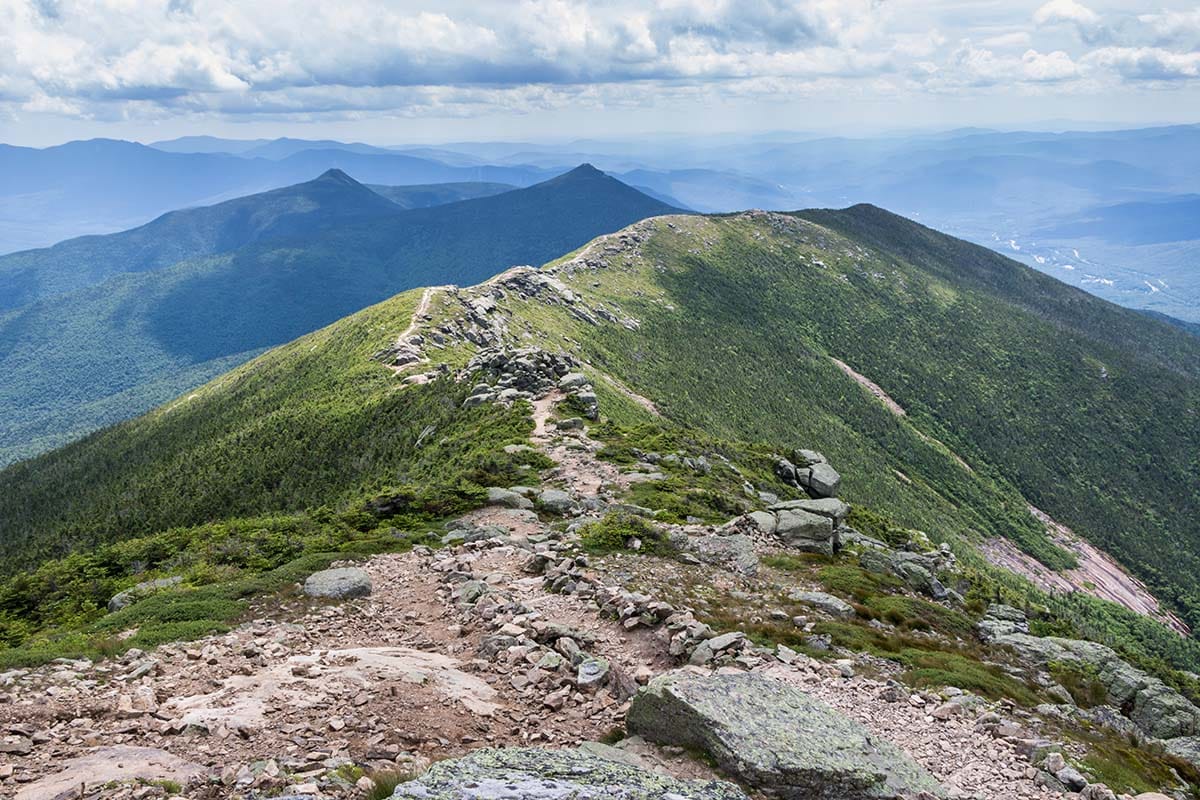
Why you should go: it traverses one of the most incredible ridgelines — Franconia Ridge.
- Location: White Mountain National Forest, New Hampshire
- Distance: 31 miles
- Elevation gain: 10,000 feet
- Recommended number of nights: 1 to 2
When most people think of epic backpacking routes, the White Mountains of New Hampshire likely don’t show up in your head. The Pemigewasset Loop (known affectionately by locals as the “Pemi Loop”), though, is one of the hardest hikes in the country with strenuous elevation gain and some of the worst weather in the country. It traverses the western half of the Pemigewasset Wilderness and climbs over eight 4Kers (mountains above 4,000’ above sea level and on the AMC’s 4000-footer list ).
You can add other peaks that are not on the AMC’s list to add a total of eleven mountain summits! Many people have done this as a brutal day trip, but it’s not recommended.
Pro Tip: stay in one of the AMC huts (either Greenleaf or Galehead ) where you won’t have to worry about trudging uphill with a tent in your bag. Plus, dinner and breakfast is included in the fee for the night.
Related Read: 8 Epic Camping Spots in White Mountain National Forest
2. Cracker Lake
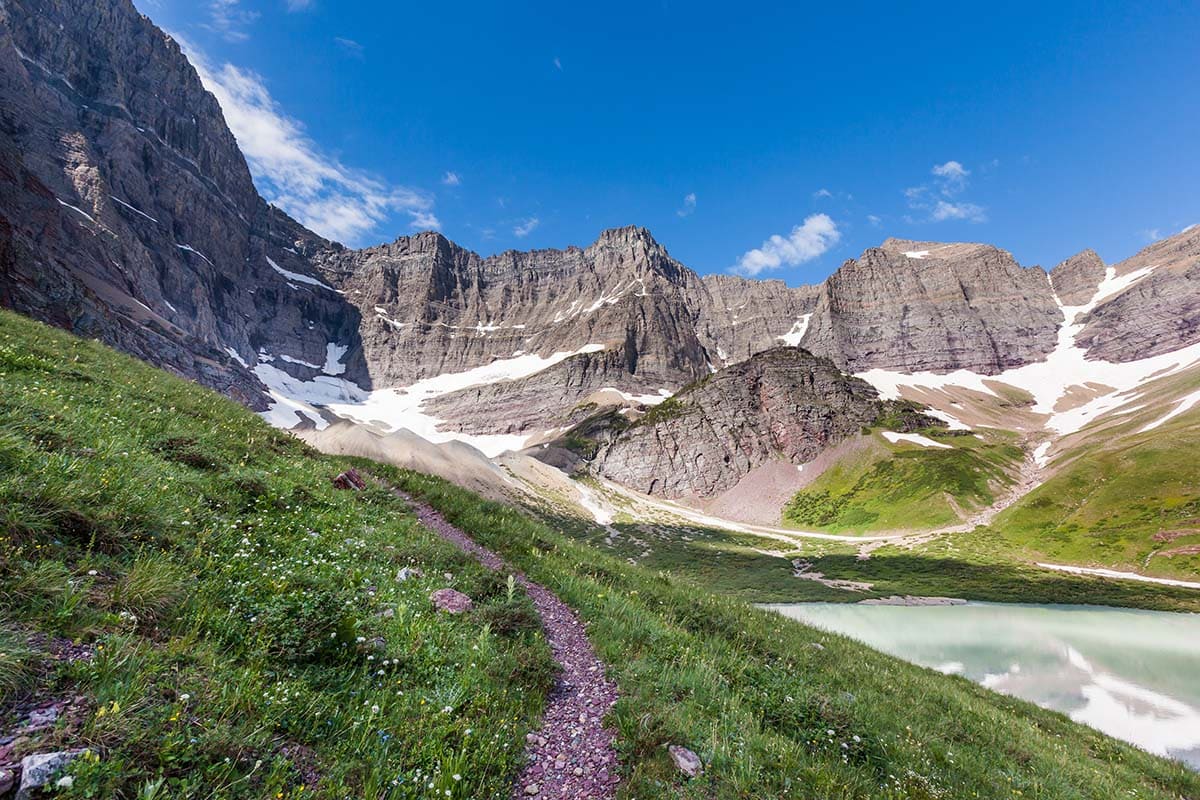
Why you should go: experience Glacier National Park without the crowds.
- Location: Glacier National Park, Montana
- Distance: 12 miles
- Elevation gain: 1,300 feet
- Type: out-and-back
- Recommended number of nights: 1
Backpack to the brilliant turquoise waters of Cracker Lake . You’ll camp at the base of Mount Siyeh whose towering cliffs rival those in Yosemite. The trail to this alpine lake is not as popular as other backpacking routes in the Glacier National Park but you shouldn’t miss out on this one.
Skip the Highline Trail and having to battle your way through the hordes of tourists that make the trek every year. Instead, enjoy a relatively moderate hike to a quieter part of the Park. Bonus: the lake has a pit toilet!
Pro tip: go during peak wildflower season. Just do it.
Related Read: Crown Jewels: 14 Majestic Hikes in Glacier National Park
3. 100-Mile Wilderness
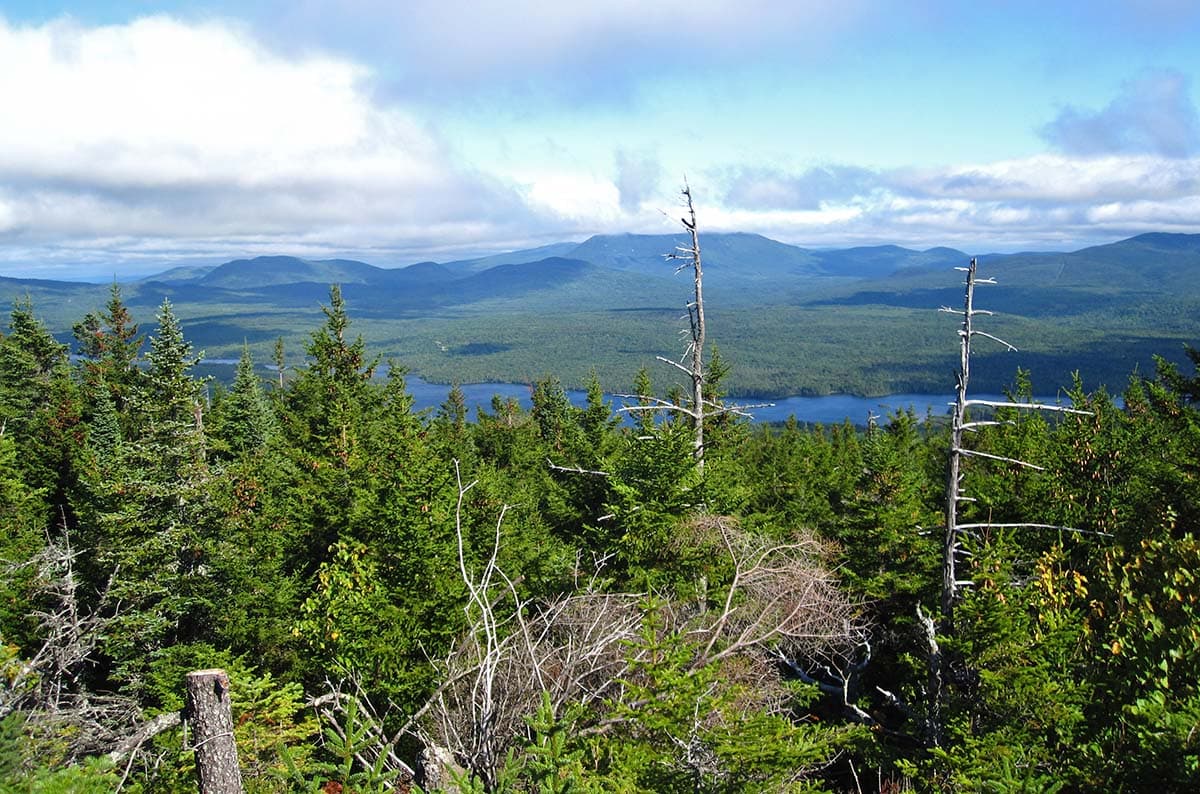
Why you should go: get all the glory of hiking the Appalachian Trail without having to walk the full 2,180 miles.
- Location: 100-Mile Wilderness, Maine
- Distance: 93 miles (weirdly not 100)
- Elevation gain: 15,000 feet
- Type: point-to-point
- Recommended number of nights: 7 to 10
The Appalachian Trail is hiked by hundreds of thru-hikers every year. Most argue that the hardest part is the last 100 miles before the summit of Mount Katahdin — known as the 100-Mile Wilderness. It is a true wilderness experience and one that should not be your first foray into backpacking.
The backcountry of Maine woods is unforgiving at best and deadly at worst so take heed when attempting this. But if you do decide to do this trek, it’ll bring you through some of the most spectacular and remote places in the entire country.
Pro tip: avoid hiking in early June as it happens to be black fly season and they are the literal worst.
Related Read: 14 Best Hikes in Maine for Exploring the Great Outdoors
4. Roan Highlands Section of the AT
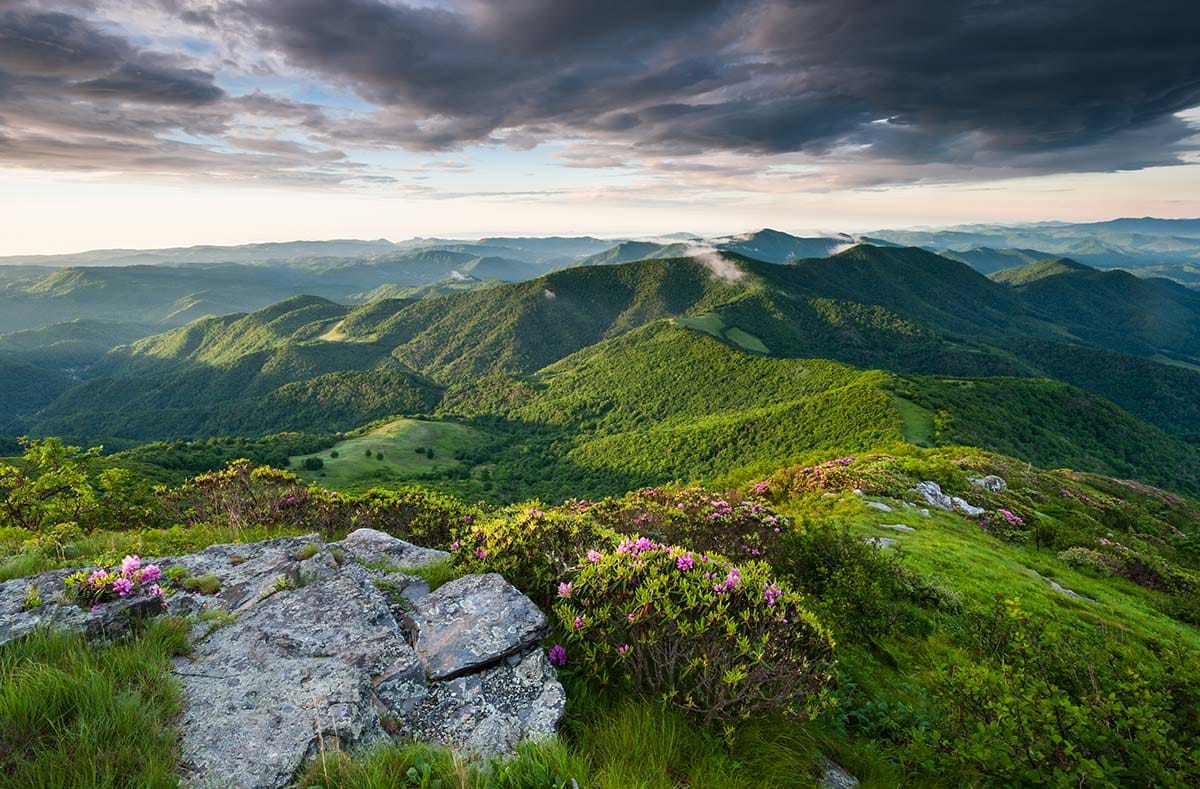
Why you should go: considered by most thru-hikers to be the prettiest part of the Appalachian Trail.
- Location: Pisgah National Forest, Tennessee/North Carolina
- Distance: 22 miles
- Elevation gain: 5,000 feet
If you’ve ever wanted to know what the undulating trails are like in the Scottish Highlands, look no further than the Roan Highlands (coincidence?) section of the Appalachian Trail.
The 22-mile trek traverses over grassy, bald summits and through the world’s largest rhododendron garden. The 360-degree views from the several summits will leave you breathless — although that might also be from the elevation gain.
Pro tip: if you go around the third week of June, the rhododendrons will be in full bloom and are spectacular.
Related Read: 10 Can’t-Miss Glamping Sites Near Great Smoky Mountains National Park
5. Greenstone Ridge Trail
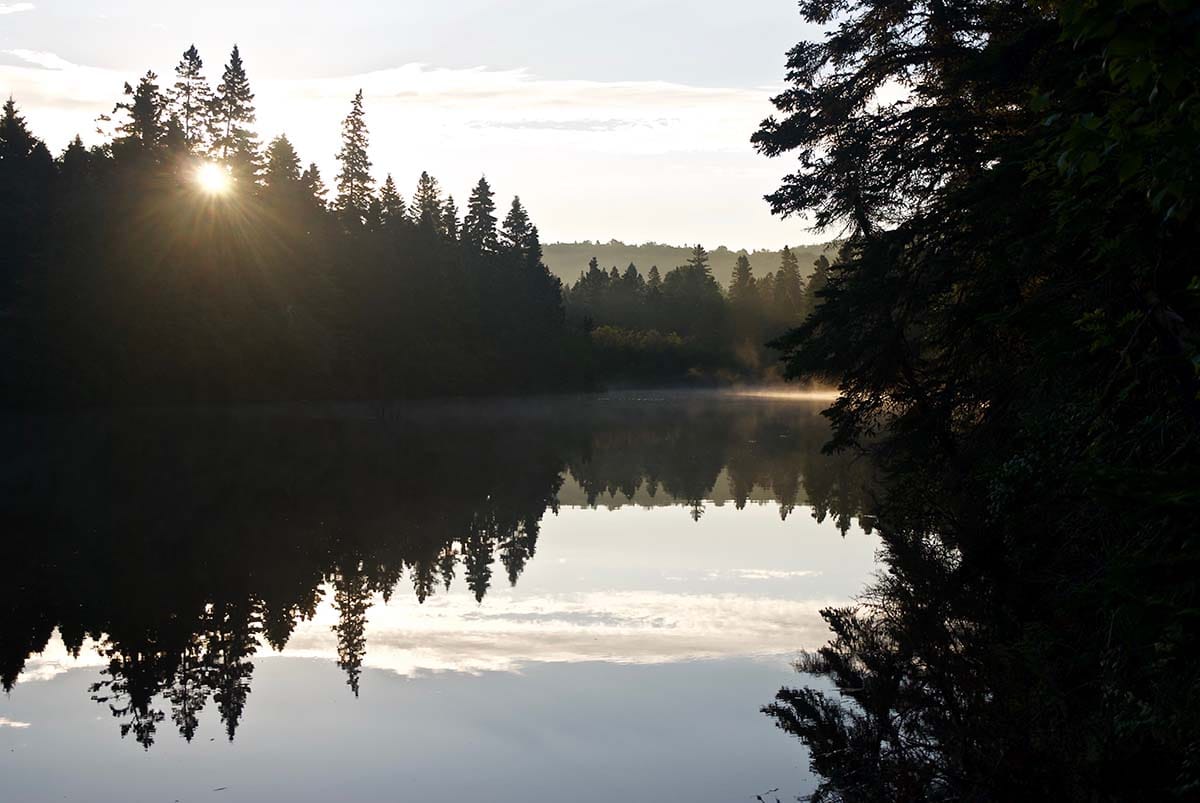
Why you should go: where else can you take a seaplane to your trailhead?
- Location: Isle Royale National Park, Michigan
- Distance: 42 miles
- Elevation gain: 4,000 feet
- Recommended number of nights: 5 to 8
The Greenstone Ridge Trail allows you a glimpse into the diverse landscape of the upper Midwest. From sweeping vistas, orchid-filled bogs, wildflowers galore, and more lakes than you can count, the ecosystems are endless.
Most begin their journey at the Windigo trailhead which is accessible by boat or seaplane. You end your hike at the Hidden Lake trailhead where you can hop on ferry or charter another seaplane for your return journey.
Pro tip: grab a satellite messenger since cell reception is spotty at best.
Related Read: Traveler’s Guide to the Best Michigan National Parks
6. Wonderland Trail
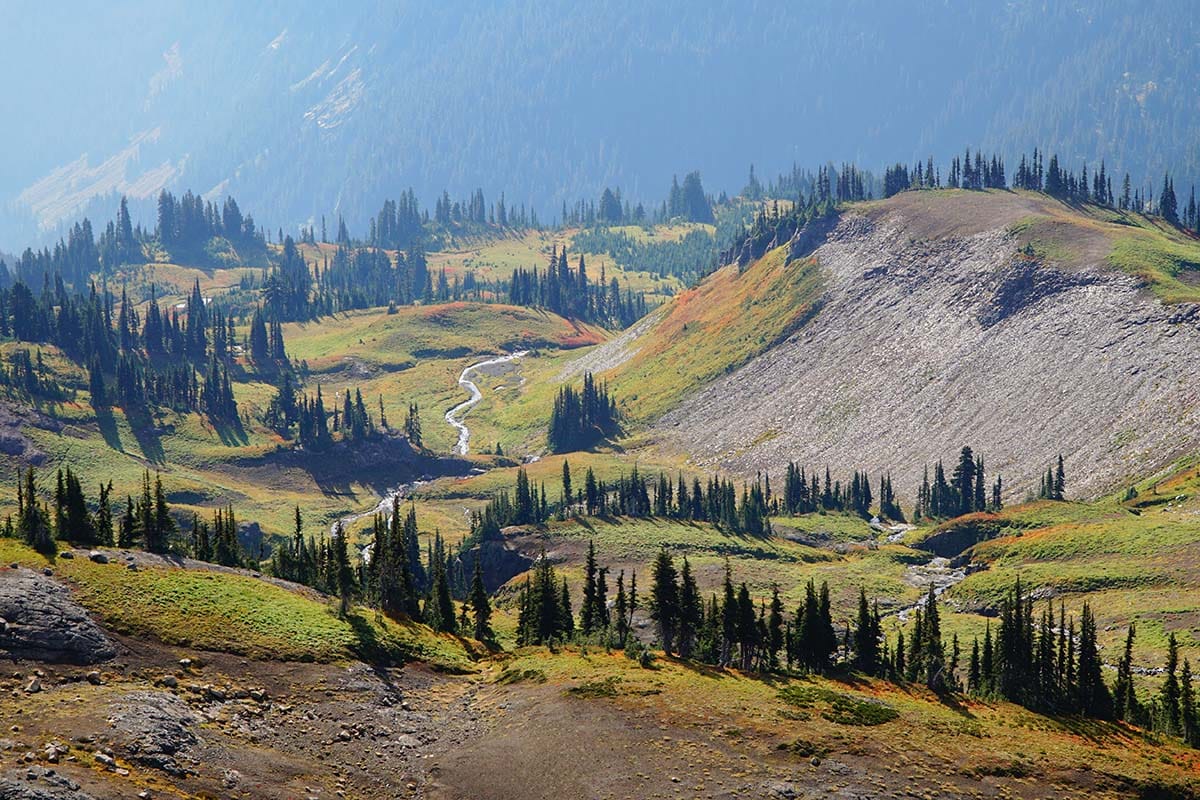
Why you should go: never-ending views of Mount Rainier.
- Location: Mount Rainier National Park, Washington
- Distance: 93 miles
- Elevation gain: 25,000 feet (it’s a doozy)
- Recommended number of nights: 8 to 12
One of the most exclusive backpacking trails in the country also loops around one of the most famous volcanoes. The Wonderland Trail is a strenuous backpacking excursion that travels through a diverse array of ecosystems.
If you’re lucky enough to snag a wilderness permit to attempt the hike, you’ll be rewarded with incredible views at almost every turn. You won’t need mountaineering experience (that’s left for those wanting to summit Mount Rainier) but you should be a practice backpacker before attempting this trip.
Pro tip: have flexibility with your dates since permits for the trail are highly coveted.
Related Read: 14 Jaw Dropping Hikes in Mount Rainier National Park
7. Olympic Coast Trail – North Route
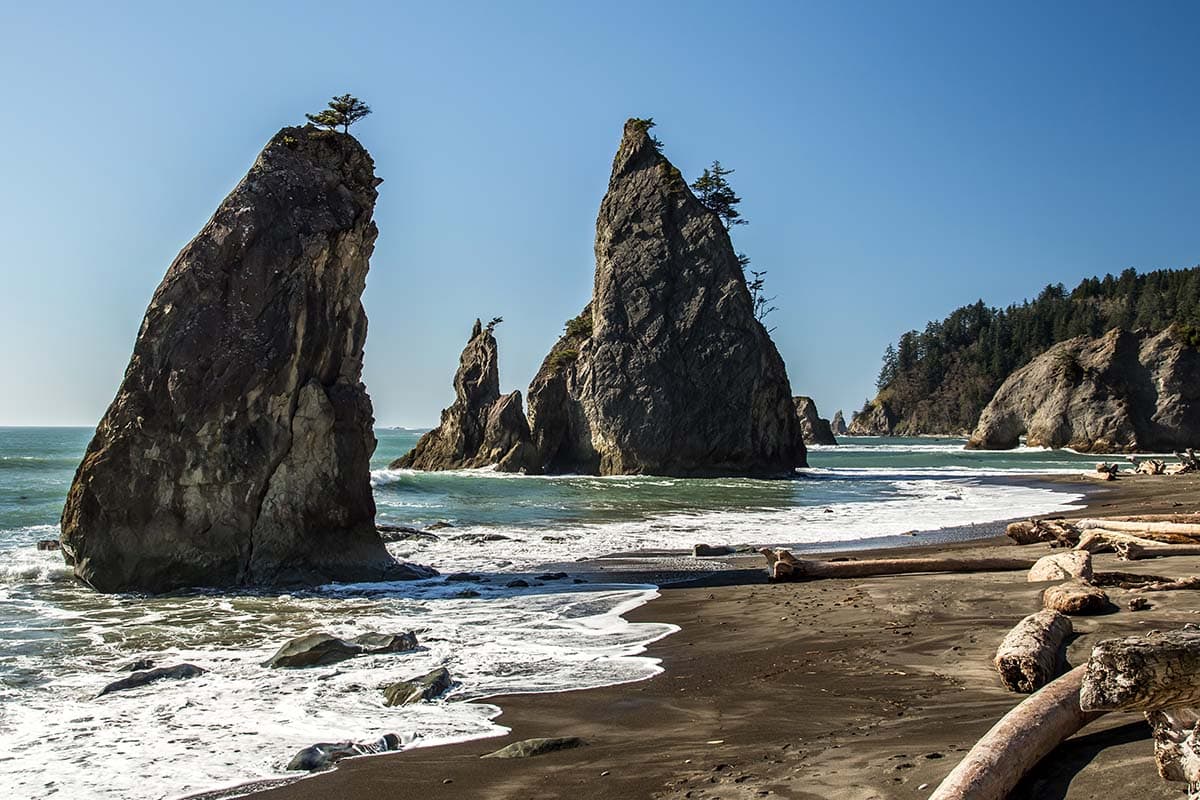
Why you should go: moody beaches but happy campers.
- Location: Olympic National Park, Washington
- Distance: 20 miles
- Elevation gain: 3,000 feet
The hike from Rialto Beach north to the Ozette trailhead is more than just a walk on the beach. It’s home to some of the most rugged coastline and unforgiving weather. Don’t let that deter you from a backpacking trip. You can combine the South Route with this hike, but the North Route has the better views and landscape.
Although you’re mostly walking on the beach, there are many headlands that can only be rounded at low tide. Sometimes there are ropes to aid during non-low tide times but not always.
Pro tip: always have a tide chart on this trip to plan out when you need to take the overland/headland trails.
Related Read: 13 Outdoorsy Things to Do on the Washington Coast
8. Four Pass Loop
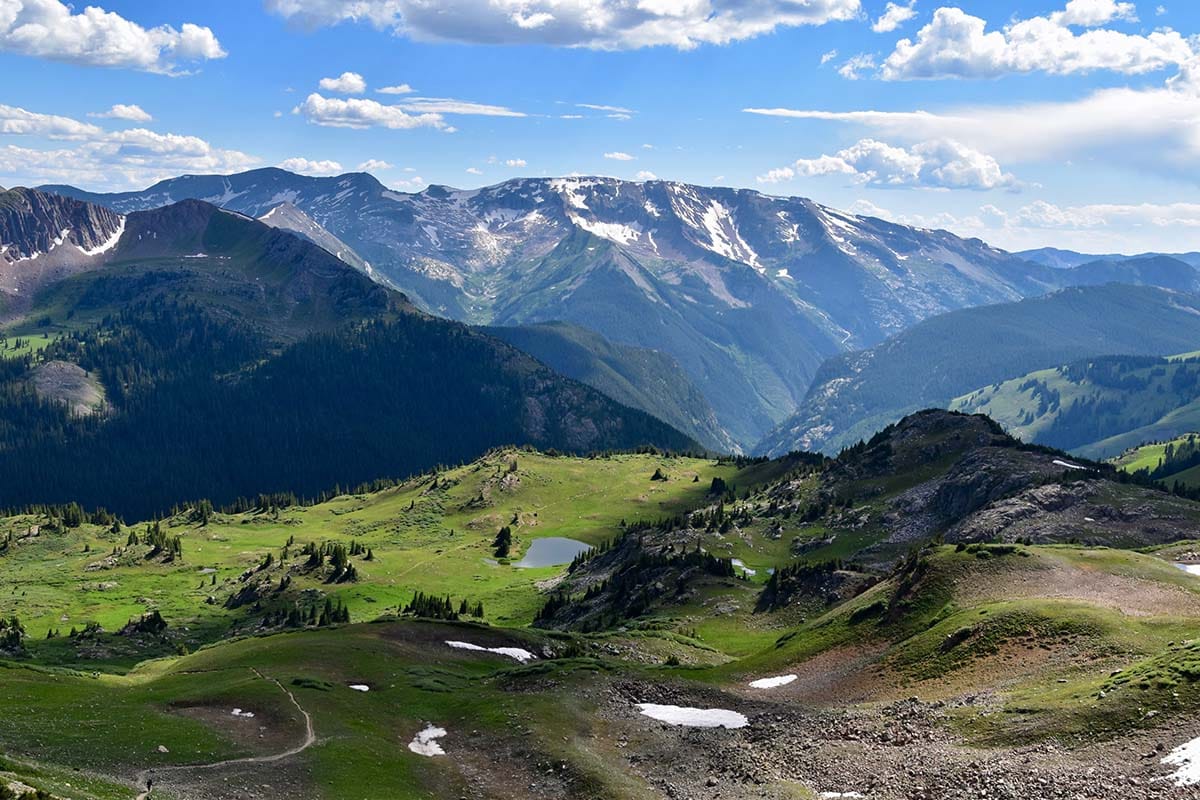
Why you should go: see a side of the Maroon Bells the tourists don’t usually experience.
- Location: Maroon Bells – Snowmass Wilderness, Colorado
- Distance: 27 miles
- Elevation gain: 7,800 feet
- Recommended number of nights: 2 to 3
Coined as the most popular backpacking trip in Colorado, the Four Pass Loop traverses (you guessed it!) four passes all above 12,000’ above sea level.
If you’re coming from sea level, you might need to give yourself a few extra days ahead of time to acclimate. Once you’re satisfied with your lung capacity, enjoy the majestic maroon peaks and incredible alpine scenery on the trek!
Pro tip: do the loop in a clockwise direction as the trail up West Maroon Valley is easier to climb with a full pack.
Related Read: 5 Spectacular Backpacking Destinations in Colorado
9. Buckskin Gulch
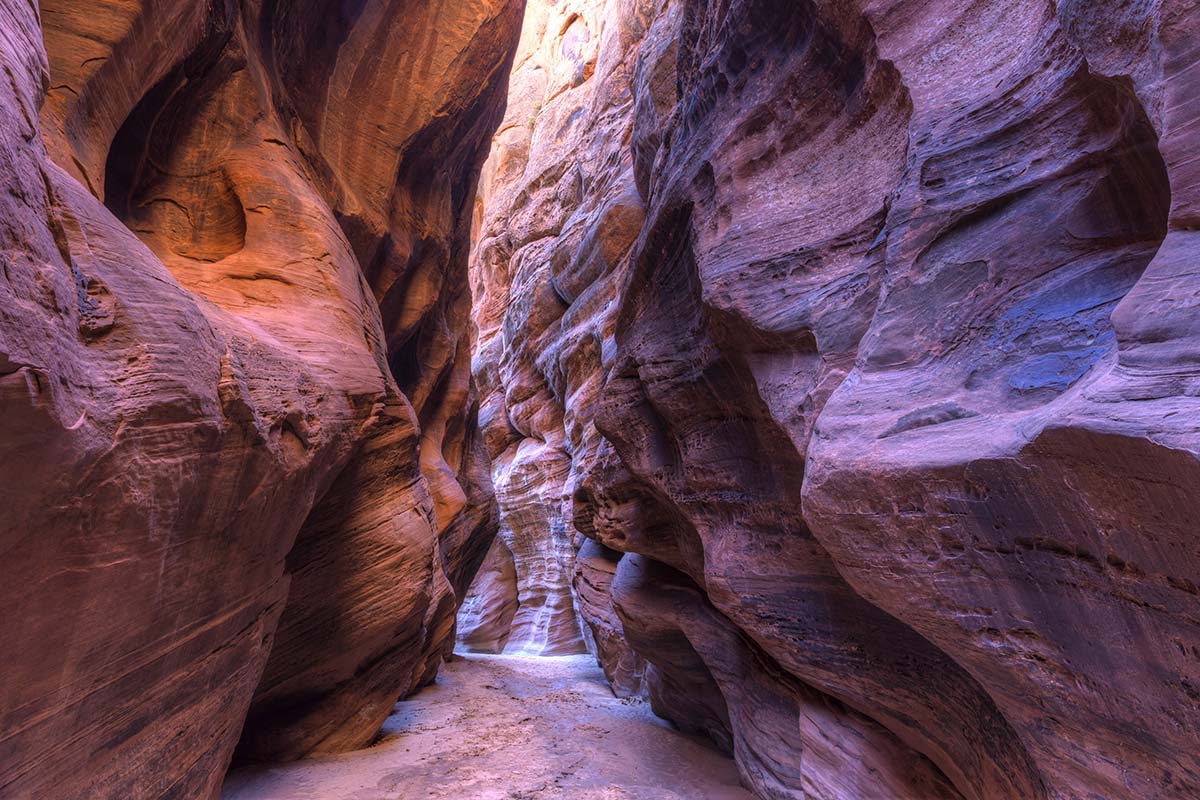
Why you should go: probably the most iconic slot canyon ever.
- Location: Paria Canyon – Vermillion Cliffs Wilderness, Utah
- Distance: 21 miles
- Elevation gain: 3,400 feet
It doesn’t get much better than Buckskin Gulch if you’re in the mood for some spectacular slot canyon hiking. The permits to get into Buckskin are highly competitive, but that also means you’ll have solitude for your trip. For those lucky enough to grab one, you’ll be hiking in one of the longest (if not the longest) continuous slot canyon in the entire world.
Flash floods are a real concern here, as with any slot canyon hiking. Make sure to always check the weather for the surrounding areas. If there is even the slightest chance of rain, do not attempt this hike. Avoid hiking during the summer months as monsoon season occurs during this time and the slots can be dangerously hot.
If you can’t snag one of the permits, you can always head to Grand Staircase-Escalante National Monument and try one of these hikes .
Pro tip: there is only one escape route once you reach Buckskin Gulch and is aptly-named the Middle-Out Escape Route.
Related Read: The 20 Best Backpacking Trips In Utah
10. Cirque of the Towers
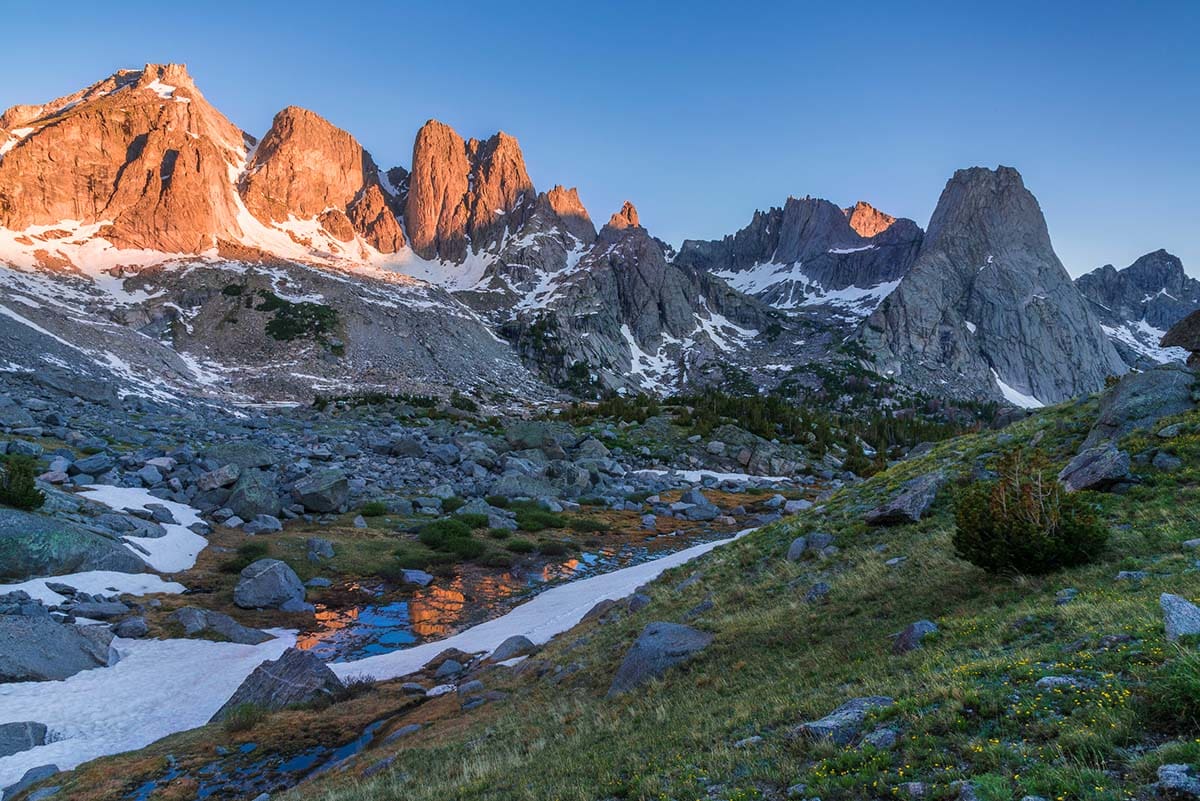
Why you should go: easily accessible and no permits are required.
- Location: Wind River Mountain Range, Wyoming
- Distance: 24 miles
You won’t find much solitude on the Fremont Trail to Cirque of the Towers . Due to its accessible trailhead and absolute stunning scenery, it’s a popular trail. However, Wyoming has got some big sky so even if you have company on the trail, you’ll be spread out. Most go in a clockwise direction as that will leave the best views for last.
You’ll pass through alpine meadows, around the edge of nine lakes on the path ,and over two mountain passes (one of which is named Jackass Pass). The first views of the Cirque begin when you hit Texas Pass and they just get better from there.
Pro tip: go as late in the summer as possible to avoid the atrocious amounts of mosquitos on the trail. Or bring a bug net otherwise.
Related Read: 8 Gorgeous Backpacking Trails In The Wind River Range
11. Sawtooth Wilderness Loop
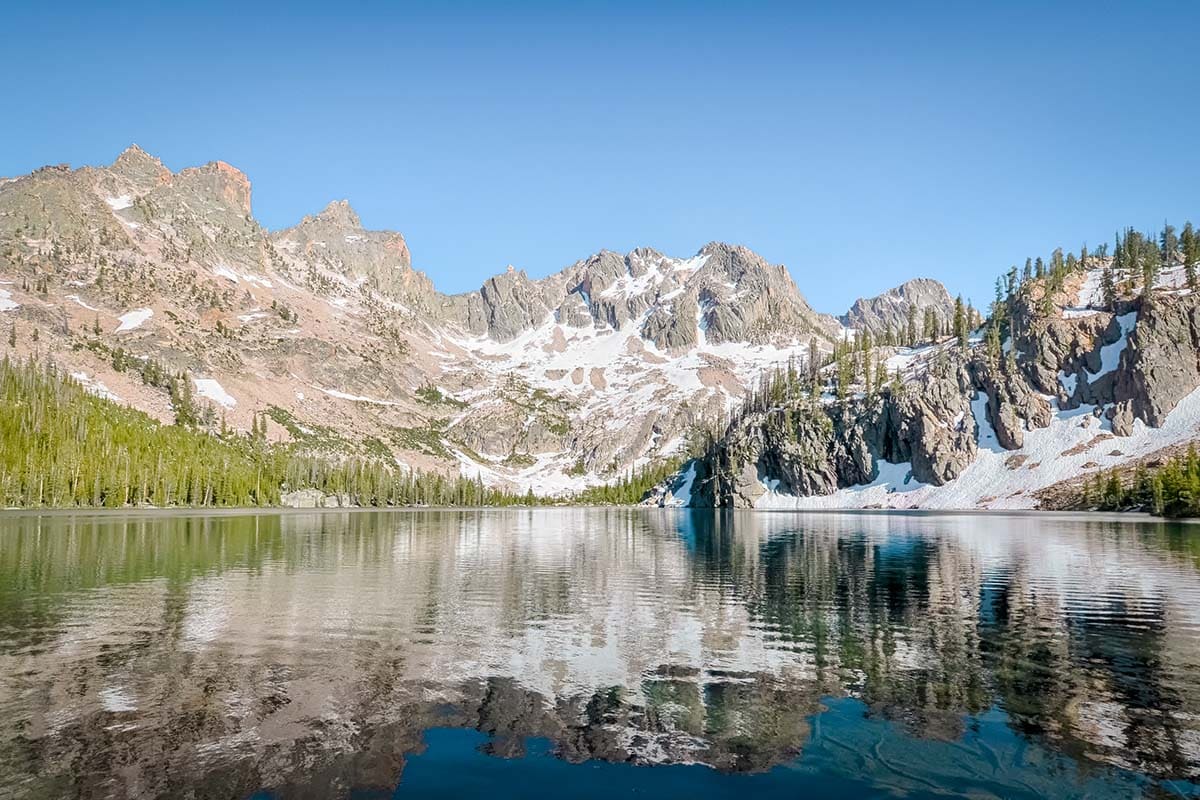
Why you should go: it’s as remote as you get in Idaho so way less people.
- Location: Sawtooth Wilderness Area, Idaho
- Distance: 70 miles
- Elevation gain: 12,500 feet
- Recommended number of nights: 4 to 6
Basically jumping from lake to lake, the Sawtooth Wilderness Loop brings you on an epic journey through one of the most underestimated states. Idaho is usually passed over for the more epic Rocky Mountains or the Pacific Northwest. But you’d be wrong to turn a blind eye to this incredible wilderness area.
The trail navigates through dense forest, alpine lakes, and even some burn areas. Downed logs are fairly common across the trail since trail crews don’t get back into this remote area as much as more popular areas. Nothing is too hard to overcome, though. Just come with some sturdy pants and a good attitude and you’ll be all set.
Pro tip: it’s imperative to bring a bear-resistant canister (or hang your food) and bear spray as this is prime grizzly bear habitat.
More Backpacking Inspiration
10 Best Backpacking Trips in Grand Canyon National Park
12 Epic Hiking Camps & Summer Backpacking Trips
Sunshine & Solitude: Best Backpacking Routes in Big Bend
10 Killer Backpacking Trails in Yosemite National Park
5 Incredible Backpacking Excursions in Zion National Park
Get epic travel ideas delivered to your inbox with Weekend Wanderer, our newsletter inspiring more than 10,000 readers every week.
Seen in: Backpacking , Destinations
Posted by Sarah Lamagna
Sarah is an ecologist-turned-freelance writer specializing in the ecotourism and slow/sustainable travel industry. Her bylines include The Denver Post, 5280 magazine, VeryWellFamily, Matador Network, and was an expert on NPR’s The Takeaway for her work on the wildfires in Colorado.
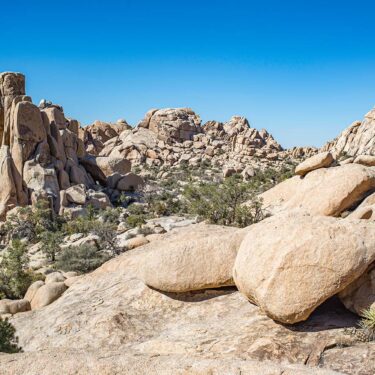
6 Phenomenal Backpacking Trails in Joshua Tree National Park
Find your next adventure.
Sign up for Weekend Wanderer and join thousands of readers getting epic travel ideas weekly.
Related Posts
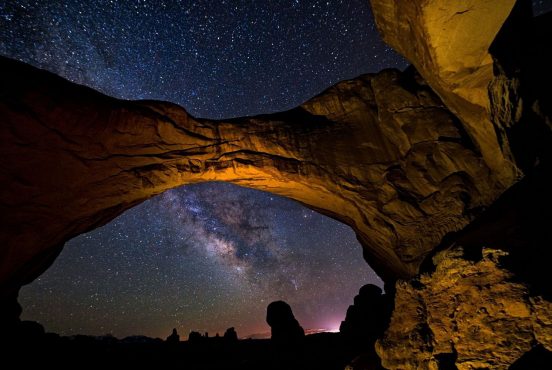
The Best Time to Visit Arches National Park, Utah
Despite being in one of the most touristy towns in Utah, Arches National Park is a true natural marvel no matter what time of year you visit.
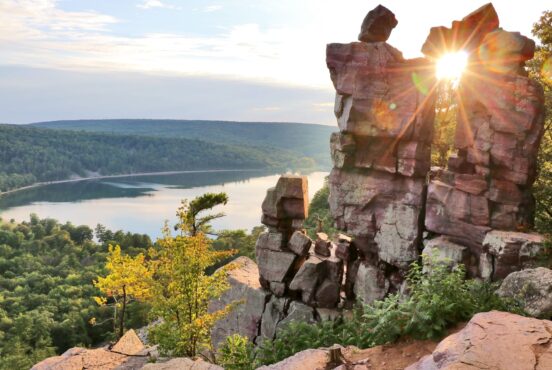
10 Best Hiking Trails at Devil’s Lake State Park, Wisconsin
For a taste of Wisconsin's most beautiful natural landscapes and best hiking trails, Devil’s Lake State Park is a must.
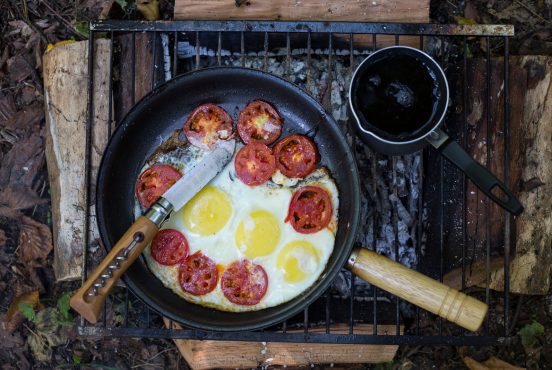
40+ Camping Food Ideas That Don’t Need Refrigeration
Check out our list of 40+ camping and backpacking food ideas that don't require refrigeration, perfect for backcountry meals and snacks.
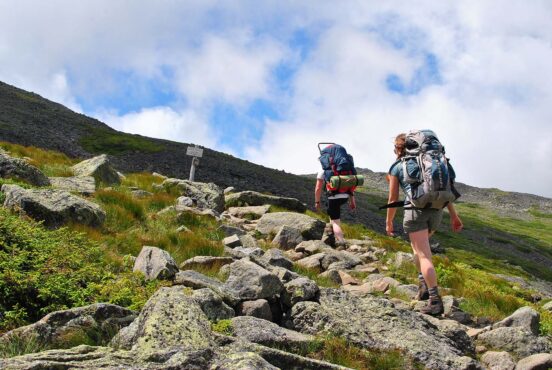
6 Backpacking Trips in the White Mountains That are Unforgettable
Mountains, forests, and some of the best fall foliage in the world, these hikes through New Hampshire's White Mountains are some of the best in the country.
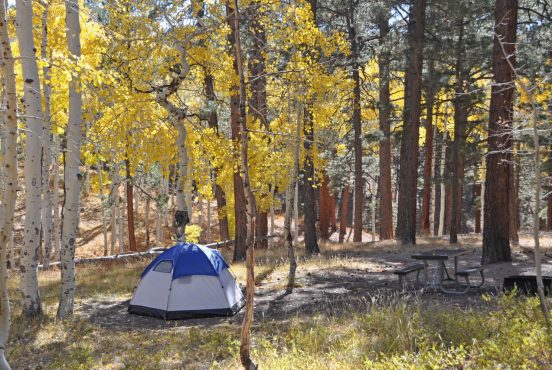
16 Best Places to Camp in Arizona
Camping in Arizona is a year-round affair: summer and fall are perfect times to hit high-country lakes and creeks, and winter camping in the desert can't be beat.
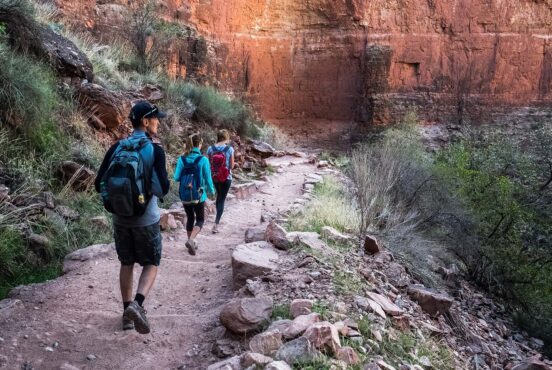
8 Best Grand Canyon Hiking Tour Companies
Here’s a list of the top outfitters who offer hiking tours at Grand Canyon, along with a brief overview of the day hikes and multi-day tours that they offer.
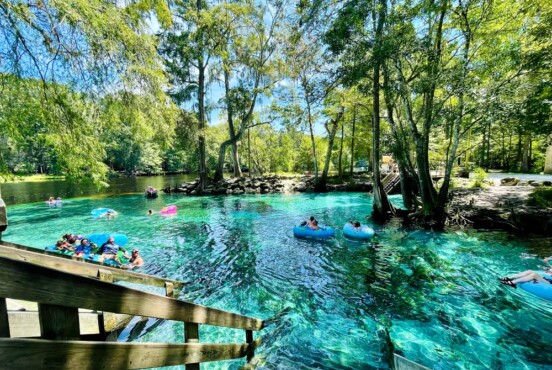
Best Swimming Holes in Florida
These are the best swimming holes in Florida, from tidepools to hidden coves, like Juniper Springs, Ginni Springs, Bucaneer Bay, and more.
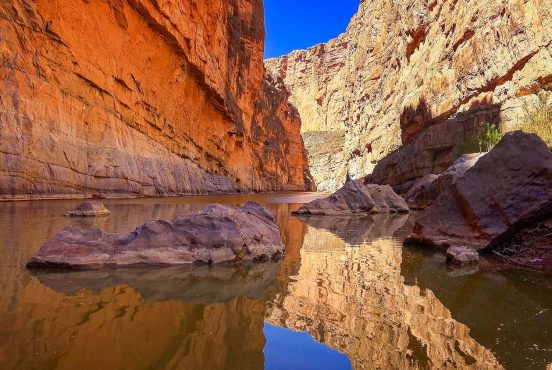
The 11 Best Texas National Parks & National Monuments
Vast deserts and big mountains are defining characteristics of the national parks in Texas.
14 Incredible Backpacking Trips in 14 U.S. National Parks
Plan a cross-country tour of the backcountry.
By: The Outbound Collective + Save to a List
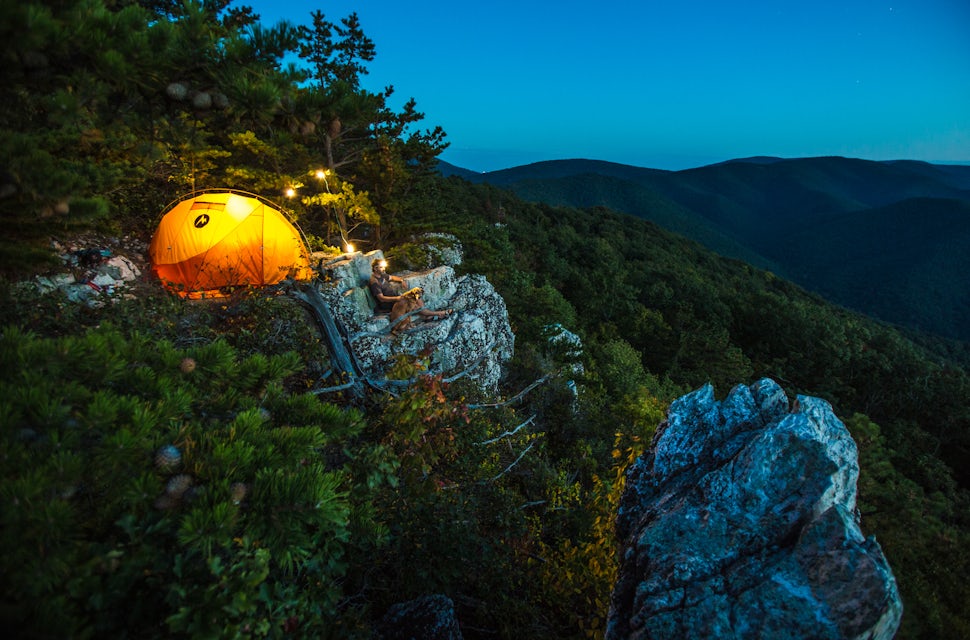
The national parks are a treasure for all of us to enjoy. While you can gain a strong appreciation for the parks by driving the main roads and stopping at the most popular attractions, we think the best way to connect with these specials lands is to spend a night or two in the backcountry.
Not only will you find more solitude and peace, you'll also cover more ground and get a better sense for the park's untouched landscape. You could plan an epic road trip to all 14 of these parks or start knocking them off one-by-one, but whatever you do, make sure these backpacking trips are on your adventure bucket list.
1. Backpack Bryce Canyon’s Under the Rim Trail
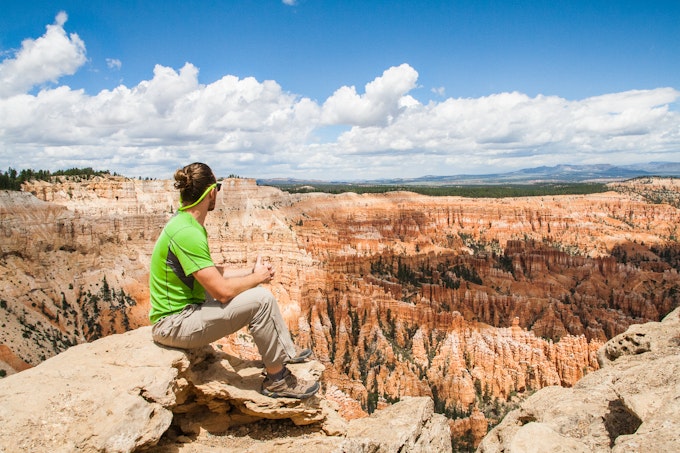
Distance: 23.79 miles Elevation: 5794 feet Type: Out-and-back
Want to see Bryce without the crowds? This is the hike for you! Get a permit at the visitor center and don't forget a bear barrel to keep your food safe. Parking here is limited, so consider getting dropped off and picked up to avoid issues stashing your car. Look for The Hat Shop, an area with hoodoos - a collection of unique towering rocks. You may not see other people on the trail, so expect isolation. Be careful as you navigate the trail as it does require attention as you get to the more primitive area past Yellow Creek campground. Enjoy shady areas as this trail can get hot!
2. Backpack Rocky Mount Trail in Shenandoah National Park
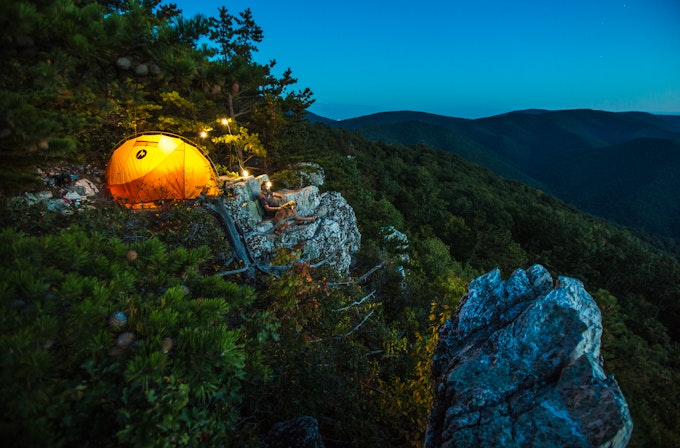
Distance: 9.58 miles Elevation: 2200 feet Type: Loop
Bring your furry pal on this nearly 10-mile loop with incredible views of surrounding Shenandoah National Park. Park and fill out a permit at Two Mile Overlook a little way down Skyline Drive from the trailhead. The hike starts in a wooded area and then follows a ridgeline before a stretch upward toward Rocky Mount - a peak overlooking the Blue Ridge and Shenandoah River. Expect to rock hop streams near Gap Run during your descent. If you stay overnight, consider camping near the flat areas around Gap Run.
3. Backpack Paintbrush and Cascade Canyons, Grand Teton National Park
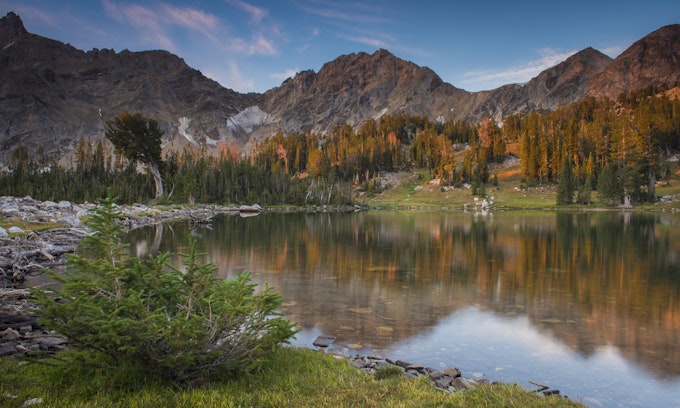
Distance: 18.77 miles Elevation: 4088 feet Type: Loop
Pack a fishing pole for this popular and challenging overnight trail in the Tetons. Park at the String Lake parking lot to reach the trailhead. Get permits ahead of time as this area is well-traveled - especially during the summer months. You'll reach Holly Lake around 6 miles in, and there are three sought-after campsites around the shores. Stash your food in the bear resistant storage containers available on-site. If you backcountry camp, bring bear barrels and hang your food. The higher elevations here often have snow year-round, so be sure you have adequate footwear and consider an ice axe early or late in the season. Dogs are not allowed on this trail.
4. Hike the Little River Trail to Backcountry Campsite #30, Great Smoky Mountains National Park
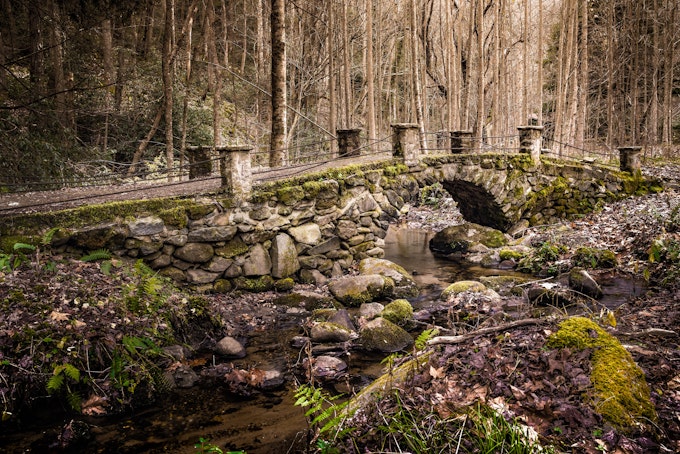
Distance: 12.34 miles Elevation: 412 feet Type: Out-and-back
This 12+ mile trail is located in Great Smoky Mountains National Park and follows a reclaimed railway bed along the Little River. Along the way, you'll pass some abandoned buildings that were once vacation homes. They are dilapidated, so don't explore. Keep en eye out for Troll Bridge near the beginning of the trail. You'll also pass Husky Branch Falls and intersect the Cumberland Gap trail. There are several campsites (including a group one) with spots for tents and hammocks.
5. Backpack Sunrise Lakes to Clouds Rest in Yosemite National Park
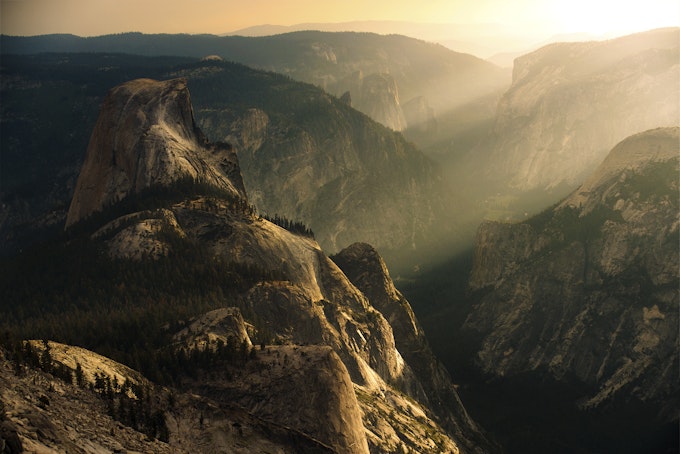
Distance: 18.93 Miles Elevation: 1775 Feet Type: Loop
Head to the Tenaya Lake Trailhead to hike 2.5 miles to Clouds Rest, or take the turn to Sunrise Lakes. Pack in a lot of water here as you'll need it! The trail is challenging, and can take hikers more than 12 hours to complete. It is a popular day hike, so consider camping to enjoy some quiet hours when day traffic is done.
6. Backpack to Cracker Lake in Glacier National Park
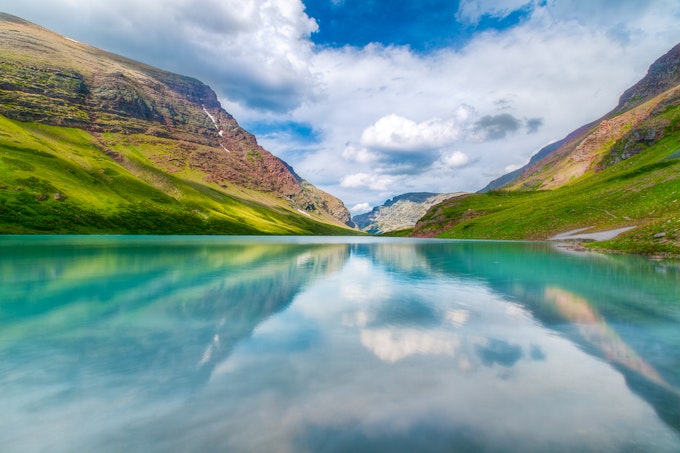
Distance: 12.72 Miles Elevation: 14,000 Feet Type: Out-and-back
Cracker Lake is less popular than nearby Iceberg Lake, offering the opportunity for solitude and relaxing on the beach. The turquoise water is accessible after hiking 6.1 miles through forest, past waterfalls and an abandoned mine, and even crossing several creeks. Some people hike here in back in a day, while others stay at several tent sites around the lake.
7. Backpack the High Divide and Seven Lakes Basin in Olympic National Park

Distance: 19.93 Miles Elevation: 5,056 Feet Type: Loop
This nearly 20-mile hike has unreal views of Mount Olympus and the Bailey Range near Port Angeles, Washington. Start at the Sol Du Lac trailhead and walk to Sol Du Lac Falls. You'll cross several footbridges over the river while climbing upward toward Deer Lake. There are campsites around the water, and people fly fish here so bring a rod and fishing license! Watch for bears - there are tons of huckleberry bushes.
To continue on, follow the path past the lake and over the marsh. You'll walk through subalpine meadows (full of wildflowers in the summer!) and up a steep ridge past gnarled hemlock trees. Many people stop to camp or turnaround at Lunch Lake Campground around (mile 9), or spend the night a little further at Heart Lake Campground (mile 11). After your night in a tent, stop at Sol Duc Hot Springs on your way out to soothe sore muscles from your hike.
8. Backpack to Lake Verna in Rocky Mountain National Park
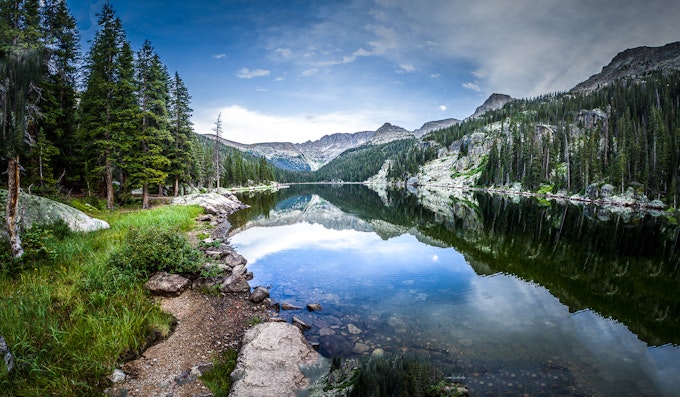
Distance: 13.5 Miles Elevation: 2500 Feet Type: Out-and-back
This trip is on the west aka "quiet side" of Rocky Mountain National Park. It starts near Grand Lake and has 8 campsites available from the trailhead, the closes at Lower East Inlet (2.35 miles in) and furthers Lake Verna (7 miles in). You'll hike through forest full of pine trees and wetlands and along alpine lakes. Many people basecamp at Lake Verna and then hike from their tent to photograph the stunning area or fish. Get a fishing license ahead of time. The trail is well-established and features clear directional and campsite signage. Fires are not allowed here during any season, so bring a camping stove if you plan to cook meals or beverages.
9. Backpack the Chisos Mountains in Big Bend National Park

Distance: 15.3 Miles Elevation: 3737 Feet Type: Loop
This 15-mile trail follows the Chisos Mountains along the Mexican border in Big Bend National Park. This remote corner of the Chihuahuan Desert offers stunning views if you're willing to hike narrow canyons and exposed cliffs. Backpackers can camp at the South Rim at backcountry sites where they may feel relief from the intense heat. Start at the trailhead next to Chisos Mountai nLodge and follow the Laguna Meadows Trail. You'll switchback Emory Peak (Texas' highest mountain at 7,200 feet) before camping near the South Rim. The next day, walk around the rim and take in cliff views before hiking Boot Canyon Trail and checking out Boot Pinnacle - a rock that resembles an upturned cowboy boot! You'll finish up your hike back at the lodge trailhead. As you exit the park, consider stopping in Terlingua , a ghost mining town inside the park.
10. Backpack Redwood National and State Parks
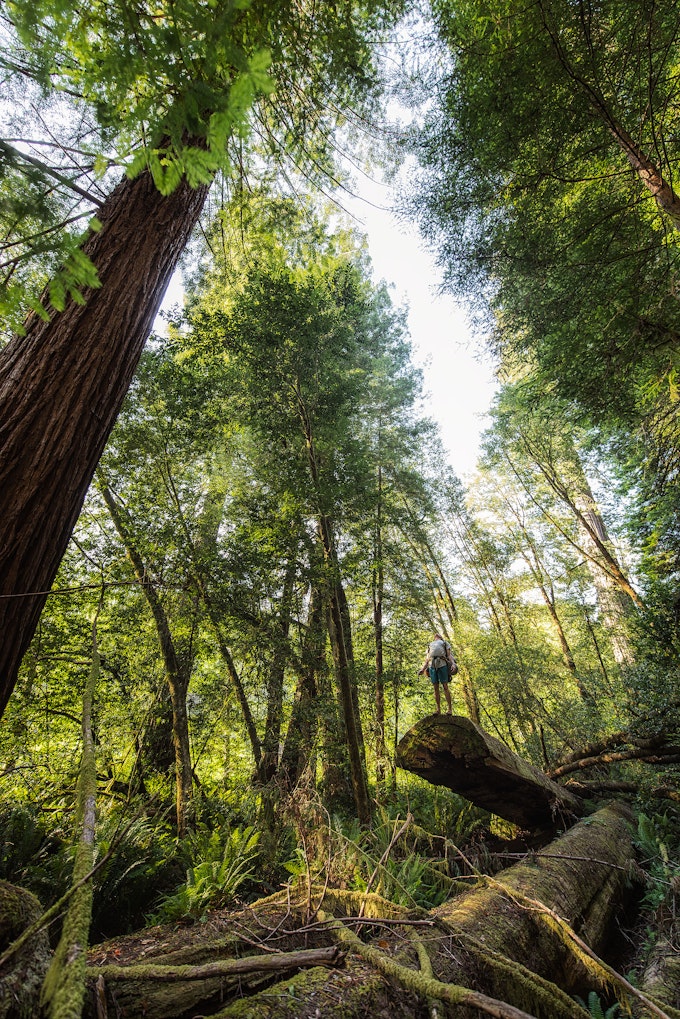
Distance: 4.41 Miles Elevation: 1043 Feet Type: Loop
Strap on your pack and meander among stunning redwoods on this California trek! Start by visiting the rangers station to learn about beach campsites for your first relaxing night. Tall Trees Grove has many options for dispersed camping, but there is no drinking water, so be sure to pack plenty in.
On your second day, head to Kuchel Visitor Center in Tall Trees Grove to get a permit and gate access code. Use the code on the dirt road to Tall Trees Trailhead, around 45 minutes away. Expect trailhead bathrooms but not enough space for trailers or RVs. While the hike here is just a .5 loop, many people take hours to complete it as they wonder at the Redwoods. Camp on Redwood Creek gravel bars and enjoy the unmatched stars thanks to minimal light pollution.
On day three, don water shoes or hiking boots and wade 1.7 miles in Redwood Creek. Spend a night near the Emerald Ridge Trailhead, potentially hiking downriver to camp before hiking back up river and floating in an inner tube down to your site. This lazy river is a blast for all ages and a unique way to see the Redwoods. On day 4, hike .9 miles on the Emerald Ridge Trail back to your vehicle in the parking lot. Don't have four days? Pick a shorter section of the above itinerary and you'll still have plenty of time to take in the one-of-a-kind trees.
11. Backpack Isle Royale National Park’s Greenstone Ridge Trail
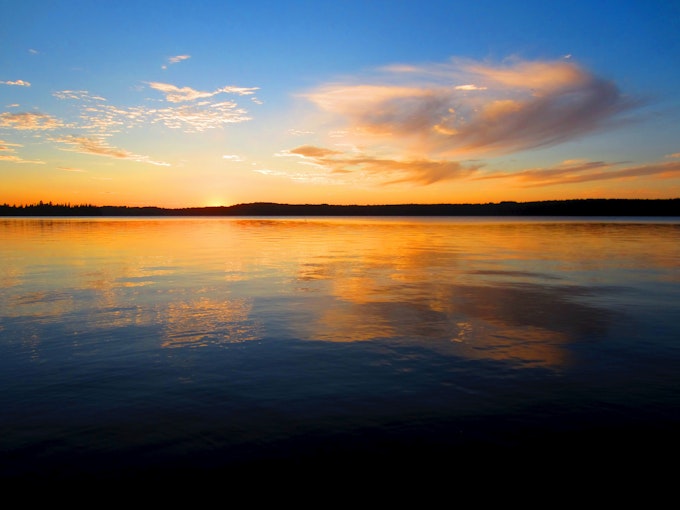
Distance: 41.12 Miles Elevation: 3235 Feet Type: Point-to-Point
Isle Royale National Park is one of the least visited of public lands, making the perfect place for some peace and quiet. This unique park is located in Lake Superior and is home to many moose and wolves. To get there, book a ferry ride across Lake Superior to Isle Royale in advance. The ferry runs several times a week from Grand Portage Minnesota and Copper Harbor Michigan to several places on the island. The vessel does not move cars - just people!
Once on the island, you'll have to choose from two routes. The first, Minong Ridge runs along the north coast and is about 30 miles one-way. It ends at Minong Mine, a ferry stop. Greenstone Ridge Trail follows the center of the island, which some people prefer as there is more diverse landscape from orchid-filled bogs to interior lakes and the treeless Greenstone Ridge. For a 3-4 day hike, take this route and catch the ferry at Daisy Farm at mile 35. For a full hike, walk 45 miles from Windigo to Rock Harbor, another ferry point.
12. Backpack the Grand Canyon Rim-to-Rim-to-Rim
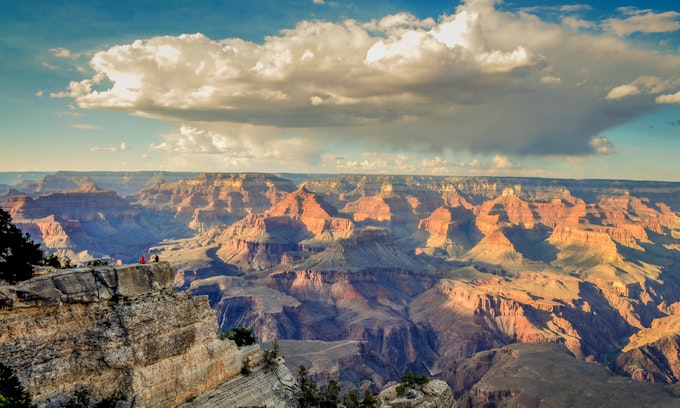
Distance: 45.6 Miles Elevation: 10141 Feet Type: Out-and-back
Sure, you could drive to a Grand Canyon lookout point and take in the views. But, backpacking the rim to rim is one of the best ways to get up close and personal with this Natural Wonder of the world. Start your journey at North Kaibab Trail at the North Rim. Expect drinking water pump stations and bathrooms at multiple points along your hike. Ask rangers which will be open as some are seasonably available.
Bring trekking poles - you'll need them as you ascend 14 miles and around 5,700 feet to camp at Bright Angel Campground on night one. Be sure to stop at Ribbon Falls around mile 7. Book a campground permit well in advance as this is a popular place to rest. Consider reserving a meal for pick up at Phantom Ranch Restaurant to reduce the amount of food you have to pack in.
Day two requires hiking 19 miles with nearly 5,000 feet of elevation up and down. Leave Bright Angel Campground before sunrise to enjoy stunning sunlight and changing sky colors as you hike toward the South Rim. This early start also helps hikers avoid the intense midday heat. You'll walk to the South Rim, checking out awesome vistas along the way. Stop to eat and rest before returning the way you came and heading back to Bright Angel Campground.
On day three, hike the 14 miles and around 5,700 feet back up to the North Rim on North Kaibab Trail. If you'd like a more leisurely pace, consider extending your trip by another day so you can rest at the campground. Reserve backcountry permits before your trip.
13. Backpack the Great Sand Dunes
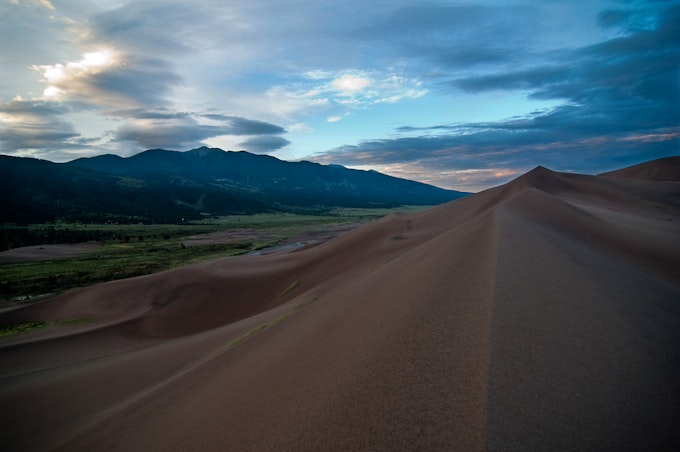
Distance: What you make of it! Elevation: What you make of it! Type: What you make of it!
Great Sand Dunes National Park covers over 30 square miles with more than 5 billion cubic meters of sand. The tallest dunes in North America rise 750 feet high in this Southern Colorado park, offering amazing views of the Sangre de Cristo Mountains. You can wander the dunes here following whatever "path" you'd like. There are specific day-use areas that do not allow camping, so be sure to stay the night at one of the seven designated sites along Sand Ramp Trail. There are also 20-non-designated sites in the Dunes Backcountry, at least 1.5 miles west of the Mendano Creek bed beyond the day-use area and west of the high ridge.
Reserve a non-refundable $6 permit here online ahead of time. On-site permits are no longer available.
14. Backpack the Joint Trail in Canyonlands National Park's Needles District
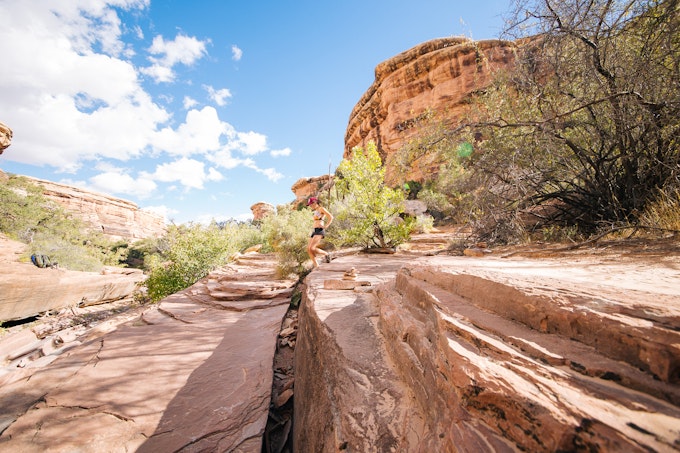
Distance: 19.06 Miles Elevation: 3028 Feet Type: Loop
Two hours southwest of Moab, you'll find the Needles Visitor Center . Stop here to pick up backcountry permits and chat with the rangers about upcoming weather and trail conditions. Make sure to ask about drinking water sources as there may not be any once you head on the trail.
When you're ready, park at The Needles Campground and follow one of multiple trails between Salt Creek Canyon and The Grabens. Check out Chesler Park for grasslands, Big Spring for a wider canyon, and Wooden Shoe Canyon or Elephant Canyon if you're looking for a narrow canyon experience.
Add Joint Trail to your must-visit list. This deep slot canyon trail in Chesler Park has far fewer visitors than the popular Antelope Canyon, but offers similar neat fissures to explore. One Outbound User recommends checking your map every time you see a trail sign as it is very easy to get disoriented in this rocky environment. Climbers will dig the bouldering opportunities in this unique part of the park.
Consider backcountry camping at a high point on your journey, or return to The Needles Campground. Please note that human waste must be removed from this area to protect the desert. Purchase wag bags (waste bags) from the Visitor Center or bring your own and be prepared to pack in everything you bring out on trail.
Cover photo: Christin Healey
We want to acknowledge and thank the past, present, and future generations of all Native Nations and Indigenous Peoples whose ancestral lands we travel, explore, and play on. Always practice Leave No Trace ethics on your adventures and follow local regulations. Please explore responsibly!
Do you love the outdoors?
Yep, us too. That's why we send you the best local adventures, stories, and expert advice, right to your inbox.

10 Things you need to do in Baja
wyld honeys
Ready for an unforgettable adventure in Baja, Mexico? We've rounded up the top 10 things you need to do while you're there. From visiting the famed boojum trees in Cataviña to exploring secluded waterfalls, there's something for everyone. by: wyld honeys

Journey to Wyoming’s premier snowmobiling destination: Togwotee Mountain Lodge
Samuel Brockway
A couple of snowmobiling newbies hop aboard some steel horse sleds to explore the mountains of Wyoming.

Hiking in comfort: a review of Danner Mountain 600 Evo boots
Meghan White
Picture this: a crisp morning in San Diego, the sun peeking over the horizon, casting a warm glow over Oak Canyon in Mission Trails Regional Park.

A peek through God's window
Heather Arnold
There is something about the promise of a warm sunrise and the open road. I answer the call of the mountains. And find peace and calm. And a healthy dose of waffles and walks!

Three-day winter itinerary for Yosemite National Park
Cindy Villasenor
- Local Adventures
- Tours and trips
- Camping Nearby
- Outbound PRO Membership
- Add your property
Mobile Apps

© 2024 The Outbound Collective - Terms of Use - Privacy Policy
CURRENT PRICES END MAY 12
Outside Festival feat. Thundercat and Fleet Foxes.
FROM JUST $44
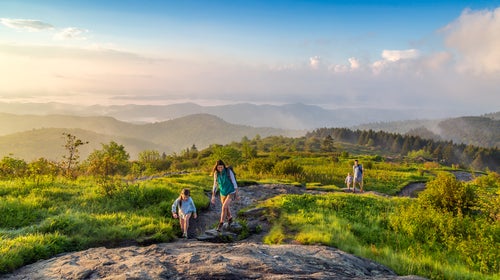
8 Once-in-a-Lifetime Backpacking Trips
From a trail in Isle Royale National Park with spectacular views to a hike that hits four 6,000-foot peaks in 30 miles, these are our favorite classic routes in the U.S.

Heading out the door? Read this article on the Outside app available now on iOS devices for members! >","name":"in-content-cta","type":"link"}}'>Download the app .
Whether you’re a veteran backpacker who’s already checked off many long-distance treks or you’re brand new to the idea of carrying everything you need on your back into the wilderness for days, the point is: Backpacking can be for everyone. You just need to find the right trail for you. (Before you go, read up on backpacking basics and make sure you have the proper gear .) Maybe you’re bringing little kids and hiking one or two miles a day, or maybe you’re going fast and light and logging dozens of miles before sundown. It doesn’t matter. We’ve compiled a list of some of our favorite classic backpacking routes around the U.S. Take on the whole thing or just a portion.
Art Loeb Trail, North Carolina

The Art Loeb Trail isn’t an easy trail—it climbs four 6,000-foot peaks—but at just 30 miles, it’s doable in a matter of days. Most hike it in two to five. Named after an activist from the Carolina Mountain Club , this trail is one of the more popular routes in Pisgah National Forest but still requires a bit of navigating on the lesser-marked sections of the trail. Hike it out and back for a shorter distance or add a connecting trail to make it a loop. Blue Ridge Hiking Company leads guided, four-day hikes on the Art Loeb Trail (from $705), or do it yourself and book a shuttle with Pura Vida Adventures (from $125).
Tahoe Rim Trail, California and Nevada
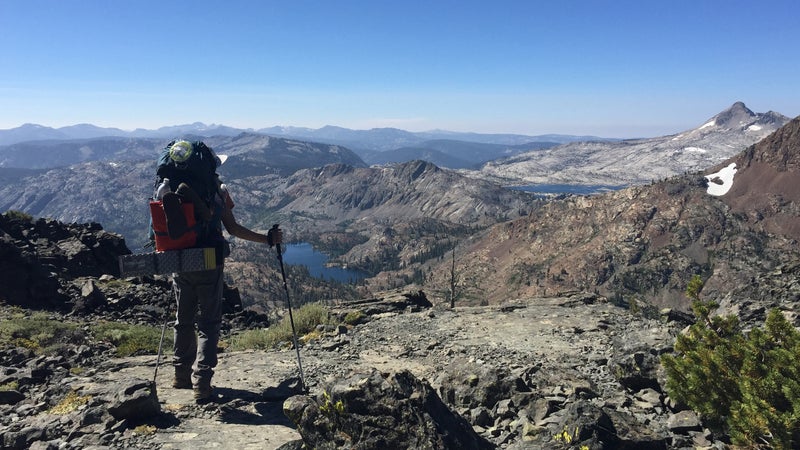
At 165 miles, the Tahoe Rim Trail is a gorgeous long-distance route around the ridgeline of the Lake Tahoe Basin that most hikers complete in 10 to 14 days. Or tackle just a stretch of it—the 32-mile section from Echo Lakes to Barker Pass, along the lake’s west shore, passes through the stunning Desolation Wilderness and makes for a great two- or three-day trip. (This is the only section of the trail that requires an overnight camping permit .) The best time of year to go is July through September. The Tahoe Rim Trail Association leads guided multi-day hikes (from $1,100).
Long Trail, Vermont

The Long Trail , the oldest long-distance trail in the U.S., follows the spine of the Green Mountains for over 272 miles, with 70 designated backcountry campsites. Plan on spending 20 to 30 days on the trail for a thru-hike or pick just a section: the 20-mile stretch from Mad Tom Notch Road in the Vermont town of Peru to Route 140 in Wallingford doesn’t see many crowds, has great views of Little Rock Pond and Griffith Lake, and can be done in a weekend. Early fall is the best time of year to avoid the summer’s crowds and catch colorful foliage. Not into sleeping in a tent every night? Inn to Inn arranges self-guided hikes that include overnight stays at boutique hotels close to the trail, or Wildland Trekking hosts guided hikes (from $2,690) in the fall, which includes stays at B&Bs.
Kalalau Trail, Kauai
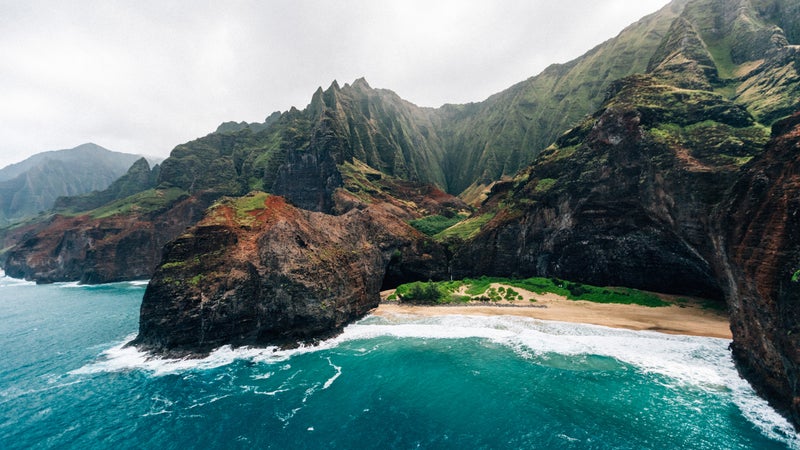
The 22-mile round trip Kalalau Trail , within Kauai’s Na Pali Coast State Wilderness Park , is not for the inexperienced: It involves hundreds of feet of elevation gain on rugged trails with steep, precipitous cliffs above the ocean. Your reward is reaching Kalalau Beach, a secluded stretch of sand at the trail’s terminus, where you’ll camp in an oceanside forest neighboring a waterfall. Because of strong currents, swimming at the beach isn’t recommended, and be sure to check current trail, weather, stream, and ocean conditions before you go. Most people do this hike in two days, but you can add an extra day or two to hang out at Kalalau. If you’re hiking beyond a day trip out to Hanakapi’ai Valley, you’ll need an overnight permit —reservations for those are currently available 30 days in advance and book up quickly.
Greenstone Ridge Trail, Michigan

The longest trail in Isle Royale National Park , the 41-mile Greenstone Ridge Trail goes from the southwest tip of the island to the northeast corner and tops out on 1,394-foot Mount Desort, the highest point in this off-the-radar park. You’ll need a free-of-charge permit for all overnight backcountry stays within the park, but you don’t need to reserve ahead—you can pick it up when you get there. Speedy hikers can do the whole trail in three days or give yourself extra time to look for moose and enjoy the views of Lake Superior . The Sierra Club leads guided seven-day treks (from $1,425) on this trail most years.
Teton Crest Trail, Wyoming
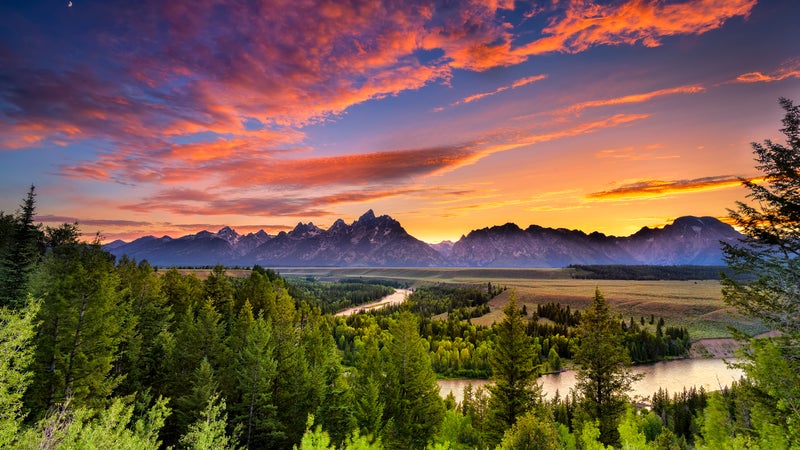
This iconic backpacking route traverses through glaciated, granite peaks and high-alpine lakes in Grand Teton National Park , as well as Bridger Teton and Caribou-Targhee National Forests . It covers about 40 miles and is usually done in three to five days. You’ll need hard-to-snag backcountry permits to camp at any of the 11 designated campsites along the Teton Crest Trail. There are a handful of ways to access this trail and multiple options for starting and ending points. Many people start at the Phillips Trailhead and end in Paintbrush Canyon within the national park, or you can kick off your hike with a lift from the tram at Jackson Hole Mountain Resort , which dumps you at the Granite Canyon trail that leads to the Teton Crest. Bear-resistant food canisters are required. Teton Backcountry Guides leads guided multi-day hikes (from $795) on shorter sections of this trail in the summer or full traverses of this trail on skis during the winter.
Three Sisters Loop, Oregon
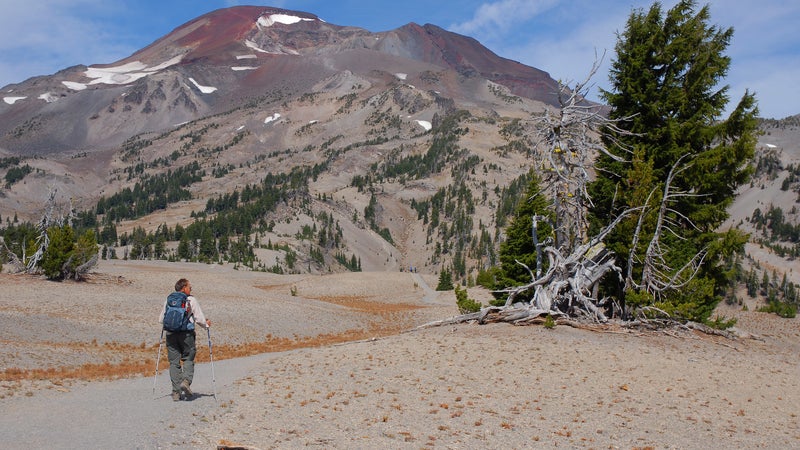
The Three Sisters Loop is about 47 miles long and passes through alpine lakes and meadows filled with wildflowers and tops out on volcanic peaks in the Cascade Range . The Three Sisters themselves are among Oregon’s top-five tallest peaks. Crowds exist on popular day-hike sections of the trail at the peak of summer, but for most of the way, you’ll have the spectacular views to yourself. With a few variations of the loop, you can tweak the route based on your needs. The hike overlaps with parts of the Pacific Crest Trail and score great views of Mount Bachelor. Hike Oregon will plan a custom itinerary for you (from $75) that includes a detailed map and route, plus where to camp each night.
Rim to Rim, Grand Canyon, Arizona
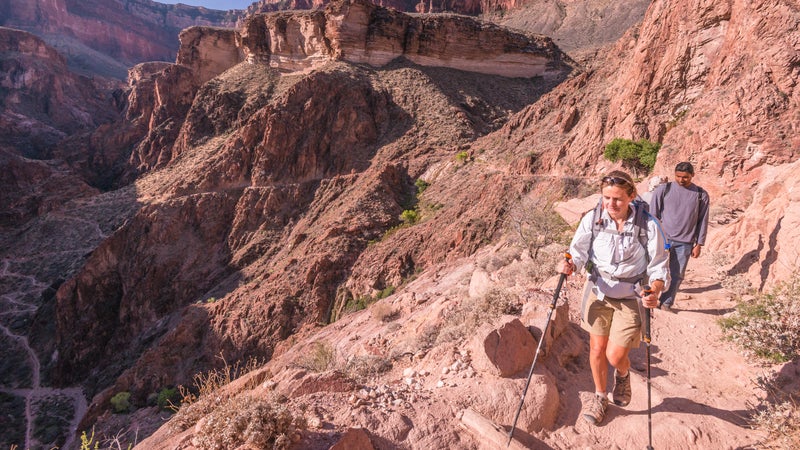
Hiking Rim to Rim on the Grand Canyon is a classic bucket list adventure. Start at the North Kaibab Trail, on the North Rim, and hike down a relentless 14 miles and 6,000 vertical feet to the bottom of the canyon and the shores of the Colorado River. From there, you’ll pitch a tent at Bright Angel Campground or Cottonwood Campground , which require a backcountry permit that gets released four months ahead of time. Or if plan way in advance spend a night in a cabin at Phantom Ranch (from $172), where bookings fill up a year out. From the bottom, it’s a long, steep nine-mile climb up to the South Rim via the Bright Angel Trail. Summer is hot here, so go in late spring or early fall. Unless you want to turn around and repeat what you’ve just done, schedule a ride with Trans Canyon Shuttle . Or let someone else handle the logistics and join O.A.R.S. for a guided, five-day Rim to Rim hike (from $2,699), that includes a stay at Phantom Ranch.
- Grand Canyon
- Grand Teton National Park
Popular on Outside Online

Enjoy coverage of racing, history, food, culture, travel, and tech with access to unlimited digital content from Outside Network's iconic brands.
Healthy Living
- Clean Eating
- Vegetarian Times
- Yoga Journal
- Fly Fishing Film Tour
- National Park Trips
- Warren Miller
- Fastest Known Time
- Trail Runner
- Women's Running
- Bicycle Retailer & Industry News
- FinisherPix
- Outside Events Cycling Series
- Outside Shop
© 2024 Outside Interactive, Inc
- Meet the Team
- Work with Us
- Czech Republic
- Netherlands
- Switzerland
- Scandinavia
- Philippines
- South Korea
- New Zealand
- South Africa
- Budget Travel
- Work & Travel
- The Broke Backpacker Manifesto
- Travel Resources
- How to Travel on $10/day
Home » North America » USA » Backpacking Guide
Backpacking USA Travel Guide – Budgets, Tips, Itineraries + More (2024)
You’ve been waiting a long time for this moment – you’re about to go traveling in the USA for the first time, ever.
Maybe you’ve been planning your USA backpacking trip for awhile, scouring sources and friends for information about where to go, what to do, how to travel in the USA. This is about to be one of the most epic trips of your life!
But the United States is a big country, not to mention really expensive. A road trip across America is costly and you could end up spending more than you originally planned to…
That is precisely why I’m writing this in-depth guide to backpacking the USA. As a United States native, one who has gone on more than a few road trips, I know a thing or two about traveling in this country.
I’m going to be sharing with you all of my knowledge about the States. We’ll talk about the best of America, including the finest lodges, the most beautiful parks, and the most rad cities.
Buckle up, buttercups – we’re going on a road trip in the United States, right here, right now .
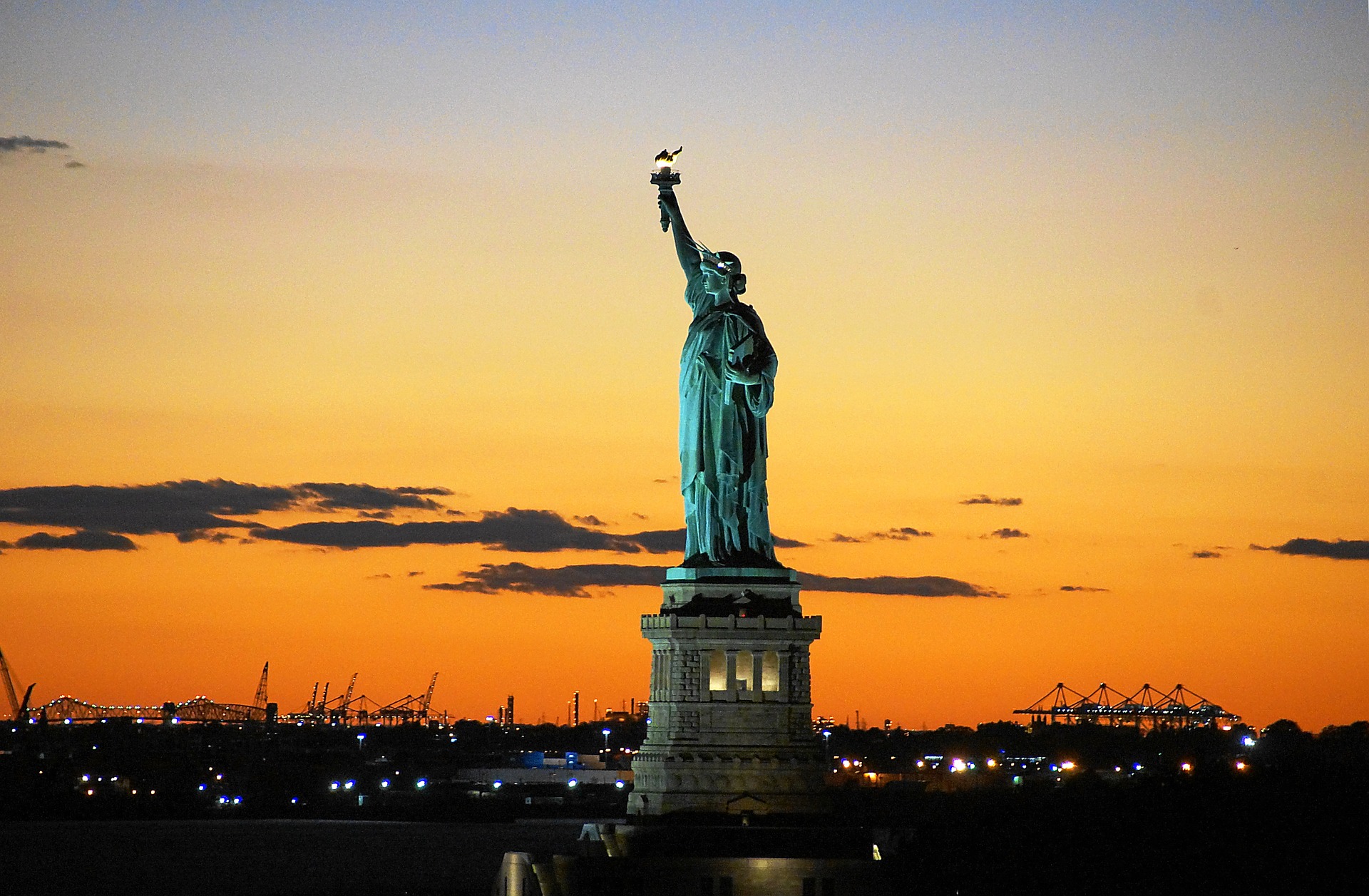
The Broke Backpacker is supported by you . Clicking through our links may earn us a small affiliate commission, and that's what allows us to keep producing free content 🙂 Learn more .
Why Go Backpacking in America?
Best travel itineraries for backpacking the usa, best places to visit in the usa, 10 top things to do in the united states, backpacker accommodation in the usa, backpacking usa budget and costs, best time to visit the usa, staying safe in the usa, getting insured before visiting the usa, how to get into the usa, how to get around the usa, volunteering in the usa, american culture, what to eat in the usa, more unmissable american experiences, faqs about backpacking in the usa, final thoughts on backpacking the usa.
You’re going to hear me harp on this fact often, but the United States is fuckin’ huge . There is a multitude of regions in this country and a multitude of tourist destinations that are inhabited by an even greater multitude of people.
To put it simply, backpacking the USA is going to be a long, sometimes crazy experience. But ultimately, it will be thrilling.
But there are lots of subjects to cover when talking about backpacking America: how to get around the USA, where to lay your tired head for the night, and, crucially, how to save money along the way.
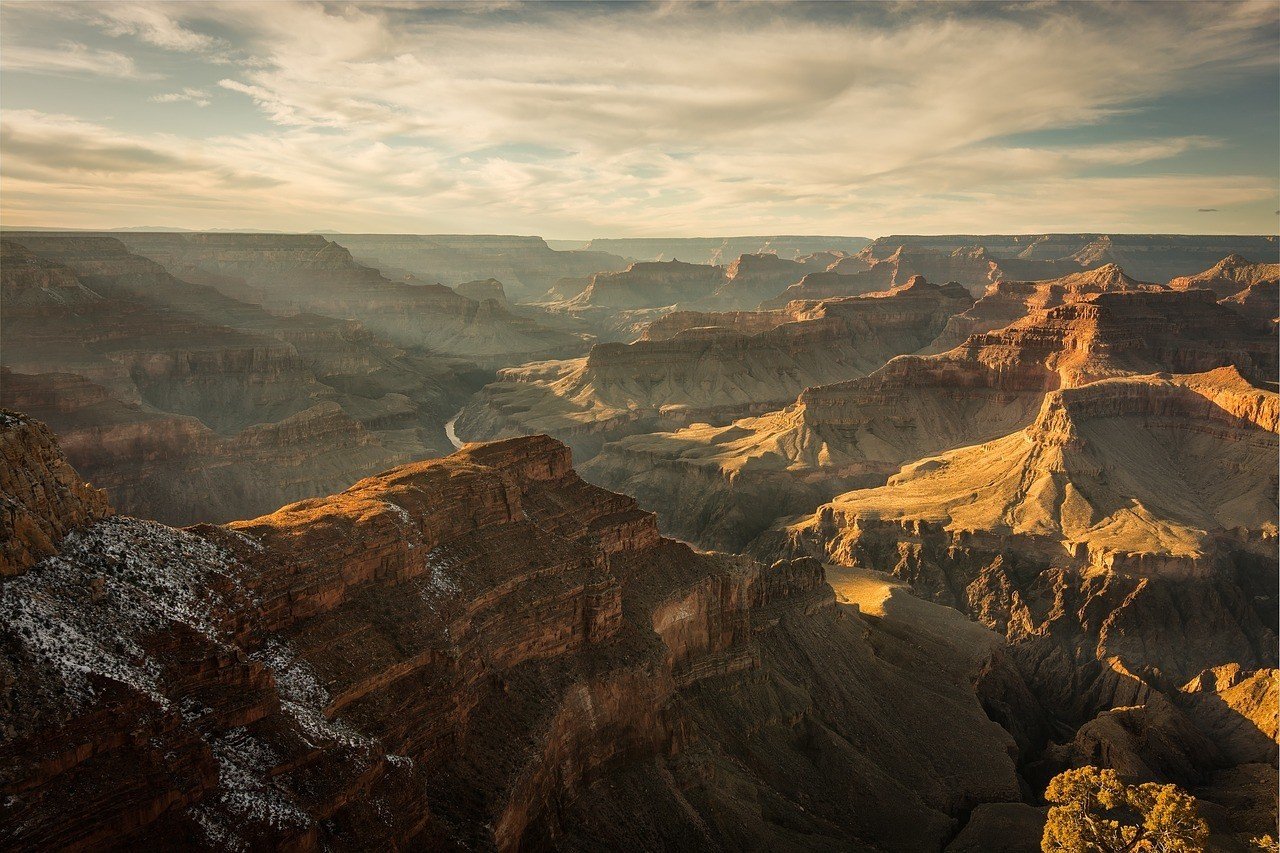
First, we’re going to talk about the best places to visit in the United States and how to do so. Directly below, you’ll find a list of sample USA itineraries followed by detailed breakdowns of each region.
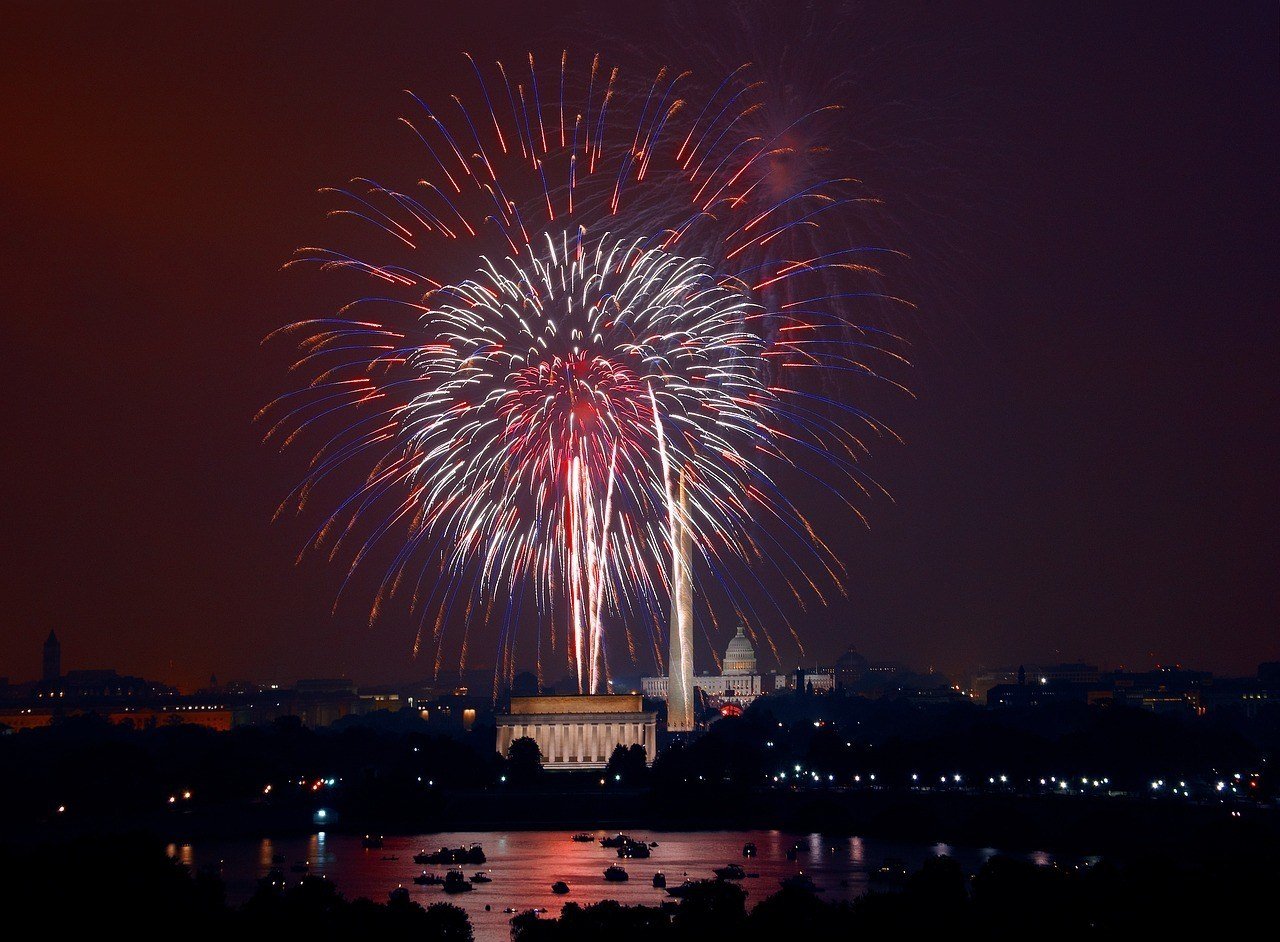
Make no mistake, there’s are a lot to do and see in the United States, so let’s waste no time and get to it!
10 Days Backpacking the USA Itinerary – A Jetsetting Holiday
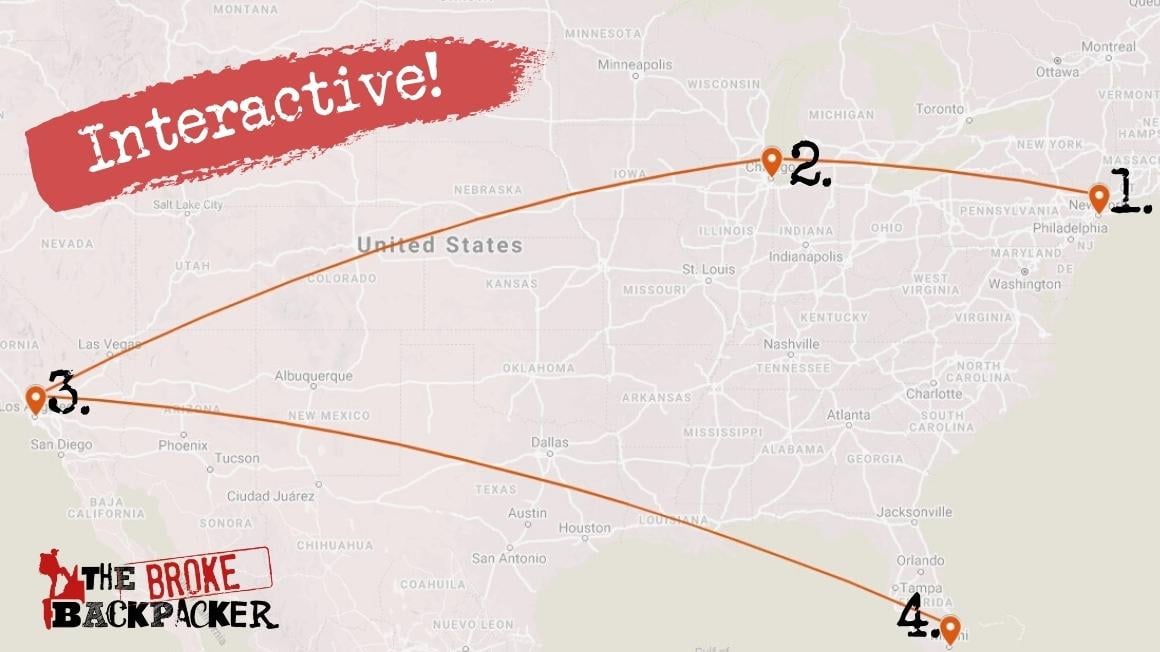
A 10-day itinerary in the USA doesn’t offer a whole lot of time to see the country, but you’ll still have lots of options with a larger budget. Public transportation doesn’t jive well with this kind of time frame, so you’re going to get acquainted with its many airports.
Start your jet-setting itinerary by spending 3 days visiting New York City , the so-called “Capital of the World.” Don’t miss out on the artsy vibes of Williamsburg and Central Park , which might just be one of the only times the US has succeeded in creating a free, public green space.
Times Square is severely overrated, though the lights do look pretty cool at 3 AM post partying. Just make sure you choose a good place to stay in NYC that’s near public transport.
Next, take a quick flight to the favorite place of many and explore Chicago . Here you can enjoy killer food and reliable public transport. Chicago’s one of the coolest places to stay for 2 days filling up on deep-dish pizza.
Once you’re stuffed to the brim, hop on another plane to visit Los Angeles . Your best bet is to rent a car for 2 days to explore surrounding areas like Santa Monica , Malibu , and Venice Beach . LA might just have the best street tacos in the US, and as the city can get expensive, note nearby cheap food options when choosing your accommodation.
To end your trip, check out Miami to get a taste of Latin America in the USA! In 3 days , don’t miss out on Club Space for the coolest sounds in the city, South Beach for beaches and bottles, and Key Biscayne for a more relaxing, natural beach day complete with water sports.
To get acquainted with Miami’s unique culture, check out Little Havana and the famous Versailles Restaurant for authentic Cuban eats. Brickell or South Beach are the best places to stay in Miami , though choose the latter if you want to spend most of your time by the water!
3 Weeks Backpacking USA Itinerary: The Ultimate Roadtrip
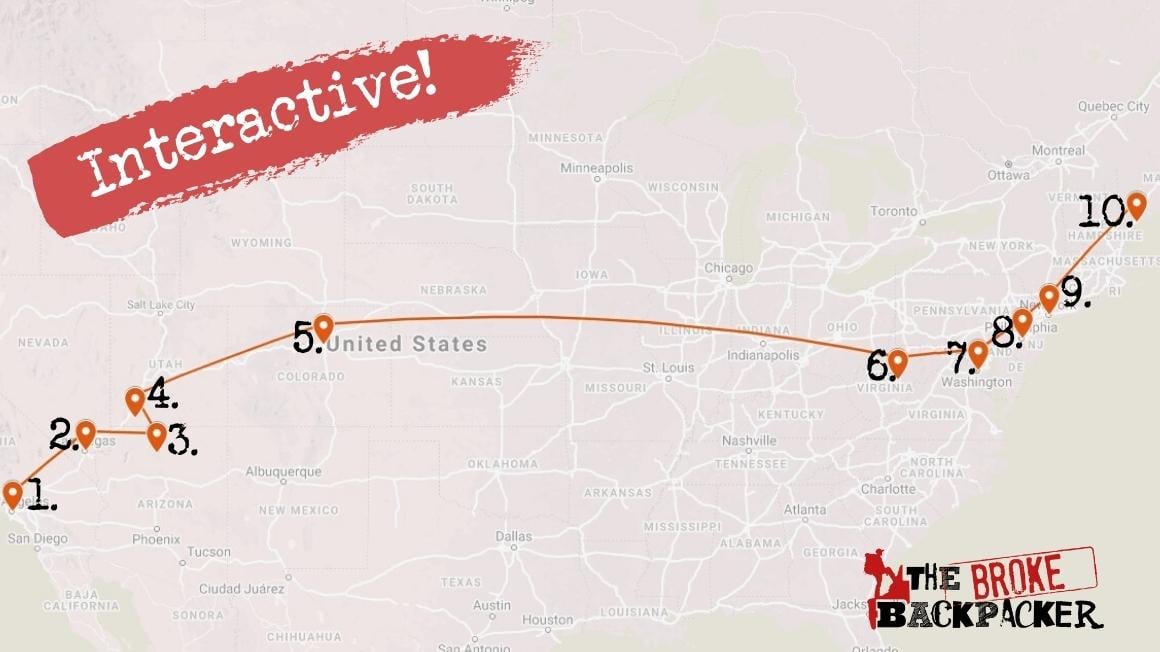
Now we’re cooking with gas! A 3-week itinerary for the USA is a great chunk of time to allow you to see multiple regions in the USA and, not only that, enjoy them as well.
First, fly into Los Angeles to start your USA adventure. After checking out the famous beaches, drive to Las Vegas for a quick stop to hopefully make some winnings before continuing onwards to some of the United States’ best national parks .
Spend a few days staying in the amazing Grand Canyon , one of the most amazing natural landmarks in the US. Next up, head to Utah , another wild state blessed with stunning beauty, and some great places to camp on a budget.
Zion National Park is perhaps the most stunning (and therefore most famous) of Utah’s national parks . But the state also has both Arches National Park and Bryce Canyon National Park , which are both stellar options. Check out where to stay in Zion National park if you visit.
Now for some of the best multi-day backpacking trips (and a whole lot of doobies!) make your way to Denver , Colorado for a serious dose of mountains, forests, and the devil’s lettuce! Weed is fully legal in the state, and you can find every strain and edible you can imagine.
Now, you’re going to want to head East. Make a pitstop at one of the scenic parts of Appalachia before getting into the last bit of your American adventure: an East Coast road trip .
Some must-see East Coast spots include staying in Philadelphia , home of the legendary Philly Cheesesteak and exploring the nation’s lovely capital Washington D.C . Then, of course, a couple of days in New York City . If you still have some time, expand your horizons by driving through New England , one of the very best portions of the States.
Rhode Island is a great place to check out some Northern beaches, and staying in Portland , Maine is a must, especially if you’re into seafood. You won’t soon forget that lobster roll! The state is also blessed with a ton of natural beauty–Maine’s stunning Acadia National Park is a dream come true from July-August.
There are loads of B&Bs in Maine to stay at that are often run by friendly locals who can make your experience even more epic.
- Oregon Road Trip
- California Road Trip
- Colorado Road Trip
- Montana Road Trip
- Arizona Road Trip
- New York Road Trip
1+ Month USA Backpacking Itinerary: A Backpacker’s Ideal Route
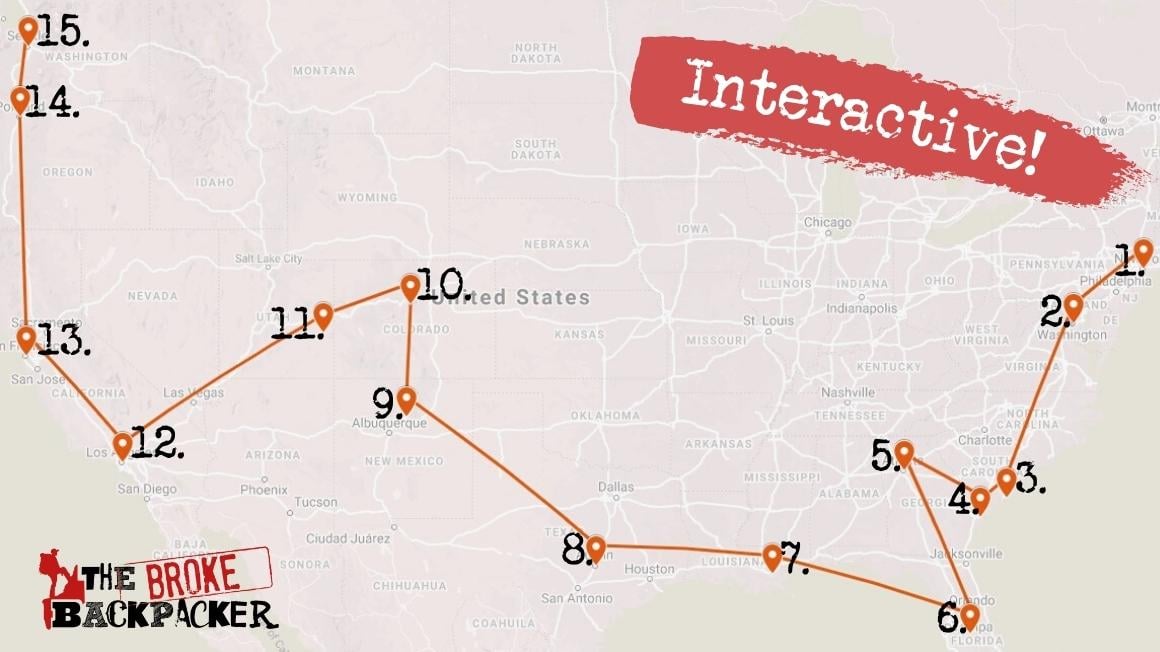
Well, everyone, this is it: the best possible way to go backpacking the USA!
With more than a month on your hands, you have free reign and control over your own American dreams. You can do this itinerary in either direction, though I recommend starting in New York City ; it’s got something for everyone, from attractions to some of the best restaurants in the country. There are so many places to visit in New York you might want to tag on a few days.
Next up, take some time to see the charming region of New England before spending a few days in Washington D.C. heading to the sweet Southern locales of Charleston , South Carolina and Savannah , Georgia. If you want to see a particularly interesting US city, you can also stay in Atlanta AKA Hotlanta, Georgia.
Now it’s time for the country’s most notorious state: yup, it’s time for a Florida road trip . After getting acquainted with the Sunshine State, continue onwards to New Orleans , one of America’s coolest cities before expanding your waistline in Austin , Texas.
Need help deciding between Dallas or Austin ? Check out our helpful guide.
Moving along, make a stop in Santa Fe , New Mexico (known for its stunning national parks) before making it to one of America’s most iconic states: Colorado . The high-elevation state is undoubtedly one of the best places to hike in the country.
After some marijuana and mountain action, get ready for even more epic landscapes by staying in Moab , Utah for a few days. The cute town is close to two USA national parks and has a vibe all of its own. The gamblers’ paradise of Las Vegas is up next, or you could just stay in Utah if you’re liking it.
And now for what most people backpacking the USA don’t want to miss: California! Los Angeles is a great place to start your exploration of the most populated state. Don’t spend too long in LA–there’s an entire coast to see. Before leaving, stay in San Francisco , a city truly unlike any other in the states.
The lush Oregon Coast is a logical next step, where you can make a pitstop in the quirky city of Portland before culminating your US backpacking adventure in Seattle , Washington.
But if you have a bit of flexibility your trip doesn’t have to end there! Seattle is a great place to either headway north to Alaska , or thousands of miles southwest to the true highlight of the USA– backpacking Hawaii .
The United States is HUGE and it would take a long time to visit each state once, never mind really get to know them. Here are some of the “can’t-miss” stops on your USA backpacking adventure:
Visiting the East Coast
STATES: New York, Pennsylvania, New Jersey, Delaware, Maryland, Virginia
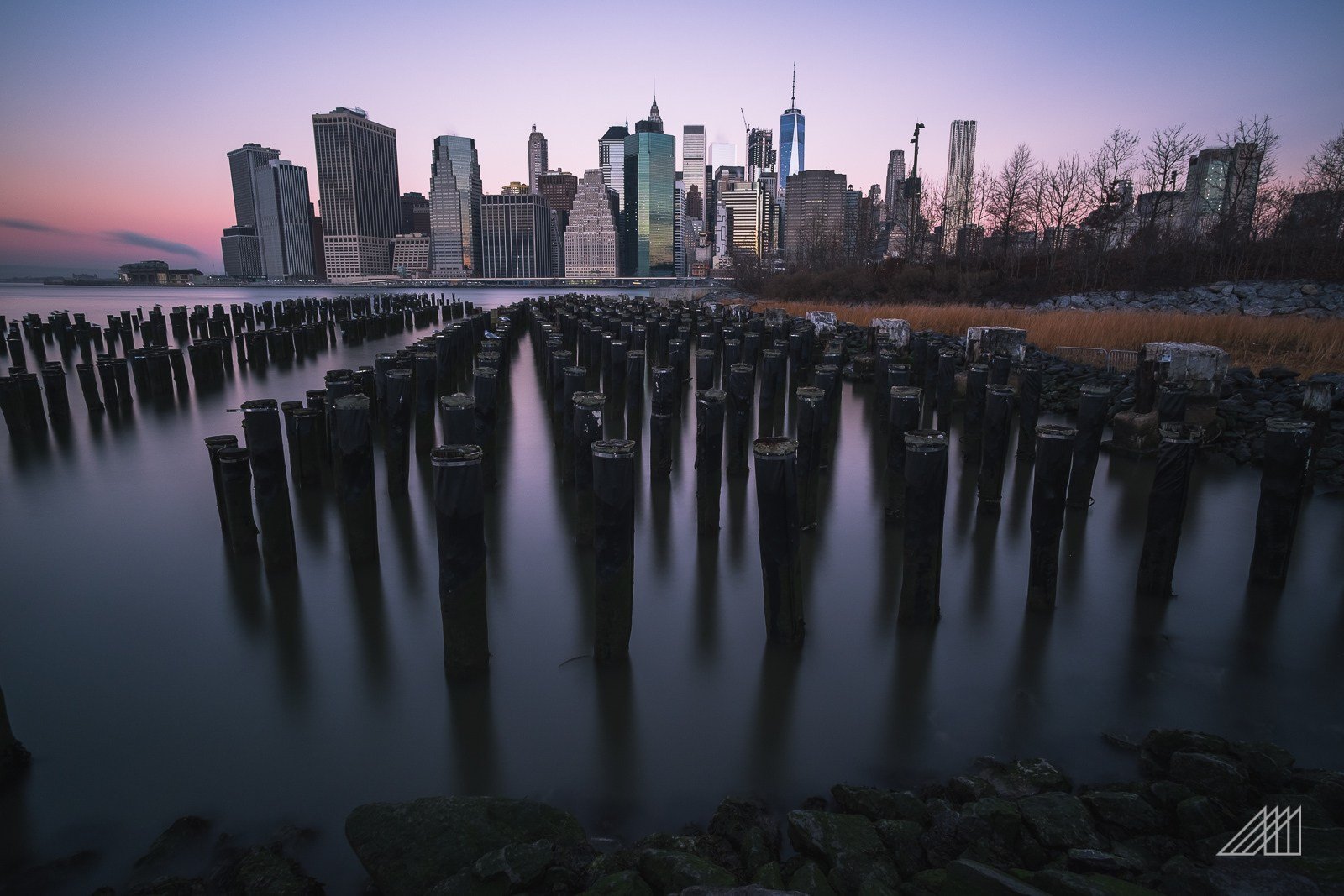
The East Coast may just be the most quaint part of the US. After all, this is where most of the nation’s modern history has taken place and where most of its aspirations have sprung from.
The East Coast hosts some of the most important cities in the USA, both economically and politically. The famous New York City , one of the most diverse metropolises in the world. It’s fo’sho the highlight of the East Coast–if you have the time, a 4-day NYC itinerary is perfect to get a solid feel of the Big Apple.
The East Coast is also home to Washington DC – the federal capital of the USA. Smaller but no less interesting cities, like Baltimore (MD), and Newark (NJ), also contribute greatly and are worth visiting themselves. To see plenty of US history, be sure to squeeze some days in Philadelphia , one of the USA’s oldest cities.
Many will begin their USA backpacking trip in this region; NYC has a convenient international airport. But also because of convenience; the East Coast Corridor is very well connected .
Visiting the East Coast will be a unique cultural experience. Once you understand the East Coast style, you’ll start to feel like one of them.
Visiting New England
STATES: Massachusetts, Connecticut, Rhode Island, Vermont, New Hampshire, Maine
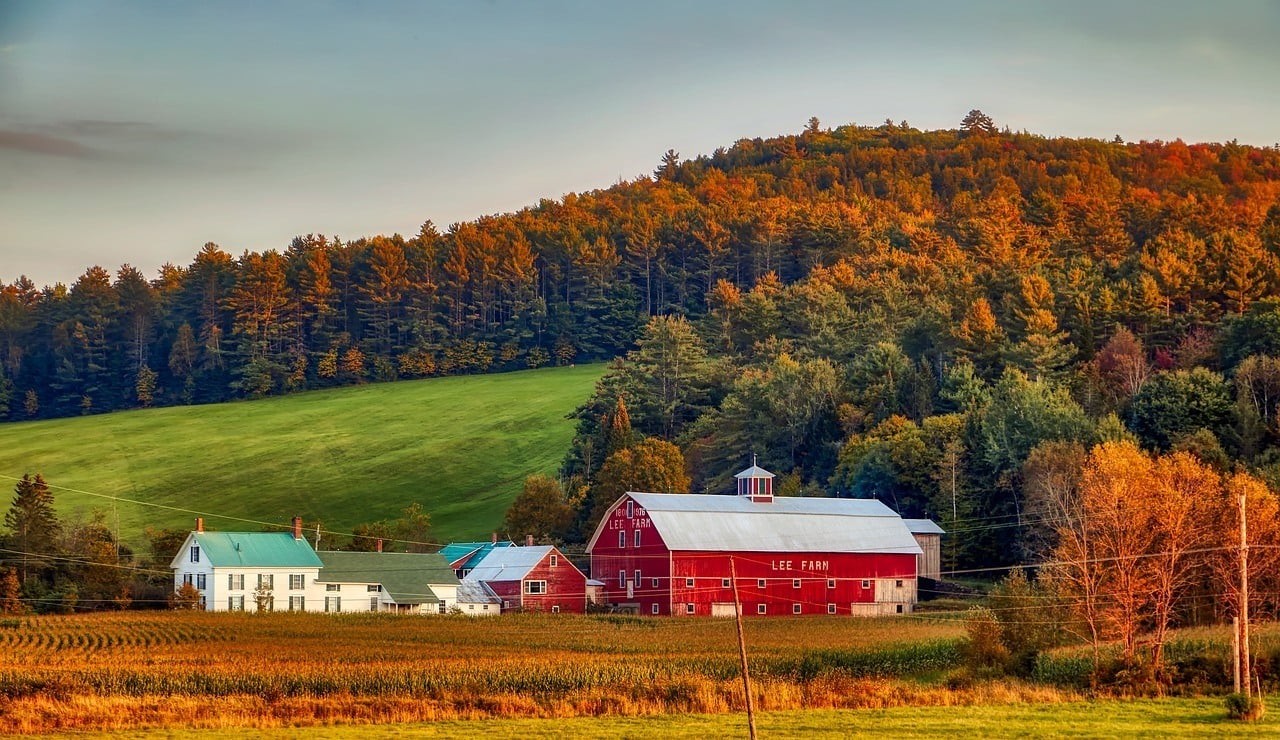
While the modern form of America may have been nurtured further down on the Atlantic Seaboard, the first version of it was born in New England . The original 13 Colonies, founded by English settlers, were based in this part of North America. New England is the start of the USA as we know it.
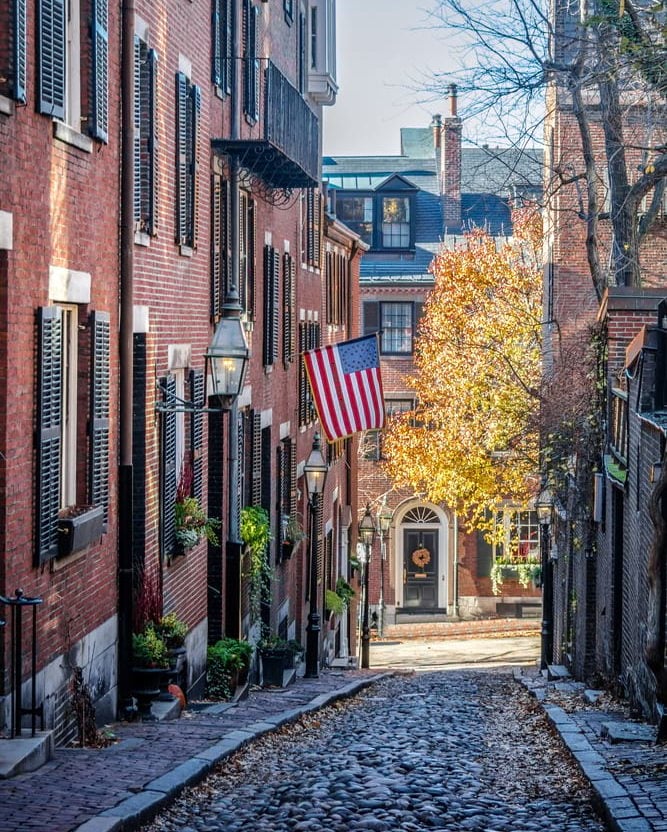
New England has a distinctly more old-school vibe than other Atlantic states. The buildings are older, the food is more old-fashioned, and the cultural memory stretches further back. Take one look at the red barns of the New England countryside, the vintage lighthouses of the coast, or the preserved historical landmarks, and you’ll know that people care about heritage here.
That’s also what makes a New England road trip one of the most quaint you can take in the entire country. While the region isn’t as sprawling or as industrious as the Atlantic Seaboard, it is far more bucolic here and the locals like it that way.
They can’t be blamed either – the presence of places like the White Mountains and the Maine Coast , among many others, make New England one of the most beautiful places in the USA. When the leaves turn gold and red in the autumn, it’s sublime.
New England still has its fair share of cool cities and the region also. Plus public services are the best in the country, and overall, it has the best quality of life. Backpack Boston , Massachusetts to get a taste of one of the best cities in the USA.
Meanwhile, Portland , Maine has been slowly winning the hearts of hipsters over the years. The state’s amazing food and natural scenery make staying in Maine absolutely worth the effort. Burlington , Vermont is also a cool little hippy town and Providence, Rhode Island is also having a renaissance.
When you need a break from the hustle and bustle of the East Coast, head to New England.
Visiting the Midwest
STATES: Ohio, Indiana, Michigan, Illinois, Wisconsin, Minnesota, Iowa , Missouri
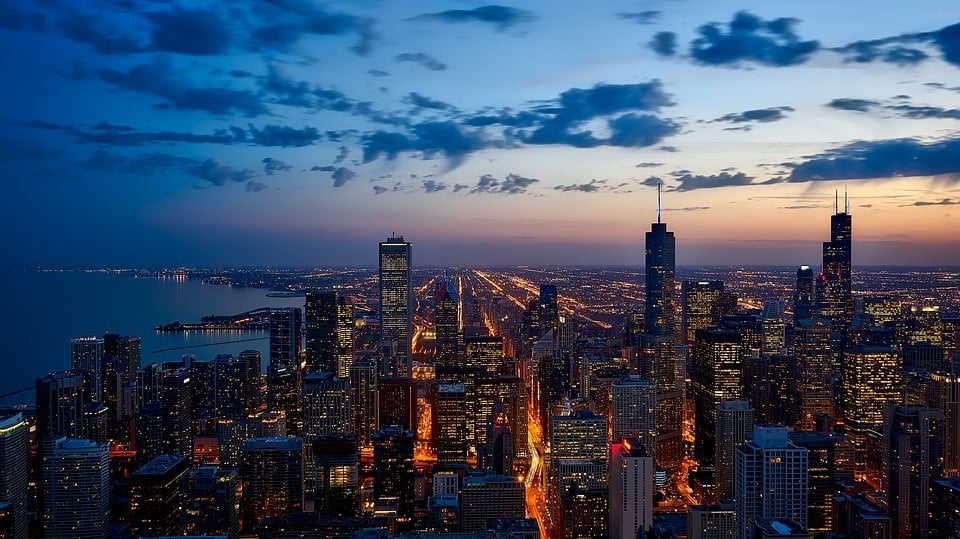
Ah, the Midwest – home of cheeseheads, subarctic winters, and charming accents. Not many people make the Midwest a part of their USA backpacking trip and it’s kind of a shame actually.
The Midwest is often focused upon for all the wrong reasons: for being bitter cold in the winter, humid in the summer, and for unlucky economies. Though it isn’t as dynamic as the East Coast or as warm as the South, the Midwest still has a lot of merits.
There are some cool cities here, such as Des Moines or Indianapolis – for alternative reasons – not to mention some very attractive outdoor areas, particularly around the Great Lakes. Staying near Lake Michigan , for example, is always a good idea. Most appealing though are the warm, welcoming locals , who are often eager to show foreigners how great the Midwest can be.
Most will base themselves in the Midwest’s largest city and stay in Chicago. This metropolis is one of the most energetic cities in the USA and has a number of attractions that will both shock and entertain you. Did you know that the Chicago has a myriad of hidden gems , waiting to be uncovered? From eclectic neighborhoods to offbeat landmarks, there’s something here to surprise even the most seasoned explorers.
There are more cities besides Chicago worth seeing too. Pay a visit to Detroit, Michigan; once the fallen angel of America, it is putting itself back together, piece by piece. Plus you have Madison, Wisconsin , which is lowkey one of the great hidden gems of the Midwest.
If you don’t really care about civilization though, there’s always the Great Lakes to explore. These enormous freshwater bodies actually mimic the sea in a lot of ways – you can surf here sometimes – and there are portions that may even resemble the Caribbean.
Visiting Appalachia
STATES: West Virginia, Kentucky, Tennessee, various satellite counties
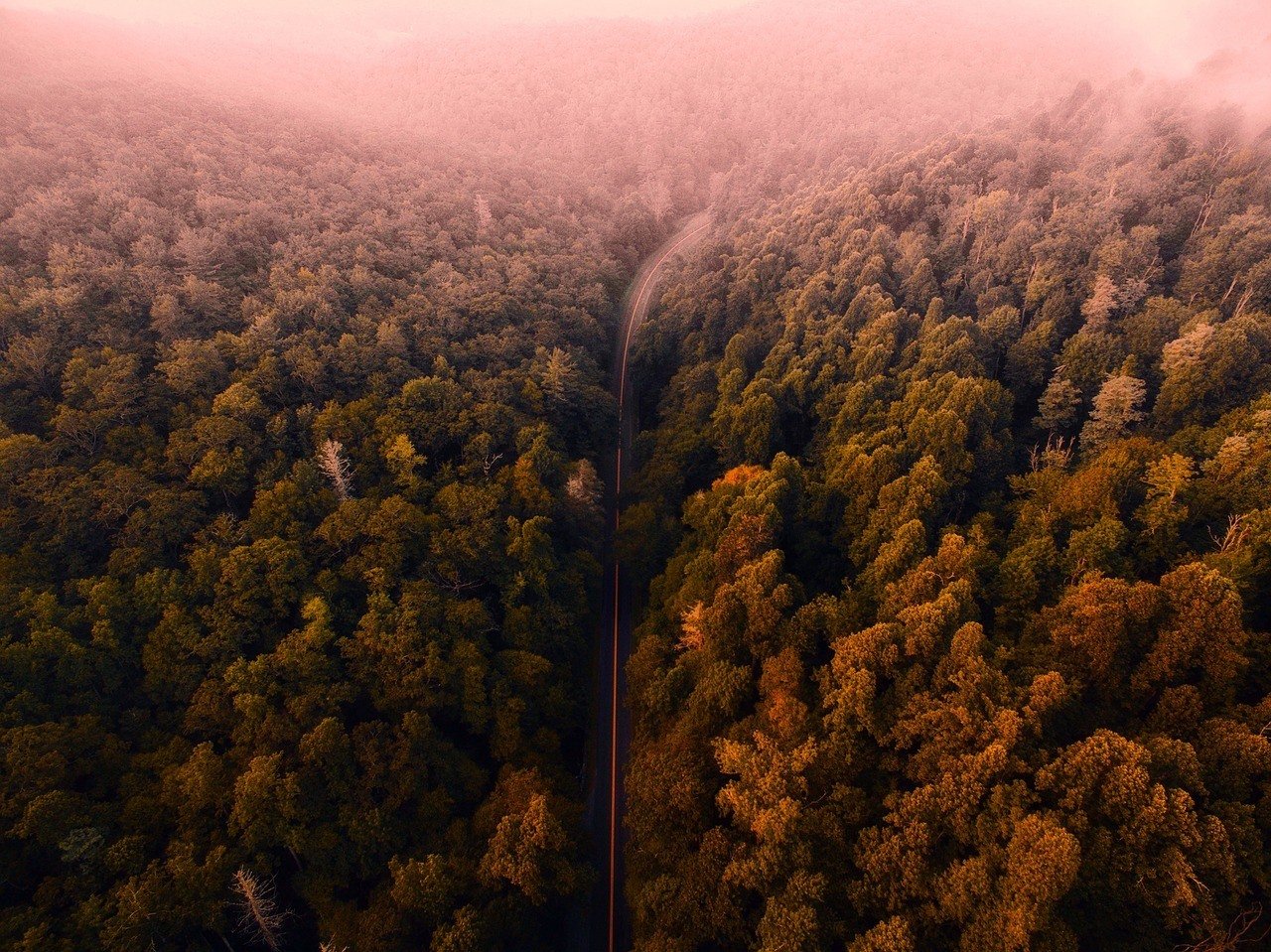
Appalachia is kind of a strange place, both in the geographic and cultural sense. Geographically, Appalachia is defined by the Appalachian Mountains, which form the largest chain in the Eastern United States.
A lot of states from other regions are actually touched by these mountains – like North Carolina, Pennsylvania – but only one state is actually fully engulfed by them: West Virginia. This means that Appalachia is a bit of an interzone between the South, Midwest, and East Coast regions.
Culturally, Appalachia has a reputation for being both agrarian and rebellious. Appalachian people are often portrayed as hicks, rednecks, bootleggers, or inbred mountain people. These are, of course, (mostly) outrageous stereotypes, but most will agree that Appalachia is a poorer and more discriminated region in the USA.
But Appalachia offers plenty to the curious tourist, more than other regions of the US. Visiting here will allow you endless opportunities to camp, hike, and explore.
There are hundreds of little towns with rich histories and some offer unique attractions, be they crafts or hot springs. Some of the larger cities, like Memphis, Tennessee offer a fantastic mix of Southern vibes and city convenience.
If you wanted to leave the mountains, there’s plenty more to see and do in greater Kentucky and Tennessee . Knoxville and Nashville , Tennessee , and Louisville , Kentucky are all exciting cities that offer enough entertainment (often in the form of music and drink) to keep you busy for a long while.
Visiting the South
STATES: North Carolina, South Carolina, Georgia, Florida, Alabama , Mississippi, Louisiana, Arkansas
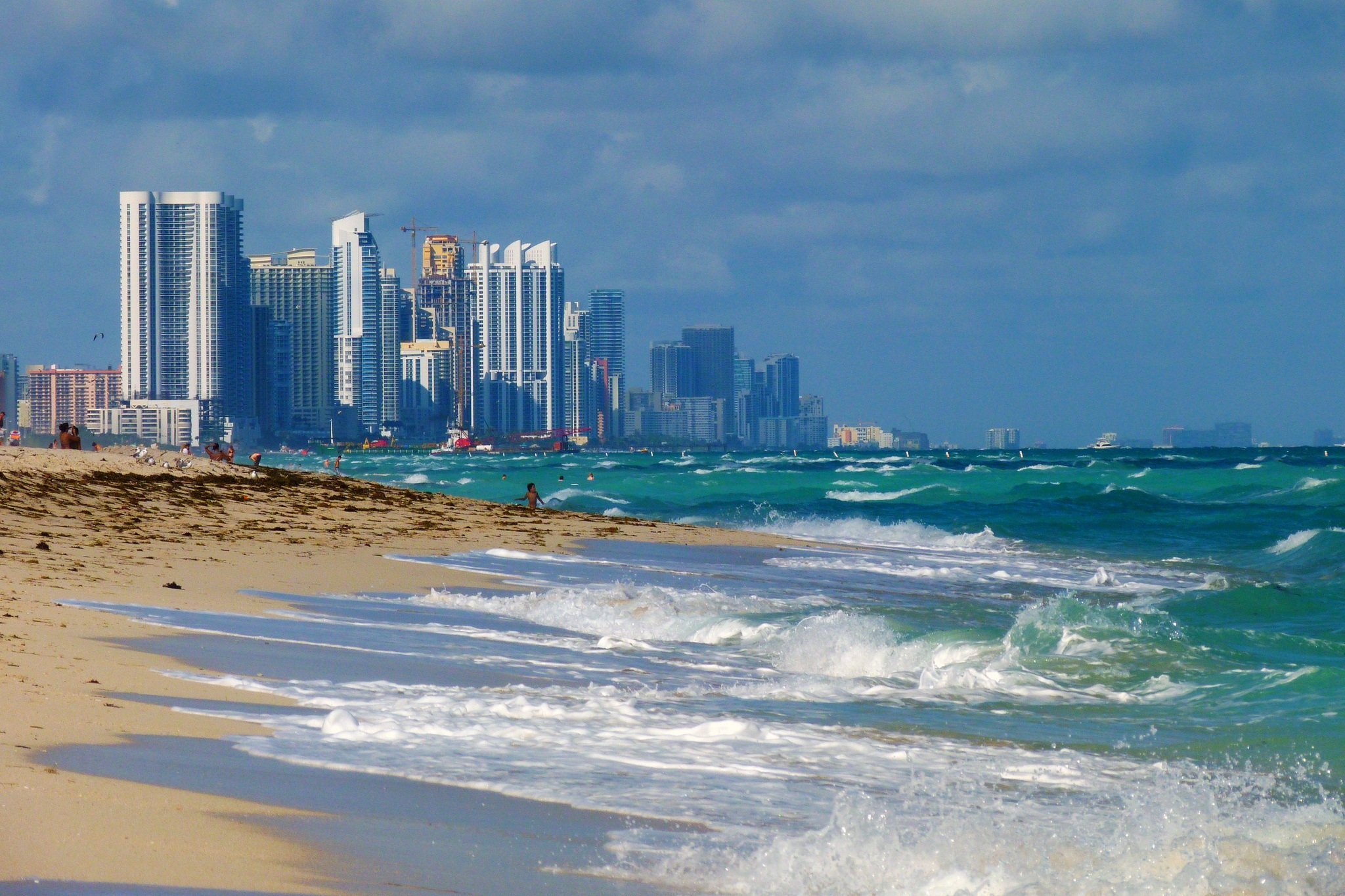
The South intimidates a lot of travelers because the region is unlike any other in the USA or the world for that matter. Things are just different in The South, for better or worse.
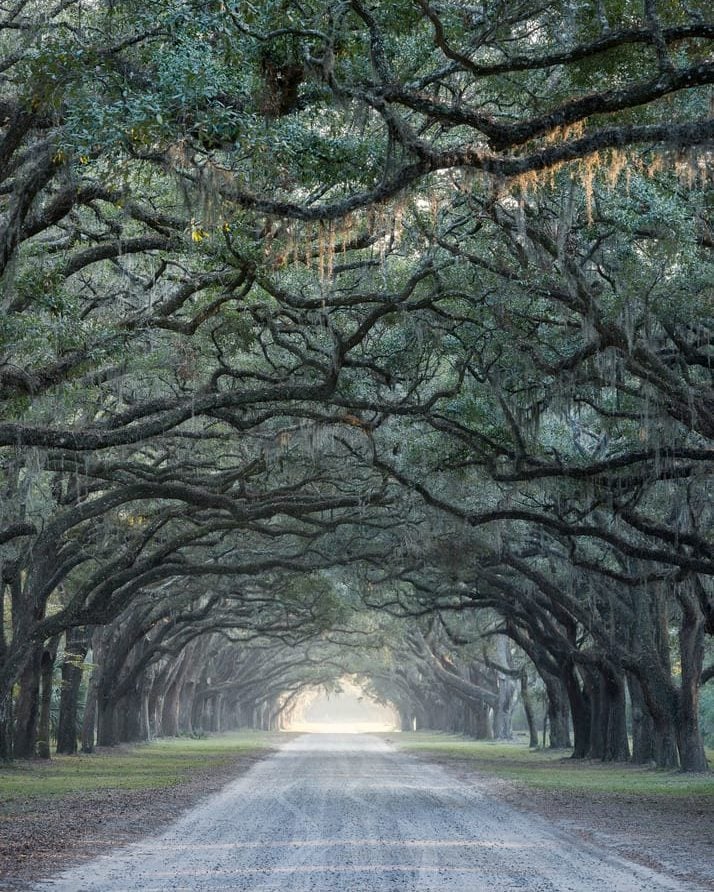
There are glaring issues, to be sure: systematic racism still exists, poverty is rampant, and overall public health is shockingly poor. Just stepping off the plane into a Southern city can feel like being transported to an alternate dimension.
That said, Southern America is not a scary or particularly ugly place to visit. There is a lot of really interesting stuff going on here if you know where to look. There are parts of The South that we already know about. We’ve all heard of how hedonistic and fun visiting New Orleans can be.
Everyone knows that Florida has the best beaches in the States. And of course, no USA trip is complete without spending some days in Miami itinerary, the so-called “Capital of South USA.”
But did you know that some of the finest North American architecture is preserved in the cities of Charleston , South Carolina or Savannah , Georgia?
Or that the city of Atlanta is no longer the gritty, crime-ridden place that it used to be? Perhaps you’ve heard that North Carolina is probably one of the most beautiful places in the USA? Don’t miss staying at a gorgeous B&B in Southport , North Carolina.
There’s a lot to The South that may surprise you. Of course, it’s weird, and, yes, the BBQ will probably lead to an early grave but if you visit The South with an open mind, you may just enjoy it.
If you’re keen on a different kind of experience during your trip, why not stay at one of the best treehouses and cabins in Georgia ? You’d be surprised how much fun this style of “luxury camping” can be!
Visiting Texas and the Great Plains
STATES: Texas, Oklahoma, Kansas, Nebraska, South Dakota, North Dakota
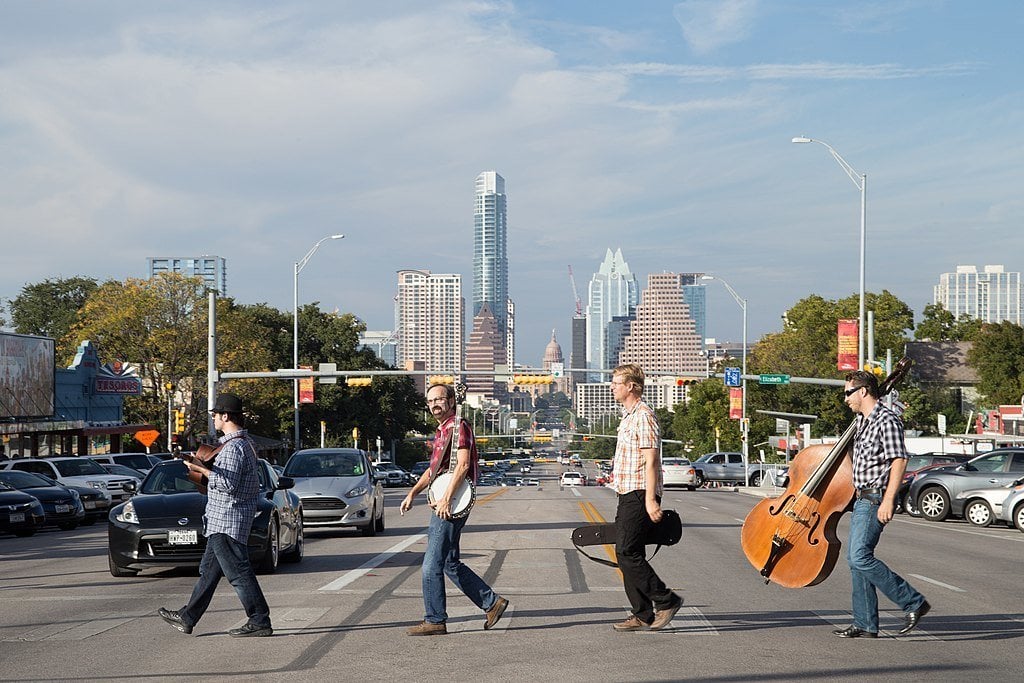
The Great Plains separate the East Coast and West Coast of the United States like an ocean. This vast region, characterized by endless fields of tall grass and near-perfect flatness, stretches on for aeons. Four whole states are just prairie and a large portion of Texas is as well.
It’s not hard to imagine that this is often considered the most boring part of the country. Those on a coast-to-coast USA road trip often speed through this part because there is supposedly nothing to do, but there’s definitely something to see everywhere.
There is a certain romance to crossing the Great Plains though. This was once the edge of the map for American pioneers. Some of the most respected First Nation peoples, like the Comanche, Apache, and Crow, once roamed plains and, if we’re being frank, these peoples deserve more dominion over their ancestral homelands .
It’s not like this region is totally featureless either. In some parts of the Plains, you’ll find some spectacular landmarks, like Badlands National Park or Mt Rushmore (SD).
We haven’t talked about Texas yet either! (Simmer down now angry Texans, we’re getting there.)
Texas is totally worth your time, even if you only make it to a few destinations. Most people head immediately for lively Austin first. Some manage to visit cosmopolitan Dallas or culturally diverse San Antonio while they’re at it.
Bonus points if you visit Big Bend National Park or the Texas Hill Country. Stay in South Padre Island to experience one of Texas’ hidden gems.
You may end up enjoying the locals more than anything in Texas. They’re a proud bunch – and want everyone to know it – but they’re honestly some of the best folk in the States. Just don’t piss them off.
Visiting the Rocky Mountains
STATES: Colorado, Wyoming, Montana, Idaho
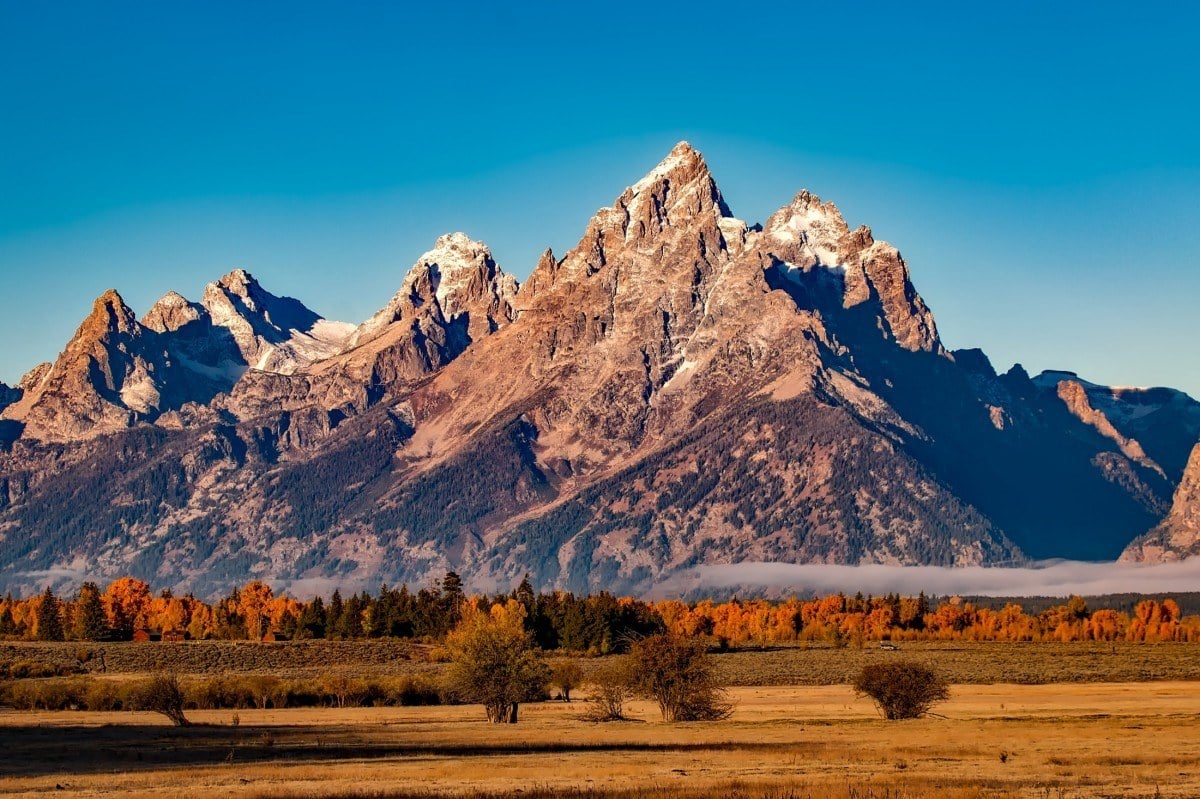
The Rockies is one of the greatest mountains chains in North America and has become a defining feature of the Western United States. To this day, the original spirit of pioneers and frontiersmanship still permeates the Rocky Mountain culture. There are so many amazing things to do in Colorado !
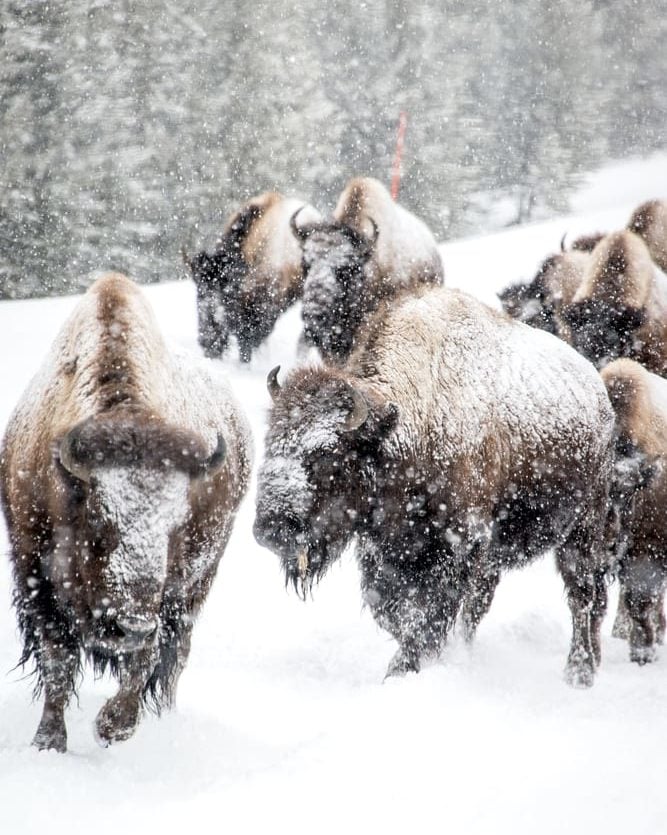
The Rocky Mountains offer some of the most epic outdoor experiences in the nation. There’s river rafting, skiing, hunting, climbing, sport fishing, and a whole lot more here. It goes without saying as well that some of the best hikes in the USA are found in the Rockies.
The largest urban area in the Rocky Mountain states is Denver , Colorado. Denver is becoming an increasingly popular city to both live in and visit. Many residents will talk your ear about how much it’s changed in the last few years.
Another option is the fun and more compact city of Boulder . There are some great hostels in Boulder if you’re on a budget.
Denver, like most communities in the Rocky Mountains, is kind of the middle of fucking nowhere. While its location is great for the outdoors and breeding free-spiritedness, it sucks to drive to.
The nearest cities – Salt Lake City , Utah, and Albuquerque , New Mexico – are both more than 6 hours away. If you want to visit Wyoming , Montana, or Idaho , it will be a mission.
If you have the time though, the aforementioned states are totally worth visiting. Wyoming hosts two of the best national parks in the USA and those that make the effort to stay in Montana often regard it as the most beautiful place in America for nature lovers.
Lesser visited Idaho, often relegated to a pitstop on road trips across America, is actually a really pretty place, especially around Sandpoint , the Sawtooth Mountains , and Sun Valley. You can find many quaint cabins in Idaho that offer unparalleled views of the natural surroundings.
Visiting the Southwest
STATES: Utah, New Mexico, Arizona, Nevada
For a lot of people, the Southwest is the best place in the USA. Why? Because it’s magical and there’s really nowhere else like it.
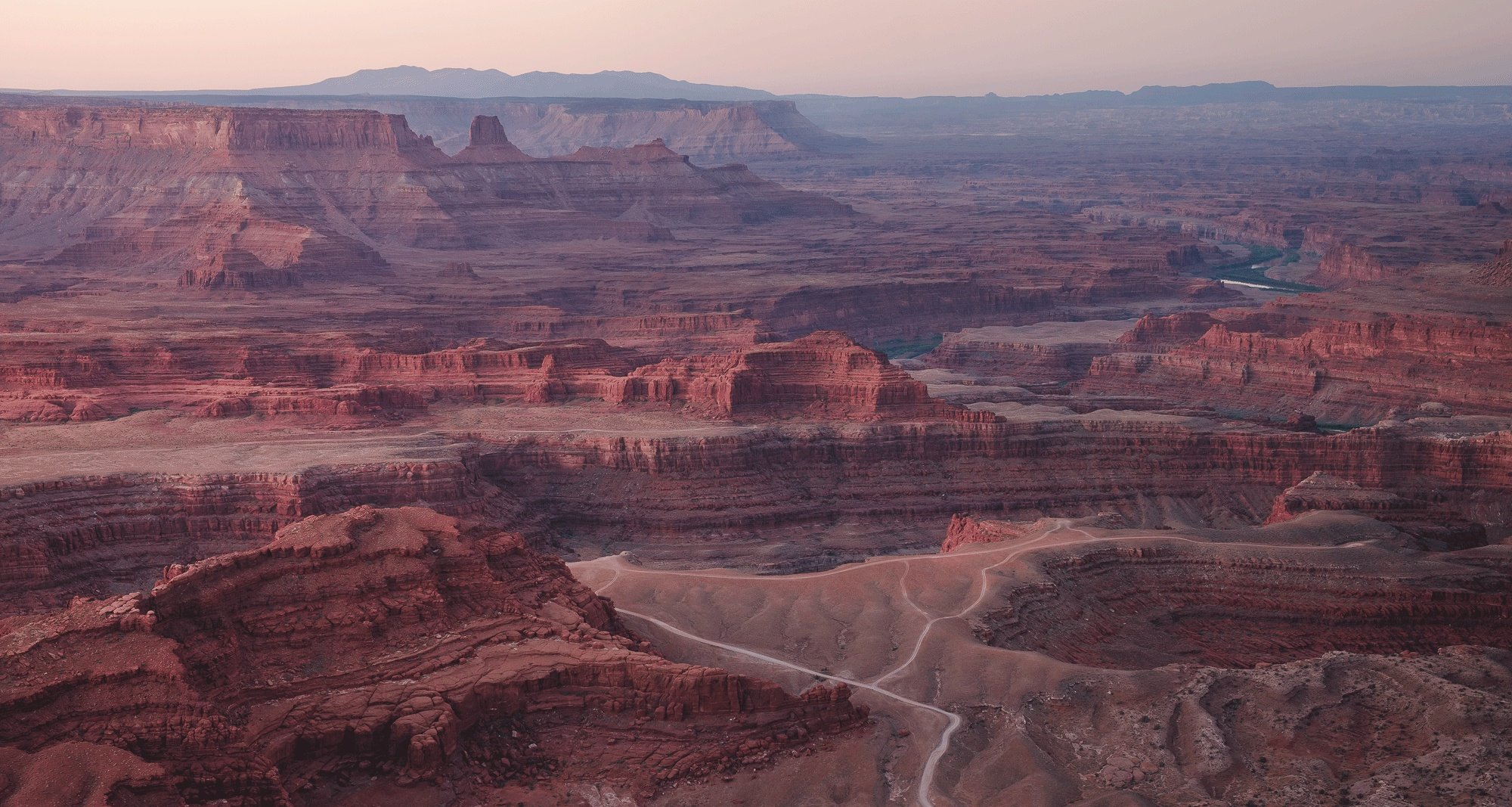
The Southwest is a desert filled with some of the most surreal and fantastic natural features you can imagine. It’s a dreamscape full of natural bridges, rocky portals, and passageways leading to God knows where. It’s no wonder so many great American creatives have been inspired by this land.
Objectively speaking, many of the most iconic places in the USA are found on a Southwest road trip itinerary. The Grand Canyon , Monument Valley , even the neon lights of Las Vegas ; all of these sights are deeply ingrained in the American consciousness.
Utah , famous for stone arches and the Mormon religion, probably has the densest collection of state and national parks in the country. You can spend your trip just taking a road trip through Utah’s national parks . Between Bryce Canyon , Canyonlands , Capitol Reef , and every other park in the state, there is an endless amount of things to do in Utah.
Arizona is where you’ll find the legendary Grand Canyon in addition to several smaller but no-less-famous landmarks like Antelope Canyon, the Vermillion Cliffs, and Sedona. All of these are often considered among the most photographed places in the USA.
New Mexico is the least trafficked part of the Southwest and is probably more well-known for Breaking Bad than its actual attractions. Sante Fe is a quirky little town with a vibrant art scene.
The small town of Taos is part spiritual enclave, part ski resort. Finally, no trip to the Southwest is complete without seeing the otherworldly White Sands .
Visiting the West Coast
STATES: California, Oregon, Washington
Taking a West Coast road trip is arguably one of the best things to do in the US. Few other places on Earth offer such natural diversity as the West, which consists of mountains, rainforests, deserts, an enormous coastline… Need I go on?
The West is a very different place from the East Coast. For one, everything is more spread out here; outside of the urban areas, there’s a lot more open space and a lot longer drives.
West Coast people also behave differently – where East Coasters are generally more blunt and unabashed, West Coasters are more genial but sometimes superficial.
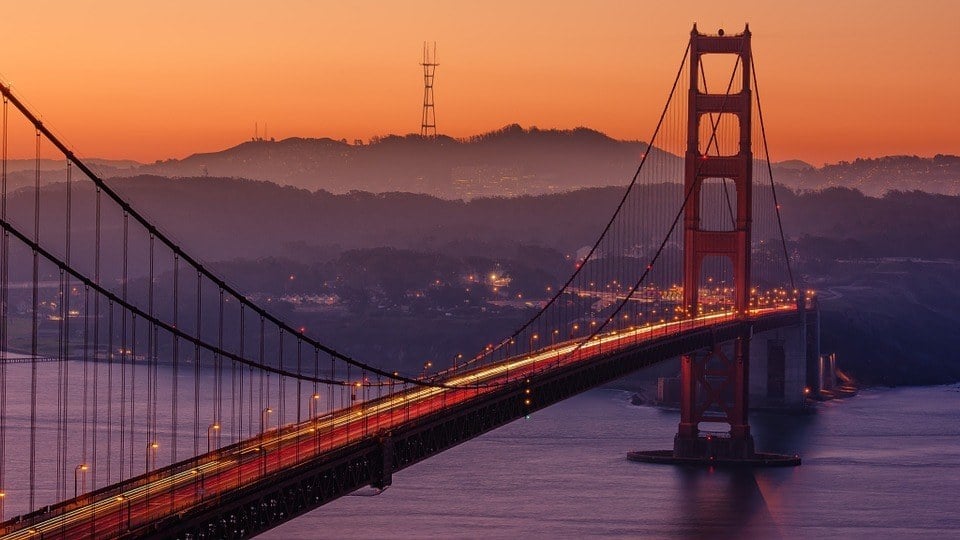
The state of California is the largest, most famous, and arguably most desirable state on the West Coast. People flock here for good weather, good vibes, good food, good beaches, and the chance to make it big.
It’s really hard to fault California for anything besides having too much. Between the vanity of Los Angeles , the ascendance of San Francisco, and the natural wealth of the state in general, it’s easy to overindulge here.
Sunny San Diego is probably the most chill city of the bunch, though in general NorCal is the most chill. Might be that weed…
Let’s not forget California’s moodier northern neighbor either. The Pacific Northwest , composed of Oregon and Washington, might be rainier and somewhat more dreary but the region is just gorgeous.
Oregon is like New Zealand-Lite and has just about every type of landscape possible. Its largest city, Portland , is regularly mocked for being a mecca for hipsters and beer snobs but it’s becoming more these days.
With a plethora of things to see along the way , Washington is the more mountainous and richer sibling to Oregon. Once sleepy, the thriving metro of Seattle, home to loggers and mariners, is now a modern metropolis. Sandwiched between the Puget Sound and Mt Rainier, it’s arguably the most beautiful city in America as well (on a clear day).
Visiting Hawaii and Alaska
So far we’ve covered 48 of the USA’s 50 total states. So what about those lands beyond the shores of the Pacific or the wilds of Canada? Are we going to visit Hawaii or Alaska?
Let’s take a look at these distant states below.
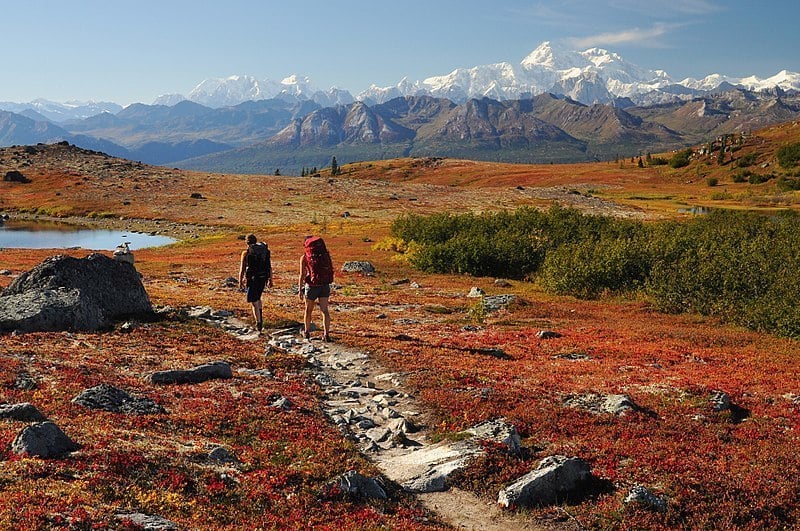
Located in the far western corner of North America lies Alaska – the largest and most wild state in the USA. The landscape here is rugged, primal, and mostly untouched by civilization.
Mountains dominate the state. In fact, the highest in North America, Denali , is here in Alaska.
Remote is the best word to describe Alaska. The state is located so far north that it takes a flight or week-long ferry to reach it from the Lower 48.
Most of the state itself lacks infrastructure outside of the Anchorage region. Seeing anything outside the metropolitan area often requires a bush plane.
Visiting Alaska could be an unforgettable experience as there are few places this pure left in the world. It’ll just be you and Mother Nature here, and it’s more likely that you’ll see more bears or bald eagles than people.
Best Places to Visit in Alaska
- Anchorage – Alaska’s largest city is a great place to start any Alaska adventure. Check out the accessible nature and have a reindeer dog. Yup we’re talking about a hotdog made with reindeer and its damn delicious .
- Denali National Park – One of the most beautiful expanses of nature in the country, this national park gives you a chance to get up close and personal with North America’s tallest mountain.
- Juneau – Alaska’s capital city is the perfect place to eat some salmon, see a glacier, and even mine for gold!
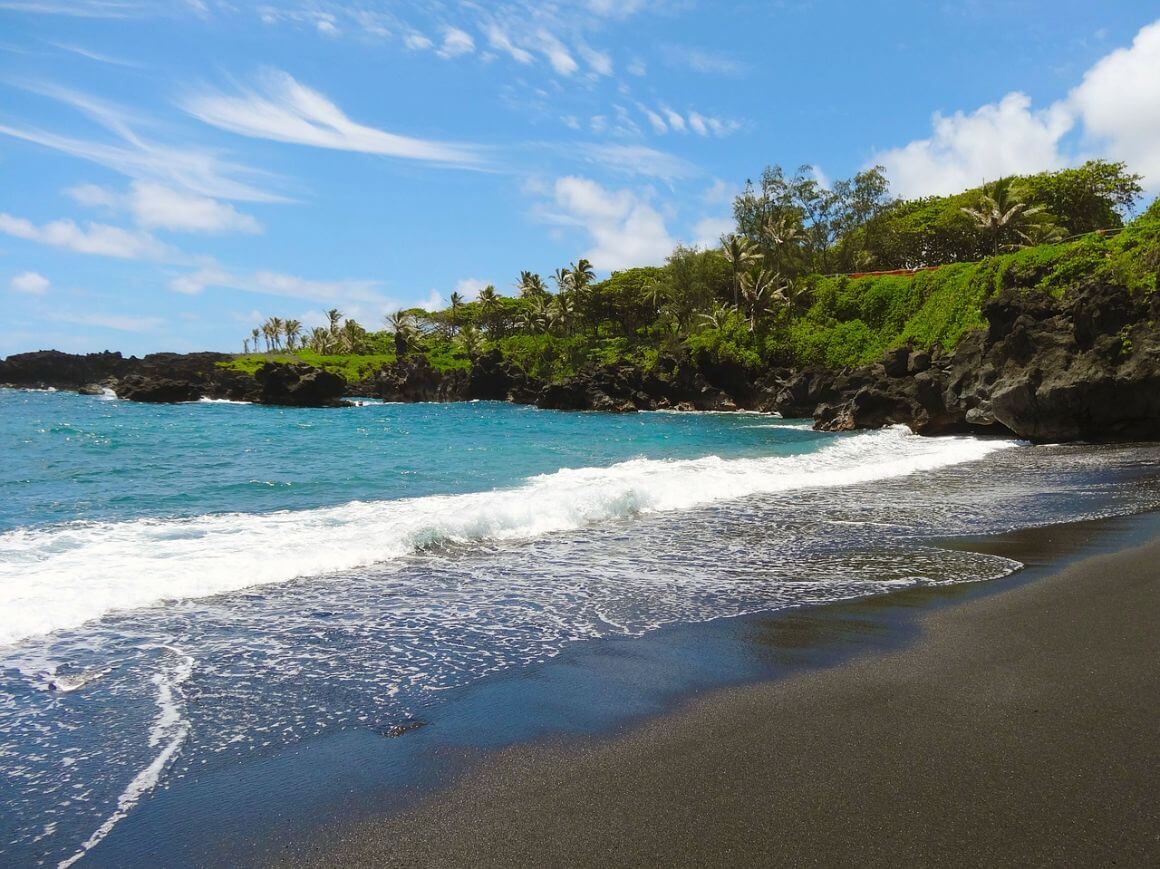
Quite the opposite of Alaska, traveling to Hawaii means visiting a tropical paradise. The amount of times that this archipelago has been named “the most beautiful place in the world” is beyond count now.
Okay, Hawaii can be expensive . But it’s the perfect place to travel and to live.
Hawaii has everything: lush jungles, dramatic peaks, and more than a few pristine beaches. You can do so much here, from surfing to hiking to canyoneering to just being a beach bum. All the more reason to never leave!
Hawaii is very far away from the continental United States. Though backpacking in Hawaii is not necessarily affordable, with a little help, you can still visit on a reasonable budget. You can even find many yoga retreats that combine wellness sessions and exploration with their offering, which is another good way to explore Hawaii.
If you want someone to do the planning for you, going on a Hawaiian Beach Tour with Global Work and Travel may be an option worth considering. They’ve got broke backpackers in mind, as they offer the chance to pay in interest free instalments.

Best Places to Visit in Hawaii
- Kauai – This lush green island is the perfect place to stay in Hawaii for nature lovers. Filled with beaches, trails and stunning drives, it’s one of the best islands in the state.
- Oahu – With a whole lot more to offer than just Honolulu, don’t miss out on Waimea Valley and Laniakea Beach .
- The Big Island – The major highlight here is visiting the Hawaii Volcanoes National Park and staying in Hilo to enjoy its picture-perfect beaches.
Getting of the Beaten Path in the USA
A lot of foreigners couldn’t name more than five cities in America and the ones they do name are always Los Angeles, San Francisco, Las Vegas, New York, and Miami.
If you’ve been paying attention so far, then you already know there’s a lot more to the USA than just these cities. In fact, there’s roughly 5000 km between LA and NYC; if you were on a coast-to-coast road trip in the US, that’d be a whole lot of fuck-all in between.
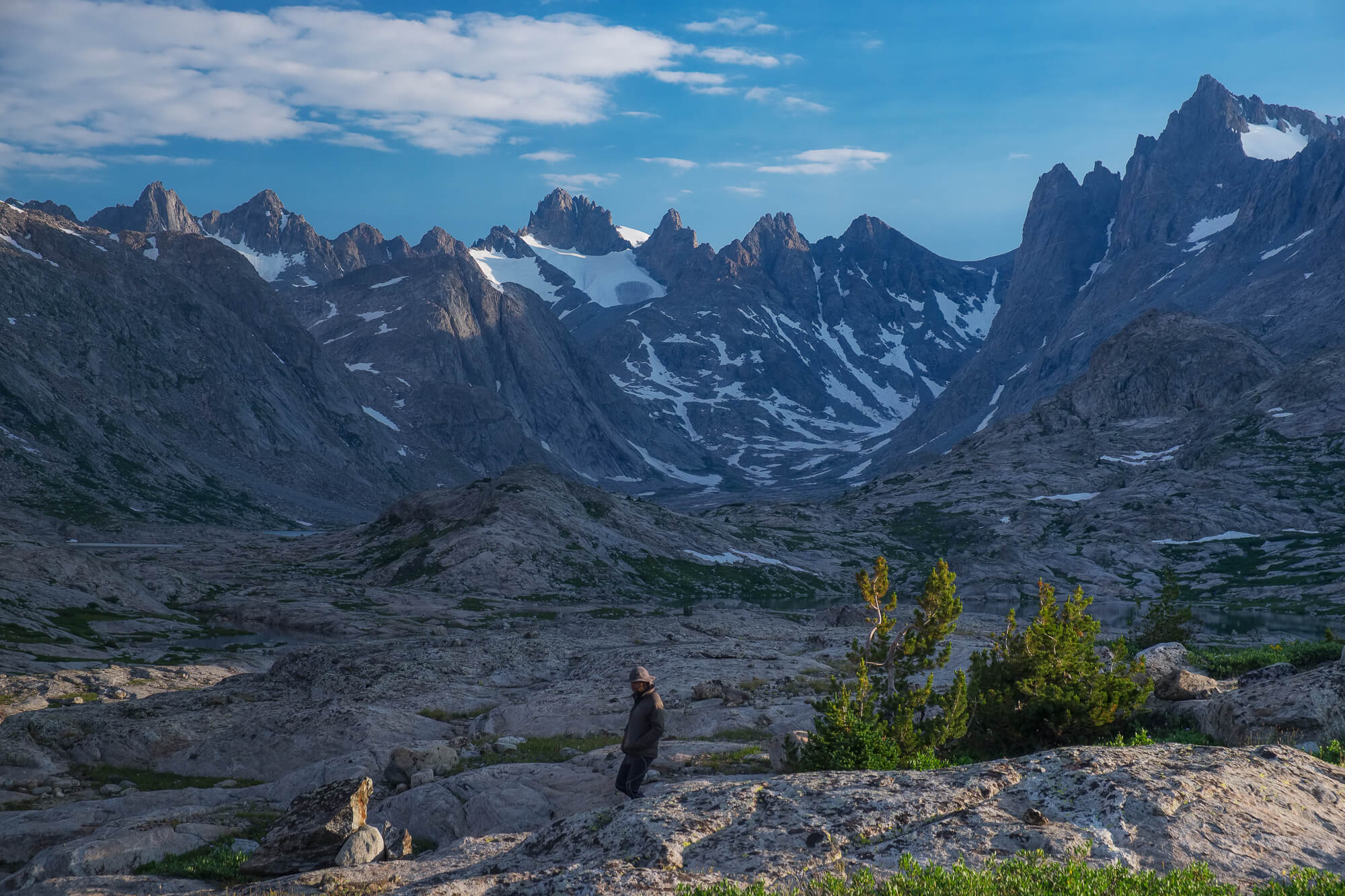
My recommendation is to actually explore the USA a bit – take the road less traveled and see parts of the country no one really knows about.
To get your imagination going, here are some amazing random places in the USA:
- Wind River Range, Wyoming
- Death Valley National Park
- Bob Marshall Wilderness, Montana
- Ashland, Oregon
- Lassen Volcanic National Park, California
- Olympic National Park
- Grand Staircase-Escalante, Utah
- The Redneck Riviera, Florida
- Athens, Georgia
- Asheville, North Carolina
- The Great Northern Woods, Maine
- Rocky Mountain National Park
- Red River Gorge, Kentucky
- Moloka’i Island, Hawaii
- Duluth, Minnesota
- Yakutat, Alaska
- Tucson, Arizona

We’ve tested countless backpacks over the years, but there’s one that has always been the best and remains the best buy for adventurers: the broke backpacker-approved Osprey Aether and Ariel series.
Want more deetz on why these packs are so damn perfect? Then read our comprehensive review for the inside scoop!
Doesn’t really matter if you’re backpacking the USA solo or with a group – there’s tons of stuff to do here! Check out some of these potential activities and then go search for the best places in America yourself!
1. Get down in the Big Easy
New Orleans AKA the Big Easy is one of the country’s greatest treasures. Vibrant, storied, exciting, and never ashamed, staying in New Orleans is one of the most interesting things to do in the USA, not to mention one of the most fun.
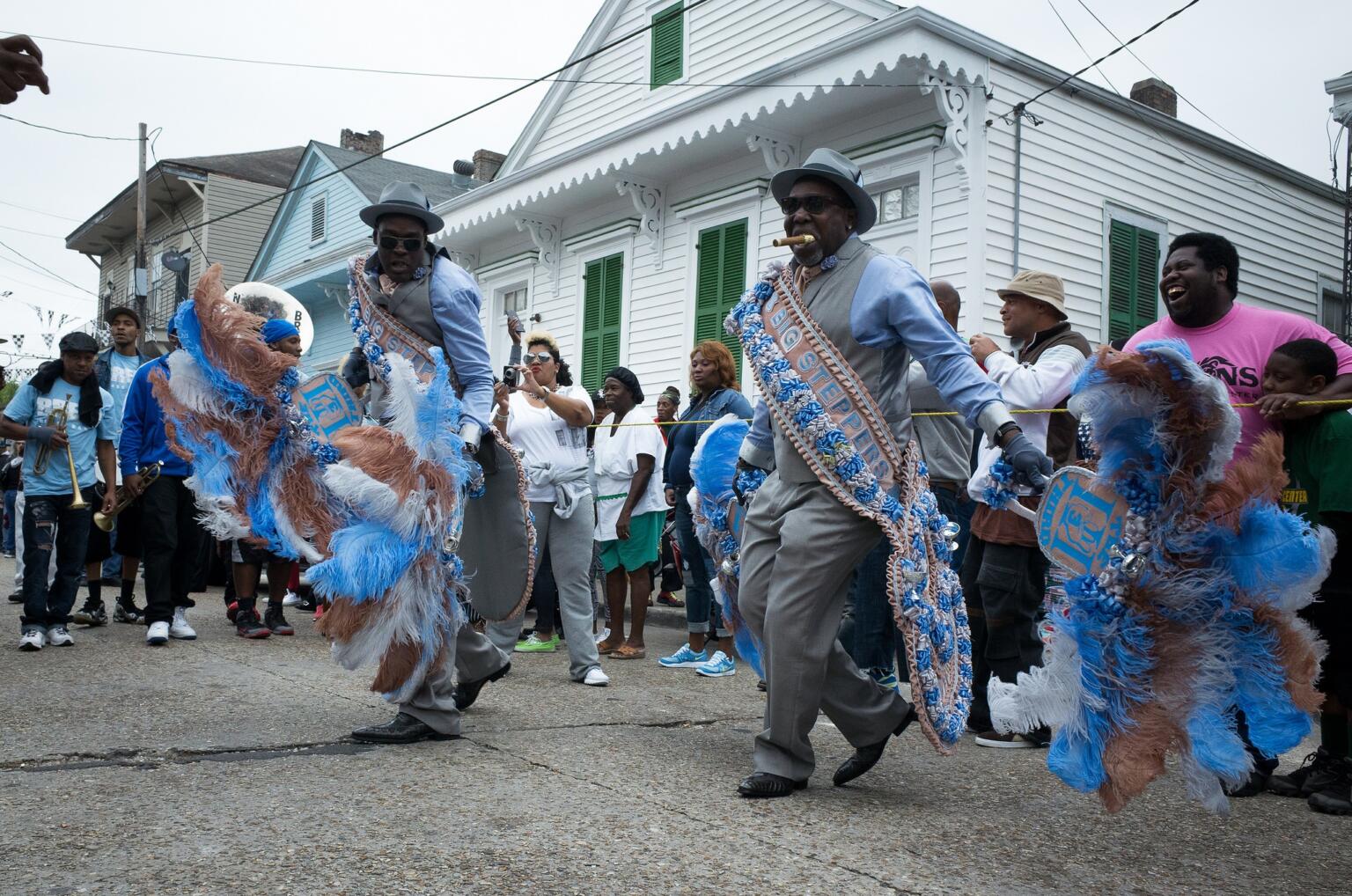
2. Experience the Latin side of the USA
There is no denying that the local Latin-American communities have had a huge influence on American culture. So prevalent are Latino ethnicities that one day more Americans will speak Spanish than English.
Join the conversation; visit the likes of Miami, San Antonio, or stay in Los Angeles and feel the Latin vibes. Little Havana in Miami is particularly unique.
3. Explore the many worlds of New York City
New York is one of the most culturally diverse places in the world and is an anthropological wonder. There’s a reason why many people consider it to be the center of the world. And if you really want to meet others who are also feeling the city’s magic for the first time, stay in one of NYC’s best hostels .
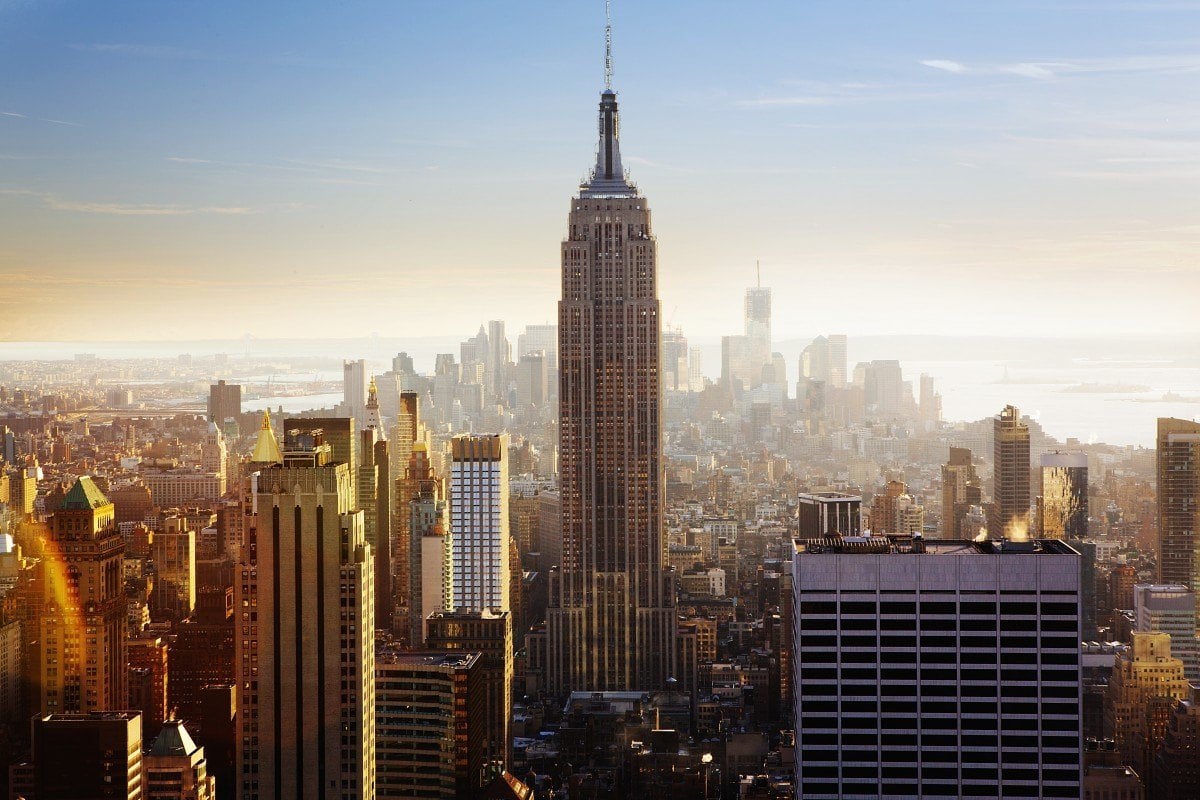
4. Smoke some legal weed!
Marijuana is legal in more than a dozen states, which means one of the best things to do while backpacking the US is to get stoned . Especially if you’re coming from a country with limited access to this fantastic plant, you’ll be truly impressed by the sheer variety and quality of American weed. California and Colorado are both A+ choices for the best vibes and shops.
5. Drive the Pacific Coast Highway
It’s the stuff (California) dreams are made of: the mystical ocean and the road that runs next to it. A road trip on the California Coast is hands down one the most romantic things to do in the USA and will probably be the first of many bucket list locations.
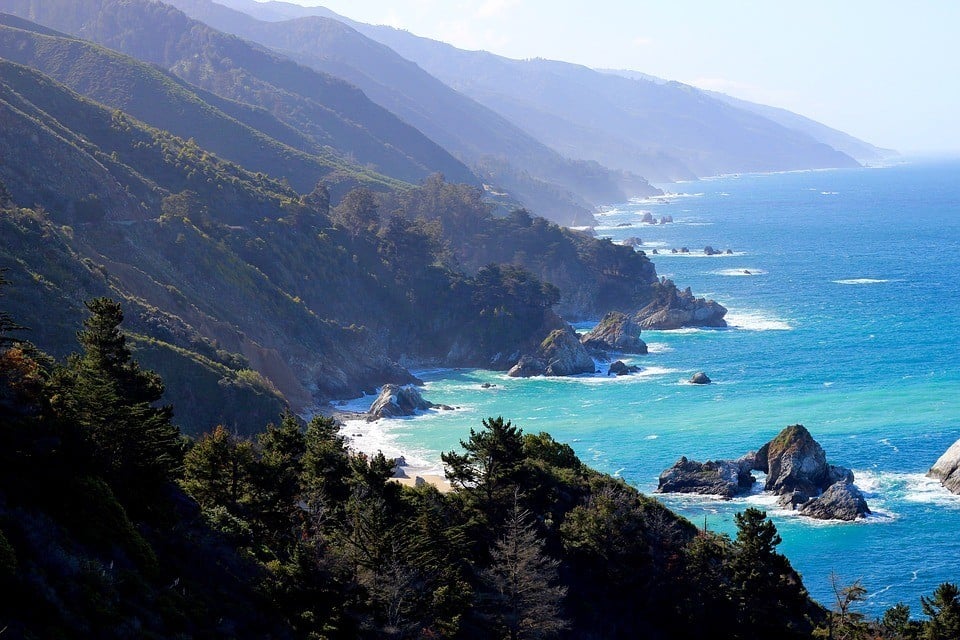
6. Learn about the history of the USA in DC
Washington D.C. is the federal capital of this great land and an arc of enormous historical value. It hosts many of the best museums and national monuments in the country, most of which are, crucially, free!
7. Visit the desert
Some of the most beautiful landscapes in America are its bleak and arid desert regions. For all their desolation, Southwest deserts are indescribably beautiful and incomparable to anything else. If there’s one region that you must, it’s the iconic desert of the Southwest .
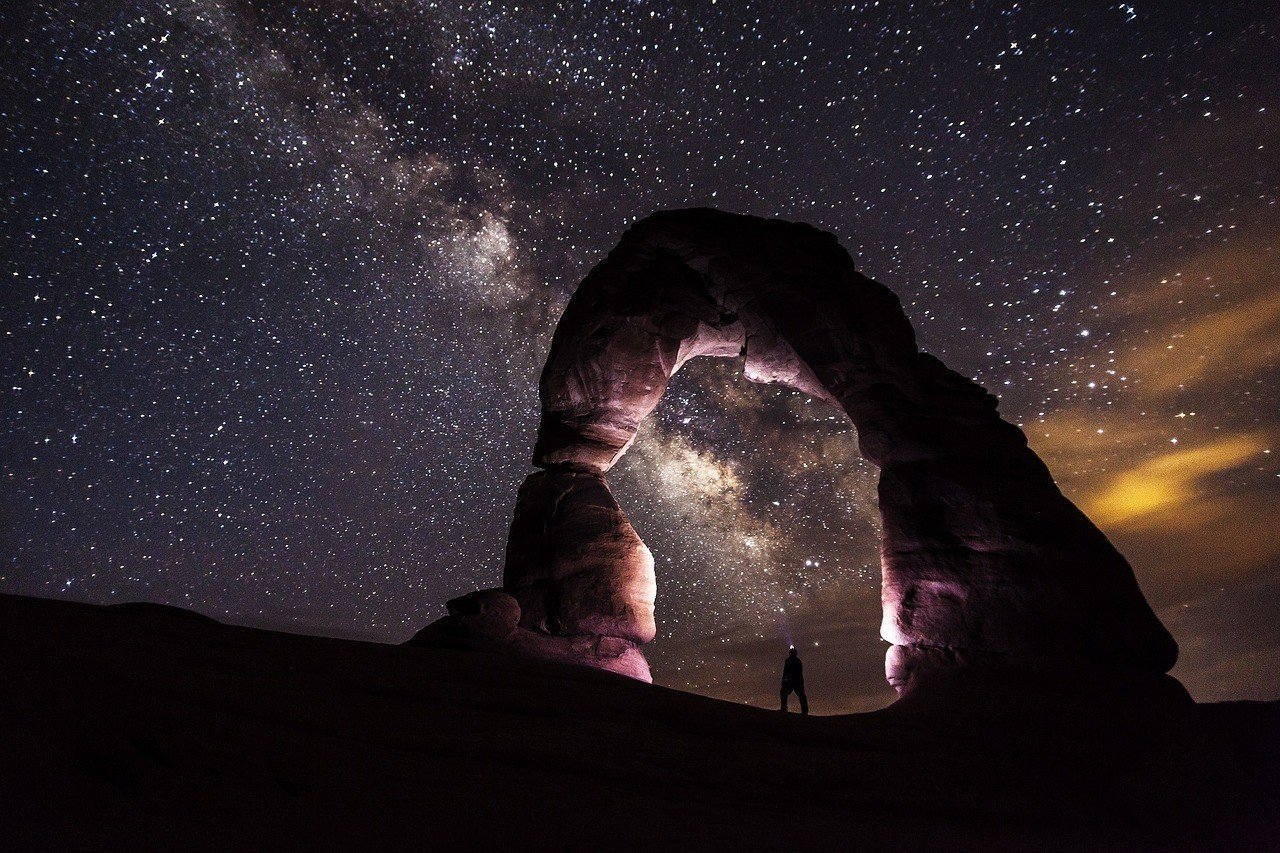
8. Go green in the Pacific Northwest
Both Oregon and Washington are green in many senses of the word. They’re eco-friendly, love to smoke (legal) marijuana, and are covered by some of the lushest woods in the country. With a myriad of waterfalls and a volcano here and there, this an American Arcadia.
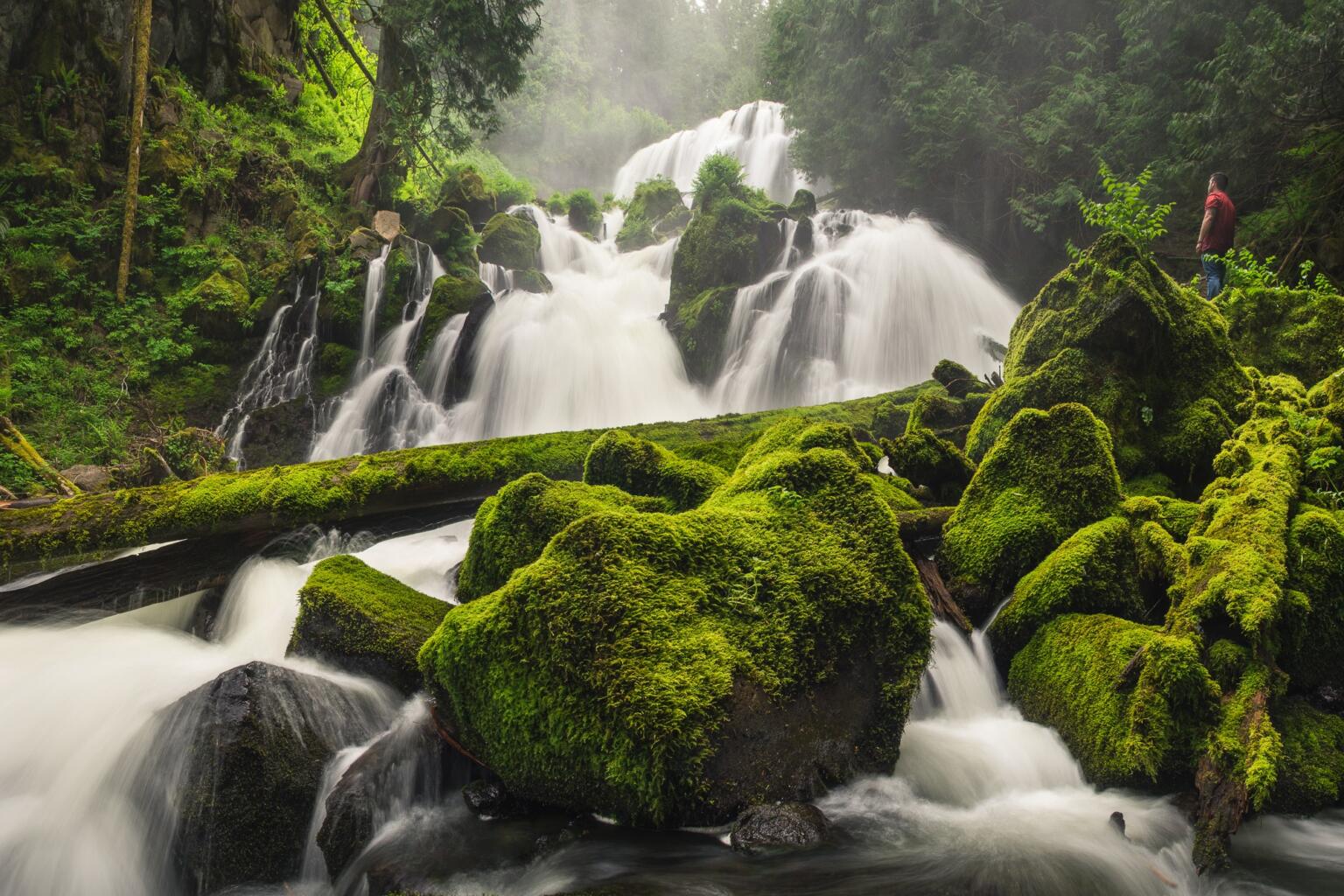
9. Visit one of the more distant states
Not many people – including most Americans – make it all the way to Hawaii or Alaska. If they were able to though, they would be greeted by some of the most paradisiacal and epic scenery in the world. If you make it to either, you’re one lucky bastard.
10. Find the best BBQ
It may be one of the few “real” American foods, but BBQ is all we really need. The meats are tender, the sauces are masterpieces, and the sides are copious. Go on a great American road trip in search of the best BBQs in the US and see which regional variety suits you best.
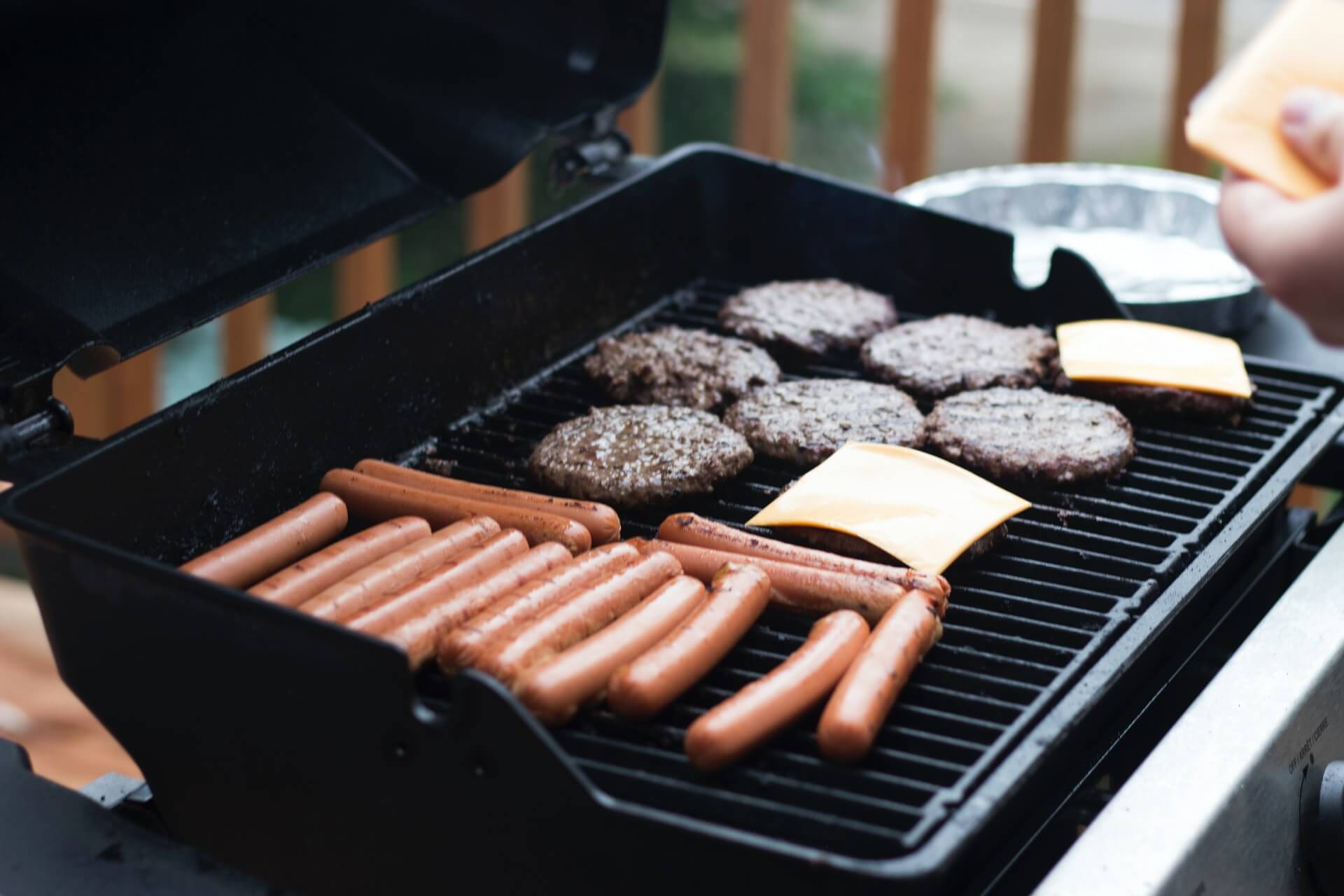
Wanna know how to pack like a pro? Well for a start you need the right gear….
These are packing cubes for the globetrotters and compression sacks for the real adventurers – these babies are a traveller’s best kept secret. They organise yo’ packing and minimise volume too so you can pack MORE.
Or, y’know… you can stick to just chucking it all in your backpack…
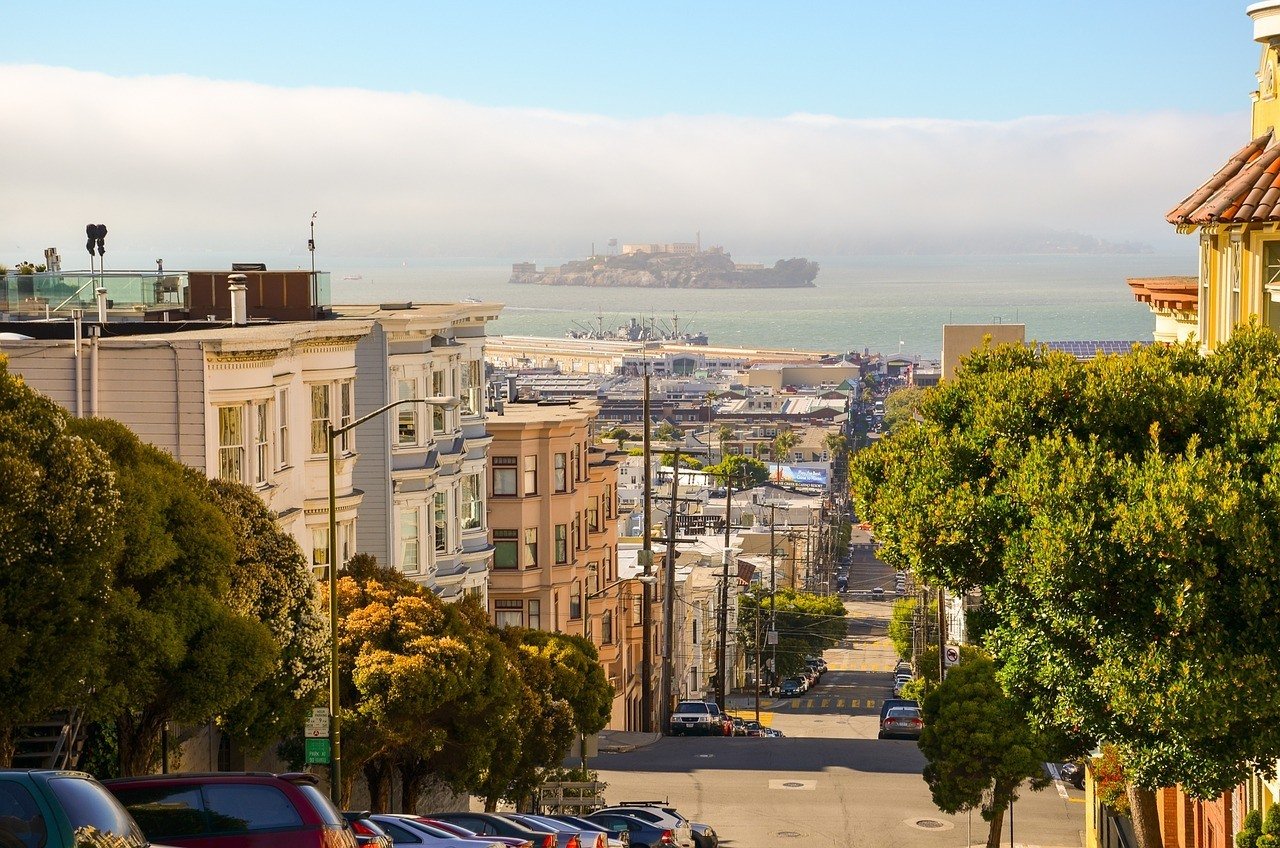
The USA is an enormous country with an enormous amount of accommodation. Everything from hotels to B&Bs to hostels to beach bungalows can be booked while visiting.
Throw in a huge array of unique lodgings: stay in a castle , treehouses, yurts, houseboats, and farm stays, plus with all the campgrounds you won’t lack of options.
- Hotels – usually not my go-to choice because they are often sterile and sometimes unfriendly places, not to mention expensive. While staying in a good budget American hotel may be the only choice sometimes, I’d prefer the alternatives.
- Motels/Roadhouses – these are budget versions of hotels that are usually good for quick overnights. They are very basic and sometimes really grimy but it’s still a roof over your head.
- Hostels – American hostels aren’t exactly famous for their quality or reasonable prices. That being said, there are still lots of great hostels in the USA . Most will be in the larger cities, like NYC, LA, SF, and Miami Beach.
- Airbnb – One of my favorite forms of accommodation in the US; booking an Airbnb is probably the best overall choice. Competitively priced and usually of excellent quality.
- Campgrounds – Can be quite diverse, from primitive backcountry sites to full-on glamping. Prices also fluctuate depending on provided amenities – e.g. showers, kitchen – and whether you need to hook up your RV to power/waste disposal. Basic campsites are often free to use but sometimes require a permit. Read up on your campsite; some are glamorous and others may require you to bring your own water.
- Couchsurfing – It’s still one of the best ways to go backpacking in the USA with no money! Ask friends of friends if you can crash, perfect your Couchsurfing profile, learn how to make a killer meal for your hosts; these are ways to succeed at Couchsurfing .
Best Places to Stay in the USA
There are a lot of options when it comes to lodging. To find the best places to stay in US cities it’s worth doing some research beforehand:
Camping in the USA
Camping is one of the great American pastimes and something that nearly every resident has done once in their life. It’s one of the best things to do in the USA, because it’s fun and cheap too! Some of the best camping is in Colorado though you can find them all over the US.
Camping in the USA can be done in many places: at a beach, in the woods, in the mountains, or just in someone’s backyard. Urban camping is also becoming quite popular and is an excellent way to experience a city without having to spend boatloads on a lodge.
For all campgrounds outside the main urban areas, you will, 99% of the time, need a car to reach them. You’ll also need to make sure you have your road trip packing list kitted out with the proper gear.
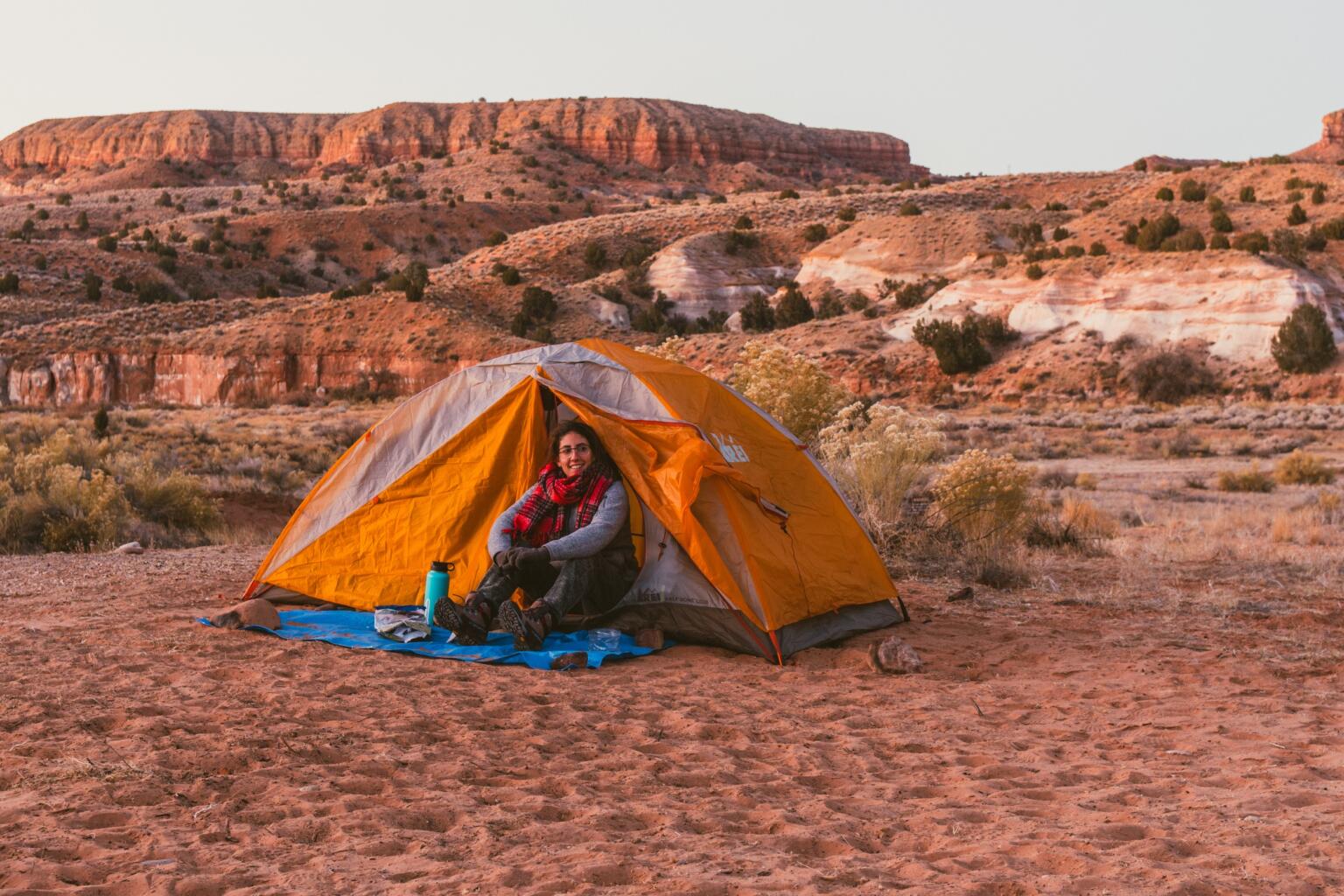
Campgrounds range in amenities and will be more or less expensive depending on what services are there. If you’re staying at a campground that offers showers, electricity, or a mess hall, you’ll obviously have to pay more ($10-$30 per site, not person). You’ll have to pay more if you have an RV because they take up more space, require waste disposal, and consume more electricity.
If you want to spend less on camping, we suggest going to the state parks . These are usually very affordable ($5) and offer enough amenities, like an outdoor toilet and running water, to ensure you’re comfortable. You will sometimes have to fill out a permit at one of these and often campsites are first-come-first-served, which means that popular ones fill up quickly.
If you really want to go cheap, then take advantage of the many primitive sites in the US, also known as BLM land. These offer nothing in the way of infrastructure, so you’ll have to rely on your own means, but are totally free.
Some states have much more expensive camping, California and Hawaii being the most expensive, so keep this in mind! That said, camping is much cheaper and more fun than staying in a hotel.
- Camping in Hawaii
- Camping in Michigan
- Camping in Arizona
- Camping in California
- Camping in Florida
- Camping in Shenandoah, Virginia
- Camping in Indiana
- Camping in Maryland
The USA ain’t exactly cheap folks – this is already one of the most expensive countries in the world and isn’t getting any more affordable anytime soon.
That being said, there ARE ways to travel on a budget in the US and you CAN have a great time . You’ll need to arm yourself with some considerable knowledge though and know the best ways to save a buck while traveling in the USA.
There are many forms of travel in the USA and each has its own price tag attached. You could be a shoestring backpacker and get by for relatively little money or you could spend everything you have on a bender of a holiday.
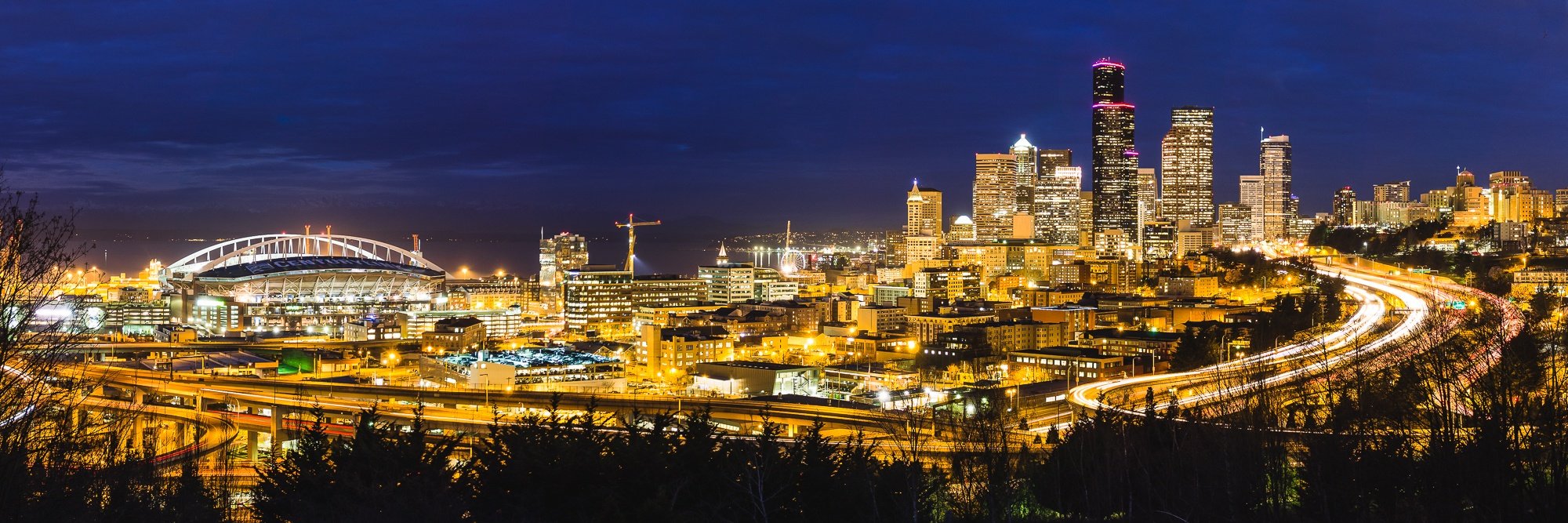
A lower daily budget for visiting the United States will be around $50-$70. This will get you a dorm bed, groceries, bus tickets, and some extra spending money.
Let’s take a closer look at some of your USA expenses:
- Lodging – While there are plenty of hotels and rental apartments in the USA, there are not so many hostels. Outside of the major cities, you’ll probably only find a handful of backpacker lodges, which means your cheap accommodation will be limited. If you really want to save money while backpacking America, you’ll need to camp.
- Food/Drink – This expense really depends on where you are – a burger and beer may be less than $10 in one place and over $30 in another. Dining out in larger cities, particularly in Downtown , is always more expensive. Dumpster diving is also very much possible all over the US.
- Transport – If you stick to public transport, you can probably get around for around $5/day. If you want to do your own Great American road trip though, you’ll need a car, which means extra expenses for gas, insurance, and renting. Car/campervan rentals range from $30-$150 per day.
- Leisure – Cultural attractions, like museums, galleries, theme parks etc. usually cost money to enter. Hiking, walking around, and visiting parks/beaches are almost always free.
United States Travel Guide – A Daily Budget in the US
Disclaimer: While prices in the US may vary depending upon what region you’re in, this is a good general overview of what prices will look like overall. Be sure to check Google Maps reviews to find the cheapest eats around whenever you roll into a new place.
If you’re wondering how much would it cost to travel across the US, then here is a breakdown of various costs:
Money in the USA
Card is king in the US, and you can expect all big brands to work pretty much everywhere. Visa is the most widely used type of card in the US and can be used virtually anywhere.

Keep in mind that ATMs will charge a fee, which can vary depending on the branch. If your country offers an international fee-free card, it’s definitely worth looking into before you travel to the USA.
US bills are all green with various former presidents on them. Coins are also still commonly used in the US and people will often give you exact change. The major exception to this is if you plan on partaking in drug tourism. Even legal stores often cannot accept cards due to nuanced legal issues.
Tipping in the US
Tipping is expected at US restaurants as workers are not paid the minimum hourly wage, unlike in Europe. It’s expected that you tip around 10-15% of your total bill, though this is social etiquette and not a law.
If you get a service like a massage or a haircut, tipping is also typically expected. Workers in the US face many more difficulties than those in other developed countries, so tipping can really make or break an employee’s shift.
Travel in the USA with Transferwise!
For all matters of finance and accounting on the road, I strongly recommend Wise – the platform formerly known as Transferwise!
Our favorite online platform for holding funds, transferring money, and even paying for goods, Wise is 100% FREE with considerably lower fees than Paypal or traditional banks. But the real question is… is it better than Western Union? Yes, it most certainly is.
Travel Tips – the USA on a Budget
If you’re trying to go backpacking in the USA with no money or very little of it, you’d better use some of these travel hacks:
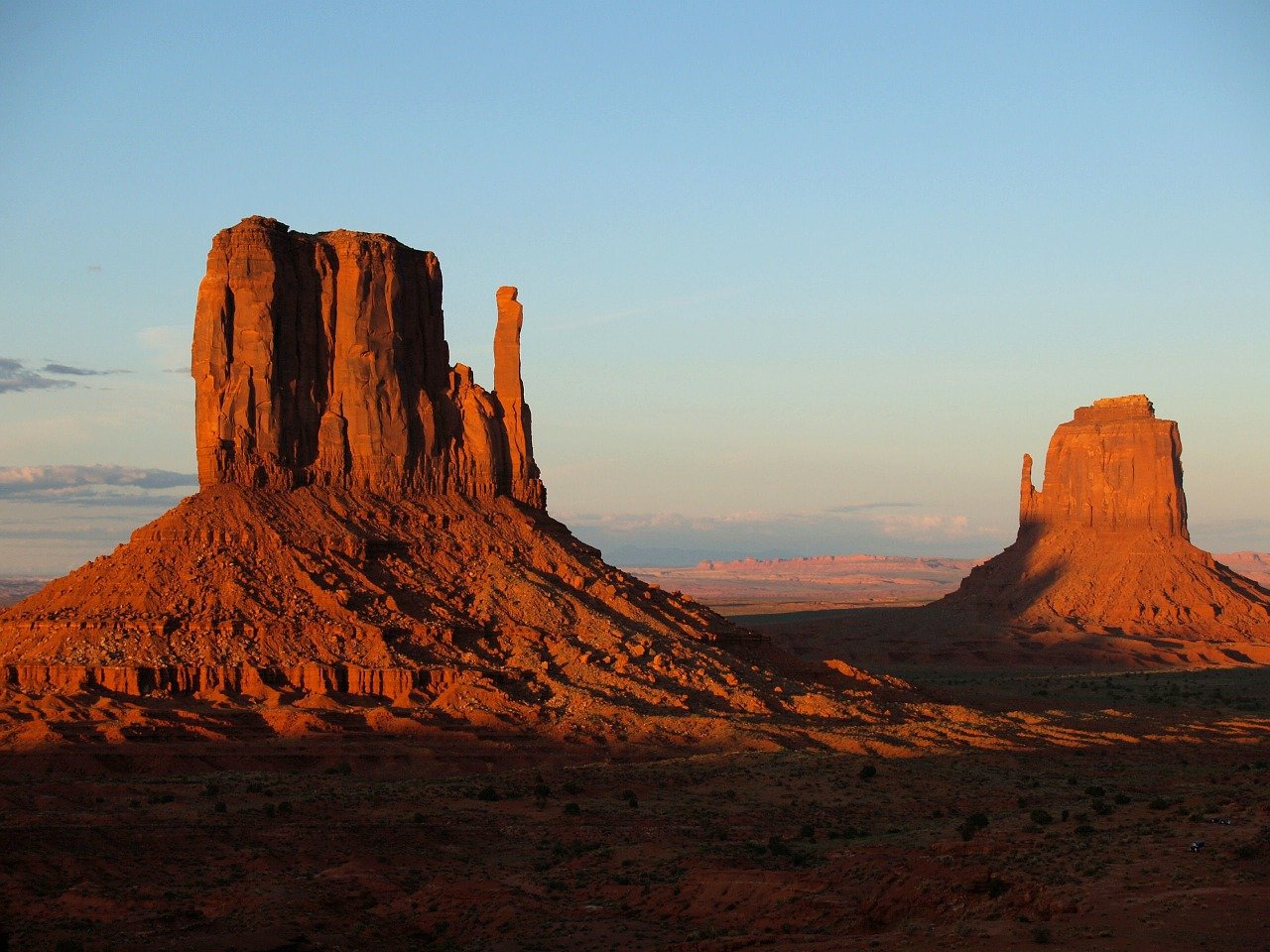
- Camp – While many campsites in the USA charge fees, there’s plenty of places where you can camp for free. And of course there’s always stealth camping. Just make sure you have some good backpacking gear !
- Cook your own food – Eating out every night at restaurants and drinking cappuccinos at cafes all the time; these are sure ways to waste money. Get a good backpacking stove and stay at hostels with free coffee.
- Take advantage of free camping – From backcountry sites to state parks to parking a campervan in a Walmart parking lot, there’s lots of free camping in the USA, particularly out west. Do some research on the places nearest you.
- Use vehicle relocation services – Relocation services are simple – drive a car from point A to point B and you’ll get to use the car for free or very little money. Use websites like immova and Cruise America to get started.
- Don’t pay full price – A wise man once said: “only suckers pay full price.” Take advantage of the numerous deals and specials you find around town and work the system. Take advantage of free attractions and eat during happy hour. Just try not to go too far and become an irritating cheapass.
- Learn how to travel cheap – With a bit of dirtbaggery, it is possible to backpack the USA on $10 a day.
- Get off the beaten path: The best places in the US are those with the least amount of people, with NYC being a glaring exception. If you’re willing to venture, I promise that you’ll find some incredible hidden gems in Florida !
Why You Should Travel to the USA with a Water Bottle
Plastic washes up on even the most pristine beaches… so do your part and keep the Big Blue beautiful!
You aren’t going to save the world overnight, but you can be part of the solution and not the problem. When you travel to some of the most beautiful places in the USA, you come to realize the full extent of the plastic problem. So I hope you become more inspired to continue being a responsible traveler.
Plus, now you won’t be buying overpriced bottles of water from the supermarkets either! Travel with a filtered water bottle instead and never waste a cent nor a turtle’s life again.

Drink water from ANYWHERE. The Grayl Geopress is the worlds leading filtered water bottle protecting you from all manner of waterborne nasties.
Single-use plastic bottles are a MASSIVE threat to marine life. Be a part of the solution and travel with a filter water bottle. Save money and the environment!
We’ve tested the Geopress rigorously from the icy heights of Pakistan to the tropical jungles of Bali, and can confirm: it’s the best water bottle you’ll ever buy!
There are a lot of different climates in the USA; each one determines when and where you ought to visit.
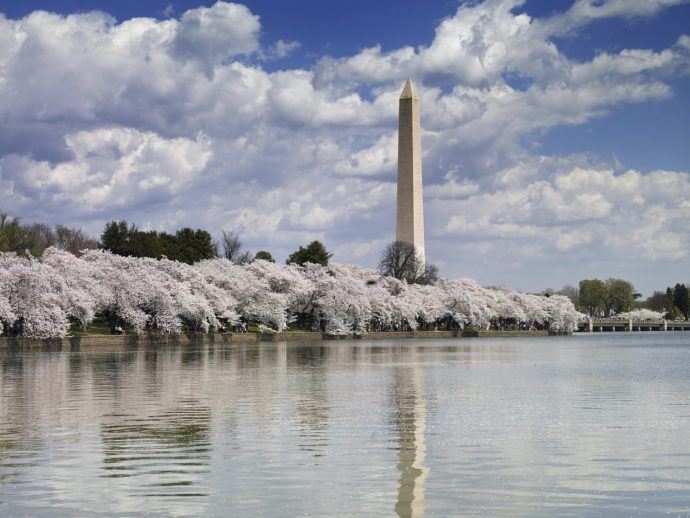
Alaska and Hawaii are the odd men out. Alaska doesn’t emerge from winter until May although the Northern Lights are peaking. Hawaii is getting dumped on by rain.
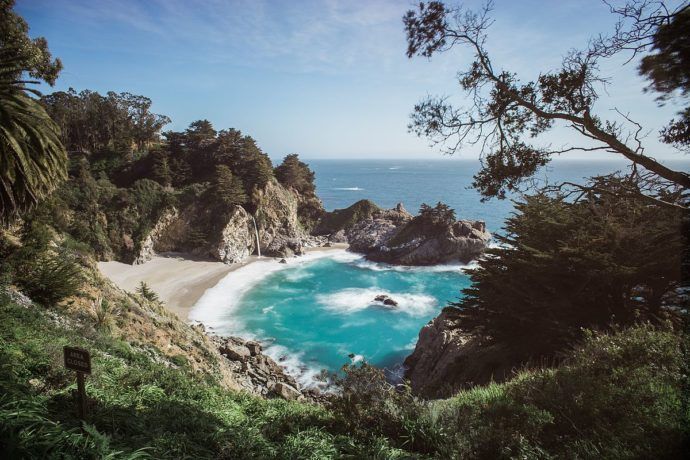
The Midwest and East Coast start to get humid while the South is in the midst of the hot, rainy season (hurricanes possible). Texas and the Southwest are a furnace at this time and it is tornado season in Middle America. Hawaii is wrapping up its rainy own season.
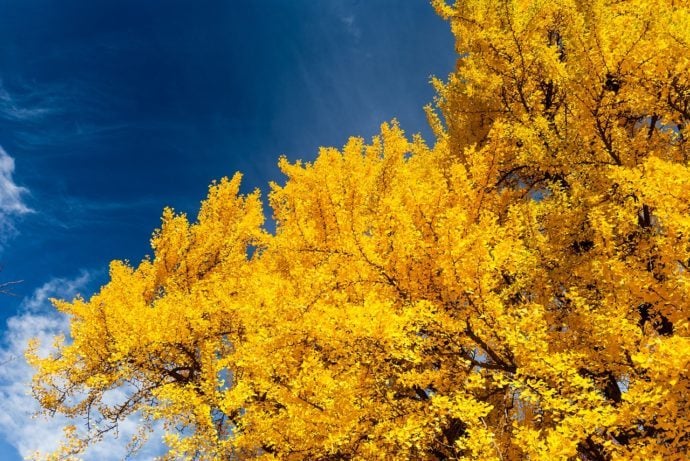
The Rockies, Midwest, and Great Plains start to receive dustings of snow. If it’s been a dry year, California is still battling forest fires.
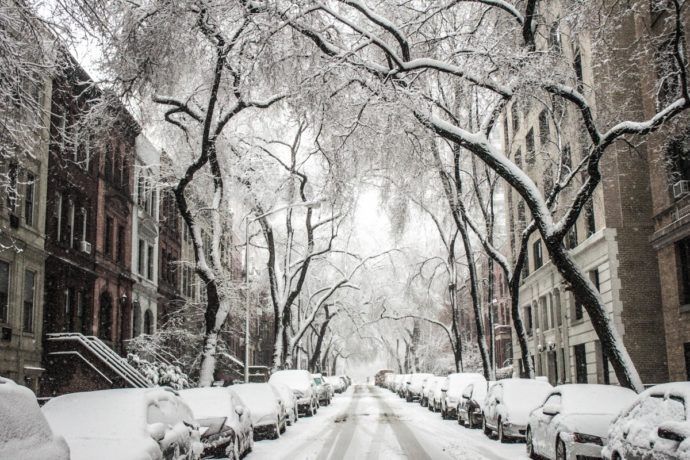
Most likely, people are fleeing to Florida, the South, and Hawaii during this time as they’re warm and dry. Beware of prices in these regions during this time.
Holidays and Festivals in the USA

So Americans love to party, but where are the absolute best parties to be found? At the festivals of course!
There are hundreds, maybe thousands of celebrations going on year-round in the US. Some of these are giant pits of debauchery; others are a bit tamer and family-friendly.
Start out with these holidays and festivals in the USA next time you’re there:
- Mardi Gras (February/March) – The United States’ own version of Carnival. Held in New Orleans, “Fat Tuesday” is an all-out celebration featuring floats, parades, nudity, drinking, and cultural rituals. If you like energy, this is one of the best places in the USA to be.
- St Patrick’s Day (March 17th) – Celebration of all things Irish! Celtic strongholds, like Boston and New York, go nuts for this holiday and there’s quite a bit of green and drinking around town. Pretty much every city in the USA uses this day as an excuse to day drink though.
- Coachella (April) – An extravagant music festival that has become wildly popular in recent years. Tickets and lodging are very expensive. Held near Palm Springs, California, this one kicks off the rest of the music festivals. Consider other big ones like Bonnaroo in Tennessee or Lollapalooza in Chicago. Perhaps Governor’s Island in NYC or Sasquatch in Seattle? Many cities, especially on the West Coast, have music festivals big and small all summer.
- EDC (May) – The largest electronic music festival in the country. Held in Las Vegas, Nevada. It used to be in LA which is still the best place in the US for all things electronic music. Miami, NYC, and Vegas fall close behind. SF has a good vibe too.
- Independence Day (July 4th) – The most patriotic holiday of the year! Everyone drinks, barbecues, goes to the beach, and just fucks off for the day.
- Burning Man (August) – One of the weirdest and craziest things you can do in the USA is attending this free-spirited gathering. Notorious for its “anything goes” attitude, Burning Man is a playground for alternative types. It’s not as anti-commercial as it once was, but it’s still a unique experience. You’ll find similar vibes (though much smaller festivals, considering Burning Man is a CITY) throughout California.
- Halloween (October 31st) – A festival that was originally meant for children but has turned into a huge party for adults. Costumes and spooky decorations mandatory.
- Thanksgiving (last Thursday of November) – A day of feasting that is meant to celebrate the USA’s humble roots (we won’t get into the First Nation controversies). Usually a big family holiday.
What to Pack for the USA
On every adventure, there are 6 things I never go traveling without. Be sure to add these to your backpacking packing list for the USA:

Snoring dorm-mates can ruin your nights rest and seriously damage the hostel experience. This is why I always travel with a pack of decent ear plugs.

Hanging Laundry Bag
Trust us, this is an absolute game changer. Super compact, a hanging mesh laundry bag stops your dirty clothes from stinking, you don’t know how much you need one of these… so just get it, thank us later.

Sea To Summit Micro Towel
Hostel towels are scummy and take forever to dry. Microfibre towels dry quickly, are compact, lightweight, and can be used as a blanket or yoga mat if need be.

Monopoly Deal
Forget about Poker! Monopoly Deal is the single best travel card game that we have ever played. Works with 2-5 players and guarantees happy days.

Grayl Geopress Water Bottle
Always travel with a water bottle! They save you money and reduce your plastic footprint on our planet. The Grayl Geopress acts as a purifier AND temperature regulator. Boom!
This is a tricky subject because America seems to defy common sense in a lot of ways.
For being one of the world’s most wealthy and powerful nations, the USA suffers from an unacceptable violent crime rate (ranked 143rd out of 230). Its Global Peace Index is 122 out of 163, which puts it behind Kenya, El Salvador, and Bangladesh.
Social stratification is rampant throughout society. While some people are living like royalty, some are getting by on less than $2/day – that’s comparable to living in Nicaragua . It’s no wonder theft and other crimes are still an endemic issue in poorer areas.

Mass shootings are a genuine and pervasive threat in society, particularly in schools, large buildings, or big events. Random violence can occur any time, even in “safe” areas, even comparable to the likes of South America.
Racism is also very real, and vast swaths of the nation unfortunately still support white supremacy.
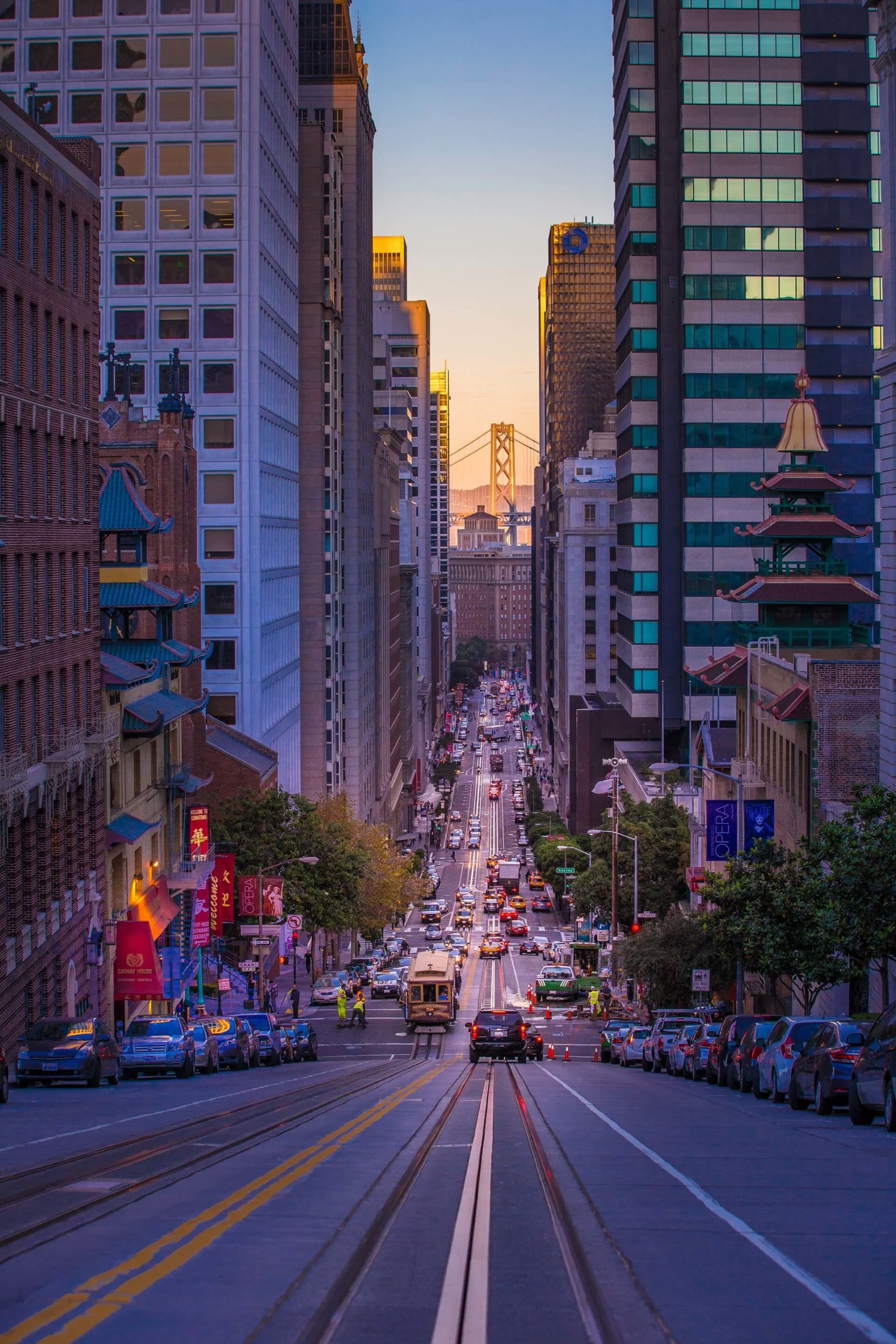
I’m hard on the USA because I’m from there. If I’m being honest, it can be a hectic place and I often feel safer in Pakistan.
That being said, America is a (mostly) safe place , at least for tourists.
Most of the worst crimes in the country happen in remote neighborhoods where tourists have no reason to go to anyway. There is petty theft in the busier areas, particularly involving car break-ins and pickpocketing, but these can be avoided by standard safe traveling practices .
Outside of certain areas, which will be obvious to you by the numerous patrolling policemen, the odds of you being a victim are pretty minimal . If you’re in the countryside, you’re more likely to be killed by bison in heat or a freak tornado.
Speaking of freak accidents, the US is the only developed nation on Earth without universal healthcare . An ambulance ride alone can cost $2000, and a day in a hospital for even a minor issue will easily run over $10,000. So more than almost any other country, you’re really going to want to consider travel insurance that covers the US.
So, if you’re thinking about backpacking in the USA alone or with a group, regardless, just know that you’ll be safe as a tourist. The crime, though unfortunate, is contained. And at the end of the day, the government wants to keep you safe.
- Is Los Angeles Safe to Visit?
- Is Miami Safe to Visit?
- Is New York City Safe to Visit?
- Is Seattle Safe to Visit?
- Is Hawaii Safe to Visit?
- Is New Orleans Safe to Visit?
- Is San Francisco Safe to Visit?
- Is Chicago Safe to Visit?
Sex, Drugs, and Rock ‘n’ Roll in America
Americans love to party. And when I say love, I mean need to party.
American culture is defined by blood, sweat, and tears, followed by a shot of whiskey. The expression “work hard, play hard” is used here a lot and there are few things more rewarding than spending your hard-earned money on a night out.
Americans party a lot and in many different ways. Go out in Portland, Oregon and you’ll find people sitting in a pub or dive bar, casually drinking craft beers while they shoot the shit.
Hit Downtown San Francisco and suddenly people are networking at underground concerts. Visit Miami and be ready for mega nightclubs, dance bars, and copious amounts of cocaine.
Americans drink all kinds of booze. Thanks to the country’s cosmopolitanism and booming economy, there’s just about every type of alcohol imaginable in the USA . All the staples are here: vodka, rum, gin, etc – though certain regions do it better than others.
For example, whiskey is quite good in Appalachia as this is where bourbon was created. On the other hand, the southern states have some really good tequila and mezcal, mostly because of their proximity to Mexico.
The best wine in America is found on the West Coast. California is known for its big bold grapes like chardonnays, cabs, and merlots. Oregon wine is more delicate and the pinots here are some of the best in the world.
Americans also love drugs , probably a little too much. Weed, coke, MDMA, acid, and a handful more are all easy drugs to find on the road in the USA. In fact, marijuana is legal in numerous states with more joining the party every year.
Some cities actually struggle with drug problems. The opioid epidemic has swept the nation; meth is a real problem in the Southwest and the heroin abuse in Seattle is shocking sometimes, so be aware of who you’re doing drugs with.
Traveling without insurance would be risky. Especially here, you need good insurance for the USA before you head off on an adventure.
This is particularly ESSENTIAL in the USA as its for-profit healthcare system means you could be given a 5 figure bill for even minor injuries.
I have been using World Nomads for some time now and made a few claims over the years. They’re easy to use, professional, and relatively affordable. They may also let you buy or extend a policy once you’ve started your trip and are already abroad which is super handy.
ALWAYS sort out your backpacker insurance before your trip. There’s plenty to choose from in that department, but a good place to start is Safety Wing .
They offer month-to-month payments, no lock-in contracts, and require absolutely no itineraries: that’s the exact kind of insurance long-term travellers and digital nomads need.

SafetyWing is cheap, easy, and admin-free: just sign up lickety-split so you can get back to it!
Click the button below to learn more about SafetyWing’s setup or read our insider review for the full tasty scoop.
Whilst there are only two US visa types for tourists, it can be a little confusing sorting through the necessary qualifications and processes. US tourist visa requirements do change regularly so please be sure to always check with the official government website .
Foreigners can enter the United States either via the Visa Waiver Program or by acquiring an official US tourist visa at an embassy.
Entry Requirements for the USA
Applicants from 40 different countries can enter the United States visa-free for a period of 90 days. They will need to apply for an ESTA (Electronic System for Travel Authorization) beforehand. Note that an ESTA is not an actual visa for the US, per se (it’s a clearance).
Each nationality will require a different set of documents to travel to the USA using this process, so be sure to check with your local embassy on what you need.
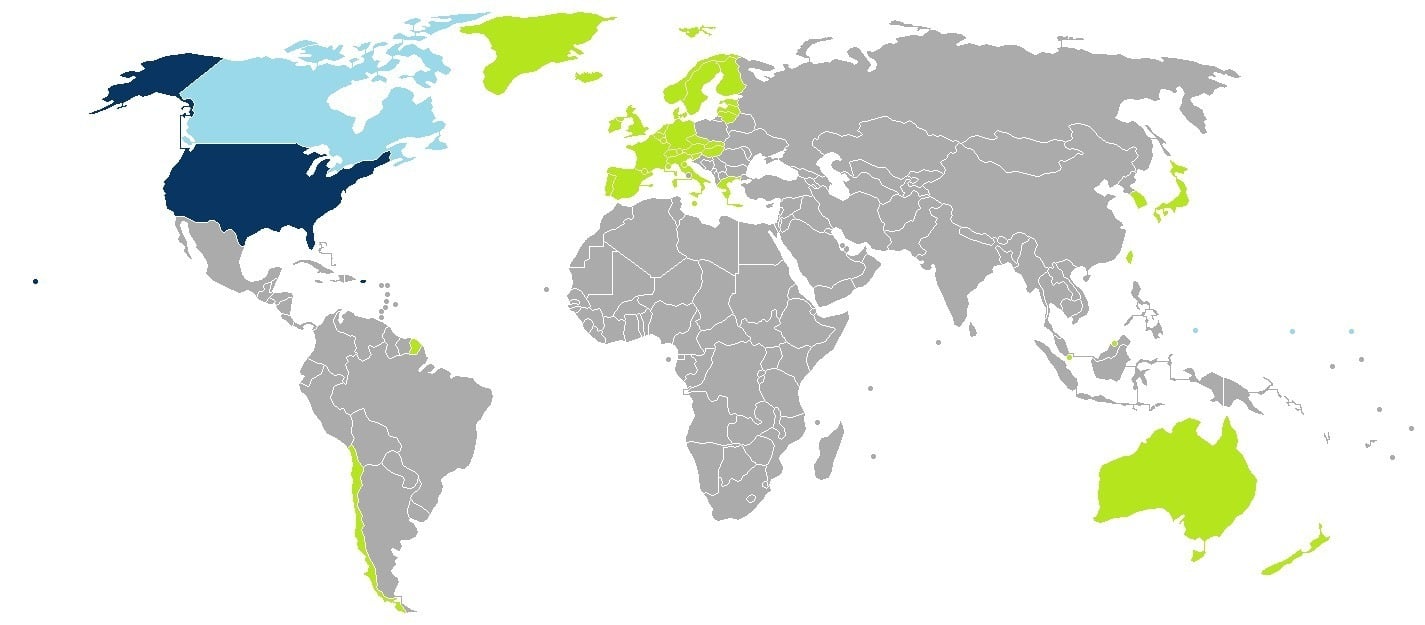
If you are granted an ESTA, which is valid for 2 years, you are not actually guaranteed entry into the USA. Each arrival is assessed on a case-by-case basis – this means that you will be at the mercy of the customs agent every time you travel to the US.
If you’re traveling to the USA for the first time, you may not get a lot of pushback from the customs agent. But if this is your second or third time visiting the US in the course of a single ESTA, you could get grilled. (My Italian girlfriend was banned from entering the States for a period 6 months after she visited 3 times in the course of a year.)
Regular US Tourist Visa Applications
All other countries that do not qualify for the Visa Waiver Program must apply for a regular visa for the US . The requirements of this US tourist visa are much stricter than the VWP and will often require conditions like in-person interviews and background checks.
Again, the documents needed to travel to the USA under this visa vary on a case-by-case basis so I cannot tell you what you need. Applicants need to contact the nearest embassy to acquire this info.
The reality is that if you are from a “poor” country it will be very difficult to get a US tourist visa even if your bank account is the same as someone from an EU nation. This doesn’t mean it’s impossible, but you should demonstrate a good travel history and strong ties to your home country for the best possible chance at success.

Get 15% OFF when you book through our link — and support the site you love so dearly 😉
Booking.com is quickly becoming our go-to for accommodation. From cheap hostels to stylish homestays and nice hotels, they’ve got it all!
How you choose to get around will largely depend on your intended USA backpacking itinerary. If you’re just visiting a few American destinations that are in a specific region, you may get by on public transport or with your own car. If you’re short on time and want to see a lot though, you may end up doing like locals do. Domestic travel statistics show that most travelers (59%) prefer flying.
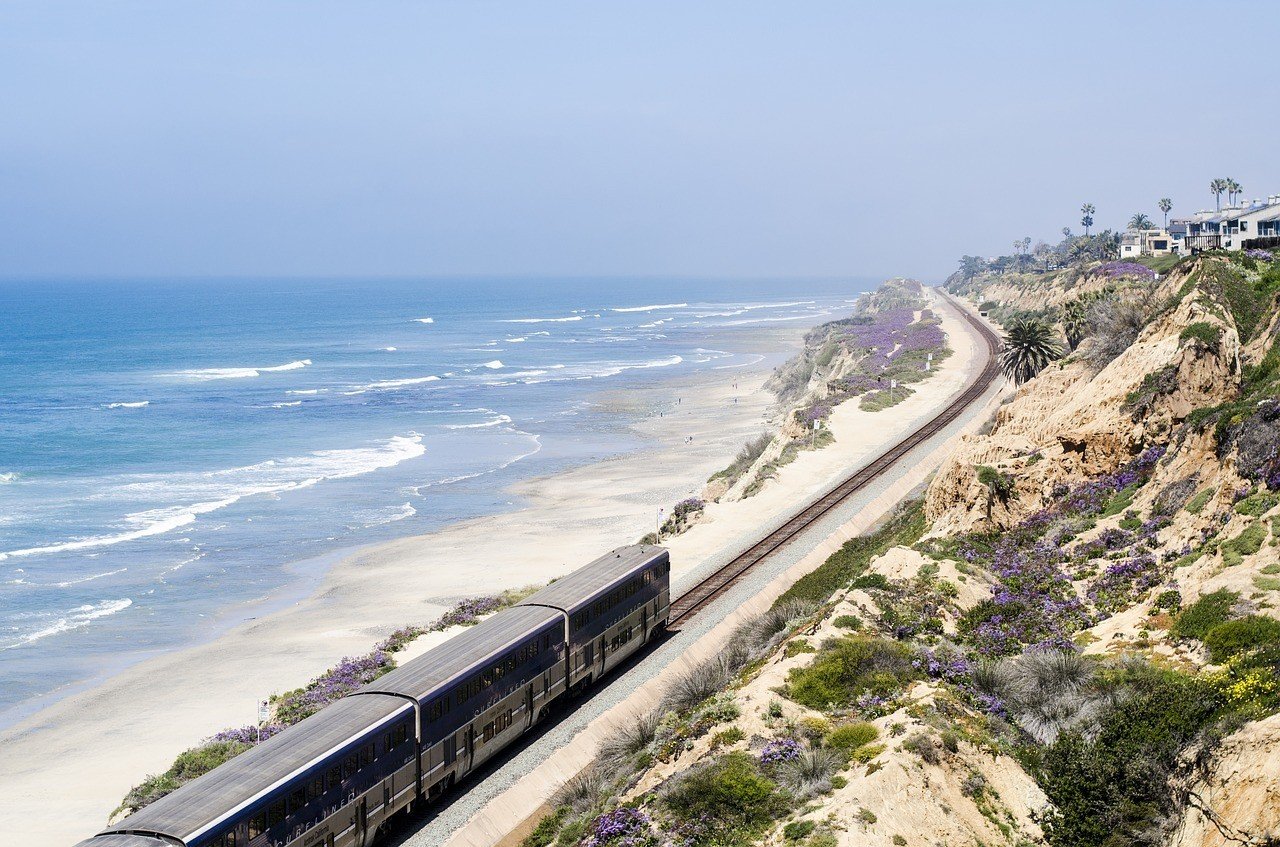
Buses are ubiquitous in America and can transport you to just about any major city or town. Some major companies include Greyhound, Boltbus, and Megabus. Remember that America is a really big place though so don’t underestimate distances. Also, know that buses stop often – thus extending drive times.
Full disclosure, America has terrible public transport; I’ve been on buses in Pakistan that undoubtedly provide better and less sketchy service. Unfortunately, local buses also tend to be associated with crime and unscrupulous activities.
Train travel in the USA is not like train travel in Europe. Trains here are very limited and are ultimately a huge luxury (expensive tickets).
That being said, the routes that do exist are often stunning. There are USA rail passes available for purchase with Amtrak.
Passenger vehicles are the preferred method of traveling in the USA and do offer the most flexibility. With your own car, you’ll get to go where you want, sleep where you want, and do what you want. Read the proceeding section for more information on renting a car in the USA.
Vanlife is perhaps the most ideal way to see the US, though it might be hard (or extremely expensive) to acquire an affordable one on a tourist visa.
Most people will fly at least once or twice within the United States. Getting from the East Coast to the West Coast is a 6-hour flight in itself, so if you want to see both LA and NYC this may be your only option. Book your tickets WELL in advance to save money.
Be aware that getting through security can be a real pain in the ass. Also beware of Spirit Airlines. They’re cheap for a reason and SIGNIFICANTLY worse than Europe’s RyanAir.
Yes, it is possible to hitchhike in America. However, unlike many places in the world, hitchhiking is illegal in most parts of the US. Police can and will arrest hitchhikers in many states.
Furthermore – although this sounds very anti-feminist – I would only recommend hitchhiking to males, and only to those who would know how to handle a worst case scenario: it has been associated with hundreds of murders and kidnappings.
The US is not South Asia, Oceania, or Europe. Hitchhiking is thought of as a homeless/criminal scene by most Americans, meaning most people will not stop unless someone is injured. And those that do may have ulterior motives. If you still want to give it a go, be extremely careful.
For reference, I’ve hitchhiked in India and Pakistan, yet even as a US citizen, would never do so in the US.
Renting a Car or Campervan in the USA
People who want to make their own Great American road trip will obviously need their own vehicle to do so. Driving in the USA will allow you the ultimate freedom and the chance to see many of its remote attractions and natural wonders.
There are dozens of car rental companies in the US that offer an exponential amount of deals. The cost of a road trip across America will obviously vary depending on a few factors:
- When you want to rent the car – Book earlier rather than later, outside of peak season.
- How long you have the car – you can get good deals for longer periods of time.
- What kind of car you rent – sedans will do the job but you’ll need SUVs for real adventures. SUVs will cost more to fill up.
- And how much is gas at the time – you’ll be using a lot of it.
We suggest doing your research ahead of time to find the best deal possible. Use rental car search engines to sort through the various car companies and find the right price. Make sure you also purchase a RentalCover.com policy to cover your vehicle against any common damages such as tires, windscreens, theft, and more at a fraction of the price you would pay at the rental desk.
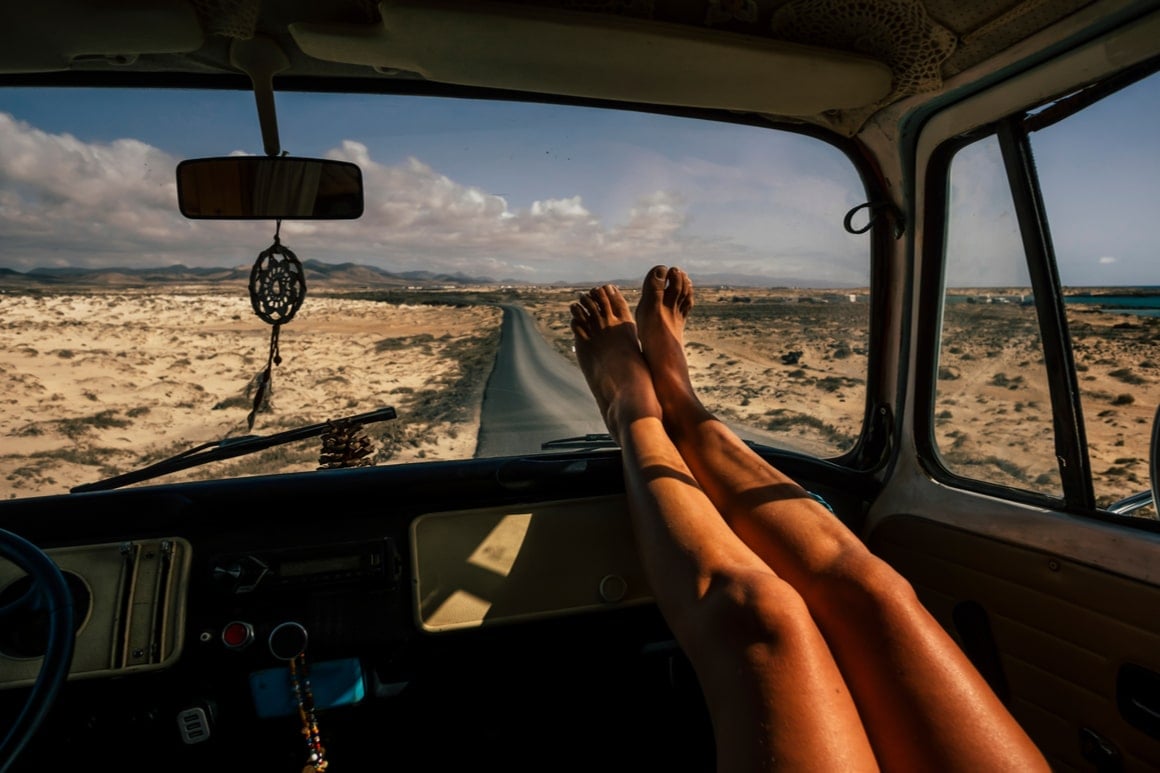
You can also rent an RV or campervan to live the vanlife , which means you don’t have to worry about packing camping gear. You will have to empty and refill the various waste compartments and water tanks though, which will require a visit to the proper facilities. RVs also cost more to rent, use more gas, and demand higher prices at campgrounds.
We suggest booking a campervan with Outdoorsy as they usually have a good selection and good prices. Better yet, Broke Backpacker readers also get a $40 with Outdoorsy! Just use the coupon code “BACKPACKER” when checking out.
We mentioned before that you can reach out to vehicle relocation services, like immova and Cruise America , as a way of saving heaps of cash on rentals. Pursue these as best you can as they can save you a lot of money. Availability is always limited though.
Other Things to Note when Renting a Car in the US
- Car insurance isn’t mandatory in the United States, but it’s a very good idea to have.
- Many credit card companies offer free car insurance if you book the car with the proper card. Call your credit card company for more information regarding terms and conditions.
- Use an American road trip planner app to plot routes. Some, like ViaMichelin , will give you estimated fuel consumption, indicate tolls, and show local attractions.
- NEVER USE YOUR PHONE WHILE DRIVING – there have been serious crackdowns in recent years and tickets being very expensive, it’s not worth putting your or anyone else’s life at risk.
- Drivers who are under the age of 25 will often be charged extra premiums for rental cars (they’re a reckless bunch). To avoid these extra fees, Autoslash suggests investing in AAA Auto Insurance prior to backpacking around the USA and then renting with Hertz. Hertz won’t charge drivers under 25 extra fees if they have AAA.
Onwards Travel from the USA
The USA takes up a pretty large chunk of the North American continent. Unless you’re planning to fly longer distances, there are only a few options for traveling from the US to a different country.
America’s northern neighbor and the butt of one too many jokes about mooses and maple syrup, Canada is an amazing country to visit . It’s colder than the USA and people talk a little funny but it is far safer, more diverse, and arguably even more beautiful.
The Canadian Rocky Mountains are epic and the rugged coastline of British Columbia and Newfoundland are equally impressive. When you’re not outdoors, the cities of Vancouver , Montreal, and Toronto are among the coolest metros in North America as well.
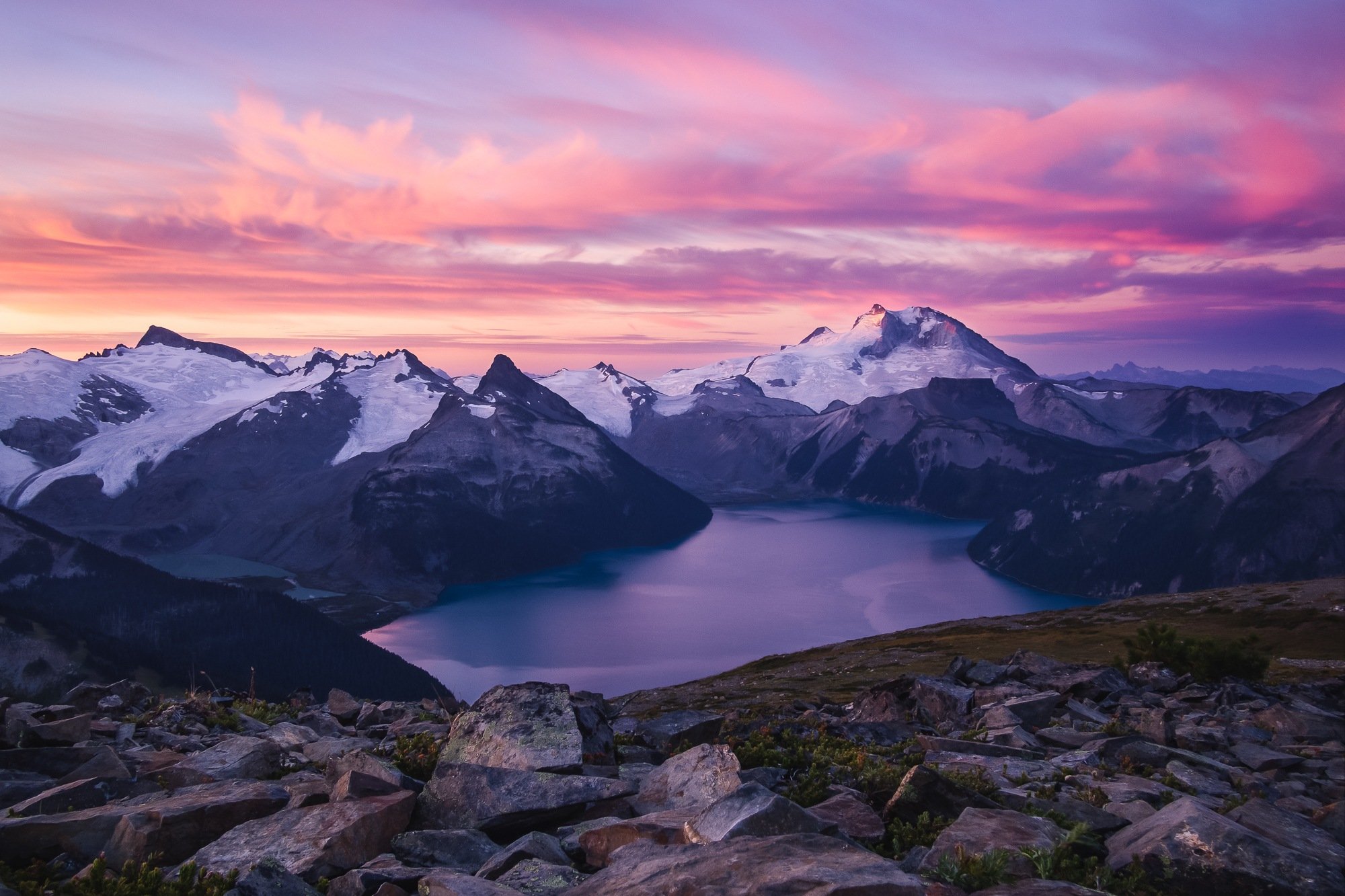
South of the border lies tropical shores and the mystical cultures of Mexico. Many Americans only appreciate this country for its beach resorts – e.g. Cancun, Puerto Vallarta, Cabo San Lucas – or its wormy tequila . Few actually realize that Mexico is astounding; see Chiapas and/or Copper Canyon. Though it has an (undeserving) bad reputation, visiting Mexico is incredible.
For more tropical vibes , the Caribbean is America’s favorite winter vacation. While the nation is gripped by snowstorms and cold, the Caribbean is warm, dry, and having a grand ol’ time.
There are lots of different islands to visit in this massive archipelago – around 700 actually – and some are extremely vibrant. Travel in Cuba, once off-limits to Americans, is beginning to open up and traveling in Puerto Rico is a good time as well.
- Backpacking Cuba
- Backpacking the Carib bean
Volunteering abroad is an amazing way to experience a culture whilst helping your host community. There are plenty of different volunteer projects in the USA including teaching, construction, agriculture, and pretty much anything.
The USA is a land full of opportunities for backpacker volunteers. From hospitality in Hawaii to social media management in Sacramento and everything in between, you’ll find a whole load of different projects to help out with. You’ll most likely need a visa to enter the USA, and I recommend applying for a B1/B2 visa if you’re looking to volunteer.
Want to find some awesome volunteering opportunities in the USA? Then signup for Worldpackers , a platform that connects local hosts with volunteer travelers. As a Broke Backpacker reader, you’ll also get a special discount of $10. Just use the discount code BROKEBACKPACKER and your membership is discounted from $49 a year to only $39.
Programs run through reputable work exchange programs , like Worldpackers, are generally very well-managed and highly reputable. However, whenever you are volunteering do stay vigilant, especially when working with animals or children.
A GREAT misconception about America is that every resident falls under the same category. To say that Americans, as a whole, are cowboys or business sharks or talk like they’re from The OC is a gross misrepresentation.
The USA is an enormous country. It’s about the same size as the entire European continent – a landmass that hosts over 87 distinct peoples. So it’s not hard to believe that people may be (very) different depending on where they’re from.
America is one of the greatest social experiments in the history of the world. Few other countries were founded upon such a huge immigrant population and have molded together quite so much. Race and ethnicity are often celebrated in the USA but, although it is better than in previous decades, racism is still an issue.
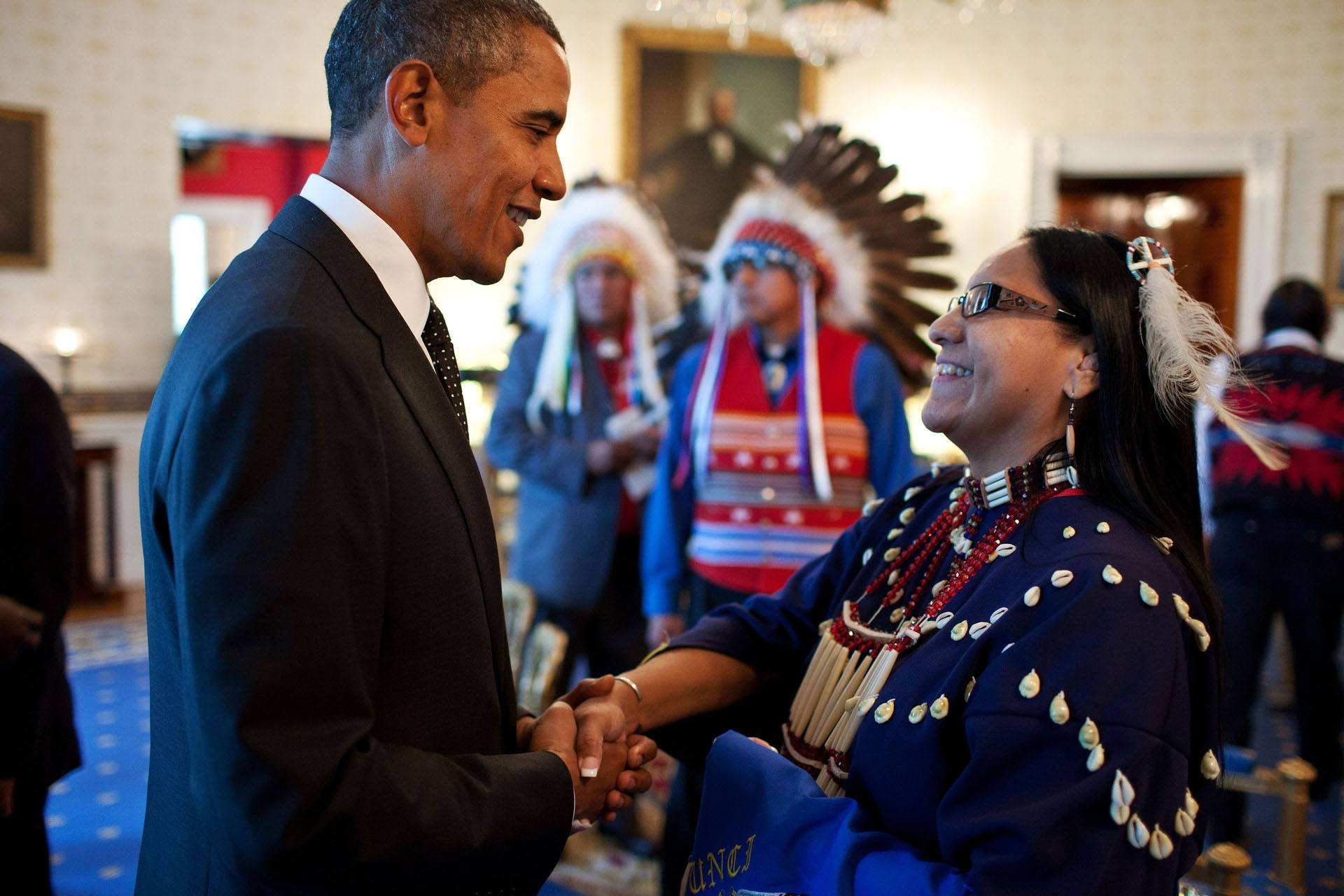
Each region that we have covered so far in the USA travel guide has some distinct qualities. For example:
East Coasters are generally frank in their speech and can be perceived as rude. They may also have stronger ties to their cultural heritage as the East Coast has powerful diaspora communities (Irish, Italian, Polish, etc).
Californians are often perceived as vain and superficial and care more about personal advancement than relationships. They are very open-minded and laid back though and can get along with just about anyone. Business on the west coast IS about relationships though; business on the East Coast is often about grinding it out.
Southerners are warm, welcoming folk who prefer to live life to the fullest rather than get caught up with the details. Many people are seen as unintelligent, which are more symptoms of unjust social dynamics (following the Civil War, the South became very poor). The South is also predominantly Republican (AKA right-wing) and has the lowest Covid vaccination rates in the country.
Floridians are a category all their own. There’s even a known moniker of “Florida Man” as there have been hundreds of absolutely insane things that continue to happen in Florida with that as a headline. Some parts of the state feel like you’ve left the US altogether, while others will make all the Trump Supporter memes you’d seen while living abroad come to life.
These are just a few highlighted characteristics/stereotypes in a sea of cultural diversity. I encourage anyone backpacking the USA to carefully observe the social nuances of each region and to discover the flavors of each.
What is American food like anyway?
Having lived in the USA for the first 25 years of my life, I sometimes have a hard time answering this question myself. The United States is such an amalgamation of cuisines and borrows so much from so many cultures that it’s tough to nail what is really American.
The USA does have a couple of original dishes, which vary by region. For example, BBQ food takes on different qualities depending on where you’re at and can be pretty different.
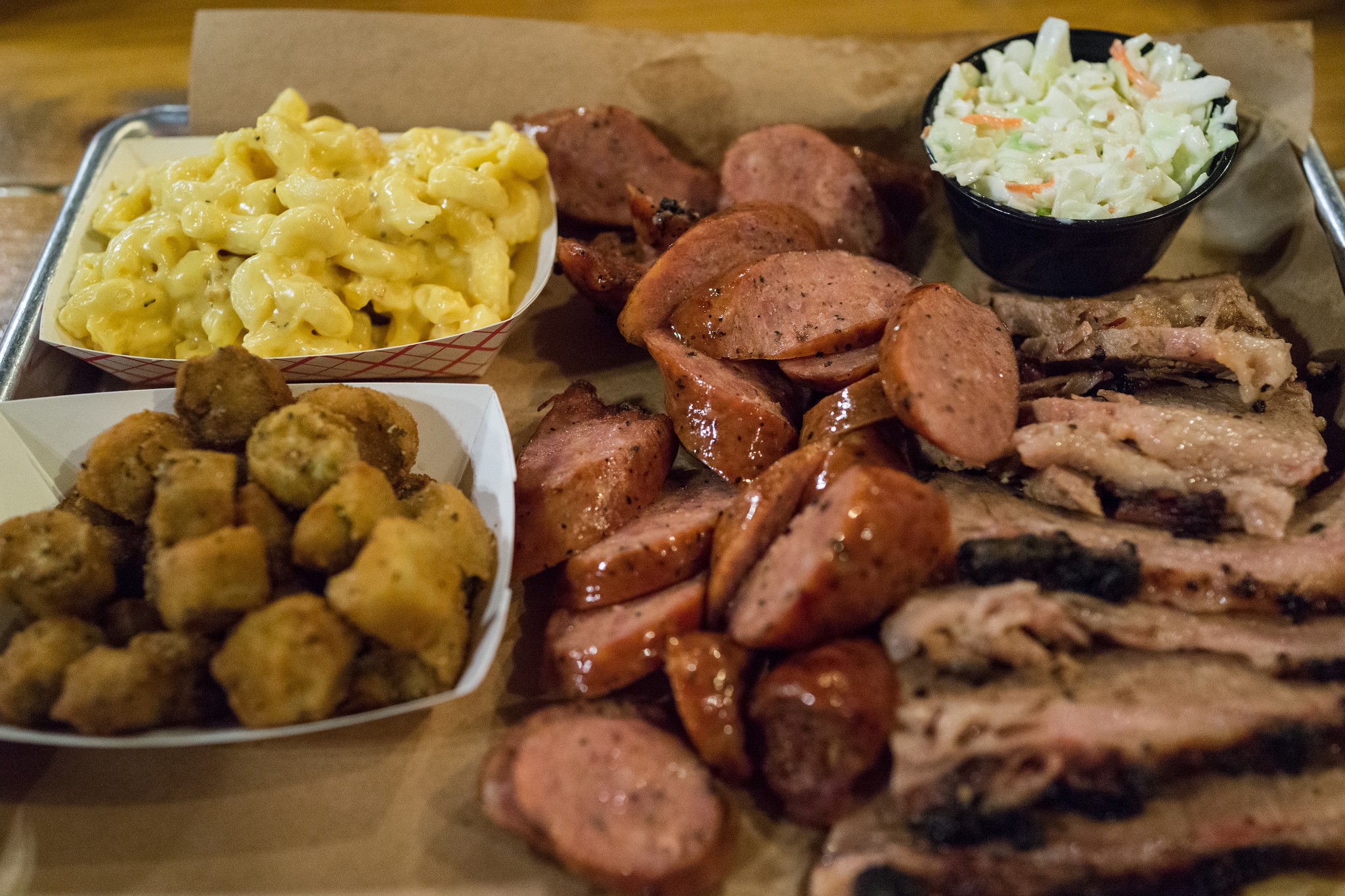
There are also a number of American-ized dishes . It’s common knowledge that Chinese food in the US is not really Chinese anymore and Tex-Mex isn’t really Mexican.
Must-Try Dishes in the USA
Here are a couple more instances of some famous American foods, broken down by region:
- BBQ – Probably the most American food there is. Divine grilled meats marinated in heavenly local sauces. BBQ is divine but fattening. Famous regional varieties include Texas BBQ, Kansas City, Carolina, and Virginia.
- Hamburgers – Another notoriously delicious and unhealthy American classic. Supposedly invented in Connecticut. Huge variety of style from Hawaiian burgers with pineapple and teriyaki to peanut burgers with jelly.
- Hot dogs – A blasphemous take on a typical sausage. Good when you’re drunk or at a ball game. Try to stick to German bratwursts instead.
- Fried chicken – A southern staple that has become a hit. Give the absurdly sounding chicken and waffles a try (they’re surprisingly amazing).
- Tex-Mex – A whitewashed version of Mexican food that is generally more accessible. Less spicy and more reliant upon basic ingredients.
- Donuts – Fried bread shaped into an “O” shape. Alternative cities, like Portland, have made “gourmet donuts” a fad again.
- Cajun – A mix of Southern, French, and Creole styles. Spicy, hearty, and usually very simple. Delicious, nonetheless.
A Brief History of the USA
Native Americans have been living on what is now the USA for centuries. While often thought of as one group, they actually comprised hundreds of tribes that stretched from Alaska to Hawaii and all across the mainland. When Christopher Columbus “discovered” America in 1492, he actually thought he had reached India, thus how the misnomer “American Indians” came to be.
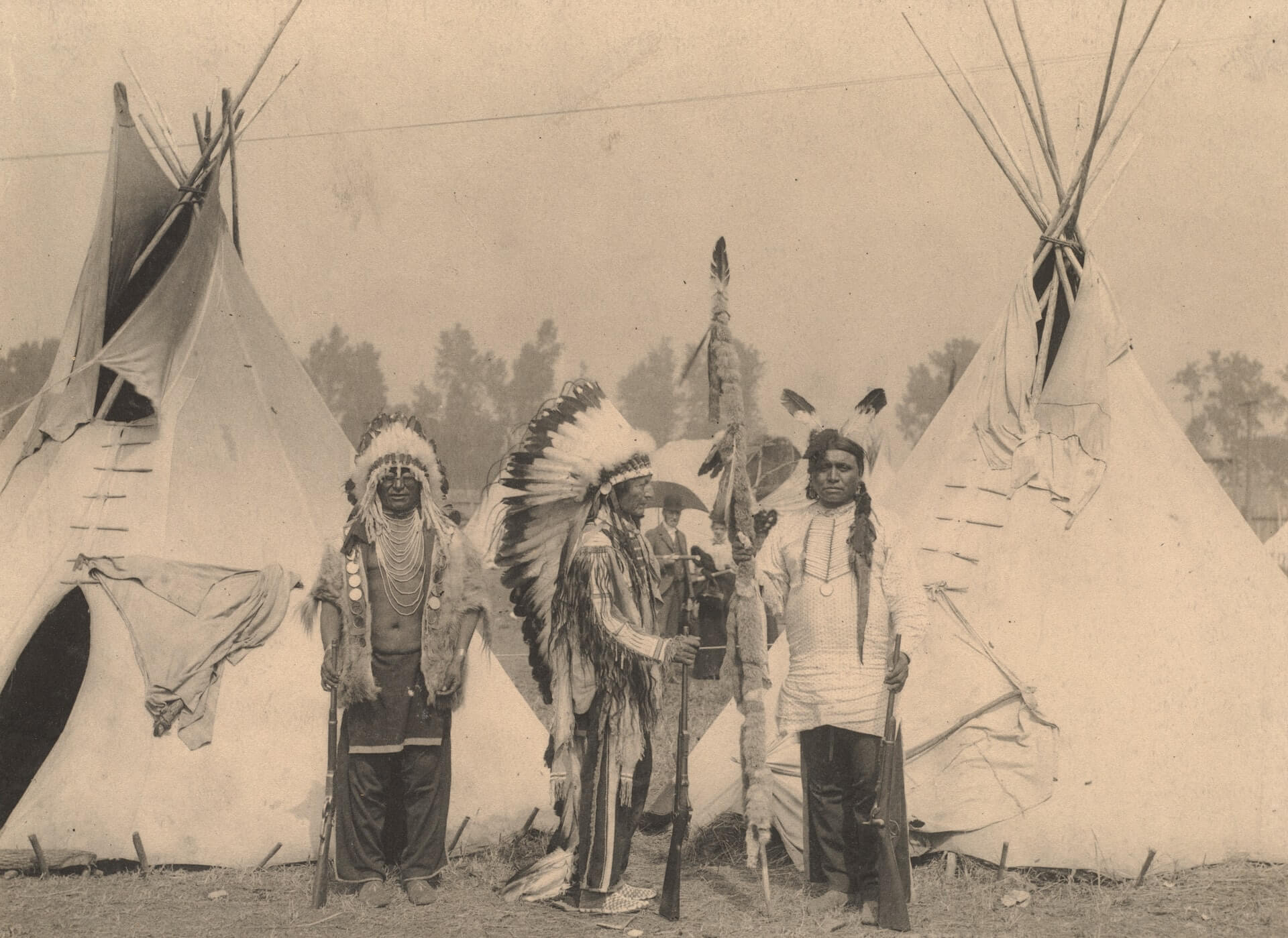
In the centuries that followed, the country we know today was brutally colonized by various “explorers” and millions of natives were murdered. More and more migrants arrived, and the first British colonies were formed in the early 1600s. By the 1760’s the colonies numbered 13 with more than 2.5 million inhabitants, contained alongside the Eastern Seaboard.
In 1776, the declaration of independence was signed after revolutionary General George Washington. It was then that the USA became a country in the city of Philadelphia.
From its inception and even beforehand, slavery was legal in the United States and Africans were forced to live and work in severely atrocious conditions by white slave owners until slavery was officially outlawed in 1865 by the 13th Amendment.
Despite slavery being illegal, African Americans continued (and continue) to suffer from segregationist police. The country was filled with separate restaurants, buses, and schools, and mixing of races was not allowed.
Segregation persisted until the Civil Rights Act of 1964 was passed. Unfortunately, racism is still a problem all over the country today.
Modern History of the United States
Since the 1960s, the US has been almost perpetually involved in war, most recently in the Middle East. After the 9/11 terrorist attacks on the Twin Towers, the USA has spent almost all of its money on the military while the quality of life continues to decrease for its citizens. In 2008, the United States elected Barack Obama, an African-American who was the country’s first non-white president in over 250 years of history.
When the coronavirus hit in 2020, Donald Trump was a massive source of misinformation and downplaying of the virus. Two years later, millions of Americans do not believe it is real. While Joseph Biden took office in January 2021, he and his party have failed to enact any real change, as the virus continues to kill many daily.

Things go wrong on the road ALL THE TIME. Be prepared for what life throws at you.
Buy an AMK Travel Medical Kit before you head out on your next adventure – don’t be daft!
Yup, there’s still more to do in the USA that we haven’t touched on yet. Read on for American moments and scenes you just shouldn’t skip.
Visiting America’s Iconic National Parks
Some of the best places in the United States for a backpacking trip are its many national parks , which are set up to preserve the natural splendor, ecosystem, and historical significance of a given area. These parks are priceless treasures and are among the most cherished pieces of the USA.
Note that most national parks charge an entry fee. If you want to go backpacking in the USA on a budget, consider investing in a special annual pass . In the meantime, here are three stellar parks that should absolutely be on your backpacking USA bucket list.
Glacier National Park
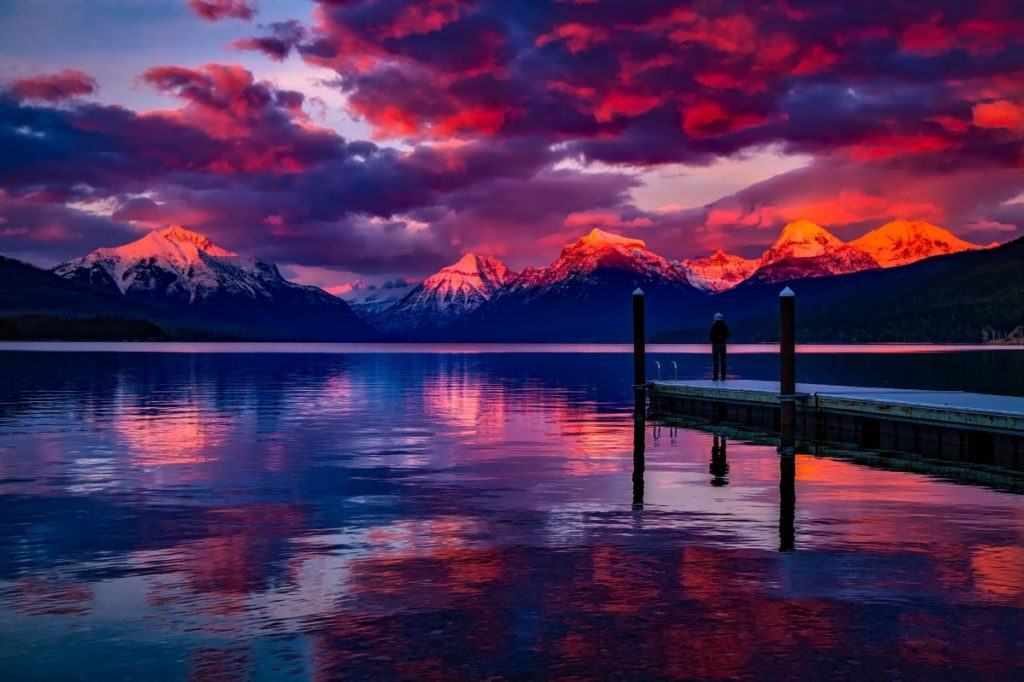
Glacier National Park can be found in Montana , which is easily one of the most beautiful states in the entire country. The park features over 700 miles of trails, along with a hike to a stunning hidden lake. Nature lovers–it doesn’t get much better than this.
Yosemite National Park
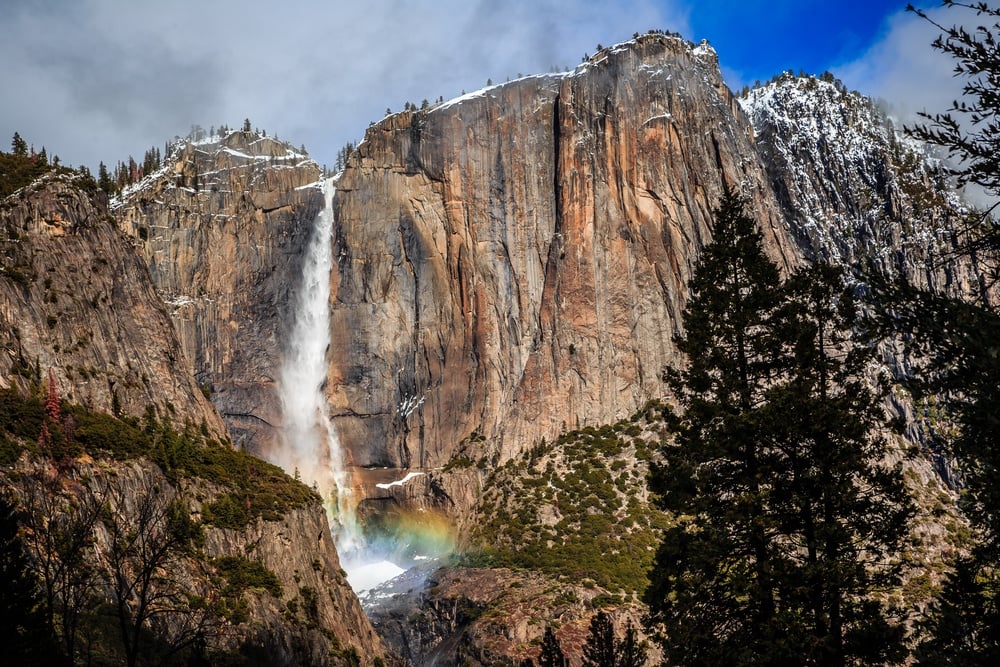
Located along the Sierra Mountains in California, you shouldn’t miss out on staying in Yosemite while backpacking the USA. The stunning and expansive national park can keep hikers busy for days, though most come to see the iconic Yosemite Falls.
Another iconic location is the Half Dome, a rounded granite cliff right near the perfect picnic spot. You also can’t miss the Yosemite Tunnel View, the famous vista that looks its absolute best when tinged with fall colors.
Yellowstone National Park
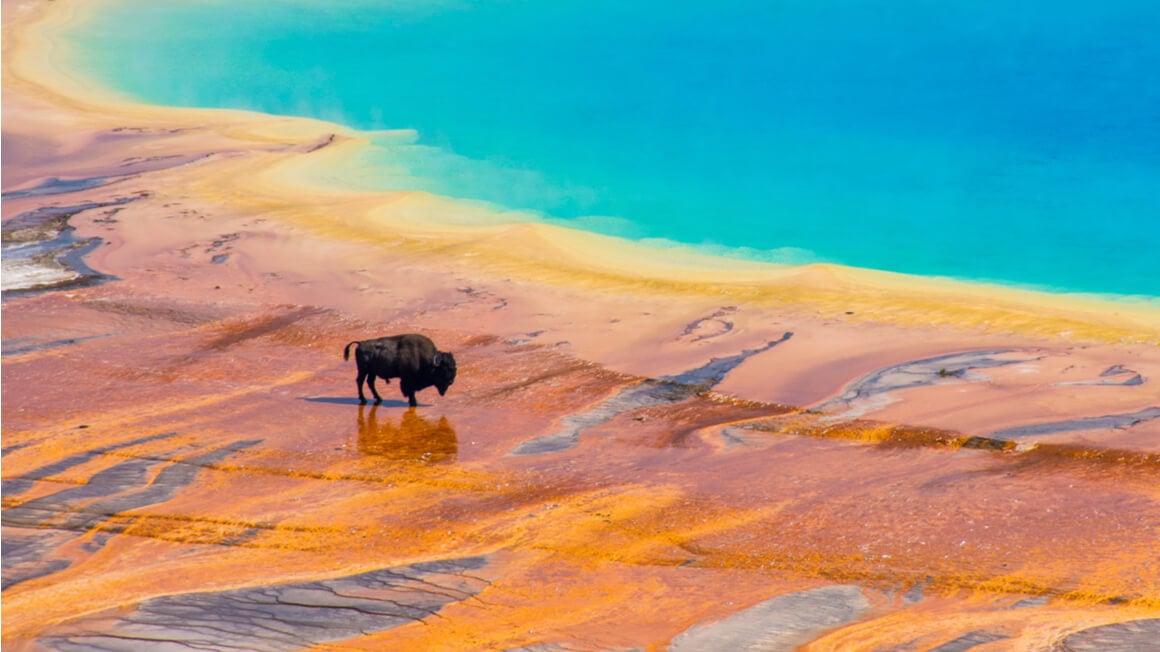
Visiting Yellowstone National Park is a treat. It might just be the most extraordinary piece of nature in all of North America. If you haven’t seen the photos–google it, you’re going to want to add this place to your USA bucket list.
Its rainbow-colored geysers–especially the world-famous Old Faithful–are unlike pretty much anything else, and the park also features a ton of hikes for all ability levels.
Hiking in the USA
Many will say that the most beautiful places in the USA are not found in cities or towns, but in nature . The US is often considered one of the most attractive countries in the world and many are drawn here just to see its natural attractions.
Hiking is a great way to experience the country’s nature and there is plenty of it to be found. Reportedly, there are over 50,000 miles of trail systems in the US. To put that into perspective, that’s equivalent to walking the entire coastline of the Lower 48.
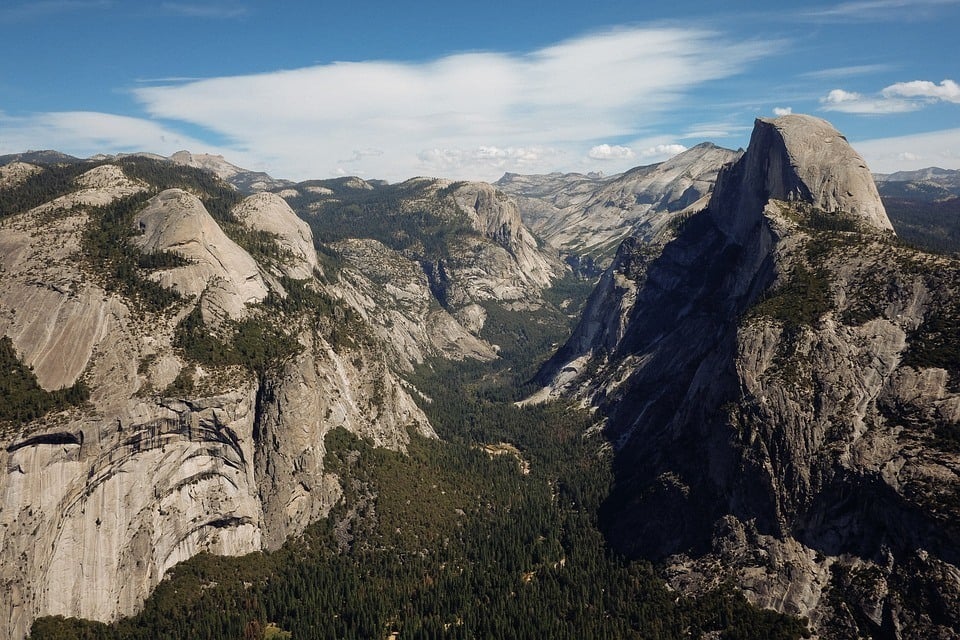
- Best Hikes in Colorado
- Best Hikes in Oregon
- Best Hikes in Arizona
- Top Hikes in California
As a follow-up, I’d like to remind you to never venture into the wilderness unprepared. Always be sure that you take the correct hiking gear with you – hiking shoes, backpack, etc – and always have a plan.
If you’re going on an overnight hike, make sure you have a good tent, sleeping bag , and a means to prepare food.
MATH TIME: The entry fee for Yellowstone National Park is $35. Meanwhile, the entry fee for the neighbouring Grand Teton National Park is another $35. That means that visiting TWO national parks alone (out of the 423 total in the USA) will run you a grand total of $70…

Or you can stuff that whole deal off and buy the ‘America the Beautiful Pass’ for $79.99. With it, you get unlimited access to ALL federally-managed land in the U.S.A for FREE – that’s over 2000 recreational sites! Ain’t that just beautiful?
Go to an American Sporting Event
Americans can’t get enough of their sports; some are diehard fanatics .
If you’re backpacking through the USA and have the opportunity, you absolutely have to go to a sports match. Aside from being an all-out blast, it will be a great immersion experience.
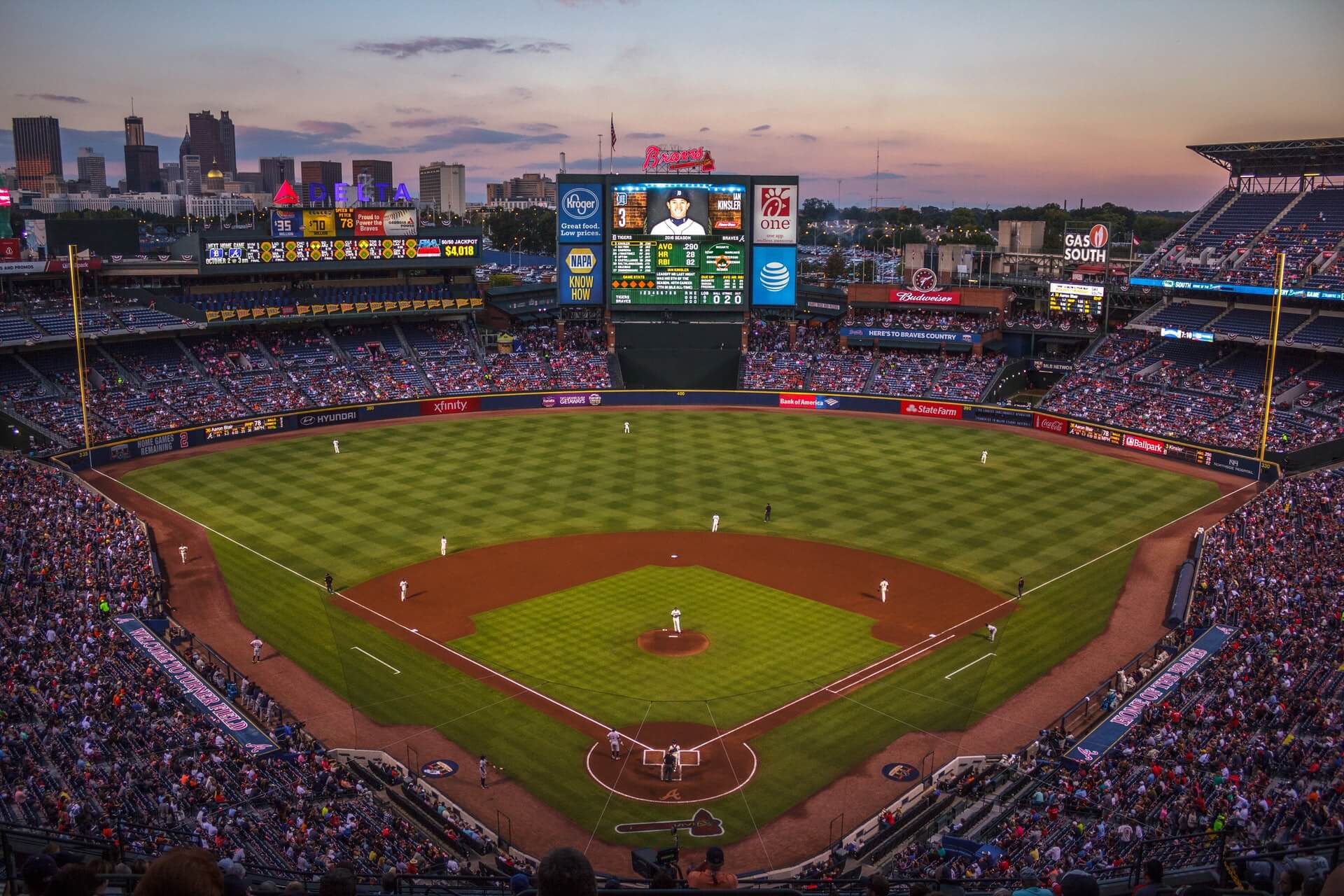
- North American Football – One of the three most popular sports in the United States (the others being baseball and basketball). A violent sport that resembles rugby except the players wear “protective padding.” September-January.
- Baseball – Also called the “Great American Pastime.” One of the original sports of the nation and practically a national treasure. Really boring unless you enjoy the analytics. Great for drinking beer and hanging out with friends though. March-November.
- Basketball – An original American sport that involves two teams trying to get a ball in a hoop. Fast paced and really fun to watch in person. October-May.
- Hockey – A sport that people either don’t care about or go crazy for. Involves ice skating and shooting tiny pucks into nets with sticks. Often the source of USA-Canadian rivalry. October-June.
- Soccer – While extremely beloved in the rest world – and referred to as football – it’s not really big in the USA. As minorities become more prominent in American culture though, soccer is becoming more popular. March-October.
- Rock Climbing – A new age sport that is starting to take the country by storm. Not team oriented or televised at all, but really popular and quite prestigious. Climbers like Chris Sharma and Alex Honnold are celebrities.
- Surfing – One of the best things to do in America if you enjoy the ocean! California, Hawaii, and Florida are some of the best places in the USA to surf, but Oregon, North Carolina, and even Alaska are great too.
- Wrestling – Unless it’s college wrestling, it’s not real. (Sorry.)
Every first-time traveler to the US has a few questions they’re just dying to know the answers to. Luckily we’ve got them covered!
Is it safe to travel in the USA?
America IS mostly safe for travel, though the potential for random violence is much higher than in other developed countries. While pickpocketing is rare, car theft is an issue as are mass shootings due to a lack of gun laws or regulations in most states.
Where can I find legal weed in the US?
Recreational weed is legal in more than a dozen states, but that doesn’t mean what they have to offer is the same. For the best 420 experiences, try the legal shops in Colorado, California, or Washington state for the most variety and coolest dispensaries.
Is backpacking the USA expensive?
You bet cha’. Backpacking in the USA is not cheap as hostels are rare and even roadside motels are very expensive. The cheapest way to explore the US is with your own vehicle and a tent, though even then you’ll likely spend more than in Europe.
What are the best places to visit in the USA?
The best places to visit in the USA include NYC, Chicago, San Francisco, the beaches of Florida, Colorado, Hawaii, and the Pacific Northwest.
What shouldn’t I do in the US?
The number one thing NOT to do in the USA is to bring up politics with strangers. The US is currently in an extremely contentious period where millions would literally still die for politics. Never get into the topic first, unless you know you’re with like-minded people. Right-wingers cannot be reasoned with.

Our GREATEST Travel Secrets…
Pop your email here & get the original Broke Backpacker Bible for FREE.
Well, folks – that was one epic United States travel guide thrown down. I don’t know about you but I could use a vacation right about now, preferably in Maui.
I hope that you learned a lot from this article and about backpacking across the USA. Use the knowledge I have bestowed upon you amigos, to have the best trip possible!
Philadelphia, where much of the USA’s story began, to the rugged mountains of Alaska, the country is as massive as it is diverse and would take several years to fully explore. With 50 states unique as 50 separate countries, backpacking the USA is an adventure unlike any other.
But you also have to remember, the US is going through difficult times and is more divided than ever. So even if you may not see the country at its best, rest assured you’ll still get to experience a whole lot that will absolutely make your trip worth it.
So what are you waiting for? Secure that visa and book that ticket, American dreams are to be made!
Oh, one more thing. Make sure you organise your prepaid USA sim card before you go so you’re all set from when you land.
- Travel Insurance for the USA
- Best festivals in the USA
- Hidden gems in New York City
- A guide to the best USA road trips
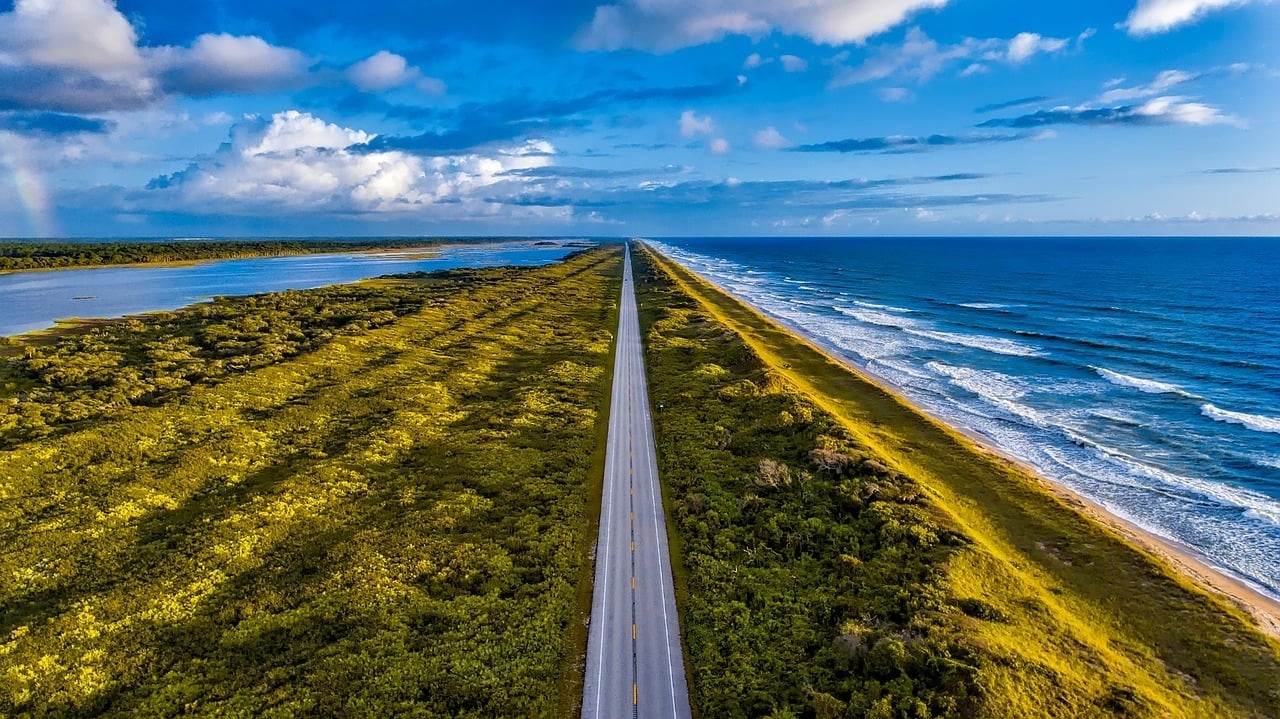
Share or save this post

The mass shootings section is insipid and unhelpful. Mass shootings look like an existential problem because they’re super sexy to the news media in a “Natural Born Killers” way but statistically they’re so unlikely as to be an after thought. If you want to help travelers’ safety you should replace that section with other, much more likely dangers and for that matter ones they can do something about. I also object to the statement “vast swaths of the nation unfortunately still support white supremacy.” because it implies that it’s the dominant zeitgeist in entire states and regions when a much more accurate descriptor is that everywhere in the country a minority of people hold that viewpoint.
You have tons of info to look though here! I’d love to backpack for two weeks near the Grand Canyon. It would be amazing!
Isle Royale National Park in Michigan is unlike any other national park due to it’s ruggedness and you can only get there by plane or by boat! You might even spot wolves or elk! Michigan is definitely a beautiful state to visit as it has fabulous hiking, biking, dunes, beaches and lakes by summer with skiing and ice caves by winter.
Leave a Reply Cancel reply
Your email address will not be published. Required fields are marked *
Save my name, email, and website in this browser for the next time I comment.
Notify me of followup comments via e-mail.

11 Epic Multi-Day Hikes in America’s National Parks
By: Author Bram Reusen
Posted on Last updated: April 23, 2024
I can’t think of (m)any activities that offer a better national park experience than an overnight hiking trip!
Heading deep into a park’s backcountry, setting up camp, exploring an unspoiled landscape, encountering wildlife,… Spending any number of nights backpacking in one of the national parks is something you’ll never forget.
11 Awesome National Parks for Backpacking Trips
1. appalachian trail – shenandoah national park, virginia, 2. wonderland trail – mount rainier national park, washington, 3. john muir trail – yosemite, sequoia & kings canyon national parks, california, 4. grand canyon rim-to-rim hike – grand canyon national park, arizona, 5. painted desert backpacking trip – petrified forest national park, arizona, 6. chisos mountains – big bend national park, texas, 7. the wilderness coast – olympic national park, washington, 8. teton crest trail – grand teton national park, wyoming, 9. haleakala crater crossing – haleakala national park, hawaii, 10. coastal trail – redwood national & state parks, california, 11. cascade pass to stehekin – north cascades national park, washington, wildlife safety while backpacking in the national parks, other national park activities.
Below, I’ve collected the best multi-day hikes in America’s national parks. From the ancient forested mountains of the East to the Southwestern deserts and canyons to the volcanoes and coasts of the Pacific Northwest, you’ll find epic long-distance trails in every corner of the country.

This best national parks for backpacking post contains affiliate links. You can read more about our Terms of Use / Disclosure here .
Best Multi-Day Hikes in USA National Parks

There are more than 500 miles of hiking trails in Shenandoah National Park , climbing up to granite summits or running down into the park’s characteristic woodland hollows. This includes 105 miles of the legendary Appalachian Trail.
Snaking its way for over 2,180 miles from Georgia to Maine, the Appalachian Trail—or AT—runs along the entire length of Shenandoah National Park , the only national park in Virginia .
It follows Skyline Drive , occasionally crossing this scenic mountain road and continuing on the other side.
The Appalachian Trail enters Shenandoah at the Rockfish Gap Entrance Station in the south, leaving the park in its far northern section. The trail runs across the crest of the Blue Ridge Mountains, summiting several peaks and offering spectacular views on the way.

Backcountry camping is allowed in Shenandoah National Park, but there are also four developed campgrounds, two historic lodges and several cabins available.
Additionally, the Potomac Appalachian Trail Club operates six primitive cabins on or near the Appalachian Trail in Shenandoah National Park.
More Information
- Distance: 105 miles
- Duration: 7 days
- Best time to hike: April through May and July through October; June is the busy “thru hiker season”
- Learn more: Appalachian Trail Conservancy

One of the best backpacking loops in the Pacific Northwest, the Wonderland Trail circumambulates mighty Mount Rainier.
It’s 93 miles long with a cumulative elevation gain of about 23,000 feet. The trail passes through several major life zones in Mount Rainier National Park , dipping into forests and descending into valleys, climbing slopes and cresting ridges.
This is one of the best multi-day hikes in America’s national parks, mainly because of its variety and difficulty, but also because it offers glorious views of “Tacoma”, one of the Native American names for Mount Rainier.

Most people complete their Wonderland Trail hike in 10 days, but the National Park Service allows 14 days to complete it.
On the way, there are numerous campgrounds, including three developed campgrounds and no fewer than eighteen backcountry wilderness camps.
Note that you’ll need to get a wilderness permit for all overnight trips in the wilderness of Mount Rainier National Park.
- Distance: 93 miles
- Duration: 10-14 days
- Best time to hike: Late-July to mid-September
- Learn more: The Wonderland Trail

If you’re looking for the best overnight backpacking trails in the national parks, I don’t think there’s a better one than the epic John Muir Trail.
The simple reason for this is that it runs through no fewer than three California national parks, overlaps with the Pacific Crest Trail and features some of the greatest mountain scenery in the country.
And if that’s not enough, this is also the place that enjoys the sunniest and mildest climate of any major mountain range on Earth.
The John Muir Trail starts in the heart of one of the grandest U.S. national parks —the Yosemite Valley. It then runs through the Ansel Adams Wilderness and Sequoia National Park before ending at the summit of Mount Whitney in Kings Canyon National Park, the highest mountain in the continental United States (14,505 feet).

Most of its course is in designated Sierra Nevada Mountains wilderness. On this sensational multi-day hike through three national parks, you’ll wander across alpine meadows, along shimmering lakes, past sheer granite cliffs and underneath towering peaks.
It’s truly a once-in-a-lifetime national parks experience, one of the absolute best backpacking trails in America.
- Distance: 211 miles
- Duration: 3 weeks
- Best time to hike: early-July through September
- Learn More: Pacific Crest Trail Association

For an epic adventure in a desert wilderness, there are few—if any—better backpacking trips in America than a Grand Canyon crossing. Hiking the Grand Canyon from rim to rim means descending all the way to the bottom of one of the world’s largest canyons and climbing back out.
It’s a multi-day national park hike that’ll test your mental strength, push you to your physical limits, and engrave amazing moments in your memory.
This is, however, not simply a “walk in the park.” In fact, a rim-to-rim hike in Grand Canyon National Park can have disastrous consequences for people who are unprepared or misjudge their fitness levels.
That said, if you’ve trained, done your research and have the proper hiking gear, you’re in for the adventure of a lifetime. This is without question one of the best backpacking trips in national parks in the U.S.
Basically, you have two options to hike from the North Rim down to the Colorado River and up to the South Rim. (This north-south route is recommended because the way up is significantly shorter—the North Rim is over 1,000 feet higher than the South Rim.)
- North Kaibab Trail to River Trail to Bright Angel Trail
- North Kaibab Trail to South Kaibab Trail
I’d suggest the first option, the North Kaibab Trail down and Bright Angel Trail up, simply because, even though it’s a little longer, it brings you straight into Grand Canyon Village.

Since this is a point-to-point hike, you’ll either need to have two cars or use a transportation service. In case you only have one car, a great solution is taking the Trans-Canyon Shuttle , which commutes between the North and South Rims. One-way tickets cost $90.
During this hike, you’ll walk through every life zone between Mexico and Canada. The Grand Canyon is home to five of the seven life zones on Earth and three of North America’s four types of desert.
On the way, you’ll also pass three of the four areas of geological time. This is, quite literally, a journey through time and space.
The National Park Service recommends taking your time for this challenging hike—it’s 5,740 feet down and 4,340 feet up. Most hikers complete the 24-mile crossing of the Grand Canyon from rim to rim in four days and three nights.
There are three campgrounds on the way—Cottonwood, Bright Angel and Indian Garden—while the very popular Phantom Ranch offers more “luxurious” accommodation near the Colorado River.
- Distance: 24 miles
- Duration: 4 days
- Best time to hike: April-May and September-October
- Learn more: Grand Canyon Backcountry Trails

For a short backpacking trip in one of the national parks, Arizona’s Petrified Forest National Park is a great option. It’s really accessible—the only national park with a section of Route 66 —and doesn’t require a whole lot of preparation.
There’s plenty to see and do in Petrified Forest , from admiring colorful petrified wood to walking through amazing mesas and visiting historic sites. In the park’s northern area, you’ll find the spectacular Painted Desert.
A wild desert filled with multicolored badlands, the Painted Desert is one of the greatest wild camping areas in the national parks. The park’s only road, which runs along the plateau above the Painted Desert, offers panoramic views.
From Kachina Point, near the Painted Desert Inn, one of my favorite national park buildings, the Painted Desert Wilderness Access Trail snakes down into the badlands below.
Once you’re at the bottom, less than a mile from the rim, the trail suddenly disappears and you’re free to wander around as you please.

You can literally go and camp wherever you want in the designated National Wilderness Area.
The only requirements are that you camp at least a mile from the trailhead, don’t leave any waste behind and don’t take anything that doesn’t belong to you. Charcoal or wood fires aren’t allowed either. Besides that, you basically have unlimited backpacking freedom.
Backpacking in the Painted Desert, one of my favorite national park camping experiences , can be an easy overnight trip or a multi-day adventure deep into the desert wilderness. It’s phenomenal, especially because the star-peppered night sky is breathtaking .
- Distance: At least 2 miles
- Duration: 2-5 days
- Best time to hike: March-May and September-October
- Learn more: Painted Desert Camping Guide

The Chisos Mountains, with 7,825-foot Emory Peak as their pinnacle, are the only mountain range in America located entirely within one national park.
A remote area in southwestern Texas, it’s a true backpacker’s paradise. Prepared and experienced hikers will find hundreds of miles of trails to explore here. Much of it is desert hiking, though, with complex topography and occasionally unclear trails.
This means you’ll need a topographic map and compass—and the skills to use them. Other Big Bend National Park backpacking essentials include proper hiking boots , plenty of food and water, a hat and sunscreen, and a good backpacking tent.
There’s no distinct route that’s “better” than any other in the Chisos Mountains. Simply put, wherever you go, it’ll be amazing.
The numerous Big Bend National Park hiking trails in the Chisos Mountains allow you to piece together relatively short loops, while also offering you to opportunity to create an epic long-distance desert adventure.

This map shows all the backpacking trails in the Chisos Mountains, as well as the 42 backcountry campsites, which are divided into 14 camping areas. You’ll need a backcountry permit for overnight hiking in Big Bend National Park, as well as a detailed itinerary description.
Additionally, black bear and mountain lion encounters aren’t unusual in these wild mountains. So, it’s very important to know what to do when you see one. (See below for more information about wildlife safety while backpacking in national parks.)
- Distance: Everything from 5 miles to 20+ miles
- Duration: 2 days to a maximum of 14 consecutive nights
- Best time to hike: Late-spring and early-fall
- Learn more: Backpacking in Big Bend

UNESCO World Heritage-listed Olympic National Park protects more than 73 miles of the wildest and most pristine natural coastline in the lower 38 states.
It’s a magnificent coastal wilderness with only a few road access points, a place characterized by crashing waves, sea stacks, dramatic cliffs, dense forests and abundant wildlife. The Wilderness Coast offers some of the best multi-day hikes in national parks.
There are several short and long hiking routes along the coast of Olympic National Park, divided into the North Olympic Coast and South Olympic Coast trails.
For a quick taste of this coastal wilderness, you can go for a 1-mile one-way overnight hike to Hole-in-the-Wall on Rialto Beach. On the opposite side of the Olympic backpacking spectrum lies the epic 35-mile multi-day hike from Shi Shi Beach to Rialto Beach .

Backpacking the Olympic National Park coast involves quite a lot of beach hiking. This means that it’ll take a lot longer to cover certain distances than what you might be used to. Keep this in mind when planning your trip.
It’s also important to be aware of and keep an eye on the tides. Since this coastal adventure will take you past several headlands and cliffs, it’s possible to get cut off by the high tide.
Unlike the other long-distance hikes in national parks featured in this post, your Wilderness Coast packing list must include a tide chart and a watch. (Phones can die, so a watch is absolutely essential.)
While a multi-day backpacking trip along the Olympic National Park coast requires preparation, permits, awareness and skills, it’s a phenomenal experience.
You’ll get to explore one of America’s most rugged coastlines, which comes with world-class wildlife viewing opportunities. Black bears, elk, whales, sea otters, bald eagles and countless tide pool creatures all call this coast home.
- Distance: From 1 mile to 35+ miles
- Duration: 2-7 days
- Best time to hike: April through October
- Learn more: Hiking the Wilderness Coast

One of the best national parks for backpacking among wildlife, Grand Teton National Park is home to iconic American megafauna, from grizzly bears , mountain lions and wolves to elk, American bison and moose. It’s one of my top national parks to see wild animals.
Grand Teton is also home to one of America’s greatest long-distance national park trails. The Teton Crest Trail runs through the park’s high country, from lake to lake, across ridges, mountain passes and mountain meadows.
A combination of several short trails in Grand Teton National Park, the Teton Crest Trail’s distance varies depending on which trails you link together. Typically, this spectacular multi-day trek is between 35 and 45 miles long .

A popular starting point is the Granite Canyon Trailhead near the park’s southern boundary. The trail then climbs through Granite Canyon to the Death Canyon Shelf, continuing across the Grand Teton high country to either Cascade Canyon or the Paintbrush Divide.
The long version of the Teton Crest Trail (down Paintbrush Canyon) ends at the Leigh Lake Trailhead, while a shorter route (down Cascade Canyon) terminates at the Jenny Lake Trailhead.
For an overview of the Grand Teton National Park trail options for a multi-day Teton Crest hike, check out the park’s backcountry trip planner .
Obviously, this is bear country—both grizzlies and black bears abound here—and it’s mandatory to carry bear cannisters on backpacking trips in Grand Teton. Always carry bear spray, too, and know how to use it !
More information
- Distance: 35 to 45 miles
- Duration: 3-5 days
- Best time to hike: June through September
- More information: Grand Teton Backcountry Camping

Rising more than 10,000 feet above the Pacific Ocean, the Haleakala Volcano dominates eastern Maui, Hawaii. This majestic mountain is home to some of the world’s most remarkable landscapes, animals and plants.
It also offers one of the greatest backpacking experiences in the United States.
The Haleakala Crater—technically a valley—is in Haleakala National Park’s Summit Area, a place home to numerous cinder cones and an aeolian cinder desert.
There are some amazing day hikes in this area , as well as a little shrubland campground . Backpackers, too, can explore and wander to their heart’s content.
Two trails lead deep down into the Haleakala Crater: the Halemau’u Trail and the Keonehe’ehe’e Trail (also known as the Sliding Sands Trail).
The shortest route across the Haleakala Crater is the Sliding Sands Trail. Starting at the Haleakala Visitor Center near the summit, it runs to the Kapalaoa Cabin (5.6 miles from the trailhead) and continues to the Palikū Cabin and Campground at the far end of the crater (another 3.3 miles).

After spending a night or two at the Palikū Campground, you can retrace your steps the way you came. I do recommend, however, taking a detour along Pele’s Paint Pot, one of Haleakala’s most scenic areas . That detour will add about one extra mile to your return trip.
Note that wilderness camping in Haleakala National Park require a permit. These permits are free, issued on a first-come first-served basis, and require a photo ID and 10-minute orientation.
Additionally, I have to point out that, although you may be in Hawaii, this is desert hiking at its finest. Water is extremely scarce or unavailable altogether, while shade is almost non-existent.
Bring plenty of water, wear a hat and slop on sunscreen. You’ll need it all.
- Distance: At least 18 miles
- Duration: 2-3 days
- Best time to hike: All year
- More information: Wilderness Camping in Haleakala

Although the Redwood National and State Parks are best known for their towering redwoods, you can experience an entirely different side of the park complex on the Coastal Trail.
Running from Crescent Beach to Elk Meadow, this fantastic 70-mile Redwood trail parallels the rugged Pacific coast of Northern California.
Along the way, hikers can explore tidepools, walk alongside redwood-topped cliffs and across sandy beaches. Wildlife abounds here, from sea gulls, starfish, crabs and sea lions to Roosevelt elk and the occasional black bear.

There are five backcountry campgrounds along the trail, located conveniently within a day’s walk from one another.
The trail also passes by the extraordinary Fern Canyon and Gold Bluffs Beach and Campground , two of my favorite areas in the entire Redwood National and State Parks complex.
- Distance: 70 miles for the whole thing; shorter sections possible, too.
- Duration: 6-7 days
- Best time to hike: Summer
- More information: Coastal Trail Sections

With no less than 93% of its area designated as wilderness, the North Cascades National Park Service Complex is the ultimate backpacking paradise. There’s only one road in North Cascades National Park—and it’s barely 6 miles long and unpaved.
At the end of that road, however, is the starting point of one of the best backpacking trips in America’s national parks. The Cascade Pass Trail takes hikers to the alpine meadows, glaciers and epic views of the North Cascades.
At 3.7 miles one way, this is the most popular day hike in North Cascades National Park. (It’s the only car-accessible trailhead in the national park, too.)
From Cascade Pass, you can take a side trip on the Sahale Arm Trail to the base of the massive Sahale Glacier. Beyond Cascade Pass beckons a pristine mountain wilderness dotted by a handful of backcountry campsites.
This is also a wildlife haven, a landscape inhabited by pikas, marmots, mountain goats, deer and black bears. A few grizzlies are thought to live in these mountains, too, but confirmed sightings, let alone encounters, are extremely rare.

From the pass, the Cascade Pass Trail winds its way eastward and downward to Stehekin, a remote lakeside community that’s accessibly only on foot or by boat. At High Bridge, you can hop on the shuttle bus to Stehekin village.
Doing the Cascade Pass to Stehekin hike as a one-way thru hike requires some serious logistical planning, though. You’ll need both a car shuttle between two quite remote spots, as well as a pre-booked ferry ticket from Stehekin to the town of Chelan across Lake Chelan.
Alternatively, you could also hang out in Stehekin for a day or two before hiking back across Cascade Pass to the trailhead parking lot.
- Distance: 23 miles one way
- Duration: 3-4 days
- Best time to hike: July through September
- More information: Cascade Pass Trail Description
Going on multi-day hiking trips in America’s national parks almost always means hiking in places where wildlife is present. This wildlife includes shy and usually docile creatures such as marmots, deer and birds, but also larger and potentially dangerous animals.
Backpacking in wildlife country requires some preparation, to keep both you and the animals safe.

Especially bears are on the radars of most national park backpackers, but there are also several other animals you may have to look out for. Those include mountain lions (also known as cougars or pumas), rattlesnakes, elk, moose, mountain goats and bison.
I’ve written wildlife safety guides about the animals you’re most likely to run into when backpacking in national parks. Encounters with these animals could turn nasty if you don’t know what to do or how to behave.
Therefore, if you’re going on a multi-day hike in a park where any of these animals are present, it’d be a good idea to read through the following wildlife safety guides:
- Black bear safety guide
- Grizzly bear safety guide
- Mountain lion safety guide
- Elk safety guide
- Bison safety guide
- Rattlesnake safety guide
In any case, it’s smart to always bring bear spray on hikes in national parks that are home to bears. You can learn how to correctly use bear spray here .
This potent type of pepper spray works on basically all animals that have a nose, eyes and lungs. This includes black and grizzly bears (obviously), but also mountain lions, wolves and even moose and elk.
Have You Ever Been on a National Park Backpacking Trip? Which Are Your Favorite Long-Distance Trails in National Parks? Share Your Adventure Below!
- Bird Watching
- Mountain Biking
- Road Cycling
- Scenic Drives
- Snowshoeing
- Northern Lights Viewing
- Wildlife Watching
Privacy Overview
Create an account
Start your adventure today.
Already a member? Login

10 Best Backpacking Trips in the US to Rediscover the Importance of Nature
Quick navigation.
- ALASKA: Kesugi Ridge in Denali State Park
CALIFORNIA: The John Muir Trail
Wyoming: teton crest trail, maine: part of the appalachian trail, new hampshire: pemi (pemigewasset wilderness) loop, utah: the highline trail in utah’s uinta mountains, washington state: mount rainier national park’s wonderland trail, colorado: the four pass loop, in maroon bells-snowmass wilderness area.
- CALIFORNIA: The Lost Coast Trail - North
VERMONT: Long Trail
Best treks and backpacking trails, join our newsletter.
Get a weekly dose of discounts and inspiration for adventure lovers
This vast country has an abundance of wilderness – start planning your next trip now!

“Climb the mountains and get their good tidings. Nature's peace will flow into you as sunshine flows into trees,” wrote environmentalist John Muir. Muir, who died in 1914, was perhaps America’s first environmental activist. The Scottish son of a clergyman, Muir believed in nature’s capacity to revitalize the human spirit and lobbied for the first national parks so ordinary people could reconnect with the wild. In today’s increasingly over-scheduled, screen-based world, Muir’s vision has never seemed more prophetic. Here are America's 10 best backpacking trips that will help you to rediscover the importance of nature.
The Kesugi Ridge trail offers days of stunning panoramas of the Alaska Mountains including Denali (also known as Mount McKinley), America’s tallest mountain. The hike can be accessed at several points with the longest route roughly 57.9 km . It is important to research your route because some access points may be closed due to flooding or an excessive number of bears. Which brings up another point, bear spray is a must. Because this trail is in Alaska, timing is important. This a trail best hiked during the summer and fall - late August and September are considered fall. The trail itself is easy to follow, although fog can be an issue so a compass is recommended. In good weather the views are unobstructed for days.

Hike the Panorama trail to see the best of Yosemite Valley
If you don’t want to do the whole thing, check out 10Adventures Yosemite region

Teton Crest Trail hike in Grand Teton National Park is one of America’s 10 Best Backpacking Trips
10Adventures covers the best hikes in the Tetons as well.

Looking down on the lake from Appalachian Trail in Maine which is one of America’s 10 Best Backpacking Trips
Maine’s 160.9 km Wilderness is the longest part of the Appalachian Trail that never crosses a paved road. It begins at Monson, Maine, and ends at the northern terminus of the trail at Katahdin Mountain in Baxter State Park. Famous for its isolation, the 160.9 km Wilderness can also be dangerous for non-expert hikers and a downright grind in spots. For those looking for a less arduous adventure, the first 48.3 km offers a great hike through rugged but beautiful terrain with 70 percent fewer miles. Highlights include Lower Wilson Falls, the biggest waterfall on the Appalachian Trail, clear running streams and plenty of panoramic vistas from rocky mountaintops. Most people finish this hike in three days.

Profile Lake in New Hampshire is one of America’s 10 Best Backpacking Trips
The Pemi Loop is 50.7 km of intense hiking – more than 2,743 m in elevation gain – with eight 1,219 m -plus peaks encircling the western half of New Hampshire’s Pemigewasset Wilderness. Featuring rugged terrain and spectacular vistas, this trip is best done in two or three days. Each of the peaks offers panoramic vistas and four additional 1,219 m summits can be reached via short day hikes. While the rewards are high, the demands are also, so only embark on this trail if you are sure your knees are up to it. Because significant sections are exposed, it is also important be prepared for the White Mountain’s notoriously variable weather conditions. Bears are also found in the Pemigewasset Wilderness, so carrying bear spray is a very good idea.

The Highline Trail in Utah is one of America’s 10 Best Backpacking Trips
If you are looking for a trail less traveled, the Highline Trail through Utah’s Uinta Mountains is worth your consideration. Roughly 120.7 km through challenging terrain, most of which is around 3,353 m in elevation with the highest point about 3,840 m , this trail can be difficult and above all remote, so make sure you are well prepared for a wilderness experience largely above the tree line. That said, the Highline Trail is justifiably revered by hikers and if you enjoy having long stretches of trail to yourself, serene lakes, gorgeous views of high mountains, pine forests and lots of wildlife, put this trail on your list.
Check out our favourite day hikes in the Uintas .

Wonderland Trail in Mount Rainier National Park is one of America’s 10 Best Backpacking Trips
Encircling Mount Rainier, the Wonderland Trail is about 149.7 km long and is considered a strenuous trail with more than 6,706 m of cumulative elevation gain. Most people complete the trail in 10 to 14 days. With almost every section of the trail ascending or descending, the environment and even the micro-climate is constantly changing. Hikers will see glaciers, cascading waterfalls, subalpine meadows, lakes, canyons and stands of temperate rain forests. There are several river crossings, including two suspension bridges and some primitive log bridges. During the most popular hiking season in late summer, the weather is more likely to be dry and sunny but during the spring, as well as the first half or so of summer, rain, snow and swollen rivers can create hazards. Camping is allowed in designated camps only and permits are required.
If you'd like to experience a beautiful and challenging day hike in Washington, check out the Yellow Aster Butte trail in Mount Baker area.

The Four Pass Loop in Maroon Bells is one of America’s 10 Best Backpacking Trips
The Four Pass Loop through the Maroon Bells Mountains offers world class scenery including rugged mountain peaks, beautiful wildflowers in alpine meadows and pristine mountain lakes. Normally this loop takes three or four days and hikers will be challenged by four mountain passes, each over 3,658 m and the highest – West Maroon Pass – 3,810 m . Because of the elevation, it is probably best to plan your trip for late summer or early fall. Earlier in the season, snow melt creates swift running rivers. Overnight hikers are also required to use approved bear food storage containers. Free permits must be obtained at the trailhead.
Check out our favourite day hikes around Aspen .
CALIFORNIA: The Lost Coast Trail - North ( 40.2 km )

The Lost Coast Trail in California is one of America’s 10 Best Backpacking Trips
Named for its tendency to vanish at high tide, and the scarcity of roads in the area, the northern section of the Lost Coast Trail passes through a slice of California’s coast so rugged that it literally drove the Pacific Coast Highway inland. Here, the mountains of the King Range meet the ocean and the trail winds through hidden beaches and up rugged highlands to soaring vistas above the Pacific Ocean. The scenery is stunning, but because much of the trail is beach, which literally disappears twice a day, it is important to study the tides and plan accordingly. Bear spray is also required and because the rainfall amounts can reach more than 3 m a year, it is best to plan for a deluge, although precipitation in July and August is much less than during the winter months.

Long Trail hike in Vermont is one of America’s 10 Best Backpacking Trips
Stretching 434.5 km from the Massachusetts border to Canada, the Long Trail, which travels along the spine of Vermont’s Green Mountains is this country’s oldest long-distance hiking path, conceived in 1909 and finally completed in 1930. Offering more backcountry than wilderness, the trail climbs rugged peaks and passes pristine woodland ponds, hardwood forests, alpine sedge and swift-flowing streams. In addition to the central footpath, there are 297.7 km of side trails and roughly 70 backcountry campsites. A thru hike will take 20 to 30 days, but there is plenty of opportunity for section hiking. As with any hike involving exposed terrain, take appropriate precautions during inclement weather, and also be aware that this trail can be muddy in sections and bring plenty of extra socks.
Did you like this article? Check out our 10 Best Day Hikes in the US or the best long-distance hikes in the US .
Check out our series of articles on the best treks and backpacking trails on earth!
- 10 Best Treks in Africa
- 10 Best Treks in Asia
- 10 Best Treks in Australia
- 10 Best Treks in Canada
- 10 Best Treks in Europe
- 10 Best Treks in New Zealand
- 10 Best Treks in the UK
- 10 Best Treks in the US
- 10 Best Backpacking Trails in Canada
- 10 Best Backpacking Trails in Western Canada
- Best Treks in Iceland
- Best Treks in Nepal
Top Destinations
Tour activities, top regions, get travel inspiration and discounts.
Join our weekly travel newsletter

10 Best Backpacking Trips in U.S. Parks
This year the National Park Service (NPS) celebrates its 100th birthday. Over the past century, the agency has protected and managed a system that has grown to now include 59 parks in 27 states and ranges from famed summer-vacation destination icons like Yellowstone and Yosemite to the remote 8.4 million wild acres of Alaska’s Gates of the Arctic and tropical paradises like Florida’s Dry Tortugas. Of course, the parks can be popular, but don’t let that scare you away this summer. The best way to truly immerse yourself in these wild landscapes is to get away from the gawking roadside crowds and spend days exploring their deep, primal secrets by foot. To that end, and to celebrate a hundred years of the NPS, we offer up these best ten backpacking trips in the parks.
- Nat Geo Expeditions
Related Topics
- BACKPACKING
- NATIONAL PARKS
You May Also Like

These are the 10 most popular national parks

How to visit Lake Clark National Park and Preserve

The best backpacking stoves for your outdoor adventure

8 camping cookware sets we love

Done the Camino? Try tackling Japan’s 88-temple Shikoku Trail
- Environment
- Perpetual Planet
History & Culture
- History & Culture
- History Magazine
- Gory Details
- Mind, Body, Wonder
- Paid Content
- Terms of Use
- Privacy Policy
- Your US State Privacy Rights
- Children's Online Privacy Policy
- Interest-Based Ads
- About Nielsen Measurement
- Do Not Sell or Share My Personal Information
- Nat Geo Home
- Attend a Live Event
- Book a Trip
- Inspire Your Kids
- Shop Nat Geo
- Visit the D.C. Museum
- Learn About Our Impact
- Support Our Mission
- Advertise With Us
- Customer Service
- Renew Subscription
- Manage Your Subscription
- Work at Nat Geo
- Sign Up for Our Newsletters
- Contribute to Protect the Planet
Copyright © 1996-2015 National Geographic Society Copyright © 2015-2024 National Geographic Partners, LLC. All rights reserved
Free Ground Shipping On All Orders

Gluten Free

Camping & Backpacking
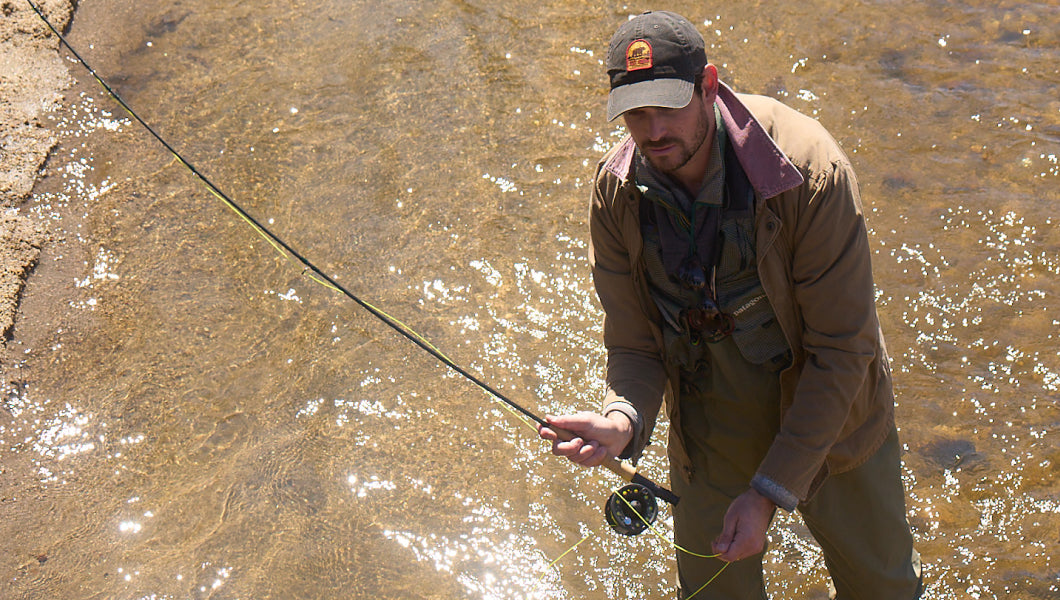
Hunting & Fishing
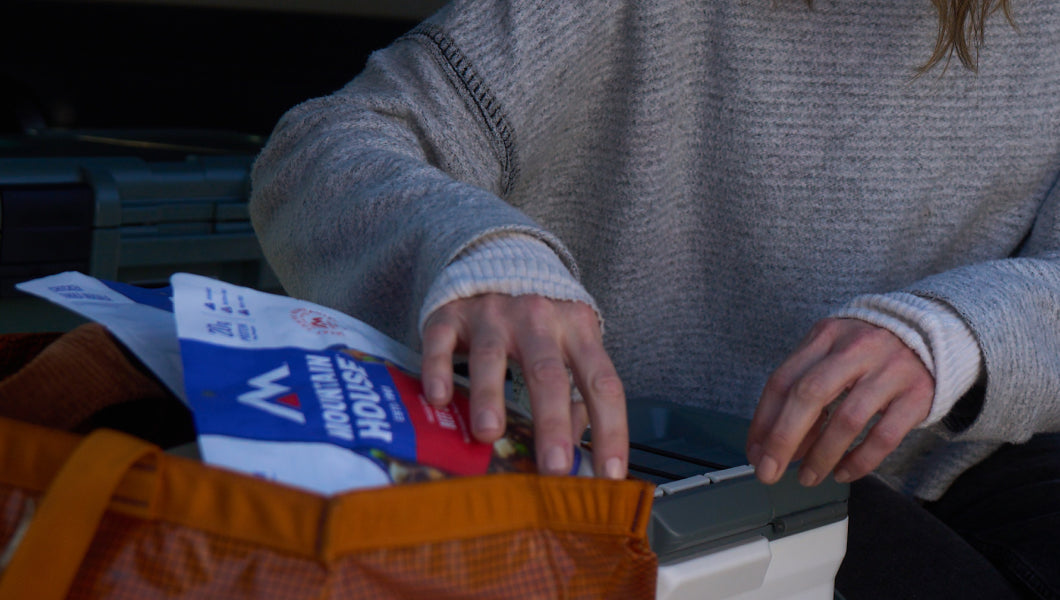
Emergency Food & Survival
- All Products
- Stewardship
Over 2,100 Reviews
Your Cart is Empty
- $0.00 SUB TOTAL
Add description, images, menus and links to your mega menu
A column with no settings can be used as a spacer
Link to your collections, sales and even external links
Add up to five columns
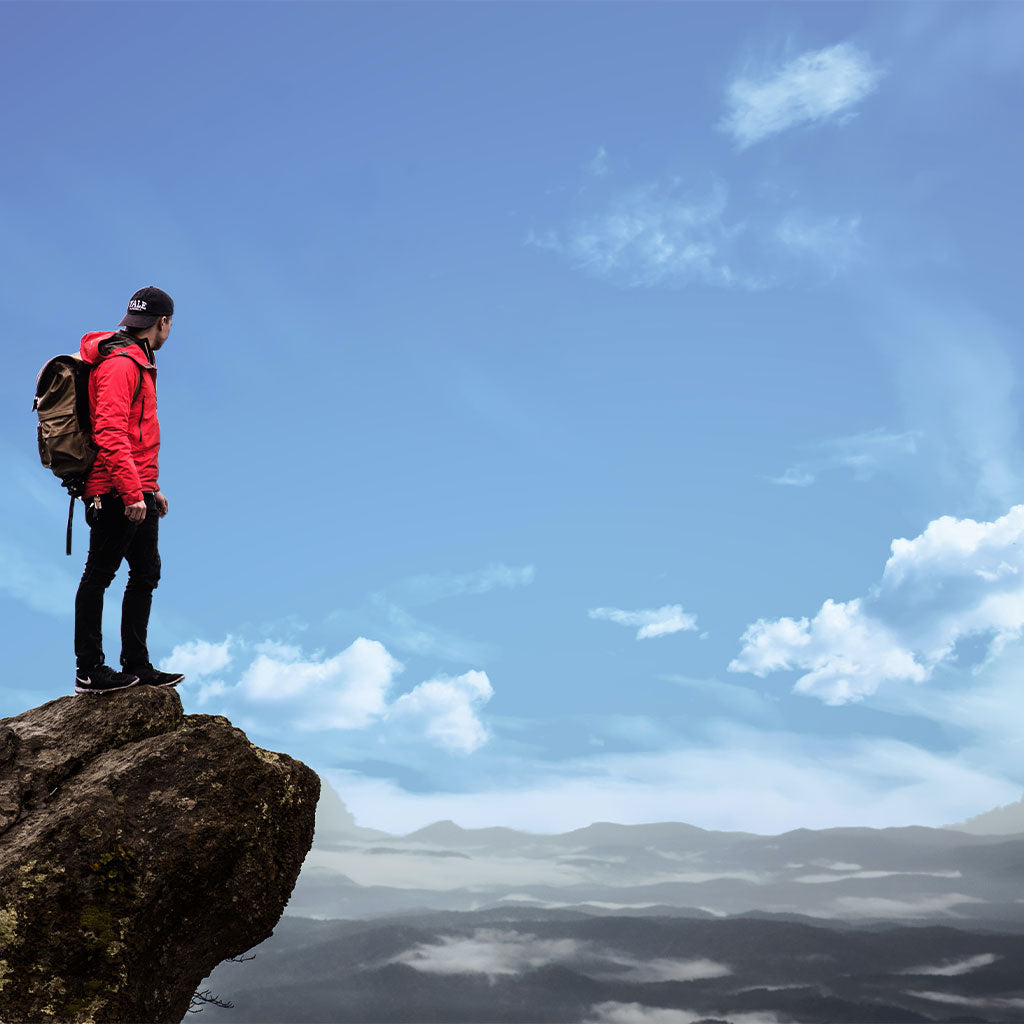
10 Epic Backpacking Trips to Take in the US
The United States has no shortage of fantastic backpacking routes in virtually every corner of the country. They include, of course, some of the best-known long-distance hiking trails in the world, including the Appalachian and Pacific Crest trails. In this roundup of some of the very best backpacking adventures in the country, we’re only including one of the formally designated National Scenic Trails and otherwise focus on shorter, but no less spellbindingly beautiful routes.
Take it from us: A Mountain House meal tastes delicious amid the backcountry scenery of any of the following multi-day traverses!
(1) The Presidential Traverse (New Hampshire)
This famous trek follows the up-and-down crest of the Presidential Range of the White Mountains—the highest peaks in the Northeast—bagging all the summits named for U.S. presidents along the way. In cresting Mounts Madison, Adams, Jefferson, Washington, Monroe, Eisenhower, and Pierce, you’ll cover some 23 miles and tackle roughly 9,000 cumulative feet of elevation gain, and soak up some of the best views in the East. While some try to bang out the Presidential Traverse in one day, two or three days of backpacking, staying in mountain huts along the way, sweetens the experience and lessens (a little) the physical exertion.

(2) The Florida Trail (Florida—obviously)
Some 1,000 miles long, the Florida Trail is a unique National Scenic Trail introducing you to the ecological variety and surprising wildness of the Sunshine State. From palm hammocks and bald-cypress swamps to prairies and pinewoods, a full traverse of the Florida Trail shows off the subtropical to downright tropical beauty of this southeastern toe of the country, and offers the chance to glimpse such thrilling wildlife as alligators, wood storks, black bears—maybe even the elusive puma variety called the Florida panther.
(3) Greenstone Ridge, Isle Royale National Park (Michigan)
Among the least-visited national parks in the Lower 48, Isle Royale encompasses the biggest island in Lake Superior. The 43-mile-long Greenstone Ridge Trail gives backpackers the chance to walk through the heart of the park and along the very spine of the island, hitting up its high point of 1,394-foot Mount Desor. You’ve got a healthy chance of spotting Isle Royale’s heftiest residents, moose; if the National Park Service’s plans to reboot the island’s naturally dwindled population of wolves go according to plan, you may also enjoy—as many Isle Royale backpackers have in the past—the serenade of throaty howls along the way.
(4) The Thorofare, Yellowstone National Park (Wyoming)
The Thorofare Trail in the far southeastern corner of Yellowstone National Park explores some of the most remote country in the conterminous U.S., following the upper Yellowstone River between the Two Ocean Plateau and the Absaroka Mountains. You can make a 70-mile odyssey by backpacking the Thorofare from the East Entrance Road and then the South Boundary Trail, which leads westward along the (you guessed it) southern boundary of Yellowstone to—finally—blacktop again at the South Entrance. You need to know your way around river crossings and bear safety to tackle this far-flung route through grizzly-roamed wilderness.

(5) The Highline Trail (Utah)
You’ll cover close to 100 miles walking the tundra path of the Highline Trail in the mighty Uinta Mountains, one of the rare west-east ranges in the Western Hemisphere and host to some of the most extensive alpine terrain in the Rockies. No grizzlies here, but plenty of thunderstorm risk—and some absolutely gorgeous high-country panoramas.
(6) Havasu Falls (Arizona)
Hike the 10 miles down to Havasu Falls in the depths of the Grand Canyon, and you’ll experience some of the most otherworldly, dreamily beautiful countryside on the planet. Situated on the lands of the Havasupai (People of the Blue-Green Waters) tribe and accessible to backpackers with a tribal permit, 100-foot Havasu Falls is only the most celebrated of a series of waterfalls in the redrock depths of Havasu Canyon. You’ll brave scorching temperatures and a rugged descent to get here, but Havasu Creek and its falls boast an almost tropical lushness. (Learn more about reserving a permit for a Havasu Falls backpack here , and check out some footage of the area from Devin Supertramp, whose trip we sponsored with Mountain House meals.)
(7) Wonderland Trail, Mount Rainier (Washington)
Several of the great Cascade Range stratovolcanoes have designated backpacking trails circumambulating them, the highest-profile of which loops around the biggest volcano of them all: the Wonderland Trail circling 14,411-foot Mount Rainier. Most hikers take the better part of two weeks to make the full 93-mile journey, which offers dazzling up-close looks at the different faces of mighty Tahoma and immersion in the glorious timberline meadowlands and subalpine forests below the icy edifices of this glacier-blanketed volcano.
(8) Lost Coast Trail (California)
Roughly 60 miles long, the Lost Coast Trail offers backpackers the opportunity to experience one of the wildest oceanfronts in the Lower 48, where the high and rugged King Range has kept the aptly named Lost Coast roadless and primal. The hiking is not easy—tiring beach slogs and up-and-down slope traverses—but the rewards immense: Northern California temperate rainforest, elk and gray whales, spectacular sunsets .

(9) John Muir Trail (California)
Easily one of the most celebrated mountain footpaths in the world and definitely a legendary backpacking bucket-list item, the roughly 214-mile-long John Muir Trail—which partly shares the same route as the Pacific Crest Trail—serves as a stunning introduction to the alpine glories of the High Sierra. It links Yosemite National Park in the north to Kings Canyon-Sequoia, where the southern terminus is composed of the highest peak in the conterminous US: 14,505-foot Mount Whitney.
(10) Chilkoot Trail (Alaska/B.C.)
The 33-mile-long Chilkoot Trail in Klondike Gold Rush International Historical Park in the Coast Mountains of southeastern Alaska and adjoining British Columbia lets you tread the infamously challenging overland trek followed by gold-hungry prospectors in the 1890s. A complete traverse takes you from temperate rainforest to high snowfields, and may land you more than one glimpse of both black and brown bears.

Inspired for an Adventure? Check out Beef Stroganoff - Pouch and Beef Stew - Pouch
Best Places to Go Winter Wildlife Watching in North America
Exploring the best winter desert hiking in the southwest united states, stay hungry for adventure.
Sign Up for Delicious Outdoor Meals & Exclusive Offers!

Join the adventure
©2024 Mountain House — All Rights Reserved.
Translation missing: en.accessibility.loading
EXPRESS PAYMENT METHODS AVAILABLE IN CHECKOUT
Taxes and Shipping Calculated at Checkout
CURRENT PRICES END MAY 12
Outside Festival feat. Thundercat and Fleet Foxes.
GET TICKETS
Start Your Free Trial
Powered by Outside
The 10 Most Memorable 10-Mile Hikes in North America
Ten trails. ten unmatched miles each. get maximum bang for each boot step on hikes that our most-traveled contributors call their all-time favorites..
Heading out the door? Read this article on the new Outside+ app available now on iOS devices for members! >","name":"in-content-cta","type":"link"}}'>Download the app .
Ten miles is the perfect trip length—a full day or a short backpack, with enough time in the woods that you can leave all your worries behind but not enough that your clothes will clear a room when you return to civilization. And while ten miles of any trail is good, ten miles of incredible wilderness hiking is an experience you will never forget. Check out our picks for the ten best ten-mile hikes on the continent, and start planning your next trip.
The Lost Coast, Sinkyone Wilderness State Park, CA

Find yourself among the redwoods and isolated coves of California’s wildest shoreline.
—Dennis Lewon
The first time I hiked the Lost Coast , I was in college and it was spring, the sky was bright and clear, the irises blooming, and the beach campsites utterly deserted. Perfect conditions, at a perfect time in life. So when I heard other hikers have found the trail too wet, too cold, too hard, or all three, and vowed never to return, I wondered: Is my memory unreliable, corrupted by a golden moment I can’t repeat? To find out, I returned again and again over the years, and have experienced the notorious summer fog that erases everything but your buddy a few feet away, and rain so hard that I had to coax my friend to even get out of the car. On my most recent hike there, the poison oak grew so robustly it crossed the trail in places. I remain smitten.
Starting from the Usal trailhead and heading north, the Lost Coast Trail climbs through a grove of skyscraper redwoods infused with fairy-tale light; the red-green glow filters softly through the canopy and settles on emerald ferns that shine as if lit from within. By itself, the half-mile walk through the ancient trees is a life-list experience. Then you eject onto an open bluff, more than a thousand feet above the Pacific Ocean, with a whale-spotting vista that’s sure to stall your progress.
Next, you plunge into another redwood grove. Then you’ll push through waist-high red and pink and white wildflowers that pop in early summer. And you’re still just 30 minutes from the trailhead. Which, in short, is what puts the southern section of the Lost Coast in a class by itself. It’s perfect from the very first mile, and never lets up for the next 15 (the dozen miles north from Usal harbor my favorite views and beaches).
True to the trail’s name, the coast itself remains alluringly out of reach, protected by a no-go zone of steep cliffs. The rugged terrain–which famously defeated road engineers constructing the Pacific Coast Highway–forces the trail to bounce between fern grottoes and ridge-hugging overlooks. By the time you reach Little Jackass Creek, at mile 7.3, you’ll have gained and lost a combined 5,503 feet of elevation. Now follow the creek down to a private beach, with space for one idyllic campsite. Wash the trail sweat off in the icy surf, build a little driftwood fire, and dig your tired feet into the cool sand. You’re far from lost.
You’re Not Alone

The Lost Coast is home to a whole host of critters, from ticks to peregrine falcons to black bears. Make sure you give the larger mammals their distance, especially bears and sea lions. Peregrine falcons and ravens love the rising thermals off the cliffs of the Kings Range; keep an eye out above to spot a passing raptor. Black bears frequent several of the campsites along the trail, and bear canisters are required for backpackers on the northern section. Ticks are especially common on the second half of the trail; long sleeves, long pants tucked into socks, and thorough body checks are the best way to ward them off.
From Legget on US 101, go 15 miles west on CA 1 and turn right on Usal Rd. at mile marker 90.91 (warning: the unmarked dirt road may be impassable after heavy rains). Shuttle: Use the Lost Coast Shuttle or leave a car at Orchard Camp. The best ten miles are Usal trailhead to Wheeler Beach Camp (mile 11), but you can also continue to the northern trailhead at Orchard Camp (mile 16). From Usal Trailhead, head into forested ridges, then head through old-growth redwoods back towards the coast.
Black Angel Trail, White Mountain National Forest, NH
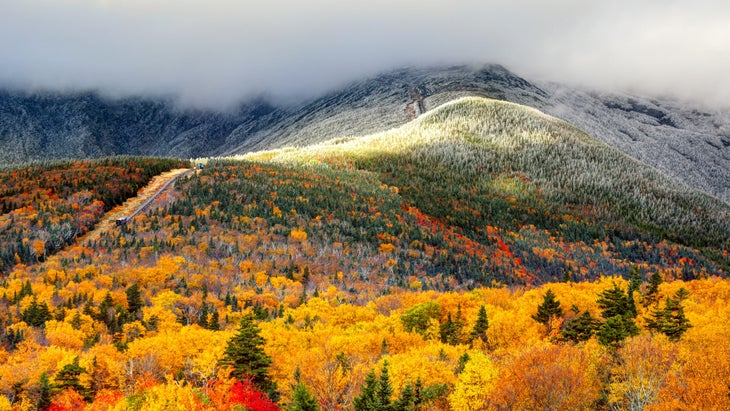
Sneak into a forgotten corner of the Northeast’s busiest forest.
—Larry Garland, as told to Courtney Holden
Like so many hikers, I hike to get away from it all. Unlike most, I get to do it for work, as a cartographer for the Appalachian Mountain Club. In 2005, I became a redliner: My task was to hike every trail —which appear as red lines on our maps—in the Whites. I’m one of only four people to have hiked every one of them, more than 1,400 miles in total.
This forest is crawling with myriad, damn-fine 10-mile stretches, but I say the best in the whole 794,000 acres is the Black Angel Trail. It’s the embodiment of what hiking, at least for me, is all about: isolation and solitude in nature’s undomesticated playground. The Black Angel Trail is best tackled as part of a 16.9-mile figure-eight loop from the Wild River Campground. You’re deep in federally sanctioned backcountry—wilderness with a capital “W” as we call it—so there are no paint blazes on trees to help you find your way. All of this creates a buffer that keeps the crowds away.
On the Carter-Moriah Range, the nose of Carter Dome looks out to its mightier brother, Mt. Washington, and down on vistas over the Wild River Wilderness. If you’re sick for peace and quiet in the Northeast, what lies next is the prescription for you. Veer east to the Black Angel Trail, and drop off the ridge into a veritable no man’s land.
The 3,100-foot descent down through birch glades inspires a contemplative spirit, so slow down as you stride from the virgin-timber realm of softwood pines and firs, then through sugar maples, birches, beech, and cherry trees. Do yourself a favor and go in early October for the best leaf-peeping of your life; you’ll be alone with your thoughts in an area of the wilderness overlooked by peakbaggers focused on the Presidentials.
The Science Behind the View

During the sunny days of summer, deciduous plants use chlorophyll to convert the long hours of sunlight into energy, then into new plant mass. That chlorophyll is what gives leaves and grass their green color. In the fall, as the sunlight weakens and the days shorten, the chlorophyll breaks down. This lets other pigments usually masked by the chlorophyll, like yellow and orange carotenes and xanthophyll, come forward. Other chemical changes in the leaves create new pigments, like those that turn dogwoods and sumacs purple and sugar maples deep red. As the leaves change, the tree also seals off the scar behind the stem, so that when the leaf falls under its own weight it doesn’t leave a wound on the branch.
Start from the Wild River Campground. At 2.6 miles in, you come to a river ford that the guidebook warns may be problematic for “people with short legs or heavy packs”. Continue in a southwesterly direction, dodging the muddier sections as you follow the river up to its headwaters near the watershed divide and No Ketchum Pond. You can camp here at Perkin’s Shelter or push on, keeping right at the trail junctions to a 1,500-foot, 2.5-mile climb to Carter Dome. At the next junction, head east on the Black Angel Trail. Loop back around to the first junction and then head right, away from Wild River and towards Cedar Brook, to take the Black Angel Trail back to the trailhead.
Timberline Trail, Mt. Hood
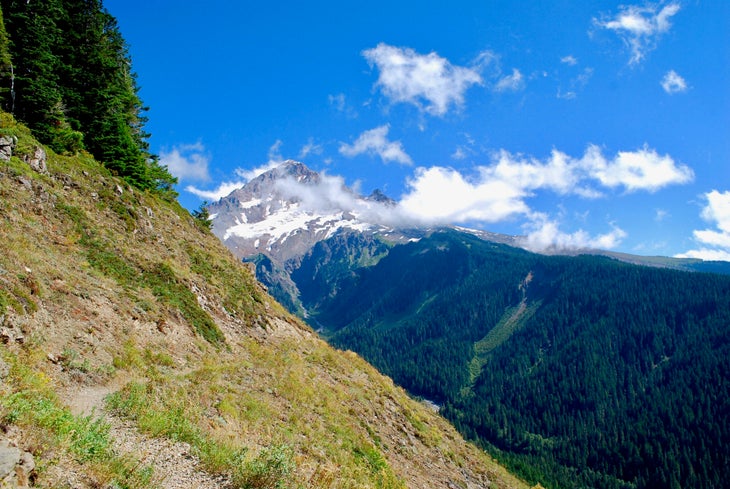
Make tracks around Oregon’s gentle giant.
—John Harlin
Volcanic dust poofs into the air with each of my wife Adele’s footfalls. Step, puff, step, puff…her boots strike the Timberline Trail near Cooper Spur. Glaciers reflect the bright morning sun high above on Mt. Hood. Ten more miles before dinner. These are my favorite 10 on the Timberline on any day, but on this one my heart thumped with pure joy. The trail plunged along Gnarl Ridge, across alpine meadows, through scrub, and into subalpine forest. Soon it led into the cold waters of Newton Creek; we could see where it continued up the other bank. We held each other’s arms tightly to brace against the current.
The path then wandered under ski lifts; crested a ridge with views to more volcanoes in the south; angled down again into the White River’s broad scar of a drainage, victim of a thousand and one floods.
The day’s views stayed familiar—after all, Mt. Hood is our local peak. But that doesn’t mean I’ve tired of them. Each year we enjoy pieces of the Timberline, and 11,240-foot Mt. Hood, covered in snow and draped in wildflower meadows, is our constant companion.
What’s a Stratovolcano?
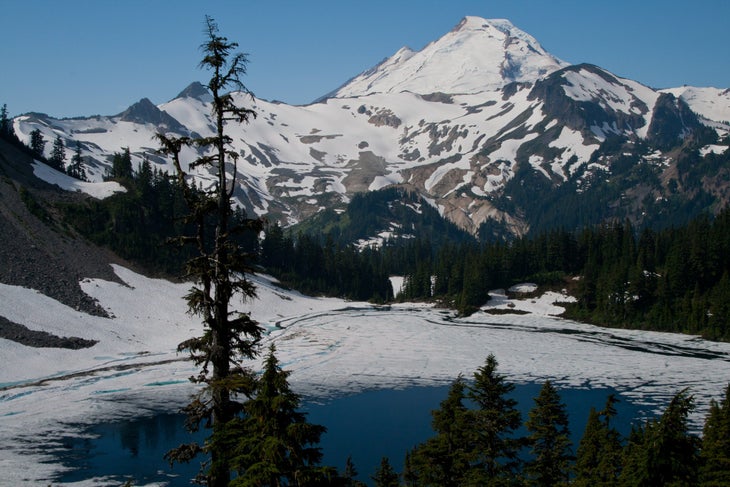
There are three basic types of volcanoes: Shield volcanoes, cinder cones, and stratovolcanoes. Broadly speaking, the type of volcano depends on the type of magma it draws from. Relatively runny mafic magma (which cools into basalt) oozes out and flows downhill, forming broad, gently-sloped shield volcanoes. Felsic magma (which forms rocks like granite and rhyolite) is much sticker and more explosive, forming steep-sided cinder cones with explosive eruptions that throw “bombs” and gaseous clouds high in the sky. Stratovolcanoes are between the two, with eruptions that produce enough flowing lava to build a sturdy cone but also tend to be quite explosive. Mt. Hood, like all the other volcanoes in the Cascadian volcanic arc (peaks like Mt. Rainier, Mt, Baker, and Mt. Shasta), is a stratovolcano—and potentially an active one.
Start at Cloudcap Trailhead, climbing on the Timberline Trail towards Cooper Spur and the Elliot Glacier. Remain on the Timberline Trail across Gnarl Ridge, dropping past Newton Creek (with an optional side trip to Newton Creek Falls). Cross into Mt. Hood Meadows ski area, then arrive at Umatilla Falls Trailhead at mile 10.
Pilgrim Creek Trail, Bridger-Teton National Forest, WY
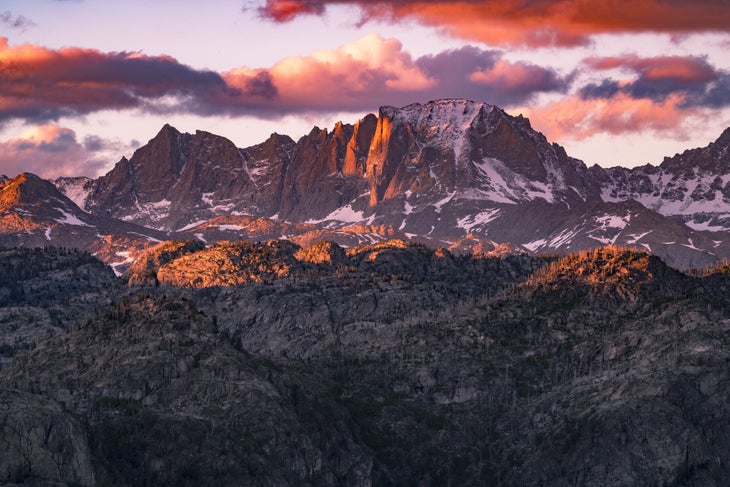
Trek into the emptiest, most grizzly-packed meadows, all within sight of the Grand Teton.
—Tracy Ross
As a freshman in college, I found enlightenment in the faces of a trail crew on a Student Conservation Association flyer. I could see it in their tired, happy expressions: Trail crews had the summer job thing figured out.
So in the spring of 1991, I signed up to work on a crew in the Buffalo Ranger District of the Teton Wilderness , on the southeastern boundary of Yellowstone National Park. My home for the summer was the Pilgrim Creek Valley, which fans between Wildcat Ridge and Bobcat Ridge and throbs with one of the densest grizzly populations in the West. Back then, the wilderness still smarted from the 1988 wildfires that burned 794,000 acres. But the entire place coursed with water, and lush pocket meadows thrived amid swaths of charred timber. Now the forest is recovered, with oxbowed streams and groves of flickering aspens. The 11.2-mile hike in from the Pilgrim Creek trailhead to Wildcat Peak (where we worked) is arduous. You cross Pilgrim Creek 15 times in the first three miles, before diving into a neck-high willowed jungle. Then you pitch up a steep, sun-baked hillside, then back down into the willows for another 2.5 miles. When you reach the first creek you can cross without wading, you’re nearing the Wildcat Peak junction. Go north, climbing 1,000 feet over 3.5 miles to a wide divide separating the Rodent Creek drainage and Wildcat Peak. Here, the trail peters out, but keep a bearing on Wildcat’s summit and bushwack toward it, picking up the Wildcat Peak Trail .5 mile from the top.
Rewards? Absolutely. Dead ahead is the supremely toothy Grand Teton, snapping at the clouds. Look back, and see the 10-mile trail that turned me into a lifelong wilderness lover. We camped in meadows exploding with blue columbine, Indian paintbrush, and purple monkshood. We saw no other footprints, no fire rings, no tent sites—a backpacker’s Eden. We measured our hands against countless grizzly tracks with claw marks the lengths of our fingers—and I cycled from screaming with fear at unknown sounds to popping the safety on my bear spray to singing with joy after a solo encounter with one big female. According to the Hiking Wyoming guidebook, even the personnel at the Blackrock Ranger Station call Pilgrim Creek a primitive area within the wilderness, and few know what’s back there.
I, however, grew to know exactly what was back there. For 27 days over three nine-day hitches, we crosscut and chopped a six-mile tread into Wildcat Peak. The work beat me down and built me up, so that by the end of the summer, when I looked in the mirror, I saw the same tired-but-happy expression as the kids on the SCA flyer.
How Big is That Ecosystem?
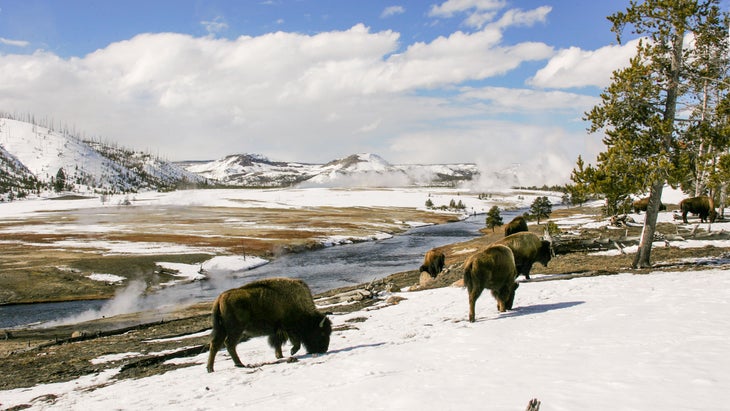
The Greater Yellowstone Ecosystem, stretching over 3,437 miles of Montana, Wyoming, and Idaho, is one of the largest intact temperate ecosystems on the planet. The heart of the system is Yellowstone Park itself, home to the highest concentration of wildlife in the lower 48 and half of the active geysers in the world. The range of habitats contained in the ecosystem contributes to its incredible diversity of flora and fauna; lodgepole pine forest, mountain meadows, sagebrush steppe, and grasslands support elk, bison, grizzlies, wolves, lynx, pronghorn, and a whole host of smaller mammals, along with birds, reptiles, amphibians, insects, and fish. Grand Teton National Park is also included as part of the system, with its high mountains, black bears, moose, and elk.
From Jackson, take US 191 37.6 miles to Pilgrim Creek Rd. Turn right, and reach the trailhead in 2.1 miles. From the Pilgrim Creek Trailhead, head upvalley, crossing the stream several times, then turn onto the Wildcat Peak Trail. Follow this trail 3.5 miles to a pass, then head off-trail towards Wildcat Peak. Pick the trail back up near the summit. To return, retrace your steps to the trailhead.
Skyline Trail, Jasper National Park, Alberta
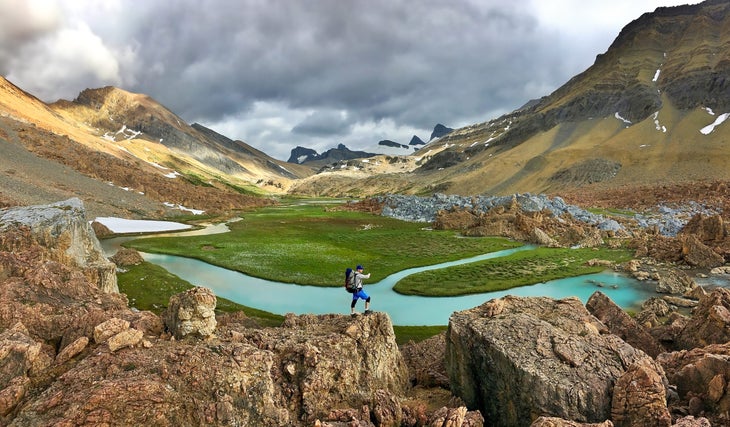
Go to hiker heaven on Canada’s finest high-country path.
—Jonathan Dorn
Little Shovel Pass made me a backpacker. Not the occasional-weekend- in-the-woods type, but the guzzled-the-Kool-Aid-and-asked-for-a-bigger-cup variety who daydreams in meetings and haunts the discount racks at REI and who, in 1997, accepted a 25-percent pay cut—with a baby on the way—to take an assistant editor job at this magazine.
I’d hiked plenty of miles before tackling Jasper’s Skyline Trail . With my wife, I’d explored New England’s forests, bumped into bears in the Olympics, and sweated out sections of the Appalachian Trail. But the panorama that unfolded at 7,347 feet atop the switchbacks of Little Shovel Pass—and the way-above-treeline views that slackened our jaws all the way to Centre Lakes—were a eureka moment. Before, I’d seen backpacking as a pleasant, wallet-friendly escape from the rat race. After hiking that 10.8-mile stretch—and realizing just how soul-stirring a grand landscape can be—the pursuit of mountain scenery became a way of life.
The Skyline today has tight quotas— the price of fame and a fragile alpine environment—but it rivals a Grand Canyon rafting permit in worth-the-wait payoff. Tracing ridges strewn with cinquefoil, pulsatilla, and lupine, the 27.6-mile Maligne Range traverse dips into fragrant spruce and lodgepole forest haunted by caribou and black bears for a few miles at start and finish, and at five backcountry campsites.
Smack in the middle—on those 10.8 miles—you’ll ramble across the most sustained stretch of tundra this side of Denali, serenaded all the way by pikas and marmots. Watch for bear activity; we saw a grizzly-excavated hole that looked like the work of a backhoe.
Keep your eyes to the horizon, too: From Little Shovel Pass to the Snowbowl to Shovel Pass to The Notch to Amber Mountain’s descent to Centre Lakes, the ever-improving vistas take in everything that draws photographers to the Canadian Rockies. Maligne Lake’s glacier-blue waters—so brilliantly azure they transcend every cliché. Thousands of acres of icefields flowing through notches in the massifs that tower above the Athabasca Valley to the west. The shark-toothed Queen Elizabeth Ranges to the east. And—from The Notch—the hulking giants of Mts. Edith Cavell (11,033 feet) and Robson (at 12,927 feet, British Columbia’s highest peak).
Whatever you do, budget three days for the Skyline. The middle might be the slowest 10 miles you ever hike.
Remnants of Ancient Ice
The Columbia Icefield in Jasper National Park, surrounded by most of the park’s highest peaks, is one of the last remaining pieces of the Cordilleran Ice Sheet, which once covered much of western North America in glacial ice over a mile thick in places. Though most of the ice sheet melted away when the ice age ended, this piece in the high mountains of Jasper held on; it’s the largest ice sheet in the entire Canadian Rockies, and gets over 20 feet of snow per year.
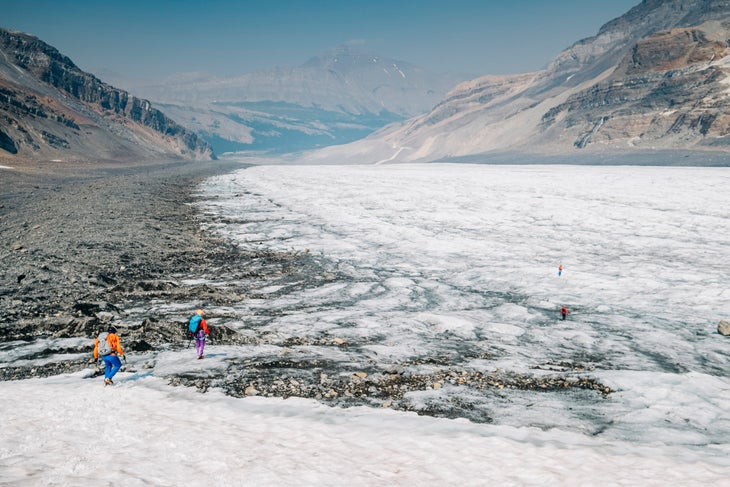
Leave a car at the Signal Mountain Trailhead, then take another car or a shuttle to Maligne Lake. Most hikers end their first day at Snowbowl campground, 7.5 miles down the trail. On day two, hike 11.2 miles to Tekarra Campground, situated next to a swift mountain creek with views of the surroounding peaks. Day three finishes off the route with an 8.7 mile hike out to the Signal Mountain Trailhead.
The Jewels Route, Grand Canyon NP
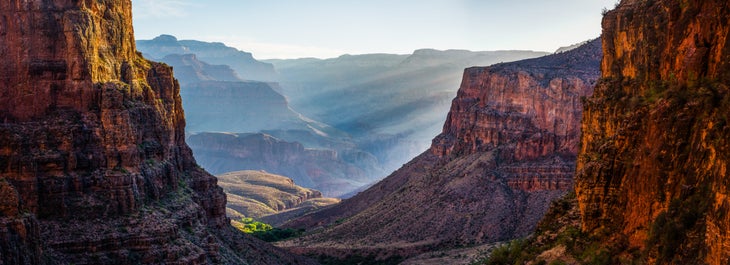
Time one of Arizona’s trickiest passages just right, and you’ll mosey from one idyllic, fern-lined grotto to the next.
—Annette McGivney
I am down on my knees pumping from a silty puddle, praying I can get one lousy liter—we’ll need that and more to reach what I’ve heard is the best 10 miles in the entire Grand. The previous night my friend, Jane, and I made a waterless camp at the junction of the South Bass and West Tonto Trails, five miles from the South Bass trailhead. We planned, or more accurately, hoped, to top off here in Serpentine Canyon.
Located in the remote western end of the park and snaking into the deep side canyons of the Tonto Plateau, the Jewels Route is, in total, a 48-mile prize I’d been lusting after for years. These inaccessible spots—each named for a precious gem (Ruby, Turquoise, Sapphire, Agate)—are legendary for their seasonal grottoes and solitude, even though the Park Service does its best to discourage visitors. “There are no permanent springs,” warns the NPS website. “Only unreliable, unpredictable seasonal trickles.” Plus, there are no bailouts, prompting the park to dub the stretch from South Bass to Boucher Trail the most difficult section of the trans-canyon trail system.
At least 10 hikers have died here in the last 50 years by making the same mistake we might be. But we roll the dice—seems a reasonable gamble since we are here after a very wet winter. So with three liters between us, we clamber up the trailless scree slope of Serpentine and search for a cairn on the blinding-bright expanse of the Tonto.
Our boots crunch on a fine pavement of gray-green Bright Angel shale as we weave our way through a sea of blackbrush. The hulking orange Havasupai Point rises against the South Rim while the distant white spine of the Sagitarius Ridge defines the North Rim. Perched halfway between the top of the rim and the river, the Tonto Plateau is a balcony with best-seat-in-the-house views of the canyon. Periodically, we venture to the edge and peer 2,000 feet straight down to the blue-green Colorado.
We arrive at the lip of Ruby Canyon with barely a half-liter. The sun is unrelenting, and my head throbs. We look into the dark, seemingly bottomless drainage. We hear a pattering, like light rockfall, echoing off the canyon walls. Sheep? We cock our heads: water gurgling over slickrock!
Our timing is perfect; the seasonal springs in Ruby are ripe with snowmelt and feeding a lush, riparian oasis. A string of clear pools glint in the sunlight. Damselflies hover and zag. Bright green ferns, moss, and monkey flower pad the canyon walls.
The next day, after lounging in Ruby all morning, we confidently march across the parched Tonto for 5.8 miles to Turquoise Canyon, our next camp, where another perfect oasis awaits. You can continue on the Tonto to Hermit trailhead or turn back and just bag these 10 miles. Or stay another day. No matter what, you win.
Looking Down
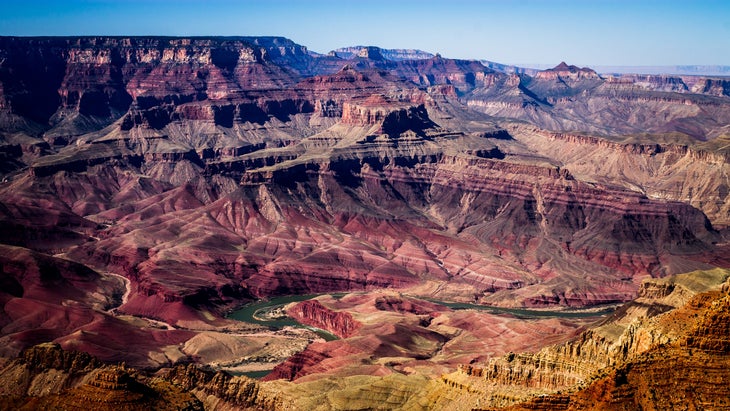
The rock layers of the Grand Canyon are more than just scenery—they offer a glimpse into the deep past of the planet. The oldest rocks in the canyon, known as the Vishnu Basement Rocks, formed during the Proterozoic Era, which stretched from 2.5 billion to 541 million years ago. These rocks are mostly igneous (volcanic) or metamorphic, and the group is dominated by granite and schist. The middle layers of rocks, known as the Grand Canyon Supergroup, are only slightly longer but completely different geologically: this group is mostly sandstone and mudstone and formed in a shallow sea. The easiest to spot are the reddish layers of the Paleozoic Strata, which formed several million years after the lower layers in another shallow sea. These layers are filled with fossils of corals, small fish, and brachiopods.
Leave one car at Hermit’s Rest, then start your hike from the Bass Trailhead. Descend the South Bass Trail for 4 miles. At the junction with Brush Canyon, go right on the West Tonto Trail. Two miles later, reach Serpentine Canyon and your first camp. The next day, head six miles to Ruby Canyon, camp 2. On day 3, hike another six miles to Turquoise Canyon. The longest day is day 4, heading 14 miles past Sapphire and Agate Canyons to the campsite at Boucher Creek. On the last day, hike the final 10 miles to Hermit’s Rest. The only reliable water is Boucher Creek; seasonal flows run in Ruby, Turquoise, Sapphire, and Slate. Best bet for water and reasonable temperatures: February-April.
Mt. Eielson, Denali National Park
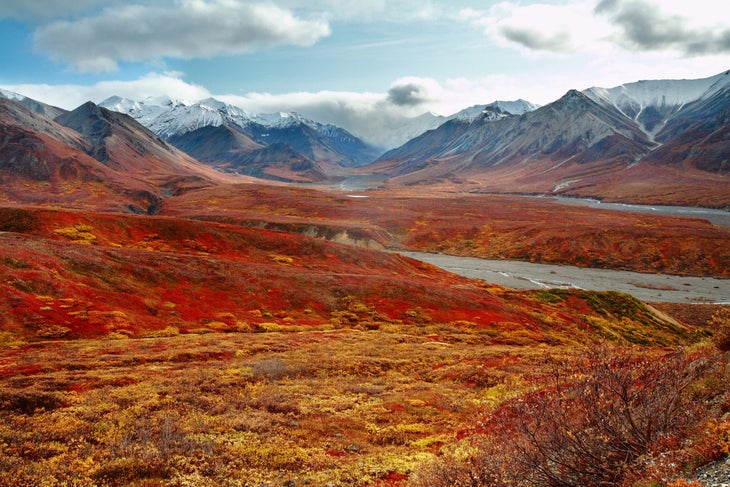
Get guaranteed mammoth wilderness in America’s wildest national park.
—Gus Axelson
I took one step into the backcountry and felt like I had been set free from a cage. It’s not that I didn’t enjoy my first year as a dad, but I needed to reconnect with the man I was before my nights were sleepless, lullaby-infused grudge matches. My wife knew it, too, so she sent me to Denali National Park, with her brother, Brett.
My timeline was naturally tight: only a few days to get my fix. So I asked a park ranger for the quickest route to badass country, and he drew up a 10-mile horseshoe crossing Gorge Creek and angling up Sunrise Creek to the Sunrise Glacier, where we’d pick our way through to a pass and then return via Green Dome to Thorofare Pass.
From the Eielson Visitor Center, we picked our way southwest down a steep ridge toward Gorge Creek. Minutes into the trip, I nearly stepped in a pile of soapberry-filled bear scat the size of horse manure. Bingo—instant wilderness on a larger scale than I’d ever encountered.
At about mile three, we forded a quarter-mile-wide braid of the Thorofare River. Two miles later, I stood beneath a 20-foot-tall wall of blue ice, a dark maw at its base where meltwater surged into Sunrise Creek. We camped upvalley, hemmed in by rock and ice and 7,000-foot peaks.
The next day, the morning sun lit our path: a steep 1,000- foot ridge we’d need to climb to find the pass. Halfway up, rubble trundled from above. A baseball-size rock hit my ankle. Then a volleyball-like rock careened past, exploding upon impact, right where we’d camped. I’d asked for wild, and got it. New priority: making it home safely to my son. We retreated and camped in a small side valley.
The next morning, I got up early to cook breakfast. As I mixed pancake batter, I noticed a boulder in the willows. Then the boulder moved. Bear! We yelled and waved. I was dusted with mix, a human Krispy Kreme. Finally, she turned slowly like a freighter and plodded away.
So when you need a big dose of badass, come to Denali . Maybe you’ll score a permit for Sunrise Creek, maybe not. But it doesn’t matter: Any 10 miles here will do.
Big Sky Country
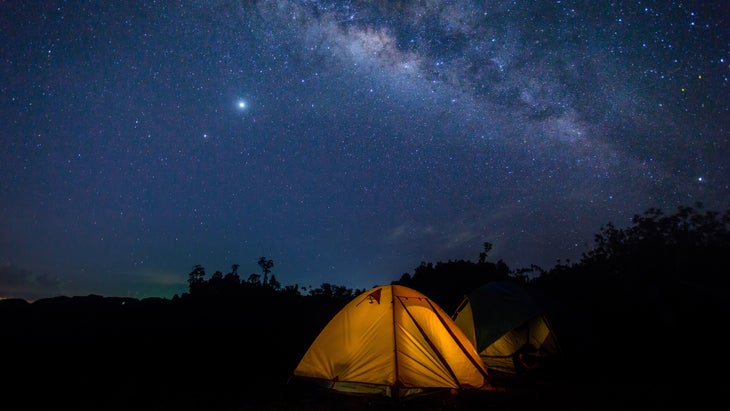
Alaska’s wide-open skies, when the weather is good, are perfect for stargazing—and, in Denali, almost free of light pollution. What’s visible in the night sky changes with the seasons, but during peak summer camping season, there’s a few easy-to-identify patterns in the northern hemisphere. The easiest to find is the big dipper, Ursa Major. Follow the two stars at the front of the “dipper” to find the North Star, Polaris, and the constellation Ursa Minor. Though it is almost always referred to in the singular, the North Star, Polaris, is actually a triple star system; Polaris A, the primary star, is a yellow supergiant, while the smaller Polaris B and Polaris Ab are both dwarf stars. If you’re lucky, you might spot another famous Alaska attraction–the Northern Lights.
Take the park bus to Eielson Visitor Center. Head south on a trail towards Gorge Creek, which peters out about halfway there. The rest of the route is off-trail, so bring your map and compass. The first waypoint past Gorge Creek is Sunrise Creek. From there, head uphill to Sunrise Glacier, then head over a pass to Green Dome and then Thorofare Pass, where you can pick up the park shuttle again.
Titcomb Basin Trail, Wind River Range
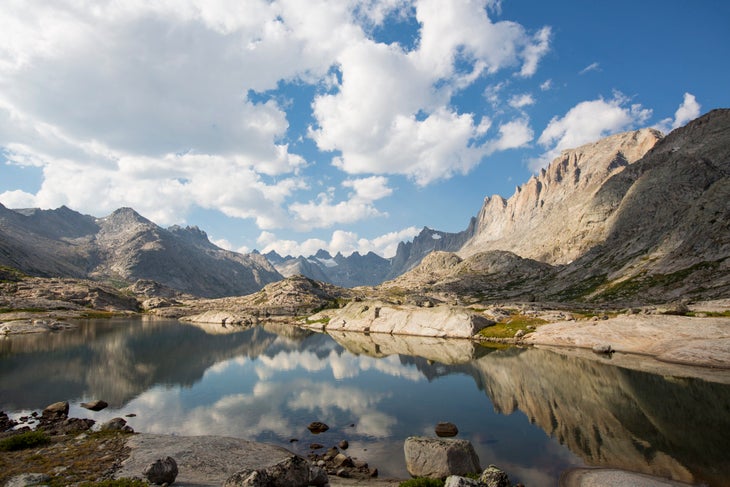
Head to Wyoming to trek beneath North America’s most beautiful alpine ridge.
—Mark Jenkins
Maybe I shouldn’t admit this, but … I don’t like trees. After hiking a few fabled sections of the Appalachian Trail and not once getting a decent panorama—just buggy, in-your-face leaves—I gave up green tunnels. Give me rock, ice, and skies as big and fickle as my imagination—brilliant blue in the morning, billowing black by afternoon.
If you want to see earth like this, buck naked but for the skimpiest bikini of alpine flowers, there’s no better place than the Titcomb Basin Trail in the Wind River Range of north-central Wyoming. But you’re going to have to pay for it. It’s a 12-mile slog uphill to reach Titcomb Basin. Starting at the 8,800-foot Elkhart Park trailhead just above Fremont Lake on the west side of the range, you march through scraggly pine forests and humpy rock outcrops for 11 miles to reach the south end of Island Lake, hook onto the Indian Pass Trail for one mile, then camp at any of the three major Titcomb Lakes. I’ve skied it and hiked it and postholed it, and it’s a bloody long day any way you split it. But once you’re there—as long as you’ve had the good sense to go before or after July, when the hypertrophic mosquitoes plunder the place—the 10,500-foot Titcomb Basin is peerless.
Titcomb Basin (pronounced tit-come and named after brothers Charles and Harold, who explored the area in 1901) is a classic U-shaped, glacier-bulldozed valley. Hiking north from the southernmost Titcomb Lake, you pass through teal-green tundra with one of the most stunning ridge crests in the United States high above you. I’ve hiked trails from Tibet to Timbuktu and found nothing more gorgeous. Fremont Peak, with its multiple faces and gendarmes, is a Picasso of an attractive but dangerous woman; then Mt. Sacagawea, with her long, dark, sadly beautiful face; then the punk-rock coiffure of Mt. Helen. To the west are the Titcomb Needles, the Great Needle, The Buttress. After four miles, the official trail ends and you’re on your own. The balance of your 10 miles comes in above-treeline, off-trail striding and scrambling that will spoil you forever. Hop boulders and skip through flowering meadows for a few more miles until you find yourself encircled by granite and glaciers, an orgy of mountains. Now climb one of the peaks. Doesn’t matter whether it’s a technical ascent or a hike. You’ll get the view of a lifetime. What’s more perfect than that?
Granite, Granite, and more Granite

Titcomb Basin was carved from the 2-3 billion year old granites and metasedimentary batholiths (large blocks of sedimentary rocks like sandstones and mudstones that have been lightly metamorphosed) of the Wind Rivers by the Pinedale Ice Cap during the last glacial maximum. Much of the visible rock is granite or similar; the metasedimentary rocks are in the “basement” of the range, below the exposed layers. All that granite, though, makes for amazing views and climbing, and the sharp-edged peaks the Wind Rivers are famous for.
Start at the Elkhart Park Trailhead. Follow the Pole Creek Trail through lodgepole pines to Photographer’s Point at mile 4.5, where you get views of some of the highest summits in the Wind Rivers. The trail then descends to Eklund Lake. Take a left at the junction here towards Seneca Lake. Seneca Lake makes a good first camp for many backpackers. Go left from the lake to heads up to Lost Lake. From there, follow the signs to Island Lake at mile 16.1. Camp here and spend as many days as you want exploring the trails running through the basin.
Grayson Highlands State Park, VA
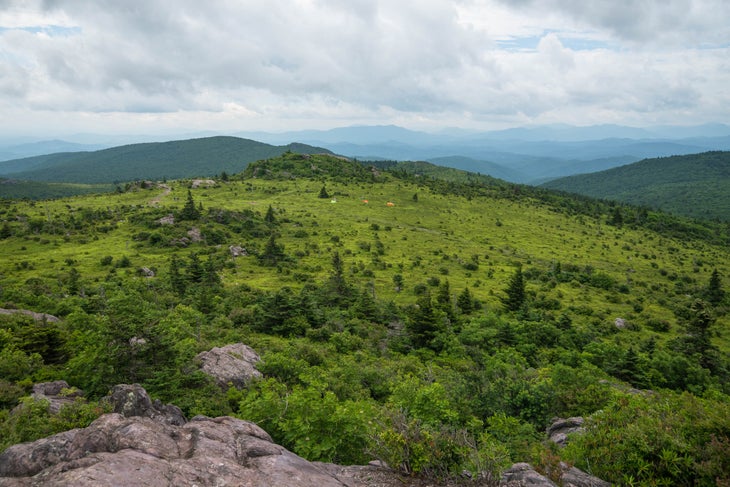
Score big rewards for little effort.
–Jennifer Pharr Davis, as told to Ellie Levitt
In six years of hiking, including treks on six continents and speed records on the Long and Appalachian Trails, I’ve seen my share of jawdropping vistas. But when I want a soul-satisfying hike I can count on year in, year out, I always return to this 10-miler in Virginia’s uplands.
It has a sky big enough to rival any in Montana, a heavenly blue that arcs over an open grassland with rocky outcroppings laced with rhododendrons in June. This loop combines creekside rambling, top-of-a-grassy-world views, trailside waterfalls, rhododendron tunnels, blueberry patches, and wild ponies. Step for step, it’s the most rewarding place I’ve ever been.
You could exhaust a memory card by mile six, where a sidehike leads to to 20-foot Cabin Creek Falls. Take your time—it’s just four miles back to the trailhead, and it’s best hiked at sunset.
Where the Wild Horses Are

The wild ponies of Grayson Highlands were released there by the US Forest Service in 1975 to control runaway brush growth around the park’s iconic balds. The herd has thrived there, and there are now about 150 of them roaming the forests and ridgelines of the highlands. The same year they were released, the Wilburn Ridge Pony Association was created to make sure that they stay in balance with the local ecosystem and keep the population from exploding.
Mt. Whitney, CA
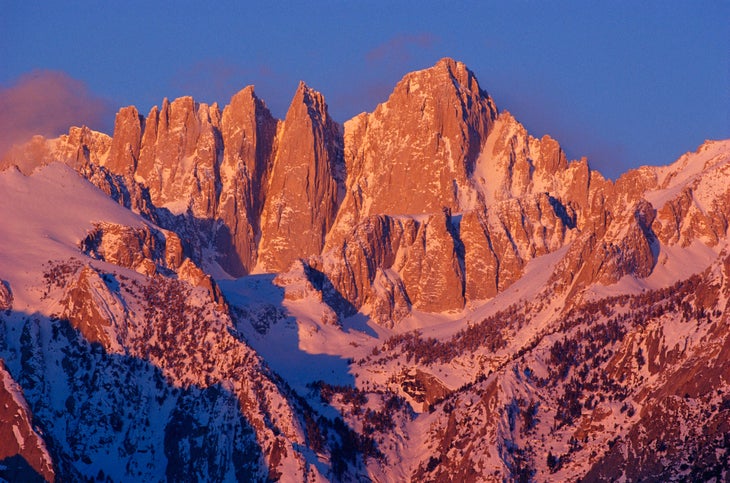
Experience the highest point in the Lower 48 through different eyes.
—Trevor Thomas, as told to Casey Lyons
No blind person had stood on top of Mt. Whitney before. Ever. I planned my PCT thru-hike so my two partners and I would be there on June 27, Helen Keller’s birthday (we made better time and went through six days early).
We wanted to start from Guitar Lake, but we heard that’s where the snowline was and we didn’t want to sleep on ice. So we began at a camp a mile past the Crabtree Ranger Station, following the John Muir Trail for five miles and 3,700 vertical feet to the summit—and the same back down.
This isn’t the normal summit slog from Whitney Portal . We would climb the peak on the backside’s deep wilderness, and rise steeply above treeline and the half-dozen tarns that pool below this scree-laced tower. The guidebooks all rave about the scenery—a great stretch of serrated, gray-brown peaks linked together like teeth on a giant chain saw—but I experience it in a different way.
When I hike, I navigate by passive echolocation, like a bat, listening to the sounds I make come back to me. Whether it’s us talking or rocks tumbling nearby, it gives me a signature, and I have a basic idea of what my surroundings will be like—whether it’s open or there’s a cliff. Normally, I tune in on the footfalls of the hiker in front of me and put my foot exactly where he did. But when we got to Guitar Lake, we hit snow, and in such an open bowl, the sound carries. I could tell it was huge, but it was hard to judge exactly where to step.
Halfway up the face, the slope steepened to 40 degrees and I knew it. My feet are so sensitive now that I can feel the paint lines on the sides of the roads through my boots, and I know when the snowpack is unstable. It was dicey, but I took it slowly until the slope flattened over the last cornice.
The sound was incredible. It was like a vacuum, and I knew there was nothing above or beside me. Sheer openness. People ask me: Why climb if you can’t see what’s there? I can’t see the view, but I can feel it. I use my other senses to take in a mountaintop. I think of the smells, the wind, the sun on my face. That summit is the most beautiful thing I’ve ever felt—and my sighted partners agree.
How Hard is It to Climb Mt. Whitney?

About 30,000 people try to summit Mt. Whitney every year, but only about 10,000 succeed. To keep the trail from becoming overcrowded, Inyo National Forest now runs a lottery for the tickets. But what makes that failure rate so high? The first factor is elevation—at 14,505 feet, Whitney is 65 feet taller than the next-highest mountain in the contiguous United States, Colorado’s Mt. Elbert. That elevation can be a challenge for hikers, especially since most of them are coming from sea level and many try to summit and return in just one day. In the summer, weather contributes too, with storms often building in the afternoon and turning back hikers who started their climb late. Finally, there’s fitness. With 6,000 feet of elevation gain, climbing Whitney is no walk in the park, and hikers are often unprepared for how strenuous the journey will be.
From the Whitney Portal Trailhead, start heading up towards the peaks. Some hikers stop at Outpost Camp, at mile 3.75, or Trail Camp, at mile 6, to extend their time in the “Whitney Zone” by a day or more; the incredible scenery is well worth the slower pace. Continue climbing, eventually following the exposed ridge of the peak, until you reach the summit at mile 10.4.
Popular on Backpacker

Join Outside+ to get access to exclusive content, 1,000s of training plans, and more.
Healthy Living
- Clean Eating
- Vegetarian Times
- Yoga Journal
- Fly Fishing Film Tour
- National Park Trips
- Warren Miller
- Fastest Known Time
- Trail Runner
- Women's Running
- Bicycle Retailer & Industry News
- FinisherPix
- Outside Events Cycling Series
- Outside Shop
© 2024 Outside Interactive, Inc

Backpacking in North America
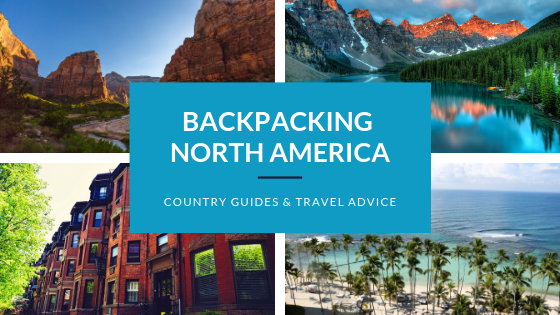
Spanning from the arctic region of Northern Canada to the jungles of Southern Mexico, the continental landmass of North America is home to many well-trodden backpacking trails , but there is still so much to discover. Between the awe-inspiring national parks, sprawling metropolitan cities, and charming towns, there is so much to discover in this part of the world. Once you get your bearings, the tourist infrastructure is fairly built out making North America a great place to go backpacking.
Nevertheless, because the expanse is so large and the diversity so great, backpacking in North American can be disorienting for visitors. You’ll have to check out our country guides below for details for the USA, Canada, and Mexico. However, there are a few key Apps and websites that will help your trip run smoothly no matter where you wander while backpacking in North America
How to Travel Around North America
The distances can be enormous, so chances are you’ll have to take a few plane trips. Skyscanner is a great site to use to find the cheapest flights .
To learn more about transport options in the USA and Canada, see our articles about bus travel and train travel in the USA
Budget Accommodation and Hostels in North America
CouchSurfing is a great community that connects travellers with local hosts. HostelWorld has the largest inventory of hostels in North America, with millions of reviews from fellow backpackers. And Booking.com has lots of advanced search and filters for finding hostels, hotels , and unique accommodation while backpacking in the USA, Canada, and Mexico.
Unique Activities in North America
Get your Guide is a popular site to book tours, skip the line tickets for crowded sites, or just to get ideas of common activities in various locations. Viator is another similar activity and tour search website.
And for those backpacking North America alone who want to join a small group tour, or for adventure activities which require a guide, G Adventures is highly recommended.
Backpacking Travel Insurance
As for any trip abroad, it is crucial to take out travel insurance for your trip to North America. World Nomads is the company recommended by Lonely Planet & Contiki .
Backpacking Countries in North America
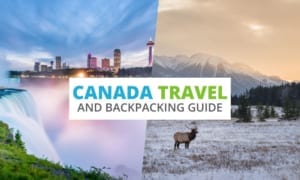
Discover More

How To Explore New York As A Budget Traveler
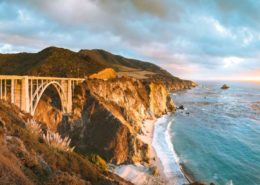

The Enigmatic Pacific Coast Highway, Or, As Some Call It, PCH
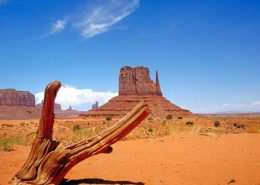
The Ultimate Southwest Road Trip (+ Auto Rental Tips)
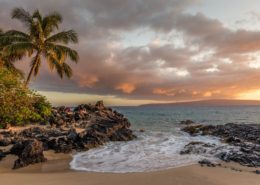
The Best Ways To Travel on a Budget to Hawaii
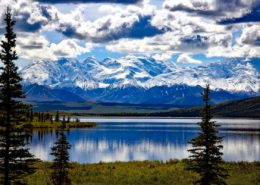
Top 15 Most Iconic Places to Visit in the USA
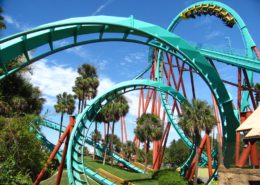
4 Thrilling Florida Theme Parks
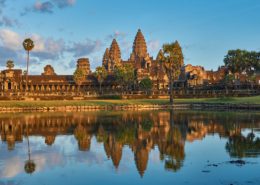
8 Adventure Destinations for Your Travel Bucket List
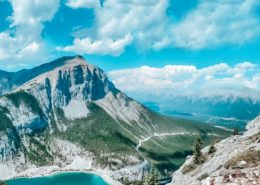
The Best Day Hikes in Alberta Canada to Avoid the Crowds
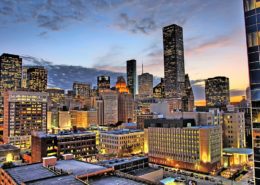
Houston’s Hidden Gems: Off-The-Beaten-Path Spots to Visit

Top 7 Things to Do in Treasure Island Las Vegas
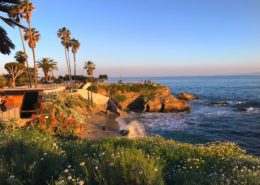
San Diego Visitor’s Guide
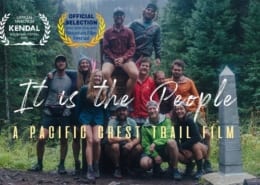
12 Hiking Movies and Documentaries to Inspire Your Adventures
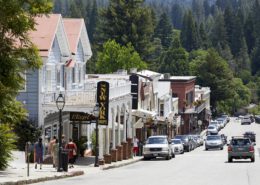
17 Incredible Day Trips from Sacramento
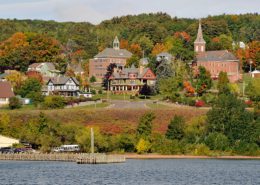
17 Best Day Trips from Minneapolis
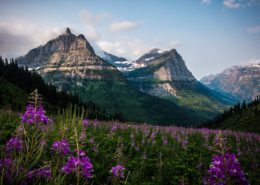
The Best Hiking Road Trips in the USA
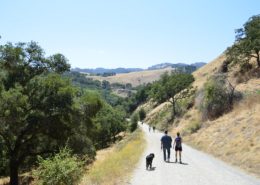
12 Dog-Friendly Hikes in the East Bay
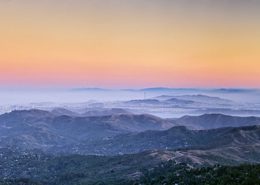
The Best Hikes in the San Francisco Bay Area with Panoramic Views

10 Best Walks in San Francisco with a View
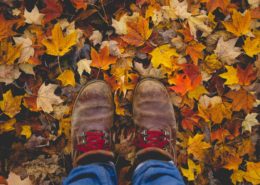
A Parent’s Guide to Taking Kids Backpacking in Michigan
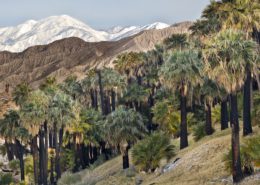
The 7 Best Hikes in Palm Springs to Get off the Beaten Path
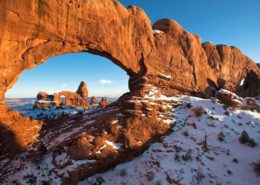
The 5 Most Stunning US National Parks to Visit in Winter

The Best Travel Destinations For Horse Racing Fans
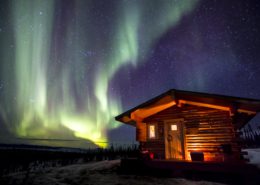
Best Places for a Family Trip to the Northern Lights
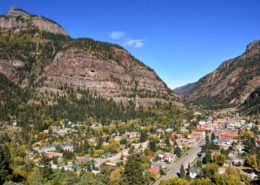
8 Perfectly Hidden Gems in Colorado
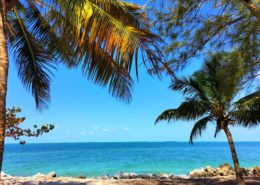
12 of the Best Day Trips from Miami
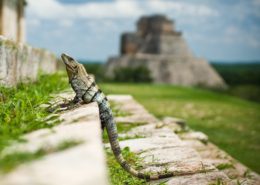
The 10 Best Day Trips from Merida Mexico
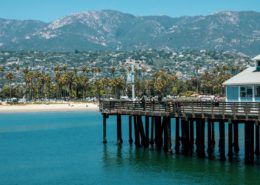
11 Unique Hidden Gems in Santa Barbara
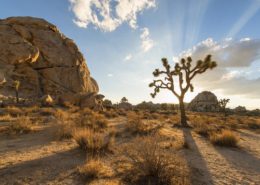
Best Hikes in Joshua Tree National Park
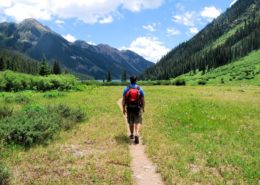
How to Save Money While Traveling in Colorado on a Budget

Hidden Gems in Boston – A Local Insider’s Guide

The Ultimate Historical Boston Bucket List
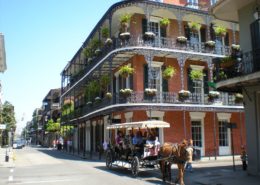
The Best Outdoor Activities in New Orleans
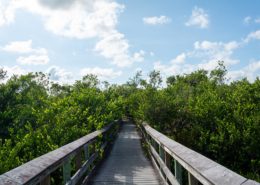
7 Of The Best Places To Go Hiking in Miami
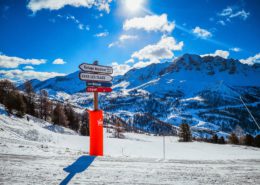
Work and Travel Jobs: Working a Season at a Ski Resort
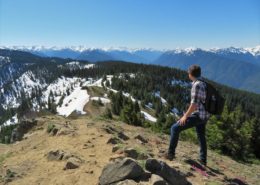
Best backpacking trails in the USA: A definitive guide

Moving To The US: What You Need To Know
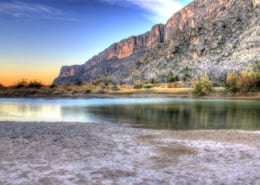
Best Places to go Backpacking in Winter in the US
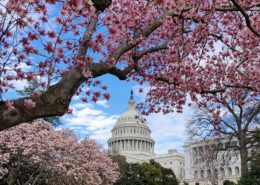
The Most Beautiful Public Gardens in Washington, DC
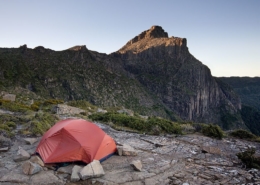
Safety Tips when Backpacking in the Backcountry
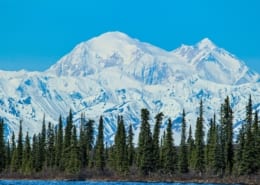
Top 5 Best Things To Do In Denali National Park
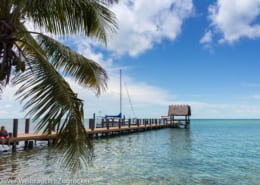
Four Natural Wonders of Florida
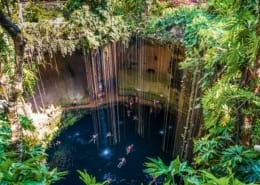
Tulum off the Beaten Path: 10 Day Trips from Tulum

7 Hidden Gems in St Louis off the Beaten Path

7 Top Wine Destination Ideas for all Budgets
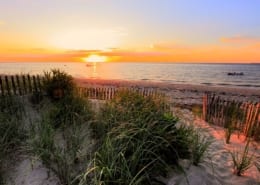
30 Short Weekend Road Trips from NYC

How to Work in Exchange for Free Accommodation in the USA
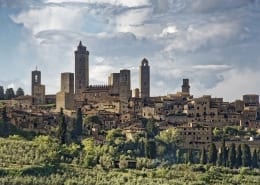
Where to Travel in September
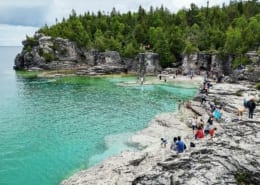
9 Surprising Hidden Gems In Ontario
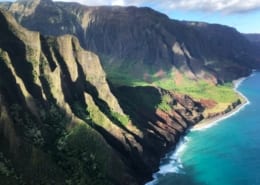
Things to do in Kauai for Free
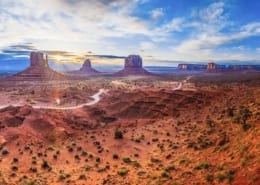
7 Cross-Country American Road Trip Holidays
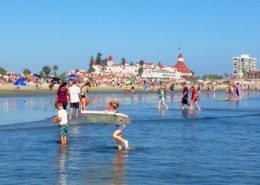
The Ultimate San Diego Bucket List
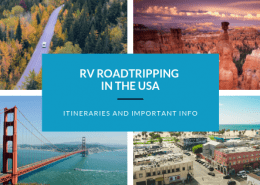
How to Travel the USA by RV – Expert Tips & Itineraries
I love reading your site.
Leave a Reply
Leave a reply cancel reply.
Your email address will not be published. Required fields are marked *

Best Outdoor Gear for Hiking, Camping, Backpacking Trips
The 7 Most Amazing, Best Backpacking Trips in America
the 7 best backpacking trips & trails in the united states of america., state-by-state guide to explore you must see.
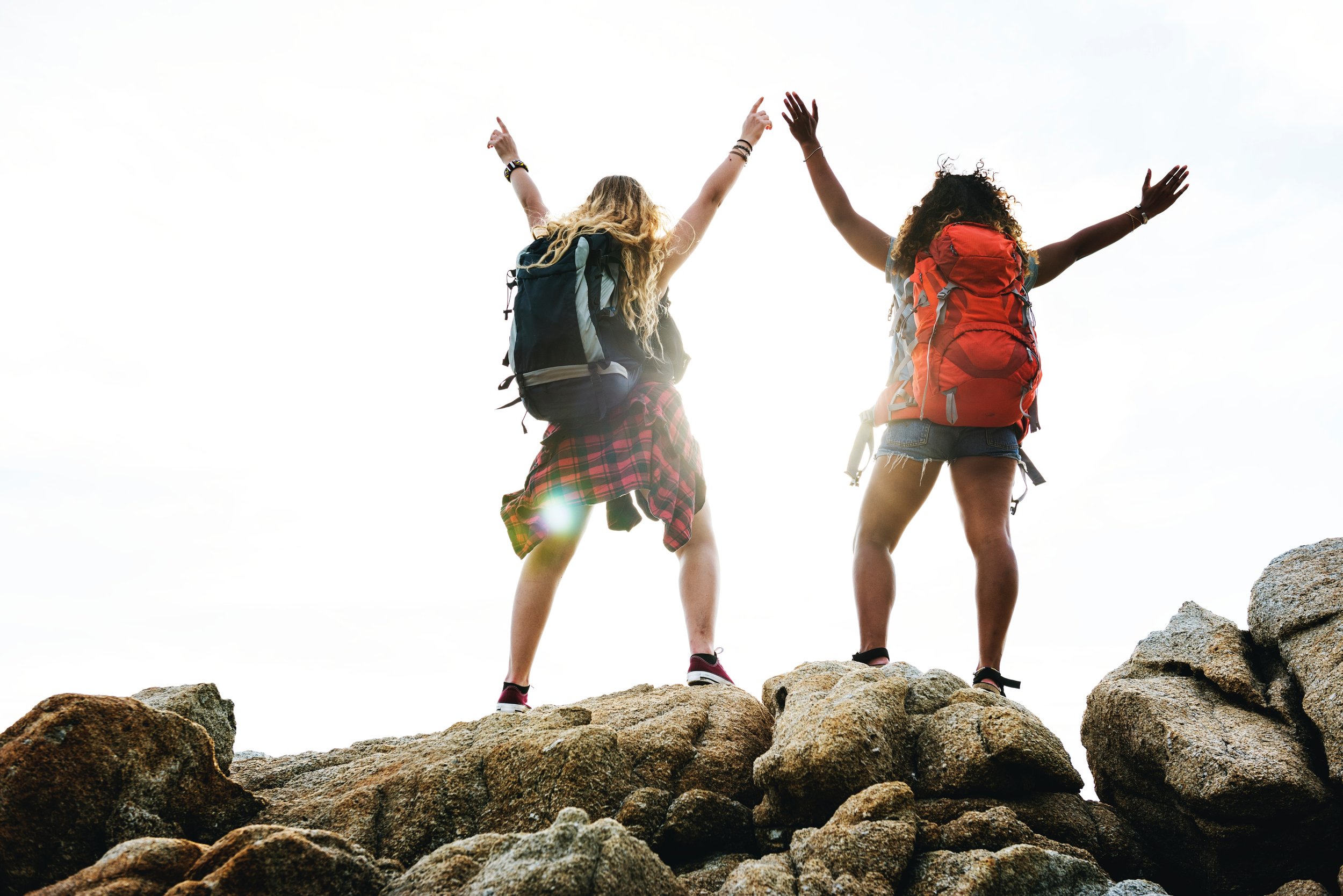
the best backpacking trips, trails, and places to visit in america : list by angeloutdoors.com
Want to know what are the best, most amazing (and beautiful) backpacking trips in America? Here we go.
The United States of America is the backpacker’s playground. All across the country you’ll find unique terrain, stunning views and incredible solitude. And that’s why it’s such a challenge to pick the best backpacking trips in America .
There are so many incredible trails that provide one-of-a-kind outdoor experiences.
In this guide, we show you what are the best backpacking trips and trails you can visit in the USA.
Here you will find:.
The top six backpacking trips for beginner, intermediate and expert hikers.
Best times to go on each trip.
Typical duration of each trip.
The difficulty of each trip
The distance you can plan to hike.
We also want you to use this backpacking guide to explore the top backpacking and hiking opportunities from states such as:
The State of Maine
The State of Washington
The State of New York
The State of North Dakota
The State of Utah
The State of Colorado
The State of California
Specifically, we singled out the best backpacking trips by region including the Pacific Northwest, the Mountain West, the Northeast, Midwest, Southwest and Southeast. This list includes a backpacking trip in every corner of the Lower 48 states.
If we had to nudge you in a direction, it’d be these six trips. Any of these trails and backcountry areas represent some of the most awe-inspiring and absolute best backpacking trips in America.
#1: Maine’s 100 Mile Wilderness – Northeast –
“maine’s best hiking trail.”, a quick guide to maine’s 100-mile wilderness trails:.
Best Time to Go : July, August and early Fall
Elevation Gain : 18,000 feet
Duration : 6-12 days
Difficulty : Expert
Distance : 100 miles
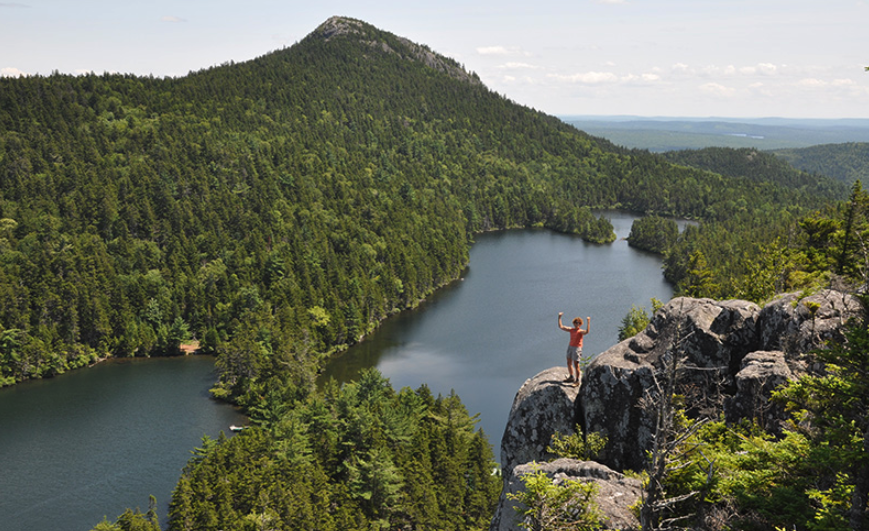
The #1 BEST-RANKED OUTDOOR BACKPACKING TRIPS AND TRAILS
The 100 Mile Wilderness backpacking trail is just as rugged and wild as the name suggests. This isn’t a trip for the faint of heart. It’s 100 miles of muddy, buggy backcountry terrain. But even so, the adventure is well-worth the pain.
Here’s why : the 100 Mile Wilderness is the final leg of the Appalachian Trail (“AT”), aside from the final 15 miles in Baxter State Park. In fact, it’s the only stretch of the AT that doesn’t cross a paved road. And along the route, hikers are treated to stunning vistas, cascading waterfalls, sandy beaches, and even the occasional moose. In other words, it’s the ultimate way to experience the Maine Woods; rugged, wild and serene.
Of course, you’ll be hiking part of the AT, and that means trail traffic. During July and August, the 100 Mile Wilderness it receives its fair share of visitors, especially in July and August. Even so, you’ll still find quietude and the ultimate endurance test.
The trip requires careful planning, the right mix of gear, and a certain level of physical fitness. But if you do it right, the last 100 miles of the Appalachian Trail delivers a backpacking experience that’s equal parts challenging and rewarding.
How to Get to Maine’s 100 Mile Wilderness:
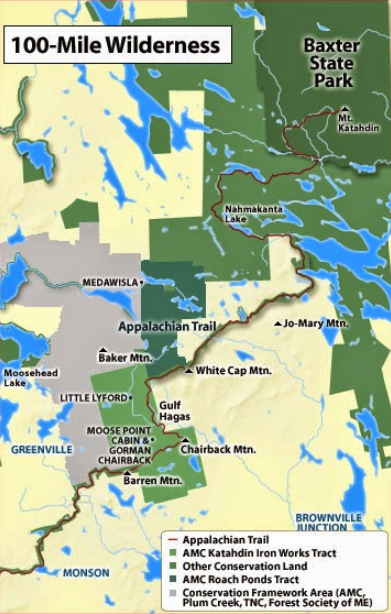
Maine’s 100-Mile Wilderness MAP AND TRAIL
You can travel south to north (Munson, ME to Abol Bridge), or vice versa. The Wilderness’s northern terminus is the edge of Baxter State Park. There are shuttles on either end that will get you to the trailhead. Shaw’s Hiker Hostel and the Appalachian Trail Lodge, for example, can help, and there are numerous outfitters too.
What to Expect
To say this hike is strenuous, is putting it lightly. Not only does the trail gain 18,000 feet in elevation, but weather in the North Maine Woods is notoriously unpredictable. That means two things: You need to pack for cold and wet weather, and a weather-tight shelter is a must.
Camping: Typically, the route takes 6-12 days. And many outfitters will provide food drops along the way. (Food caching is great for cutting pack weight). There are 13 lean-tos in the Wilderness, as well as several campsites, which are available on a first-come, first-served basis.
Permitting: Like most sections of the AT, you don’t need a permit to access the trail. Yet, if you plan to travel into Baxter State Park and summit Mount Katahdin, you’ll have to pay the entrance fees and obtain an AT Hiker Permit Card, which is available at the Katahdin Stream Campground.
Food Caching: Coordinate with an outfitting company on food drops and shuttle service (in case you have to pull out). There are many logging roads that traverse the trail; outfitters offer food drops and shuttles at many of these crossing points. Fortunately, cell coverage can be found along the route, in case of an emergency.
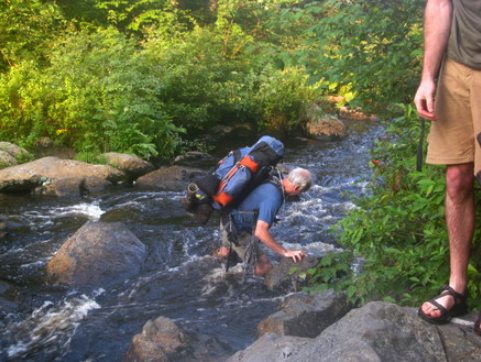
BEST TRAIL IN AMERICA FOR BACKPACKING AND HIKING: MAINE 100-Miler
Weather: The weather can be unpredictable. In spring, the trail gets washed out and muddy, and the black flies start biting in June. Rain is common throughout the summer, and at any time, temperatures can fall significantly overnight.
Maps and Info: The Appalachian Trail Conservancy is a rich source of information. Also, the Appalachian Mountain Club’s map is one of the best.
Bottom line: The 100 Mile Wilderness is one of the Northeast’s most challenging backpacking trips. If you’re in search of an adventure, you’ll find it here.
#2: Wonderland Trail – Pacific Northwest –
“a bucket list trip” for northwest america, a quick guide to wonderland trail (mount rainier national park):.
Best Time to Go : mid-July to mid-September
Elevation Gain : 23,000 feet
Duration : 9-13 days
Distance : 93 miles
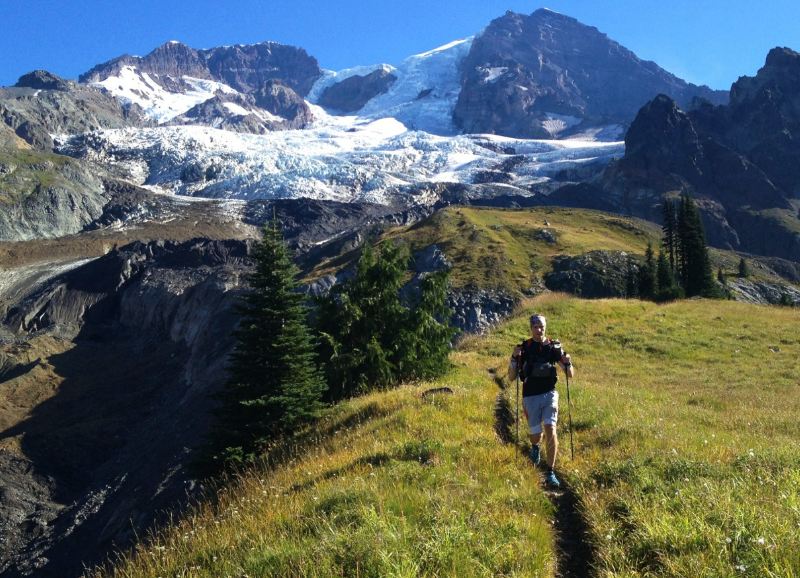
Mount RAINIER NATIONAL PARK: WONDERLAND TRAIL REVIEW
This Mount Rainier National Park trail will quite-literally transport you to Wonderland. No joke.
The terrain – which includes fog-blanketed old-growth rainforest, sub-alpine meadows, glacial lakes, waterfalls and canyons – feels otherworldly. But Mount Rainier is the star of the show. Anywhere on the trail, you’ll be rewarded with epic panoramas of the iconic peak.
This isn’t a trek for the uninitiated, though. Wonderland is a massive challenge that will push your limits. The ascents and descents, nearly 23,000 feet in total elevation gain, can drain even the most experienced. Mosquitos and black flies bite with reckless abandon until after Labor Day. And the weather tends to turn on a dime. Expect rain, cold nights, muddy trails, and a few challenging river crossings.
Yet, the adventure is worth the pain. There’s a reason Wonderland is on so many backpacker’s bucket lists. A trek in Mount Rainier is majestic, with glacial cirques (like Mowich Lake), Narnia-esque rainforests, and magic around every corner.
How to Get to the Wonderland Trail
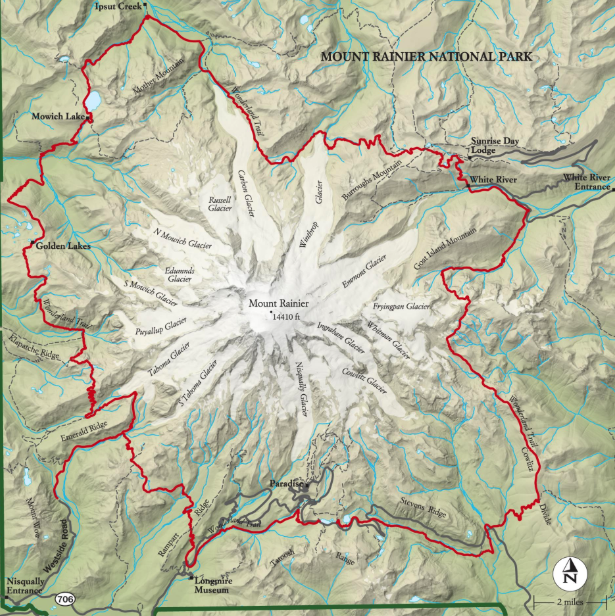
MOUNT RAINIER WONDERLAND TRAIL MAP
Wonderland has numerous trailheads. Yet, backpackers tend to prefer the five major ones: Longmire, Sunrise, White River and Box Canyon. Each of these trailheads are accessible via roads, although some, like Mowich, can be difficult to get to depending on the time of year. Longmire and Sunrise are favorites, as they offer the most services.
When hiking Wonderland, prepare for the unexpected. With so many different micro-climates – rain, cold, humidity, etc. – it’s important that you’ve packed the right gear. A weather-proofed tent is a must, and a waterproofed backpack will help keep your gear protected.
Camping: The Wonderland Trail has 18 campsites located along the route, with several individual tent sites at each. Campsites are equipped with pit toilets, bear-resistant food storage, and all are located near a water source.
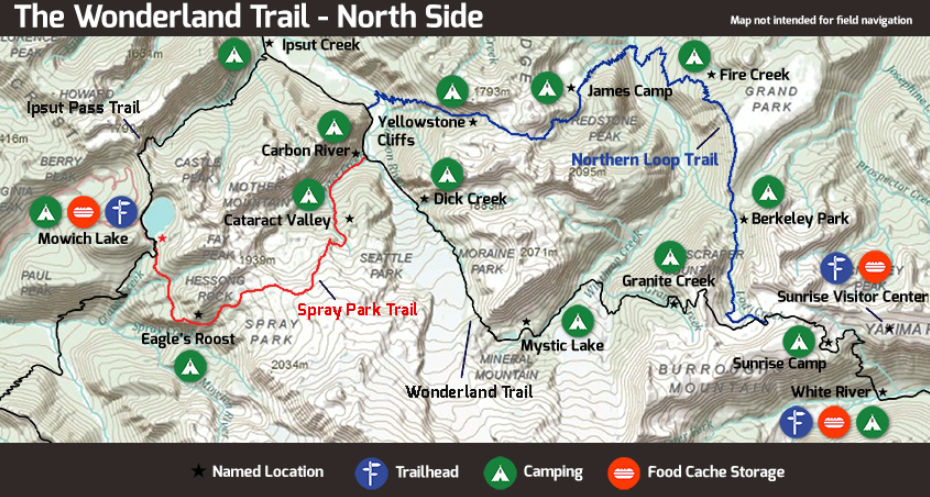
The WONDERLAND TRAIL: MOUNT RAINIER (ONE OF BEST TRAILS IN AMERICA)
Permitting: All thru-hikers on Wonderland must obtain a permit through the National Park Service. Permitting is done through a lottery system; you can sign up for priority booking March 15 to April 1. It’s highly recommended that you book in advance during the priority period. Although some walk-up passes are permitted, your odds aren’t great.
Resupply/Water: With so many ups and downs, food caching can help you keep your pack weight more comfortable. You can manually cache your own food at four sites. Plus, the Park Service allows food caches to be shipped at least two weeks prior to your take-off. Fuel caches must be manually placed. Water can be found along the trail.
Weather: The Wonderland can throw anything your way. From mid-July to mid-August, rain is common, with overnight temperatures dropping into the 40s. By mid-August, temperatures stay fairly mild, but still, it’s smart to pack for cold weather. After Labor Day, temperatures start to fall in the evenings, and snow begins its descent from higher elevations.
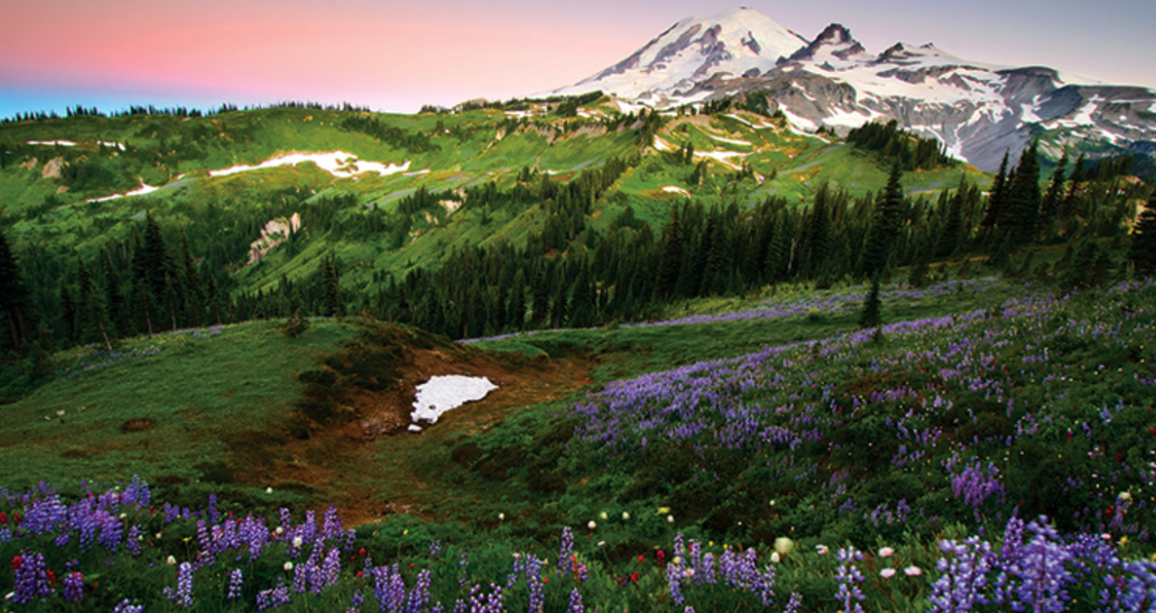
MOUNT RAINIER: ONE OF BEST TRAILS IN AMERICA FOR BACKPACKING AND HIKING.
Maps and Info: The NPS website has everything you’ll need, including maps, food caching info, road statuses, and permitting FAQs. Hiking the Wonderland Trail: The Complete Guide and National Geographic’s Wonderland Trail maps are also helpful resources.
Bottom line:
The Wonderland will challenge you with its descents and ascents. Yet, with Mount Rainier as your backdrop and majestic vistas and scenes along the way, the climbs are worth the effort!
#3: Pictured Rocks National Seashore – Midwest –
“north country trail” in america.
A Quick Guide to Pictured Rocks National Seashore:
Best Time to Go : Mid-May through October
Elevation Gain : 1,725 feet
Duration : 2-4 days
Difficulty : Beginner to Intermediate
Distance : 42 miles

Top-RANKED OUTDOOR TRAILS FOR HIKING AND BACKPACKING
The North Country Trail spans 4,600 miles from North Dakota to New York. Yet, one of its most scenic sections – the Pictured Rocks National Seashore – provides a backcountry escape unlike any other in the U.S.A. Pictured Rocks hugs the coast of Lake Superior, and its towering sandstone bluffs give the route its signature name.
This is such an expansive trail that it takes you all the way from New York to North Dakota , or vice versa.
There’s a lot to love about Pictured Rocks. For starters, it’s a moderate route – about 200 feet at its highest – and that makes it great for relatively green backpackers. And the scenery is to die for. The route takes hikers past deserted sandy beaches, majestic sandstone arches, swamps, waterfalls, and picturesque lighthouses. In fact, in some stretches, the crystal clear, turquoise water wouldn’t look out of place in Amalfi.
How to Get to Pictured Rocks National Seashore:
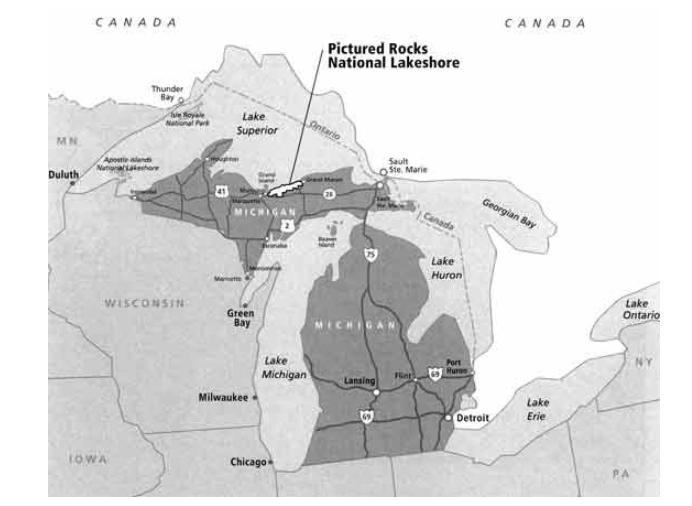
Pictured ROCKS NATIONAL SEASHORE VIEW - Michigan
Pictured Rocks runs from Grand Marais, MI to Munising, MI, and the 42-mile stretch can be reached from either end. There’s also access points throughout the route with parking, if you’d like to hike a shorter section.
Throughout the year, hikers take to the Pictured Rocks trail. The weather and trail conditions are fairly consistent, although winter does bring ice and snow. In terms of gear, pack for rain and cold; in spring and fall temperatures can drop significantly overnight, into the 40s or high-30s.
Camping: Pictured Rocks has 14 backcountry campgrounds throughout, with multiple sites at each. There are also several group camping sites that have access for 7 to 20 people. All are located near water (a stream or lake), and some have communal campfire rings. Bear canisters are also available at each site.
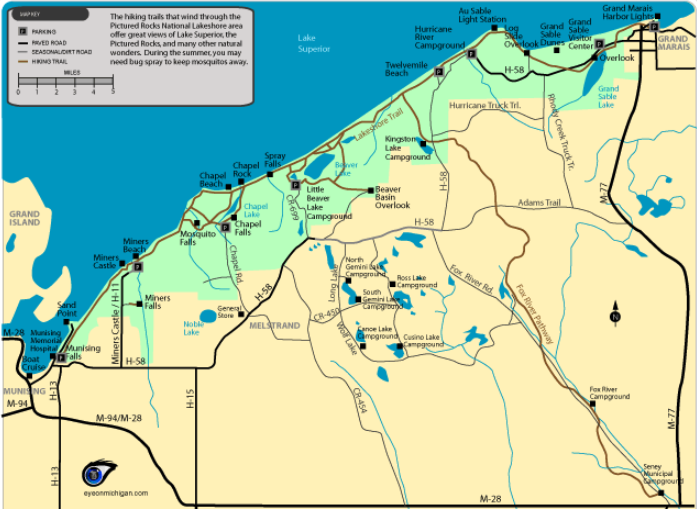
MAP OF PICTURED ROCKS NATIONAL SEASHORE - TRail
Permitting: A backcountry permit is required when hiking in Pictured Rocks. All permits can be purchased online – through recreation.gov – and permits cost $15, plus $5 per person per day.
Weather: Pictured Rocks has a fairly mild climate. The spring season starts in mid-April, with temperatures in the 40s. Overnight temperatures can fall significantly. By mid-May temperatures begin reaching into the 60s and 70s. Rain is common in spring, but begins to taper off in summer. Fall temperatures through October remain fairly moderate in the 50s.
Resupply/Water: Water sources are available at every campsite, and there are creeks and streams along the way.
Bugs: The flies can be a pain, especially from mid-May until Labor Day. Stable flies, in particular, are a nuisance. Plan spring or fall treks to avoid the flies, or plan to hike in long sleeves and netting in summer.
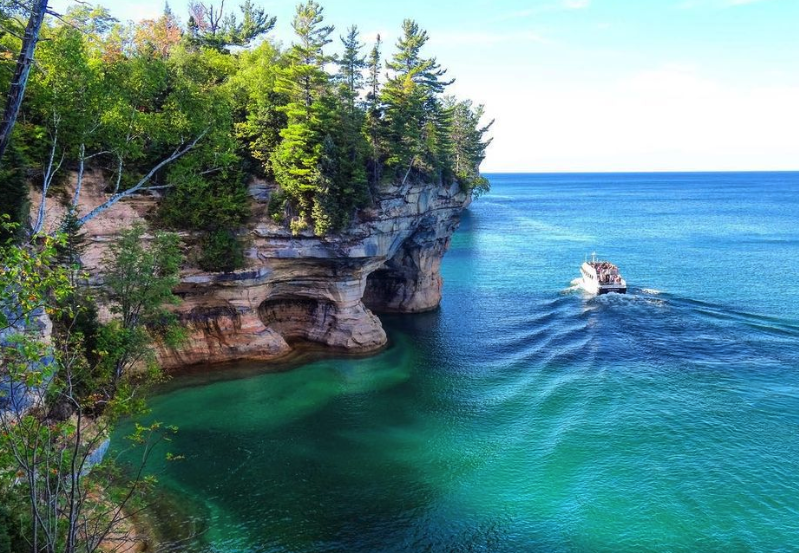
Best HIKING AND BACKPACKING TRAILS - REVIEWED
Maps and Info: The NPS website offers lots of helpful planning tips and maps. Also check out the North Country Trail Association , if you want to expend your trip. The association’s book is a great resource for North Country trekking.
Pictured Rocks National Lakeshore transports hikers to a coastal oasis that’s stunningly beautiful. It’s one of the best trips for beginner to intermediate backpackers.
#4: Benton MacKaye Trail – The Southeast –
“the best of the appalachian trails.”, a quick guide to benton mackaye trail (southeast):.
Best Time to Go : Mid-April to Mid-October
Elevation Gain : 61,000 feet
Duration : 2-3 weeks
Distance : 288 miles
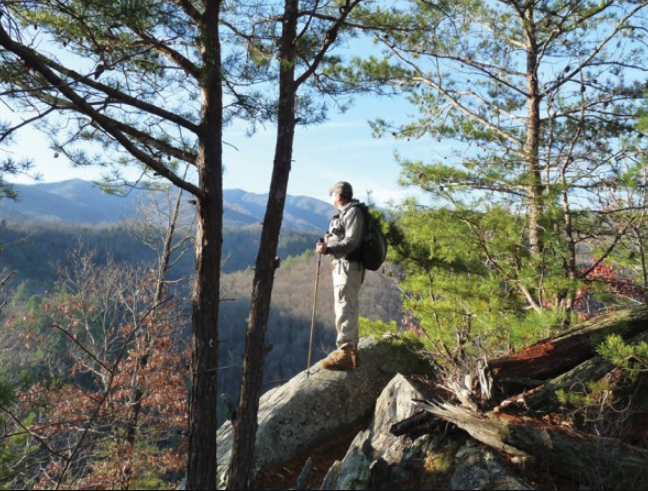
Benton MacKaye Trail - BEST OF AMERICA TRAILS FOR HIKING
The Benton MacKaye Trail (“BMT”) takes its name from the New England conservationist and forester who dreamed up the Appalachian Trail (“AT”). And it shares a lot of similarities with its sister trail. Yet, compared to the AT, which it shares a southern terminus with, the Benton MacKaye is wilder, more rugged, and decidedly less crowded. In fact, some compare it the AT experience of the 1970s.
The BMT is one of the southeast’s newest long-distance trails . It was officially opened in 2005, and it’s maintained by an army of volunteers. (Even so, in some places, it’s a bit untamed.) But thanks to being relatively new, the BMT is mostly undiscovered. No big crowds; you may go a day or two without seeing another sole.
Beyond the solitude, this is pure Appalachian hiking. You’ll wind through giant rhododendrons, cross rushing creeks, traverse eight different wilderness areas, and spend about 93 miles in the Great Smoky Mountains National Park. In short, the BMT delivers a true off-the-grid, deep backcountry experience.
How to Get to the Benton MacKaye Trail:
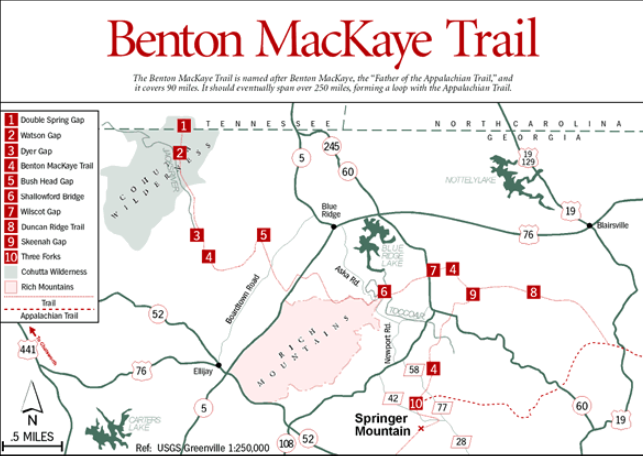
MAP of Benton MacKaye TRail - For CAMPING, Hiking, and BACKPACKING
The Benton MacKaye Trail runs from Springer Mountain in Georgia, to Davenport Gap, TN. There are numerous access points along the trail, if you’d prefer to section-hike.
Plan for a quiet adventure in some of the most remote backcountry in the southeast. The weather tends to be humid in summer, but much milder in spring and fall. And there’s resupply and camping spots throughout. The summer weather makes this a great hammock camping spot .
Camping: Unlike the AT, the Benton MacKaye only has two permanent shelters throughout its 288-mile course. Instead, plan on disperse camping. There are plenty of water sources near the trail, so you don’t have to worry about hydration.

TRAIL MAP OF BENTON MACKAYE - FOR HIKING AND BACKPACKING
Permitting: You don’t need a permit for the majority of the BMT. In Great Smoky Mountains National Park, though, hikers are required to obtain a backcountry permit. If you’re heading north, you can pick one up at Fontana Village.
Resupply/Water: The BMT’s resupply network isn’t as advanced as the AT’s, but there are numerous businesses, general stores, restaurants and inns along the route. Check out the Benton MacKaye Trail Association’s resupply resource for ideas.
Weather: The southeast can get hot in summer, so plan for humid, sometimes sweltering weather. In spring and fall – popular times to hit the trail – weather tends to be milder, but temperatures can drop overnight. Rain is also common in spring and fall.
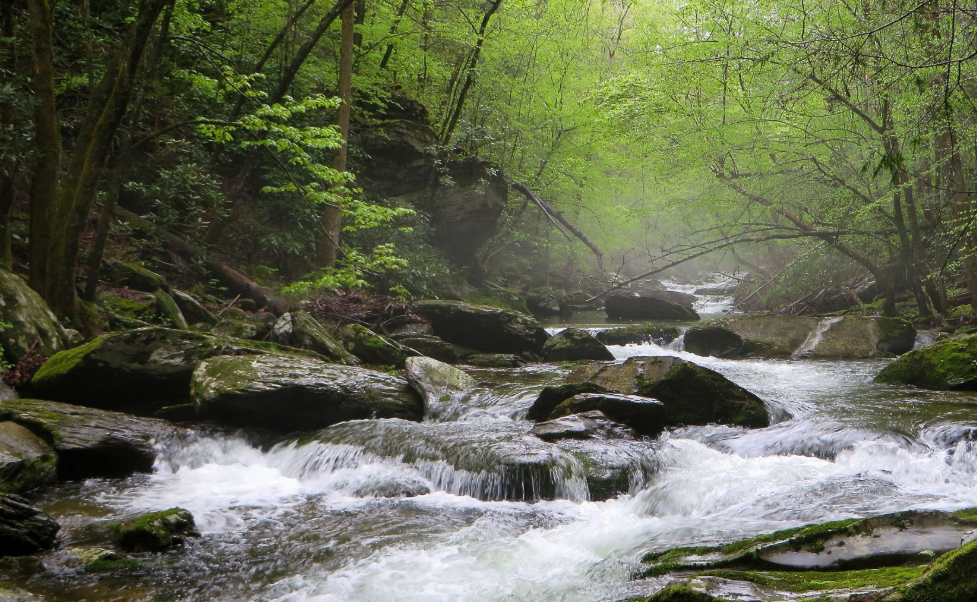
ONE OF AMERICA’S BEST PLACES TO GO BACKPACKING.
Maps and Info: The Benton MacKaye Trail Association is a wonderful source of information, and they offer several guidebooks in their store. A handy resource like the BMT Pocket Trail Profile is great for your pack, as well.
#5: The Needles – Southwest –
“the best hiking and backpacking in the desert for usa.”, a quick guide to “the needles” trail (southwest):.
Best Time to Go : Spring or Fall
Elevation Gain : >500 feet
Duration : Depends on starting point.
Difficulty : Intermediate to Expert
Distance : 60 Miles
Canyonlands National Park contains Utah’s best backpacking and hiking trails , and it receives its fair share of traffic. Yet, the majority of visitors stick to the park’s Island in the Sky district, which sits right in Moab’s backyard.
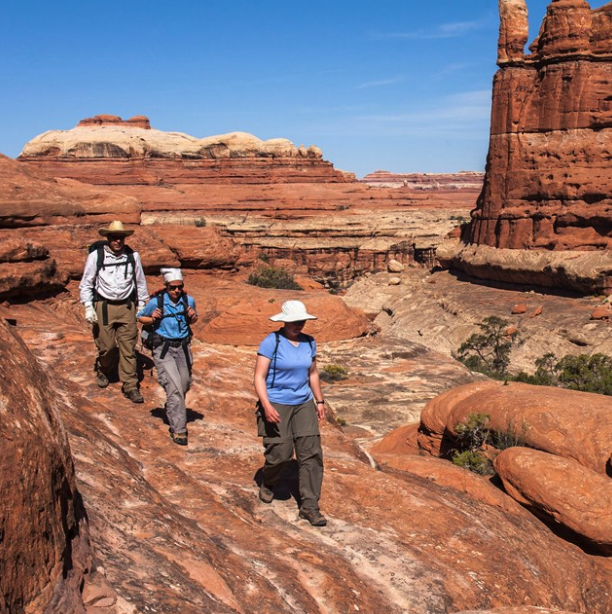
BEST BACKPACKING AND HIKING TRAIL IN UTAH - Needles in Canyonlands (UTAH)
It’s the Needles district, though, that draws backpackers and adventurers. The namesake sandstone spires, ancient ruins and awe-inducing arches make this one backpacking’s bucket list destinations.
Rugged trails crisscross the district; there are 60 miles of trail in total. And there are numerous multiday routes that show off the region’s geologic majesty. The Salt Creek Canyon, for example, offers a 22.5-mile excursion with picto-graphs, Anasazi ruins, and beautiful arches right off the trail. Many say the Chesler Park area is the park’s best. Chelser Park, when combined with Joint Trail, forms an 11-mile loop, perfect for a long day hike, or a multi-day when combined with Druid Arch Trail.
How to Get to Canyonlands Needles District:
The Needles district sits about an hour and a half south of Moab, UT. And it’s accessible by paved roads. Squaw Flat Campground serves as the primary jumping off point for the best backpacking trips in Needles.
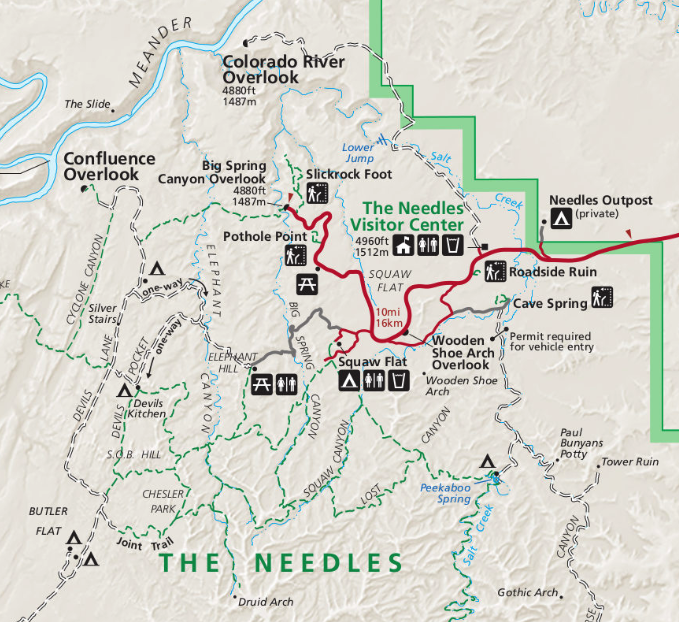
MAP OF THE NEEDLES TRAIL IN CANYONLAND (UTAH)
The Needles showcases some of the most stunning terrain in the Southwest. And it’s the ultimate in desert trekking. Of course, that means it gets hot in summer; spring and fall are the best times to travel here. Yet, if you don’t mind the heat, you’re in for a show.
Camping: The Needles requires backpackers to reserve spots in designated campgrounds. Although a few areas allow for at-large, or disperse, camping. There are several primitive backpacking campgrounds in the district, as well as several backcountry car camping spots.
Permitting: Permits are required for backcountry hiking in Canyonlands, and they can be purchased online. Demand is high in spring and fall, and advanced reservations up to four months are strongly recommended.
Resupply/Water: Water is a key resupply item, and it’s often hard to come by in many areas of The Needles. It’s highly recommended that backpackers bring any and all water that they will need.
Weather: Spring and fall offer the mildest weather in the park, with temperatures hovering into the 60s and 70s. Overnight, temperatures can get brisk. Summer can be sweltering.
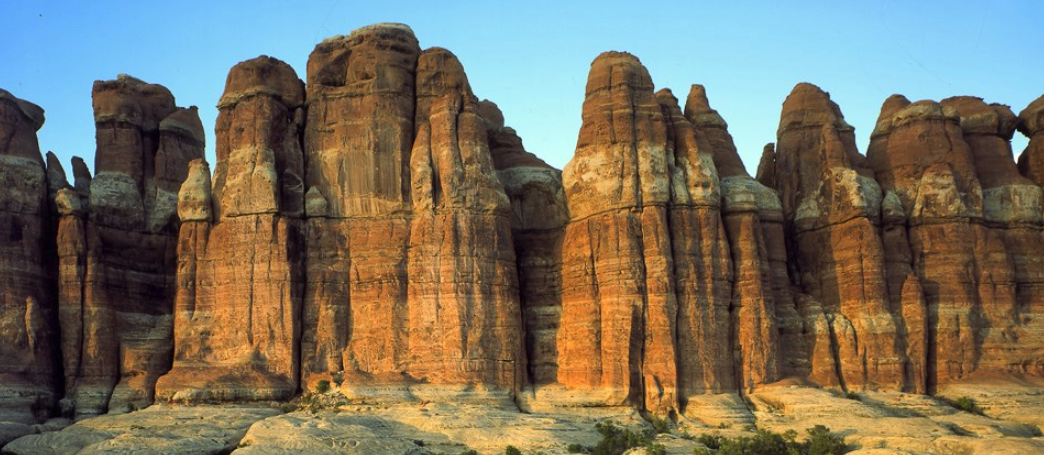
ONE OF MOST SCENIC, BEST VIEWS OF UTAH’s Top BACKPACKING TRAIl.
Maps and Info: The NPS website offers tons of great information about backpacking in Canyonlands , including maps, permitting information and other FAQs. The National Geographic map is one of the best.
The Needles is one of the most stunning landscapes in the Southwest, if not the entire U.S. And the area offers plenty of opportunities to seek solace in the desert.
#6: Four Pass Loop – Rockies –
“a colorado classic” you must see., a quick guide to the four pass loop (in the colorado rockies):.
Best Time to Go : Spring and Summer
Elevation Gain : 8,200 feet
Distance : 28 miles
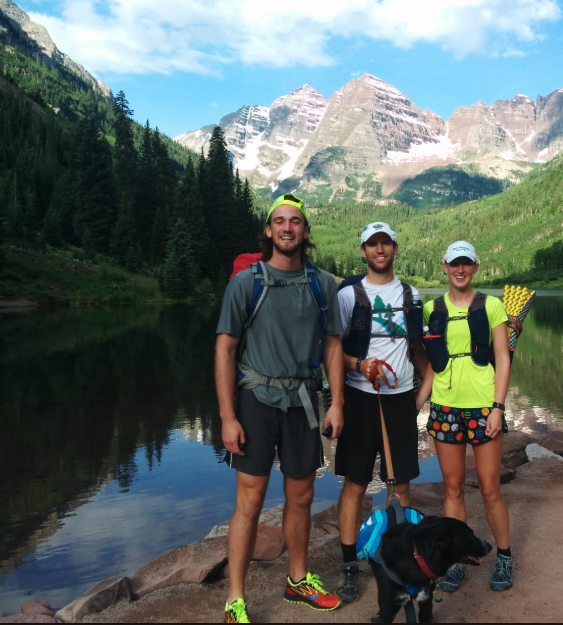
Colorado’s best hiking and backpacking trips and trails . List by Angeloutdoors.com
The Four Pass Loop in the Rockies is a high-altitude adventure and Colorado’s best for backpacking . It takes backpackers over four high-alpine passes in the Elk Mountains. Be prepared to huff and puff along the way; altitude sickness is common among the unacclimated.
Yet, if you’re up to the challenge, Four Pass Loop puts on a dazzling display of Colorado’s finest: meadows chock-full of wildflowers, alpine lakes, aspen groves, and of course, the stunning Maroon Bells. Be sure to rise early; the sun dances off the Bells in the morning.
The loop travels over four rugged passes: Frigid Air Pass, Trail Rider Pass, Buckskin Pass, and West Maroon Pass, each providing unforgettable views. If you’re looking for one of Colorado’s best backpacking trips, this is it. The Four Pass Loop is classic Colorado, and it’s highly ranked by nearly any expert backpacker.
How to Get to the Four Pass Loop (COLORADO):
The Loop is located about 45 minutes from downtown Aspen. In summer, you can park at West Maroon Portal in the White River National Forest; but be advised, parking is only permitted in the morning and evenings during summer. If you’re arriving later in the day, a shuttle is available from Aspen Highlands resort. Most take off from Maroon Lake, and you can travel clockwise or counterclockwise.
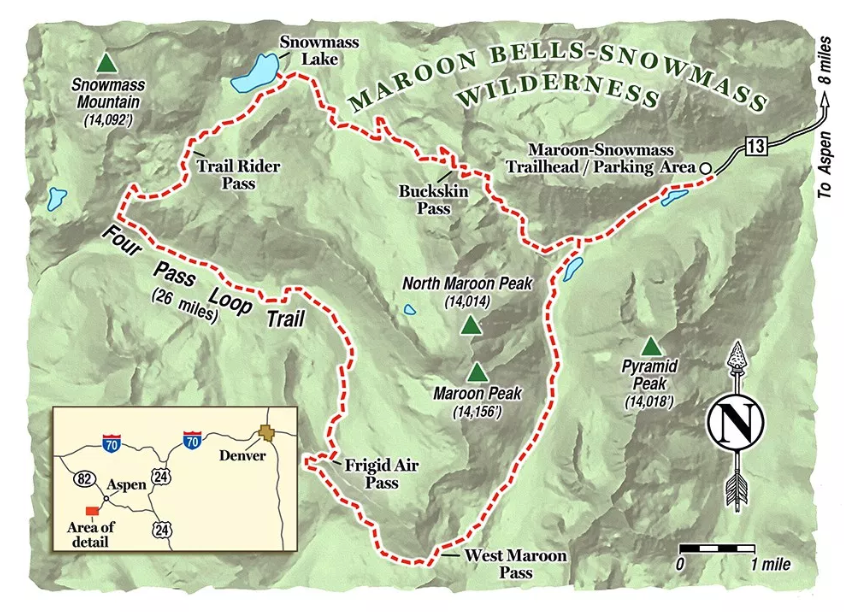
top hiking trails and trips in the rocky mountains.
The Four Pass Loop is a show-stopper. The grey and auburn-hued peaks are stunning, and the trail couldn’t be more well-maintained. It’s quite popular in summer; but if you don’t mind the cold, fall is best, when the aspens start changing. Just be sure to bring a cold weather sleeping bag and a tent designed for the extremes .
Camping: Disperse camping is not allowed in the recreation area. Yet, there are numerous campsites along the trail, each of which are clearly marked. Campsites cannot be reserved, so it’s recommended to arrive in camp early to find a spot.
Permitting: Permits are required for overnighting in the Maroon Bells-Snowmass Wilderness. Permits are free, and guests are required to self-register at the trailhead.
Resupply/Water: There are several water sources in the area, including Maroon Lake.

how, when, and why you should visit colorado for hiking and backpacking trips.
Weather: Weather is unpredictable in the Elk Mountains. It’s best to travel early in the day, as torrential rains and hailstorms are common after noon. An extreme weather tent and cold weather sleeping bags are musts. In spring and fall, the weather is quite cold, with snow common. In summer, temperatures are milder, with highs climbing into the 60s. But weather can turn quickly, no matter the time of year.
Maps and Info: The Forest Service has some helpful information about the area. And be sure to check out the National Geographic maps for the Maroon Bells area.
Bottom line about the Four Pass Loop:
Four Pass Loop is one of the best in the west. If you’re looking for an escape in Colorado, it doesn’t get much better than this. And plus, Colorado is known as a hikers’ paradise, offering some of the best hiking and camping trails in the United States.
#7: California’s Best = Redwood National and State Parks
(beginner skill level + coastal views).
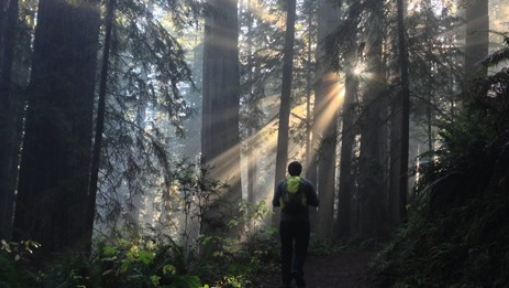
The Redwood National and State Parks is California’s most beautiful backpacking and hiking trail . You need to make at trip to this scenic area of America and be sure to see the trip highlights below.
As one of America’s classic, iconic trails located in California, the Redwood National and State Parks is approximately 6 miles and include the following beautifully scenic spots:
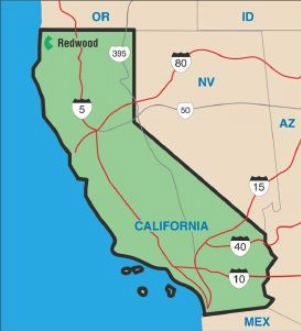
Thomas H. Kuchel Visitor Center
Tall Trees Grove
Head for Tall Trees Grove in the forest (approximately 1.4 miles, and about 900 feet in elevation)
The Redwood Creek
and the Emerald Ridge Trail back
Beyond the beautiful - and massively-sized - Redwood trees, this scenic route will allow you more coastal views than many of the backpacking trips above.
If you are in California, we highly recommend you go for a jaunt on the Redwood National and State Parks trails.
What Are Your Favorite Backpacking Trails or Trips in the USA?
These epic hikes represent some of the finest multi-day trekking in America. Did we miss one of your favorites? Let us know. Connect with Angel Outdoors on social media and tell us where we should go next!
Also, be sure to check out our gear reviews, for the latest in greatest in outdoor gear.
…Before you go backpacking or hiking, be sure to bring the equipment you need from your checklist:
the best camping sleeping bags ,
the best extreme weather tents ,
the best hiking backpacks and more.
Get in touch with us if you explore some awesome trails and trips from above. We would love to see your photos and connect with you!
Angel Outdoors™: #1 Outdoor Gear Reviews
Outdoor gear reviews for you..
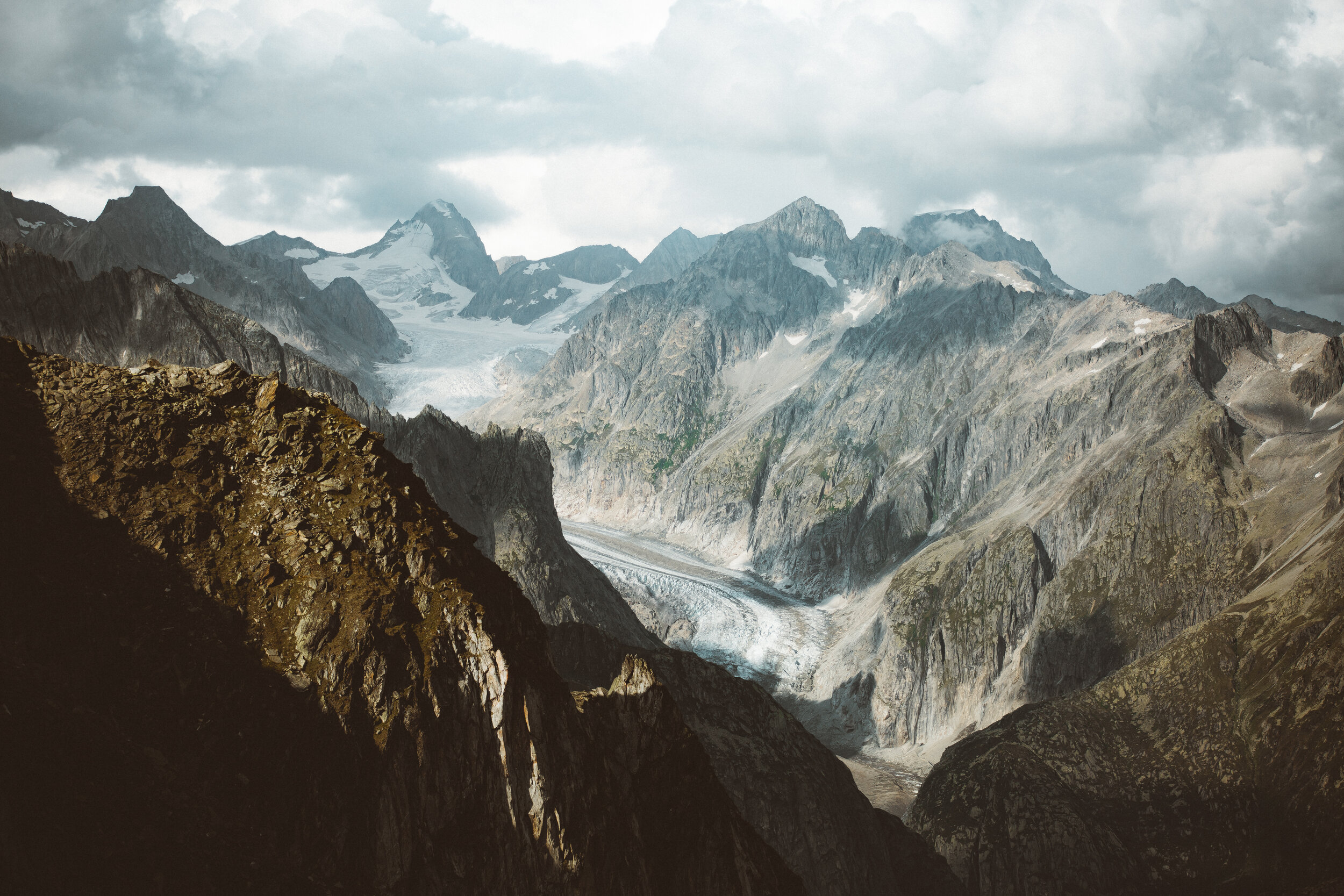
outdoor gear reviews
Angel Outdoors gives you inside access to the best outdoor hiking , camping , and backpacking gear.
Every time you buy a product on our website, we donate 1% of our sales to food and water initiatives across the world., want to purchase the best products.
Angel Outdoors gear and outdoor equipment can be found on Amazon, eBay, and select outlets.
Like, Share, Spread the Outdoor ❤️ Love...

Get Your Ultimate Outdoor Guide, Free!
Sign up with your email address to receive news and updates.
Thanks for your support!
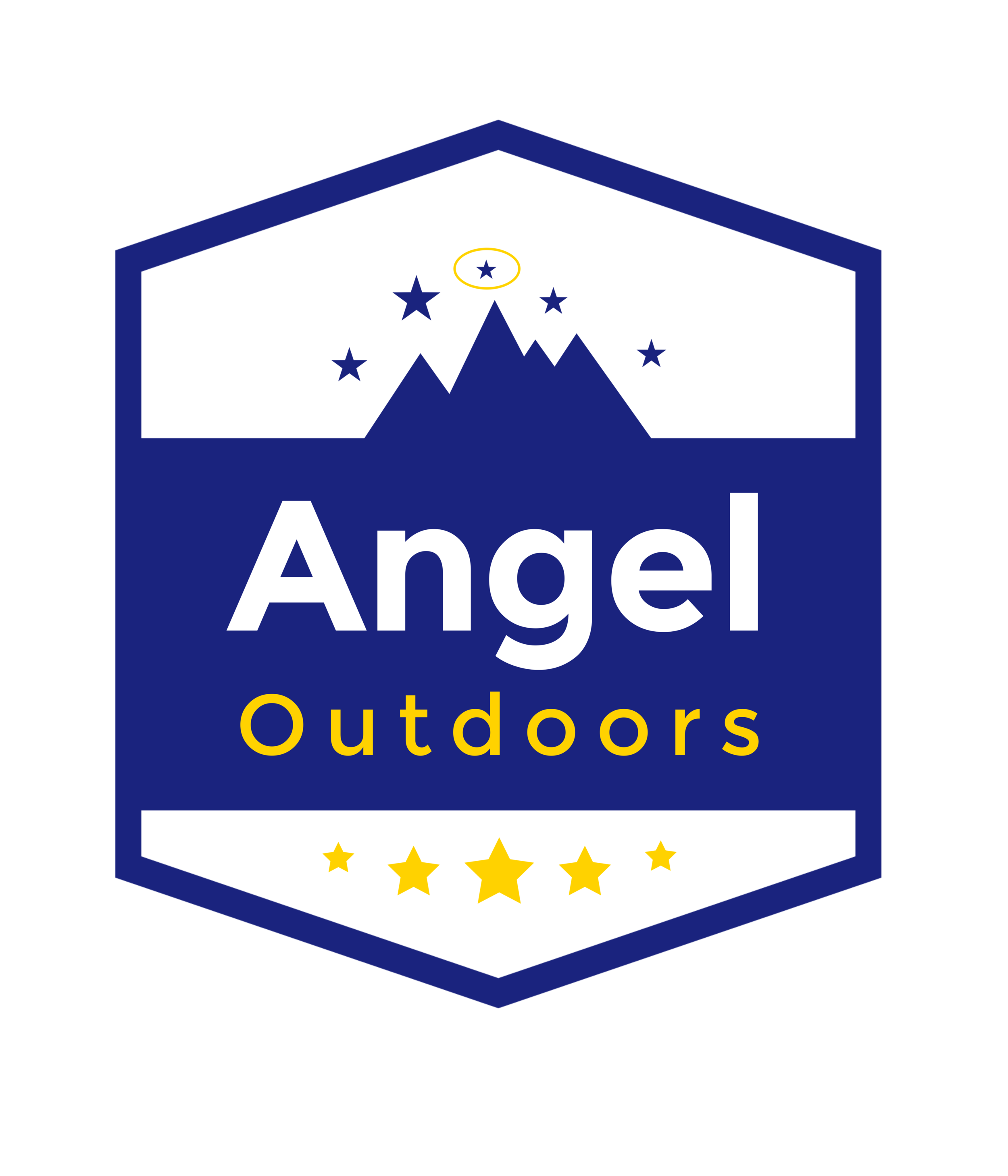
BEST outdoor gear products.
About Angel Outdoors : #1 best product reviews of outdoor gear, sportswear, gadgets, equipment, outdoor clothing and apparel. Angel Outdoors’ product experience review site gives you inside access and adventure guides to hiking, camping, backpacking, climbing, mountain biking, skiing, and running. We also discuss outdoor trips and trails that are ranked the best in the world for adventurers, outdoor lovers, and wanderlust travelers. We also rank the best local outdoor trips and guides for you to travel.
This site was built by Vail Networks , the leading experts in web development for business .
We also support local businesses such as the auto brake repair shop , Action Jackson Auto , and small business IT development with a local auto painting shop that we recommend.
Product Disclaimers and Terms of Use
Follow us with these hashtags on social media: #OutdoorGear #OutdoorLife #Backpacking #Hiking #Camping #Gear #Adventures
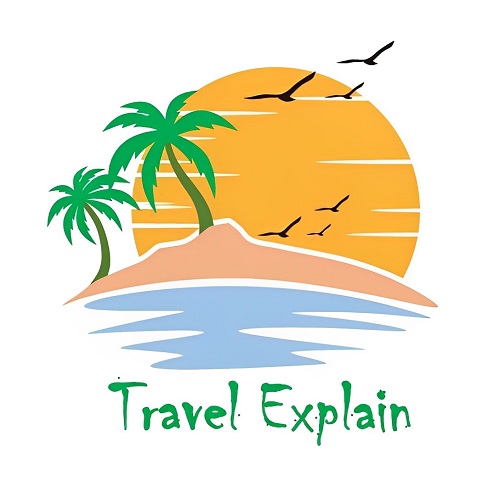
The Best Backpacking Trails In North America | #1 Hiker’s Guide
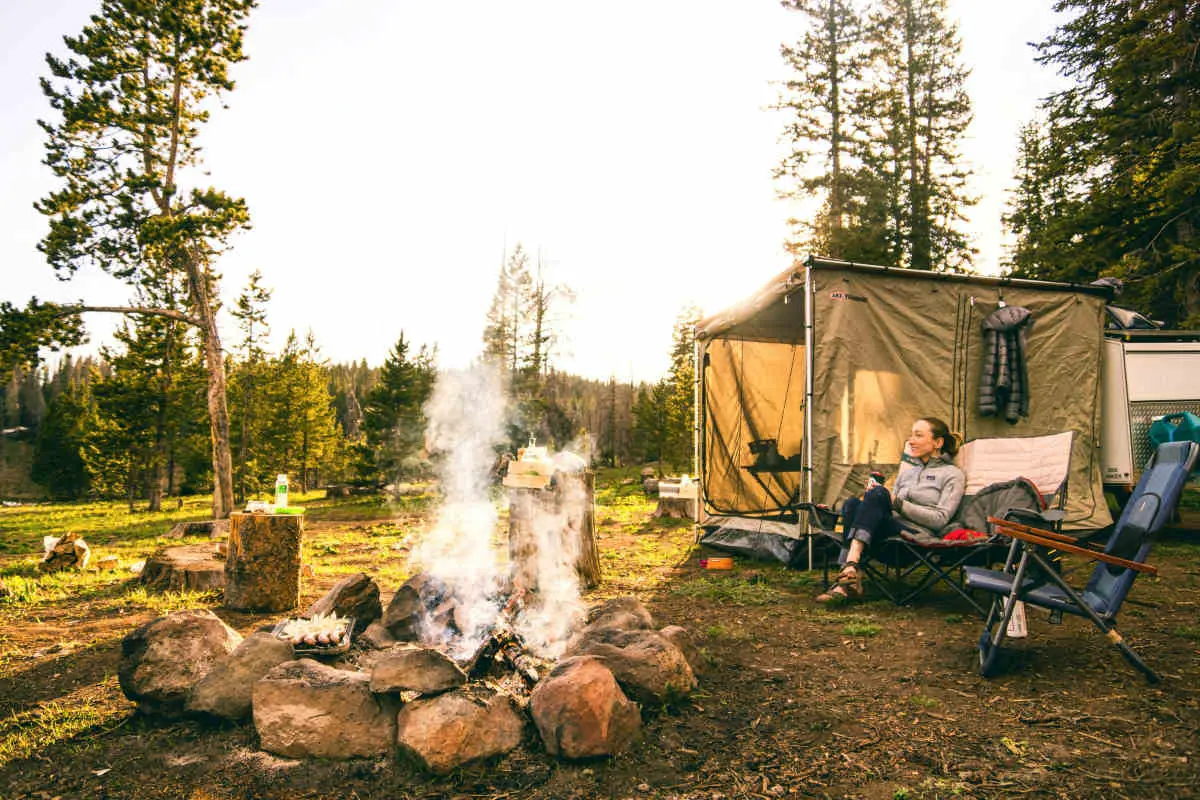
Affiliate Disclaimer: This post may contain affiliate link or links
The best backpacking trails in North America: Looking to plan your next backpacking adventure? North America offers some of the most incredible and diverse terrain for hikers and outdoor enthusiasts.
From the rugged Rocky Mountains to the lush forests of the Pacific Northwest, there is no shortage of awe-inspiring landscapes to explore.
In this article, we will be highlighting some of the best backpacking trails in North America that are sure to satisfy your adventurous spirit.
If you’re looking for a unique and unforgettable way to connect with nature, then backpacking is the way to go. With its breathtaking scenery and challenging terrain, North America is a backpacker’s paradise.
Whether you’re a seasoned pro or just starting out, there’s a trail out there that’s perfect for you. One of the most iconic backpacking trails in North America is the Pacific Crest Trail.
This 2,650-mile trail takes hikers through the rugged wilderness of California, Oregon, and Washington, offering stunning views of the Sierra Nevada, Cascade, and Coastal Mountain ranges.
Another popular destination is the Appalachian Trail, a 2,200-mile trail that winds through 14 states on the East Coast of the United States.
The trail offers hikers a chance to explore the lush forests and rugged terrain of the Appalachian Mountains.
For those looking for a more off-the-beaten-path adventure, consider the Wonderland Trail in Washington’s Mount Rainier National Park.
This 93-mile trail circles the base of Mount Rainier, offering hikers a chance to experience some of the most beautiful alpine scenery in the country.
Or, head to the Canadian Rockies and hike the Berg Lake Trail in British Columbia’s Mount Robson Provincial Park.
This 21-mile trail takes hikers through some of the most stunning scenery in the Canadian Rockies, including glaciers, waterfalls, and turquoise-colored lakes.
So, what are you waiting for? Grab your backpack and hit the trail! Whether you’re looking for a challenging multi-day trek or a leisurely weekend hike, North America has something to offer everyone.
Make sure to do your research and plan ahead, and always remember to respect the environment and leave no trace. Happy hiking!
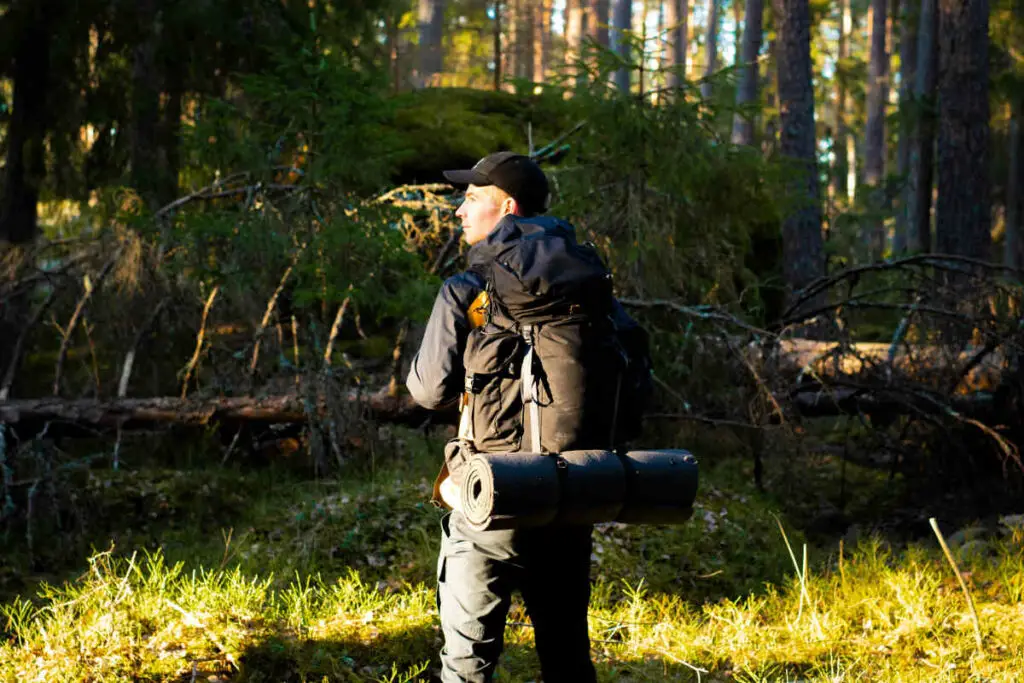
Explanation of backpacking
Backpacking involves hiking , camping, and carrying everything you need on your back for an extended period. It’s a way to immerse yourself in nature, get away from the hustle and bustle of daily life.
And challenge yourself physically and mentally. Backpacking can be done alone or with a group of friends, and it’s a great way to develop new skills and make lasting memories.
Aside from the physical and mental challenges, backpacking also provides a unique opportunity for personal growth and self-reflection.
Being surrounded by nature and away from the distractions of technology and modern amenities can give you a chance to disconnect and focus on your thoughts and feelings.
It can also teach you important skills such as self-reliance, problem-solving, and adaptability.
Additionally, backpacking allows you to explore some of the world’s most beautiful and remote areas that may not be accessible by car or other means of transportation.
From breathtaking mountain ranges to pristine beaches , backpacking can take you on a journey of discovery and adventure. If you’re new to backpacking, it’s important to do your research and plan your trip carefully.
This includes choosing the right gear, selecting a suitable route, and ensuring that you have enough food and water for the duration of your trip.
However, with proper planning and preparation, backpacking can be an incredibly rewarding and unforgettable experience.
Also see: Backpacking with Eggs
Snake bite kits for backpackers

Editor’s choice
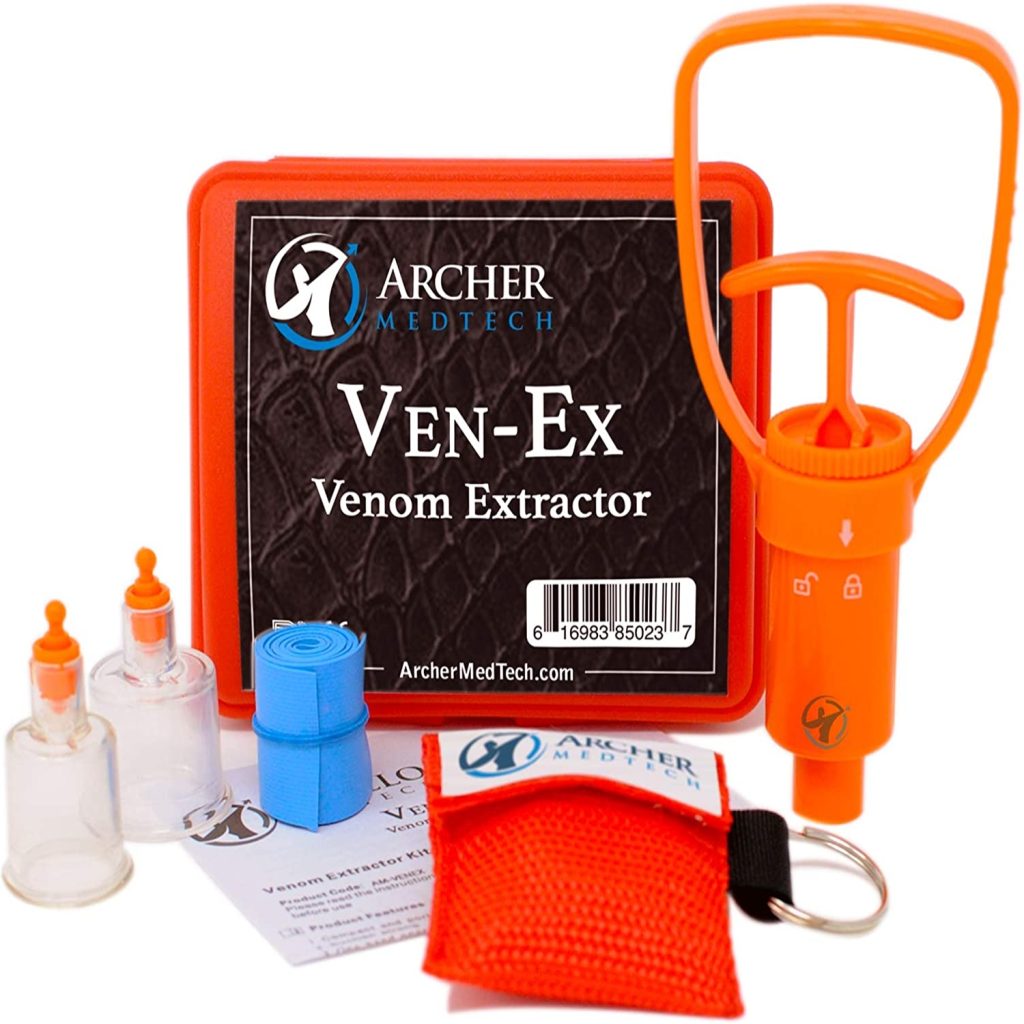
Why North America is a Great Destination for Backpackers
North America offers some of the most beautiful and diverse landscapes in the world, from the rugged peaks of the Rocky Mountains to the lush forests of the Pacific Northwest.
There’s a trail for every level of backpacker , from beginner to expert, and the infrastructure and amenities available make it easy to plan and execute a successful backpacking trip.
In addition to the varied landscapes and trail options, North America also boasts a rich cultural and historical heritage, with many backpacking routes passing through sites of significance.
For example, hikers can follow in the footsteps of early explorers along the historic Oregon Trail, or traverse parts of the famous Appalachian Trail, which stretches over 2,000 miles along the eastern seaboard of the United States.
One of the greatest appeals of backpacking in North America is the sense of adventure and exploration that comes with it. With so many different terrains and ecosystems to explore, there is always something new and exciting to discover.
Whether you’re seeking solitude in the backcountry or looking to connect with fellow adventurers, the North American wilderness offers endless opportunities for growth, challenge, and personal connection to nature.
As with any outdoor activity, safety should always be a top priority. Before embarking on a backpacking trip, it’s important to research the area, check weather conditions, and pack appropriate gear and supplies.
With proper planning and preparation, a backpacking trip in North America can be a truly unforgettable experience.
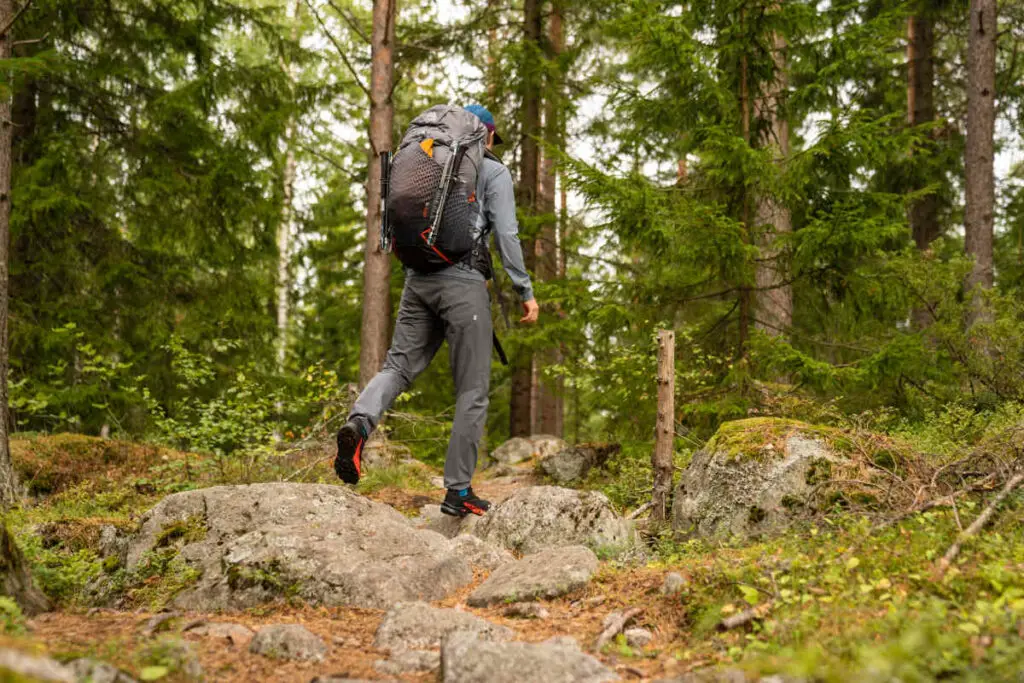
Importance of Choosing the Right Trail
Choosing the right trail is essential for a successful backpacking trip. You need to consider factors such as your fitness level, the level of difficulty, the length of the trail, and the weather conditions.
You should also research the area to ensure you have all the necessary permits, maps, and gear. Choosing the right trail will ensure a safe and enjoyable backpacking experience.
Furthermore, it’s essential to take into account the trail’s elevation gain and loss, as this can significantly impact the difficulty of the hike.
Additionally, researching the area can help you prepare for any potential hazards, such as wildlife encounters or inclement weather.
It’s also a good idea to check the availability of water sources along the trail and plan accordingly. Lastly, don’t forget to let someone know your itinerary and expected return date, in case of emergency.
By carefully considering these factors and doing proper research, you’ll be able to choose the right trail for your skill level and ensure a successful and safe backpacking trip.
The best backpacking trails in North America
1. pacific crest trail, usa.
The Pacific Crest Trail stretches over 2,650 miles from Mexico to Canada, passing through California, Oregon, and Washington. The trail offers stunning views of the Sierra Nevada Mountains, the Cascades, and the Mojave Desert.
It’s a challenging trail that requires extensive planning and preparation, but it’s worth it for the incredible scenery and sense of accomplishment.
Hikers who embark on the Pacific Crest Trail should expect a journey that will test their physical and mental endurance. The trail presents a variety of challenges, from steep ascents and descents to unpredictable weather conditions.
Hikers must be prepared for anything, from extreme heat and intense sun exposure to freezing temperatures and unexpected snowstorms.
Planning for resupplies and managing food and water is essential as well, as there are long stretches where hikers won’t have access to these necessities. Despite the challenges, the Pacific Crest Trail offers hikers a once-in-a-lifetime experience.
The trail takes hikers through some of the most beautiful and diverse landscapes in the United States, providing a sense of awe and wonder with each step.
The trail also fosters a sense of community among hikers, as many people undertake the journey together, helping and supporting each other along the way.
For those who are up to the challenge, hiking the Pacific Crest Trail is an adventure of a lifetime that is sure to be unforgettable .
Trail distance :
The Pacific Crest Trail (PCT) is a long-distance hiking trail that stretches from the border of Mexico and the United States at Campo, California to the border of the United States and Canada.
At Manning Park, British Columbia. The total distance of the trail is approximately 2,650 miles (4,265 kilometers).
Also see: Taking Fresh Eggs Backpacking
2. Appalachian trail, USA
The Appalachian Trail is one of the most popular backpacking trails in North America, stretching over 2,200 miles from Georgia to Maine. The trail passes through 14 states and offers breathtaking views of the Appalachian Mountains.
It’s a challenging trail that requires careful planning, but it’s a great way to explore the beauty of the Eastern United States. Along the Appalachian Trail, hikers can experience a wide range of ecosystems, from lush forests to rocky summits.
The trail also crosses several national parks, forests, and wildlife preserves, providing opportunities to see a variety of flora and fauna. With shelters and camp sites spaced out along the way, hikers can choose to camp in the wilderness or stay in designated areas.
The Appalachian Trail Conservancy provides resources and support for hikers, including maps, guidebooks, and volunteer caretakers.
For those who complete the entire trail, the Appalachian Trail Conservancy awards the coveted 2,000-Miler Certificate, a testament to their determination and love of the outdoors.
The Appalachian Trail is a hiking trail that extends approximately 2,200 miles (3,500 km) from Springer Mountain in Georgia to Mount Katahdin in Maine, passing through 14 states in the eastern United States.
Water filtration system for backpacker
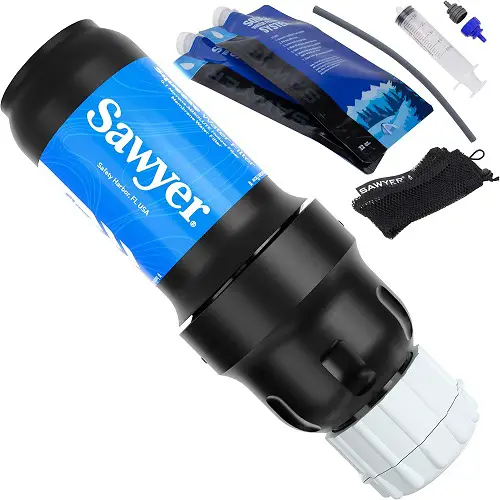
3. West coast trail, Canada
The West Coast Trail is a 47-mile trail that follows the southwestern edge of Vancouver Island, offering stunning views of the Pacific Ocean and old-growth rainforest.
It’s a challenging trail that requires a high level of fitness and experience, but it’s worth it for the incredible scenery and wildlife sightings.
Hiking the West Coast Trail takes around 5-7 days, and trekkers will encounter rugged terrain, steep cliffs, and slippery boardwalks. The trail also crosses several creeks and rivers, which can be challenging to traverse during heavy rains.
However, the rewards are plenty, with breathtaking sunsets, misty mornings, and wildlife sightings, including whales, seals, and bald eagles. The trail is also steeped in history, with artifacts from old shipwrecks and indigenous settlements scattered throughout.
Despite its challenges, the West Coast Trail is an adventure of a lifetime, offering a unique opportunity to immerse oneself in the rugged beauty of Canada’s West Coast.
The West Coast Trail is a popular hiking trail located on Vancouver Island in British Columbia, Canada. The total length of the trail is approximately 75 kilometers or 47 miles.
4. Sunshine coast trail, Canada
The Sunshine Coast Trail is a 112-mile trail that runs along the Sunshine Coast of British Columbia, offering views of the ocean, mountains, and old-growth forests. It’s a moderate trail that’s perfect for intermediate backpackers looking for a challenging yet rewarding experience.
The trail can be completed in 10-14 days, depending on your pace and the number of side trips you take. Along the way, hikers can enjoy various campsites, lakes, and streams.
The trail is well-marked, and there are several access points, making it easy to break the hike into smaller sections if you don’t have the time to complete the entire trail.
Hikers may also encounter a variety of wildlife on the trail, including bears, cougars, and deer. It’s important to be prepared and follow proper safety precautions when hiking the Sunshine Coast Trail.
Overall, this trail is a fantastic opportunity to explore the stunning natural beauty of British Columbia and challenge yourself in the process.
The Sunshine Coast Trail is a 180-kilometer (112-mile) long hiking trail located on the Sunshine Coast of British Columbia, Canada.
Also see: How to Backpack with Eggs?
5. The long range traverse, Canada
The Long Range Traverse is a 35-mile trail that runs through the Gros Morne National Park in Newfoundland, offering stunning views of the fjords and the Long Range Mountains.
It’s a challenging trail that requires a high level of fitness and experience, but it’s worth it for the breathtaking views and unique experience.
The trail is known for its rugged terrain and steep ascents, making it a popular destination for experienced hikers seeking a challenge.
Along the way, hikers will encounter a diverse range of landscapes, including forests, rivers, and alpine meadows.
The trail also passes through the traditional lands of the Innu and Mi’kmaq people, adding a cultural and historical dimension to the journey.
Despite its difficulty, the Long Range Traverse is a must-do for avid hikers and nature enthusiasts looking for an unforgettable adventure in one of Canada’s most beautiful national parks.
The Long Range Traverse is a hiking trail located in Gros Morne National Park, Newfoundland, Canada. It covers a distance of approximately 35 kilometers (22 miles) and typically takes hikers 3-4 days to complete.
6. Laugavegur trail, Iceland
The Laugavegur Trail is a 34-mile trail that runs through the highlands of Iceland, offering views of glaciers, hot springs, and volcanoes.
It’s a challenging trail that requires careful planning and experience, but it’s worth it for the unique scenery and cultural experience of exploring Iceland’s wilderness.
The trail begins in the Landmannalaugar geothermal area and ends in the Þórsmörk valley, taking hikers through diverse landscapes such as colorful rhyolite mountains, black sand deserts, and glacial rivers.
Along the way, hikers can rest at mountain huts or camp in designated areas to fully immerse themselves in Iceland’s rugged beauty.
The trail is usually open from late June to mid-September, with the best time to hike being in July and August when the weather is more predictable.
Hiking the Laugavegur Trail is an unforgettable adventure for anyone seeking a challenging and rewarding trek in one of the world’s most stunning wilderness areas.
The Laugavegur Trail is a popular hiking route in Iceland that stretches approximately 55 kilometers (34 miles) from Landmannalaugar to Þórsmörk (or Thorsmork) through the beautiful and diverse landscapes of the Icelandic Highlands.
Personal protection accessories for backpackers
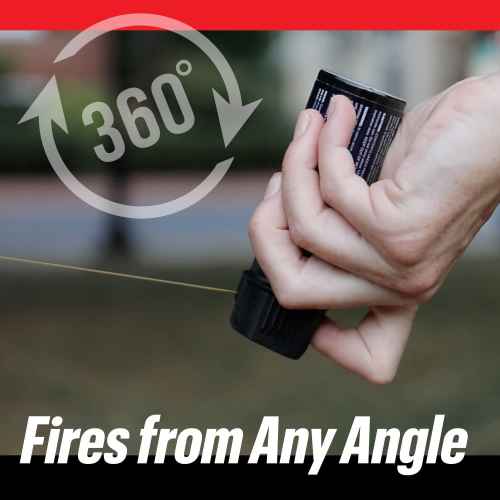
7. The narrows, USA
The Narrows is a 16-mile trail that runs through Zion National Park in Utah, offering breathtaking views of the Virgin River and towering canyon walls.
It’s a challenging trail that requires hiking through water, but it’s a unique and rewarding experience for adventurous backpackers. The trail is famous for its narrow passages that are as narrow as 20 feet, which are referred to as the Wall Street section.
This section of the trail can be quite challenging, with hikers often wading through waist-deep water and scrambling over boulders. The trail can be hiked year-round, but the best time to visit is during the summer months when the water is warmer and the weather is more predictable.
Hikers can also take guided tours through the Narrows, where experienced guides will lead them through the trail and offer insights into the geology and history of the area.
Overall, the Narrows is a must-visit destination for anyone seeking an unforgettable adventure in the great outdoors.
The Narrows is a hiking trail located in Zion National Park, USA. The trail distance of The Narrows varies depending on how far you choose to hike. The most popular section of the trail is a 16-mile (round trip) hike from the Temple of Sinawava to Big Spring.
Also see: How to Pack Eggs for Backpacking?
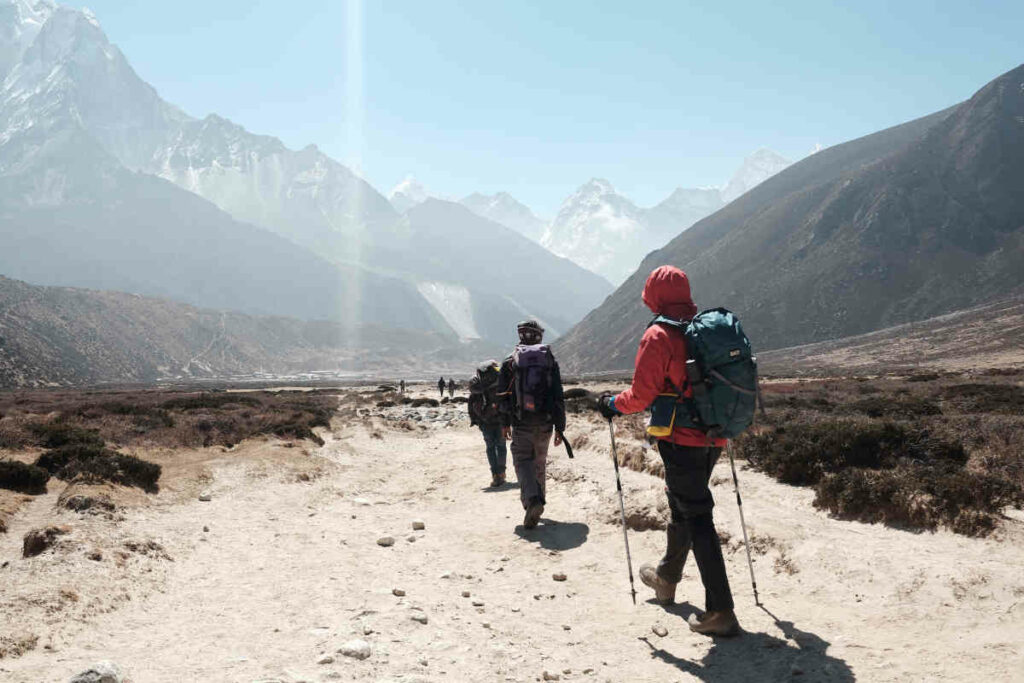
8. Kalalau trail, USA
The Kalalau Trail is an 11-mile trail that runs along the Na Pali Coast of Kauai, offering stunning views of the Pacific Ocean and waterfalls.
It’s a challenging trail that requires careful planning and preparation, but it’s worth it for the incredible scenery and sense of adventure.
The trail is known for its steep and narrow sections, with some parts of the trail only a few feet wide with sheer drops to the ocean below.
Hikers are advised to wear proper hiking gear and bring plenty of water and snacks, as well as a first aid kit and a map of the trail.
It’s important to check weather conditions before embarking on the trail, as flash floods and heavy rains can make the trail dangerous.
Despite the challenges, the Kalalau Trail is a bucket list destination for many hikers and adventurers seeking a unique and unforgettable experience on the beautiful island of Kauai.
The Kalalau Trail is an 11-mile (17.7 km) trail located on the island of Kauai in the state of Hawaii, USA.
9. Chilkoot trail, USA and Canada
The Chilkoot Trail is a 33-mile trail that runs from Alaska to the Yukon Territory in Canada, following the historic route of the Klondike Gold Rush.
It offers stunning views of the mountains and glaciers and is a unique opportunity to explore the history of the gold rush era.
The Chilkoot Trail was once a bustling hub of activity as thousands of hopeful prospectors made their way to the Yukon in search of gold.
Today, the trail serves as a reminder of this historic event and allows hikers to experience what life was like for these pioneers.
Along the way, hikers can see remnants of the old mining camps and learn about the challenges that the miners faced, including harsh weather conditions and treacherous terrain.
The trail is also home to a diverse range of wildlife, including bears, moose, and eagles, making it a must-visit destination for nature lovers and history buffs alike.
Trail distance :
The Rockwall Trail is a popular hiking trail in Kootenay National Park, British Columbia, Canada. The trail is approximately 55 kilometers (34 miles) long and typically takes 3-5 days to complete.
Recommended boots for backpacker
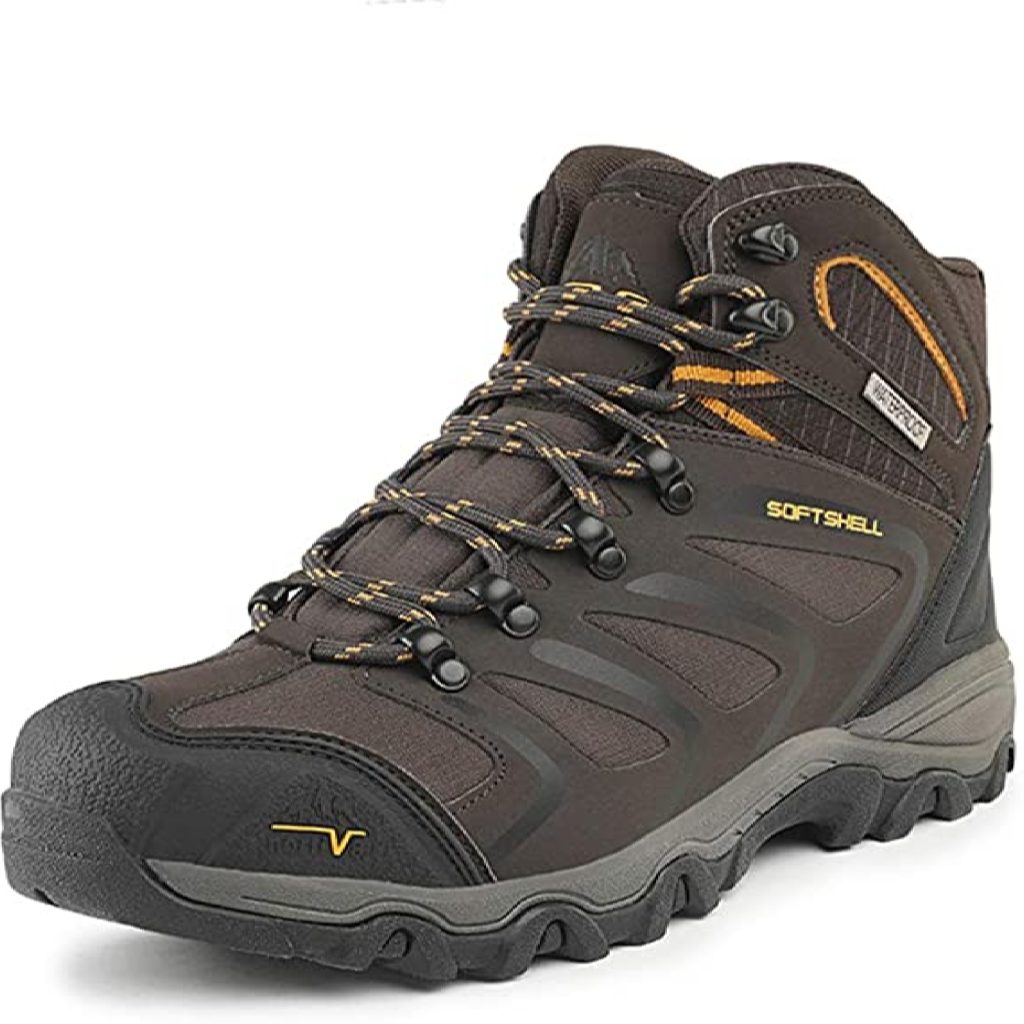
10. The rockwall trail, Canada
The Rockwall Trail is a 34-mile trail that runs through Kootenay National Park in British Columbia, offering views of the Canadian Rockies and alpine meadows.
It’s a challenging trail that requires careful planning and preparation, but it’s worth it for the stunning scenery and unique experience.
The Rockwall Trail can be completed in 3-5 days, depending on your pace and whether you choose to camp or stay in backcountry lodges.
The trail is well-marked, but hikers should be prepared for steep ascents and descents, as well as changing weather conditions. Along the way, you’ll pass by turquoise lakes, towering peaks, and lush forests.
Keep an eye out for wildlife, such as mountain goats and bighorn sheep, and be sure to follow Leave No Trace principles to preserve the natural beauty of the area.
Overall, the Rockwall Trail is a must-do for experienced hikers looking for a challenging and rewarding adventure in the Canadian Rockies.
The Rockwall Trail is a 55-kilometer (34-mile) long hiking trail located in Kootenay National Park, British Columbia, Canada.
11. Continental divide trail
The Continental Divide Trail (CDT) is one of the longest and most challenging hiking trails in the United States. Spanning 3,100 miles from the border of Mexico to Canada.
The CDT traverses some of the most rugged and remote terrain in the Rocky Mountains. The trail follows the Continental Divide, which is the line that separates the watersheds that flow to the Pacific Ocean and the Gulf of Mexico.
Hikers on the CDT will encounter a diverse range of landscapes, from arid deserts to high alpine peaks, and will need to be prepared for extreme weather conditions.
While the Appalachian Trail and Pacific Crest Trail are more well-known long-distance hiking trails, the CDT offers a unique and challenging experience for those looking to push their limits and explore the wilds of the Rocky Mountains.
The CDT is not for the faint of heart, but for those who are up for the challenge, it offers the opportunity to experience some of the most beautiful and untouched wilderness areas in the country.
If you’re considering taking on the CDT, be sure to do your research and prepare yourself physically and mentally for the journey ahead.
The Continental Divide Trail (CDT) is a long-distance hiking trail that spans over 3,100 miles (4,988 kilometers) from the border of Mexico to the border of Canada, following the Continental Divide of the Americas along the Rocky Mountains in the United States.
Also see: Can You Take Eggs Backpacking?
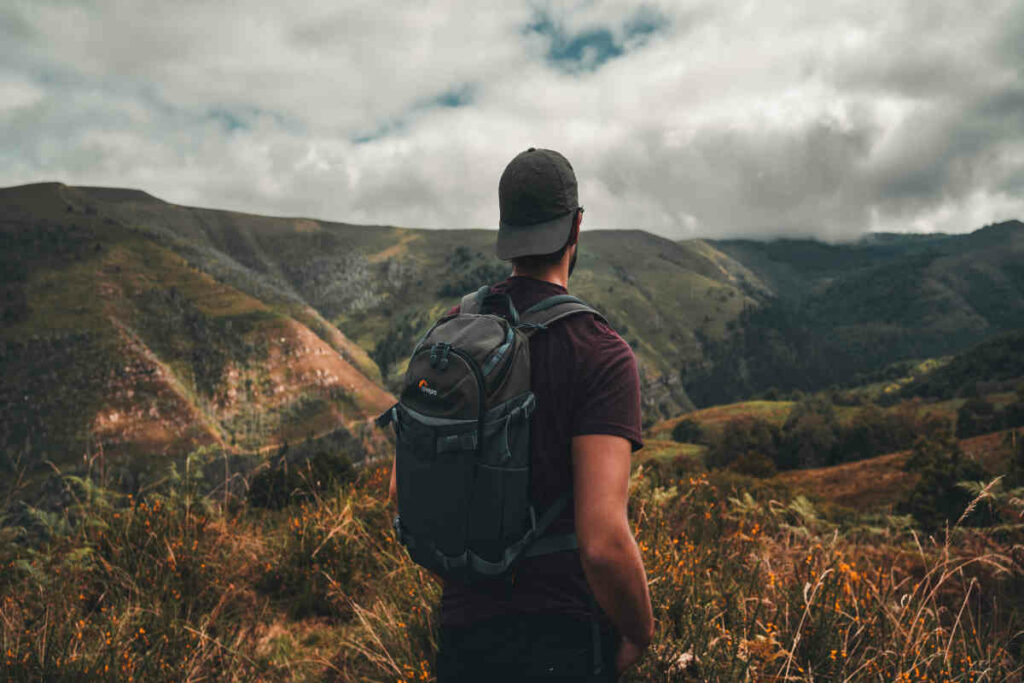
Tips for a Successful Backpacking Trip
Planning is essential for a successful backpacking trip . Make sure to research the trail and the area, including weather conditions, permits, and necessary gear.
Pack lightweight and essential items only, including proper footwear and clothing, shelter, food, and water. Always be prepared for emergencies and practice Leave No Trace principles to preserve the environment.
Additionally, it’s important to have a detailed itinerary and share it with someone trustworthy in case of any unforeseen circumstances.
Familiarize yourself with the local flora and fauna and be mindful of potential dangers such as wildlife, steep terrain, or unpredictable weather patterns.
Consider bringing a map, compass, or GPS device to navigate your way and avoid getting lost.
And finally, make sure to take breaks and rest when needed to prevent exhaustion and injuries. By following these tips, you can ensure a safe and enjoyable backpacking trip .
1. What are the best backpacking trails in North America?
Appalachian Trail, Pacific Crest Trail, Continental Divide Trail, and Canadian Rockies are popular backpacking trails.
2. What are the most scenic backpacking trails in North America?
The Pacific Crest Trail, Appalachian Trail, and Continental Divide Trail are popular scenic backpacking trails.
3. What backpacking trails in North America are best for beginners?
The Appalachian Trail and Pacific Crest Trail are popular choices for beginner backpackers.
4. What gear do I need for backpacking on North American trails?
Backpacking essentials: tent, sleeping bag, backpack, stove, water filter, map, and appropriate clothing.
5. What are some safety tips for backpacking on North American trails?
Check weather forecasts, bring enough food and water, and inform someone of your itinerary.
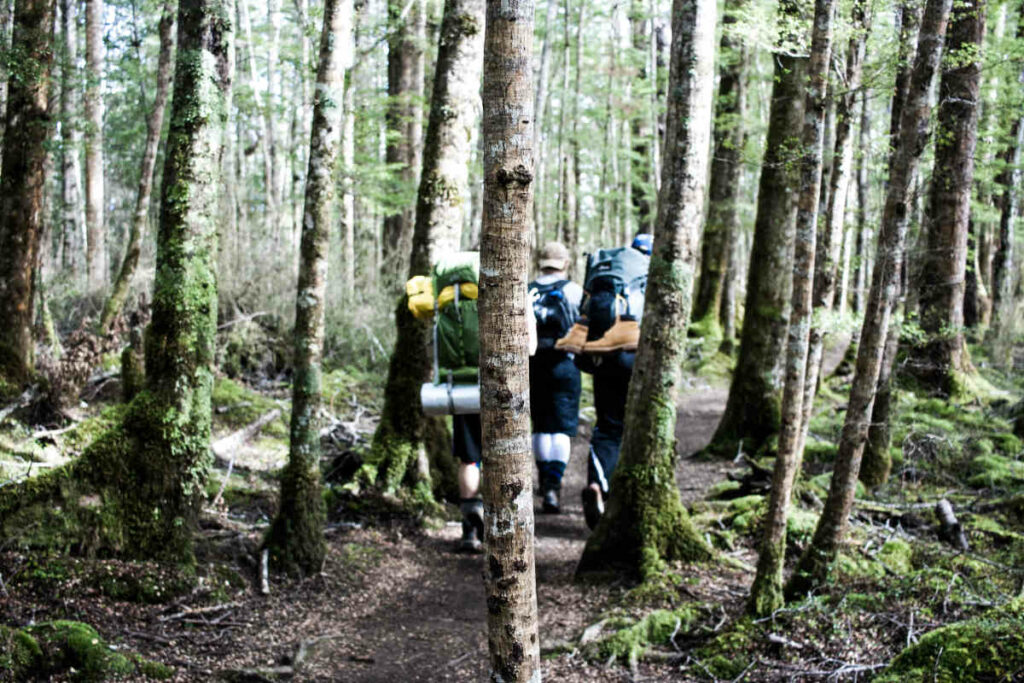
Backpacking is a challenging and rewarding way to explore the natural beauty of North America. Whether you’re a beginner or an experienced backpacker, there’s a trail for everyone.
Remember to choose the right trail, plan carefully, and pack essential gear to ensure a safe and enjoyable experience. Get out there and explore the great outdoors!
Additionally, backpacking is an excellent way to disconnect from the chaos of everyday life and connect with nature. Along the trail, you’ll encounter stunning vistas, diverse wildlife, and unique ecosystems that you can only experience by foot.
Plus, the physical and mental challenge of backpacking can provide a sense of accomplishment and personal growth. So, whether you’re looking to embark on a weekend getaway or a multi-day trek.
Backpacking offers an opportunity to escape the city and immerse yourself in the natural wonders of North America. So grab your pack, lace up your boots, and hit the trail!
Also see: Are There Sharks in The Great Lakes?
Other related articles

Joseph Benson I love exploring new places and cultures, meeting people from all over the world. And because I am a traveler who is always on the go, never miss an adventure with me.
Leave a Reply Cancel reply
Your email address will not be published. Required fields are marked *
Save my name, email, and website in this browser for the next time I comment.

Latest posts

Best Freeze Dried Backpacking Food
Best freeze dried backpacking food: When it comes to backpacking and hiking, proper nutrition is crucial to fuel your adventures.…

Best Backpacking in Colorado | The Ultimate Guide
Best Backpacking in Colorado: Colorado is a backpacker’s paradise, offering a diverse range of landscapes and trails for unforgettable outdoor…
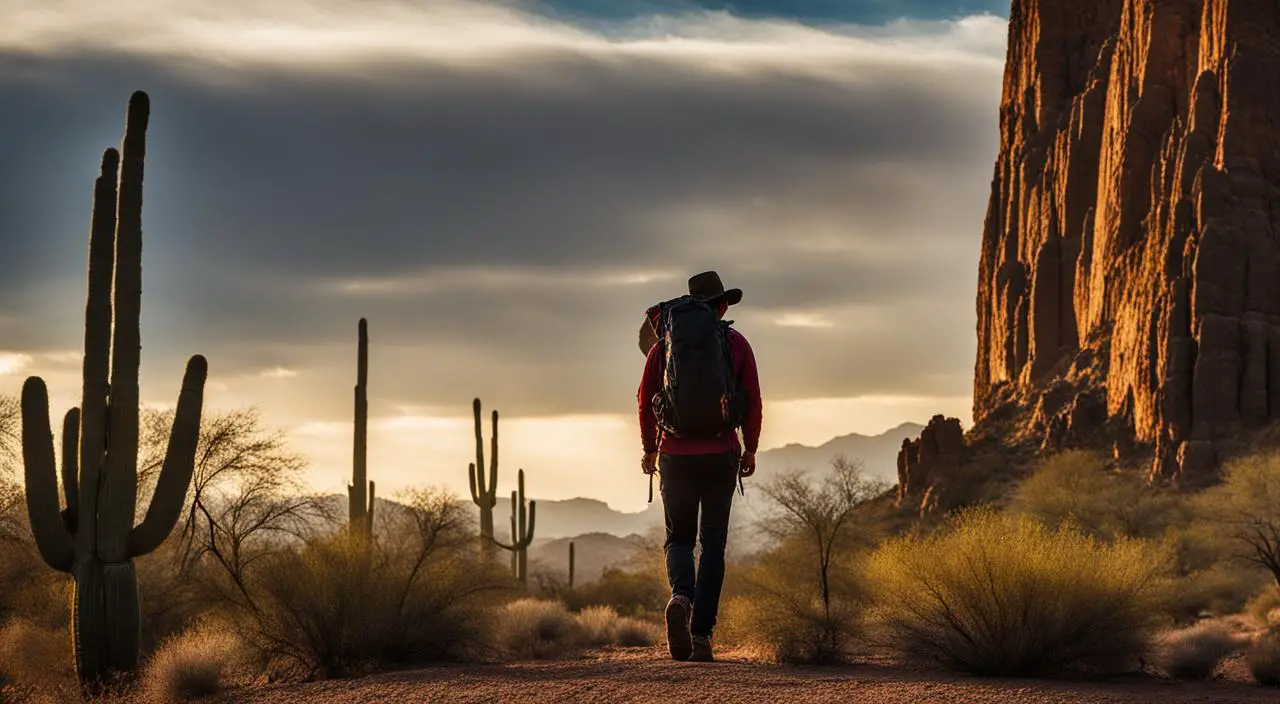
Backpacking in Arizona: Unveiling Hidden Desert Treasures
Backpacking in Arizona is indeed a mind-blowing experience. Arizona is a backpacker’s paradise, with some of the most breathtaking scenery…
You are using an outdated browser. Please upgrade your browser or activate Google Chrome Frame to improve your experience.

- Trip Styles
- Destinations
15 Best Beginner Backpacking Trips in the U.S.
- All Inspiration and Destinations
- Canadian Rockies
- New Hampshire
- New Zealand
- North Carolina
- Vancouver Island
- Washington State
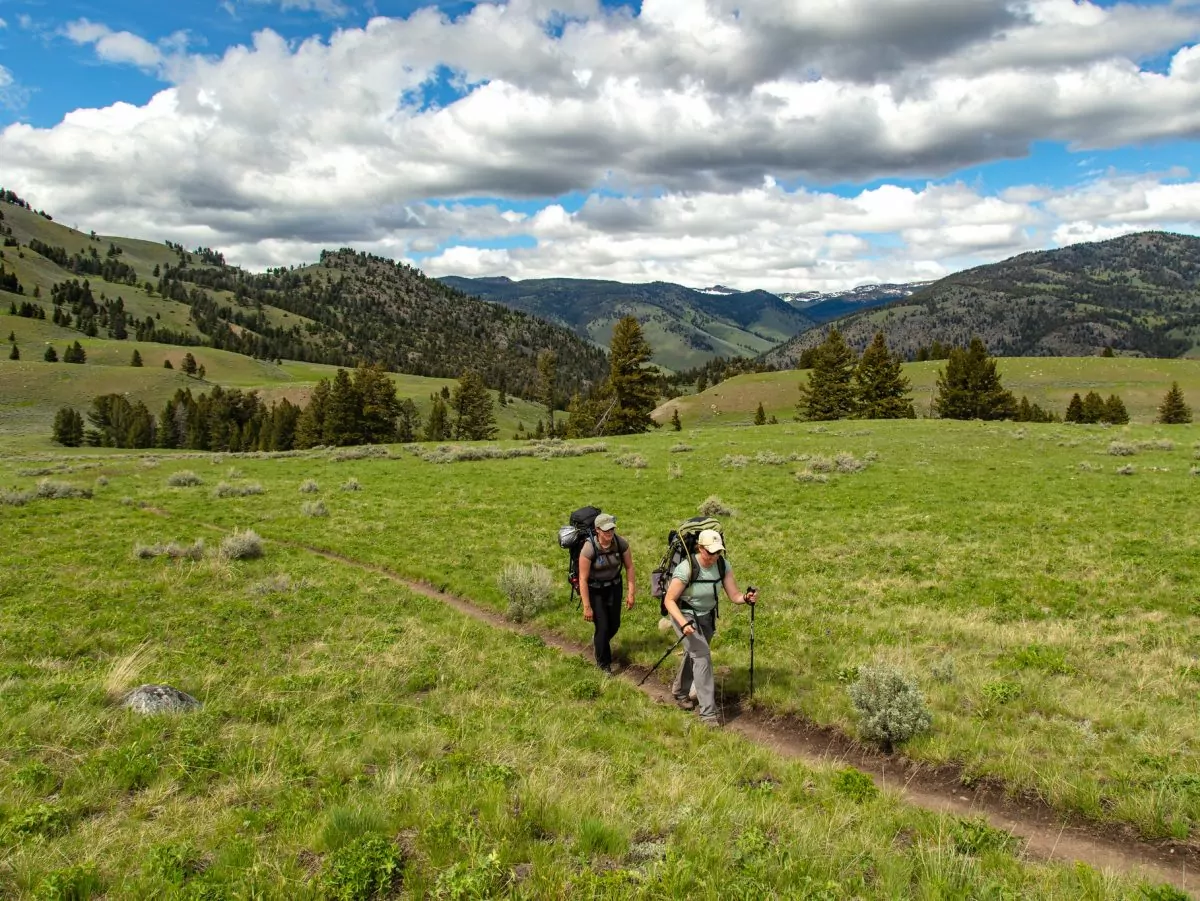
If you’re new to backpacking, you may have a lot of questions , like what to pack , what to eat , and — most excitingly — where to go. In the US, you have dozens of beginner backpacking trips at your fingertips. Whether you want to plan an epic hiking vacation to your favorite national park or you want to hit the trails closer to home, you’ll have options.
When planning your first backpacking trip, you can either, 1) choose a trip within your comfort zone and go with family, friends, or a partner or 2) join a guided trip so you can learn new skills, develop friendships, and take on a more difficult challenge. Some people try to fit too much into their first backcountry trip and end up ditching the pack for good after their adventure is over. Or, they don’t set their sights high enough and end up underwhelmed, wondering why anyone would willingly lug 30 pounds of gear into the backcountry.
We know that if you’re backpacking, you want to escape the crowds, take in stunning views, and put in some effort. So, we want to help you plan a trip that will make you fall in love with the sport so that every time you dust off your backpack, a smile spreads across your face. If you’re looking for inspiration for your first backpacking trip (or your second, third, or seventieth), we’ve compiled a list of 15 beginner-friendly backpacking trips and trails across the United States that will immerse you in wild environments and challenge you just the right amount.
Explore Your World with Award Winning Guides
how to choose an appropriate trail
While each new backpacker is entering into the sport with a different set of skills and fitness levels, we’ve crafted a list of trips with all beginner backpackers in mind. These trips fit a few criteria:
- You’ll hike relatively low-mileage for the length of the trip.
- The trails don’t have extreme elevation gain for the region.
- They travel on well-maintained trails and avoid tricky terrain like boulder fields.
- You’ll get a lot of bang for your buck, whether in the form of peaks, alpine lakes, or lush meadows.
However, backpacking is never easy (or else we’d never do it!) — so, if you want to maximize your fun, be sure to train for your backpacking trip .
1. Point of Arches, Olympic National Park
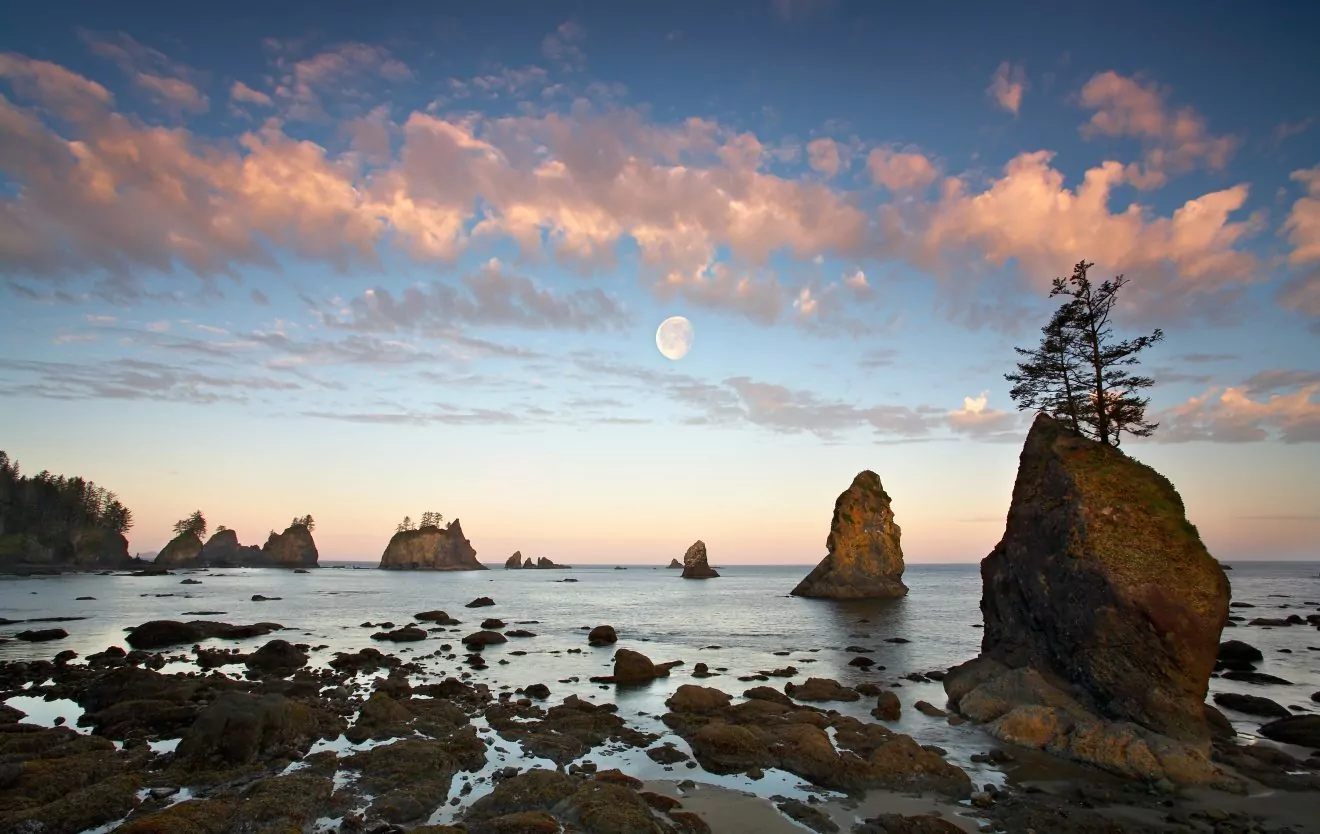
Mileage: 8 miles out-and-back | Length: 2 – 3 days | Elevation Gain/Loss: 200 feet
Point of Arches is a perfect beginner backpacking destination on the edge of Olympic National Park, accessed via the Makah Reservation. You can hike this trail as an overnight, but if you have a third day to spare, you won’t be disappointed by the abundance of tidepools to explore and wildlife to observe. The sea-stack studded coastline is complemented by lush forests, which are home to banana slugs, Roosevelt elk, and black bears. Each night, as the sun sets over the Pacific Ocean and you fall asleep to the sound of crashing waves, you’ll start scheming up your next trip.
Why is it great for a beginner?
This relatively-flat trail gives you quick access to a stunning beach environment, without much hard hiking or elevation gain. In fact, we offer this as a family-friendly trip option. You’ll get the pay-off of a bigger backpacking trip, but without all the work. So, pack a chair and relax on the beach as seals play in the coastal waters and eagles fly along the bluffs hunting for fish.
Unlike many beach destinations, the campsite near Point of Arches sits along a creek, so you don’t have to pack in water for your whole trip — just a water filtration device.
logistics and permits
You’ll need to secure two permits to make this trip a reality. First, you’ll need to pick up a Makah Recreation Pass ; it costs $10 and is good for an entire year. You can get one in Neah Bay at the marina, the general store, the mini-mart, and the tribal center, among other areas. Also, as this trail enters into Olympic National Park, you will need a Wilderness Camping Permit for any overnight stays in the park. Make sure you reserve this in advance. However, if you join a guided trip, we take care of all permits and reservations for you!
As of February 2021, this trail is closed due to COVID-19, as are many of the coastal areas of the park because they are on tribal lands. If you’re looking for an alternate route in Olympic National Park, the Seven Lakes Basin backpacking loop is a great — yet more difficult — alternative.
Guided Trip Options
Wildland Trekking offers this trip as a guided backpacking adventure package with expert guides, gear, meals, transportation and more all included! Click here to learn more!
2. Shining Rock Wilderness, North Carolina
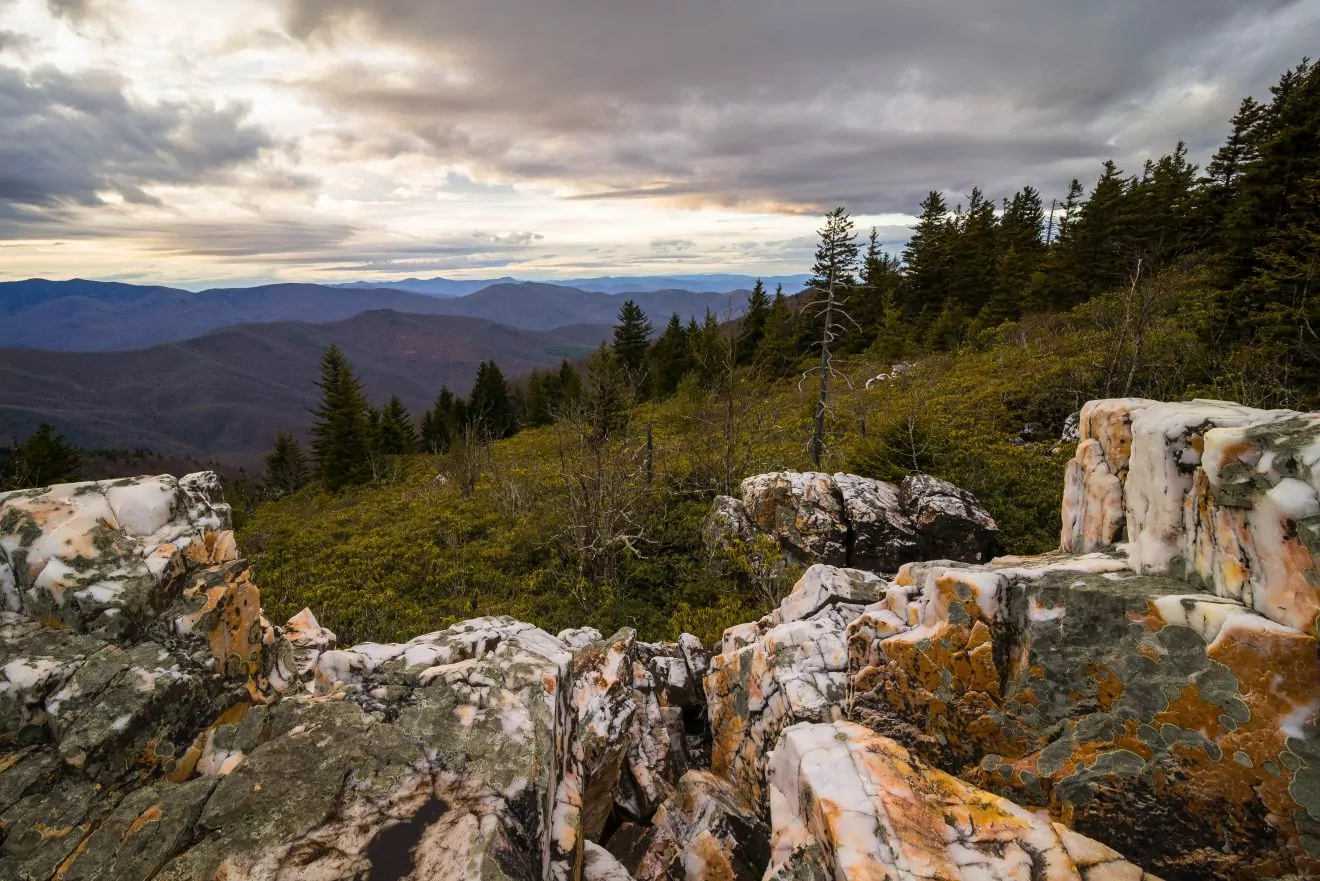
Mileage: 22 miles roundtrip | Length: 4 days | Elevation Gain/Loss: 2,300 feet with backpacking packs (plus 1,700 ft with a day pack)
The Shining Rock Wilderness in the Blue Ridge Mountains of North Carolina is one of the most spectacular East Coast backpacking destinations. The name comes from a unique geologic outcropping of quartzite rock that guards the summit of Shining Rock. Not only will these rocks dazzle you with their beauty, but they also provide a great perch to look out across the sweeping views of the surrounding peaks. On your trek, you’ll hike past cascading waterfalls and swimming holes that are perfect for a dip in the right season.
Relatively short-mileage days lead to exciting destinations. And while many beginner-friendly backpacking trails are packed with crowds, you can find mountain solitude in the Shining Rock Wilderness. Plus, a two-night backcountry basecamp lowers the number of miles you need to hike with a full pack. One of the hardest parts of backpacking is fine-tuning your pack packing routine, so you’ll appreciate the layover day when you get to leave your tent set up.
You don’t need to obtain a permit to backpack in Pisgah National Forest. However, due to the prevalence of black bears in the area, you must carry all your food and scented items in bear canisters .
This trail is in a wilderness area , so as with all backpacking trips, please leave no trace and minimize signs of human impact. We recommend first hiking in this area with a guiding company because the trails are not signed or blazed, unlike more popular destinations such as Great Smoky Mountains National Park. However, if you do choose to backpack alone in this region, carry and map and compass so you can navigate the trails.
3. Golden Cathedral, Grand-Staircase, Utah
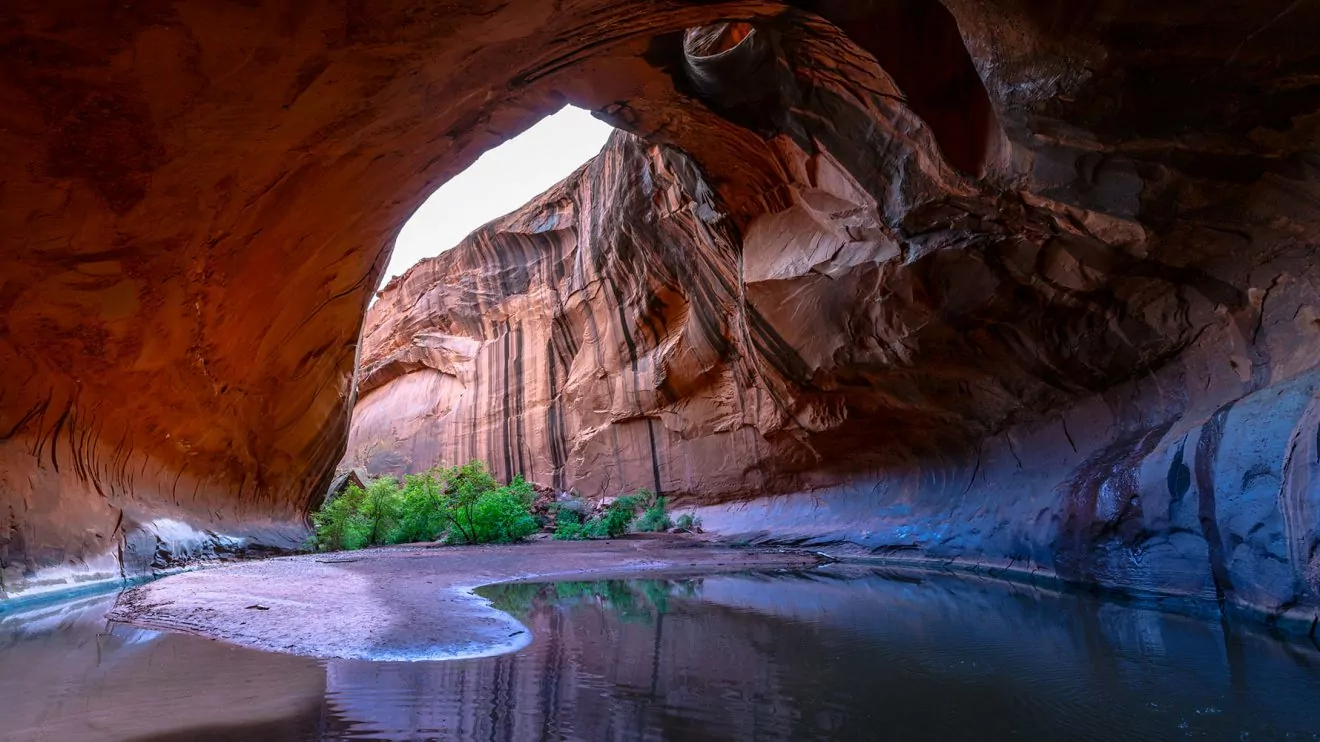
Mileage: 10 miles roundtrip | Length: 3 – 4 days | Elevation Gain/Loss: 1.100 feet
The Golden Cathedral is a stunning display of geologic processes set in Neon Canyon. On this trip, you set up a basecamp along the Escalante River so you get to enjoy both the lush desert oasis and impressive slickrock features, like the pothole arch pictured above. While camping is not permitted in Golden Cathedral to protect the fragile environment, you’ll enjoy your sandstone surroundings as you explore the labyrinth of canyons during the days. Plus, southern Utah is known for its endlessly dark night skies. So as you peer out of your tent at night, be sure to gaze up between the canyon walls to see a smattering of stars.
This low-mileage trip is doable as a day hike, but spending the night between the narrow canyon walls in red rock country is quite the experience. You’ll carry a pack on the first and last day of your trip, setting up basecamp once you arrive in the canyon. Then, on your layover days, you’ll have time to explore slot canyons and washes without the weight of your pack. Unlike some desert hikes, this destination has plenty of water, so while you’ll need to stay hydrated, you won’t weigh your pack down with a trip’s worth of H20.
While this is a great first beginner backpacking trip with a guiding company, it can be a challenging trail to navigate on your own. However, if you plan to go solo, follow the cairns (piles of rocks) and keep your senses engaged so you don’t get lost. Don’t forget the map and compass!
Stop by a ranger station to obtain a free backcountry permit. Study up on desert leave no trace procedures, as this unique environment requires that you travel mindfully.
Also, check the forecast before you go because flash floods can be an incredible danger in canyon country. During certain times of the year, you may need to wade through thigh-deep water in the canyons. Bring along a pair of hiking sandals and trekking poles to make the journey more fun!
4. Tuolumne Meadows area, Yosemite
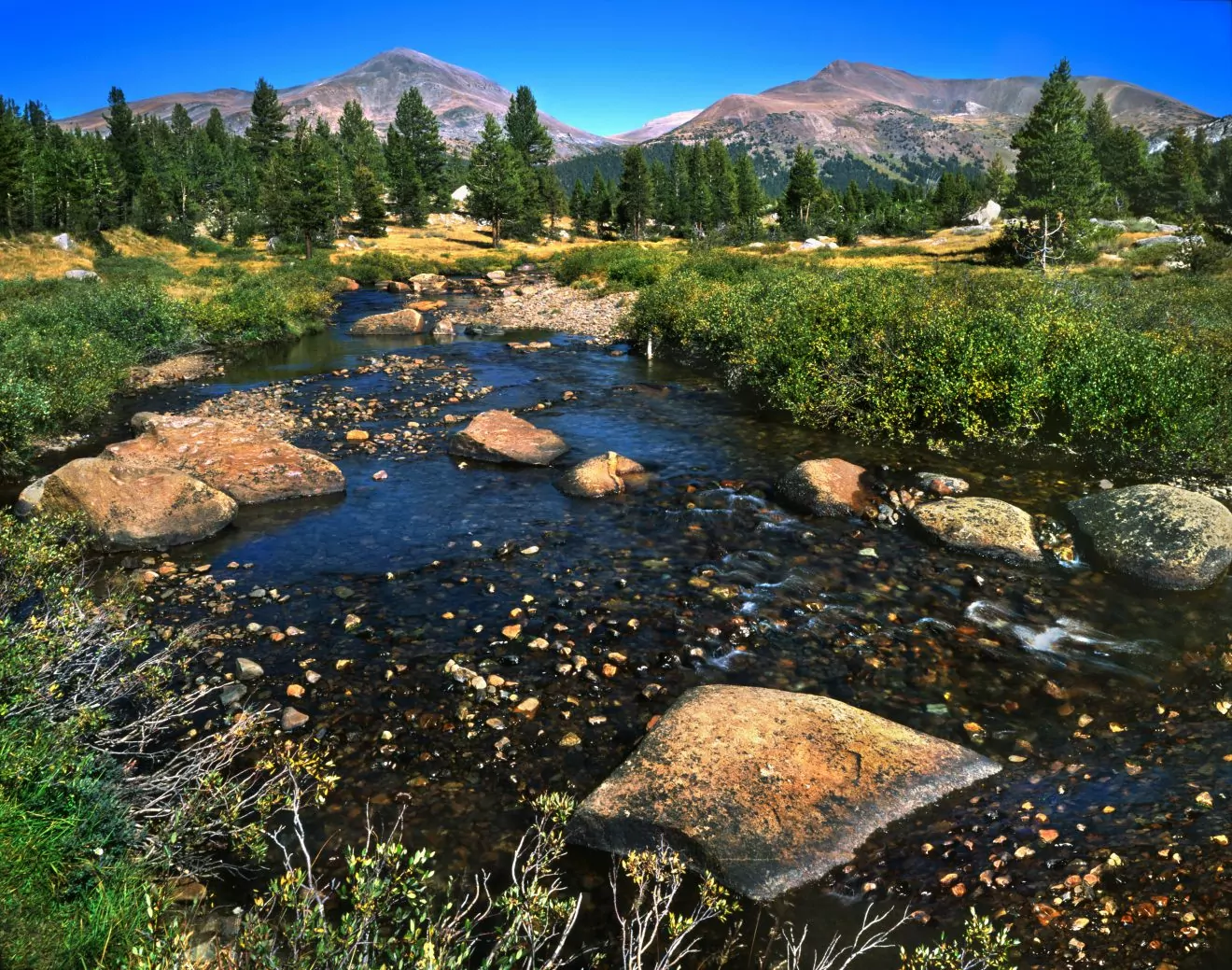
Mileage: 20 miles roundtrip | Length: 3 – 4 days | Elevation Gain/Loss: 1,300 feet with a pack ( + 1,700 as a day hike)
The Tuolumne region of Yosemite National Park is defined by expansive green meadows, dome-shaped mountains, and the pinnacle spires of the Cathedral Range. Water flows freely through the Grand Canyon of the Tuolumne, where you can witness cascades tumbling down silver slabs of granite. On our Yosemite Alpine Meadows and Waterfalls Trek , you can see some of the best that it has to offer on a moderate trip.
Unlike the Yosemite Valley, Tuolumne Meadows has high-elevation trailheads with relatively flat relief landscapes and far fewer crowds. Water is plentiful and the views are outstanding. Up in Tuolumne, wildlife is less accustomed to humans, so you’ll have fewer concerns about a hungry bear sneaking into camp.
The campsite along this route (where you’ll stay for two nights) has treated water and solar-powered outhouses for ultimate backcountry comfort. Plus, unlike many areas in Yosemite National Park, you’ll have access to bear boxes at camp, so you won’t have to carry bear canisters which are heavy and inconvenient.
You’ll need to obtain a permit to stay overnight in the backcountry of Yosemite National Park. We recommend you reserve a permit in advance, however, some first-come-first-served permits are available if you visit the ranger station the morning before your intended trip. If you’re traveling during the weekends or holidays, don’t expect to get a last-minute permit.
5. Havasupai Garden, Grand Canyon
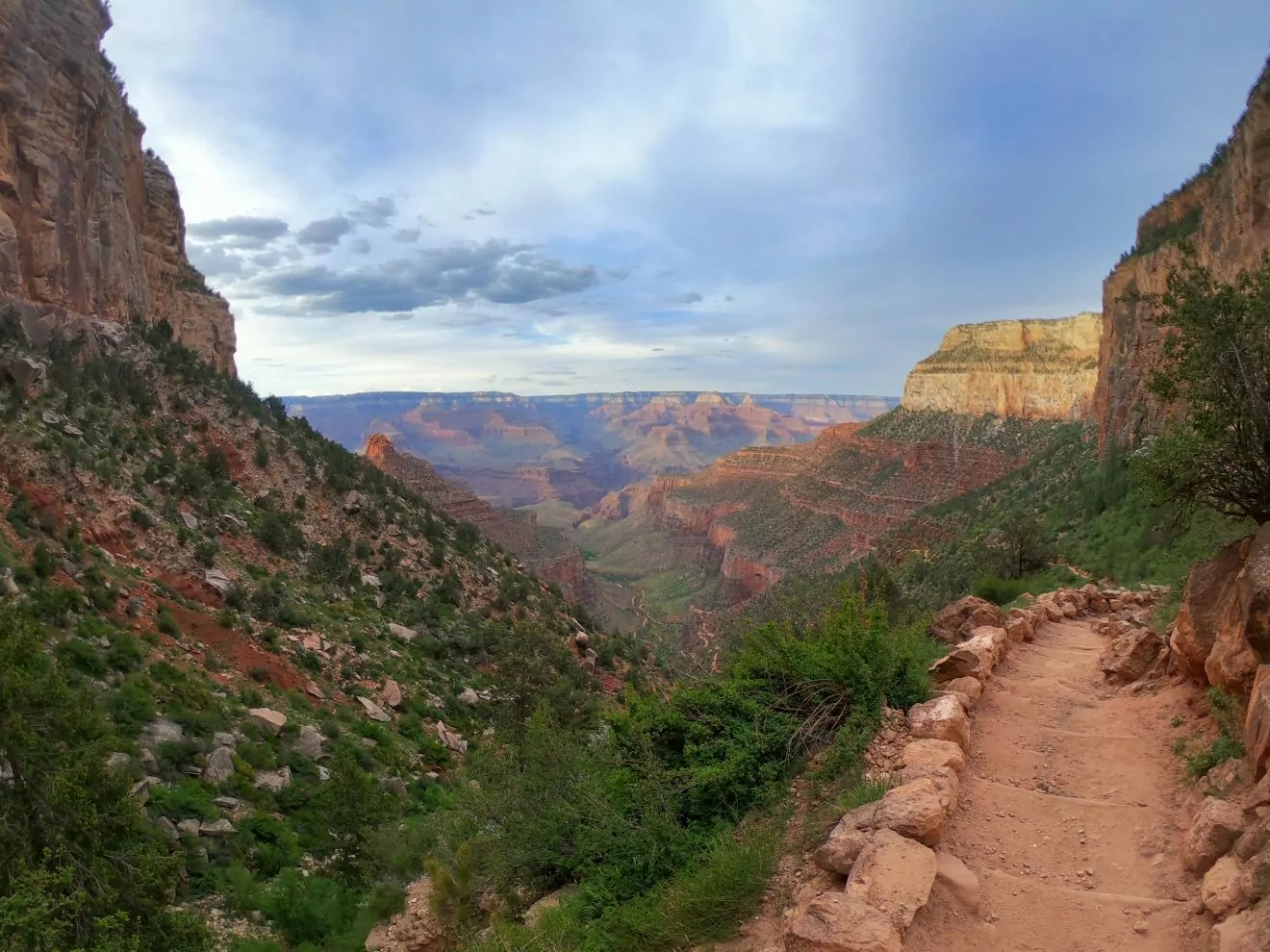
Mileage: 15 miles roundtrip | Length: 3 days | Elevation Gain/Loss: 3,000 feet with a pack ( + 1.500 ft as a day hike)
Okay, no backpacking trip in the Grand Canyon is exact beginner-friendly because of the nature of the terrain. However, if you’re set on hiking Arizona ‘s Grand Canyon for your first backpacking trip, the Havasupai Garden backpacking trip is a solid choice. Instead of backpacking to the bottom of the canyon, you’ll hike down the iconic Bright Angel Trail and stay at Havasupai Garden (a lush oasis with plenty of shade). The next day, you’ll hike down to the Colorado River without a big pack on your back. This three-day excursion allows you to experience the canyon beyond the rim — something not a lot of visitors can say. And as you enjoy dinner and panoramic views at Plateau Point, you’ll feel glad you put in the effort.
Havasupai Garden is a bit of an oasis, offering hikers more shade and water than other areas along the canyon. Potable water is available year-round to hikers. These qualities are important because heat and dehydration are two of the most dangerous factors for visitors. Additionally, this trail has less elevation gain and loss than other Grand Canyon trips. You’ll still get the expansive views and magic feelings that come along with an overnight stay in the Grand Canyon , without the knee-pounding descent to the bottom. Plus, this campground has toilets, so you don’t have to worry about properly burying or packing out your waste.
You must reserve and obtain a permit to backpack in Grand Canyon National Park. Because of the popularity of this park, these permits can go quickly! A few permits for Corridor campgrounds (including Havasupai Garden) are available for walk-ups at the Backcountry Information Center in the park.
Just because the Havasupai Garden Campground is more accessible than many backcountry campsites doesn’t mean you shouldn’t take it seriously. Anytime you’re hiking below the canyon rim, you need to carefully consider the conditions, your water capacity, and your fitness level. In the hot seasons, start early to avoid mid-day heat; this is an unforgiving climate and many hikers have died by setting out unprepared. Hiking with a guide can ensure that you have the tools you need to successfully backpack in the Grand Canyon .
6. White Mountain Hut to Hut, New Hampshire
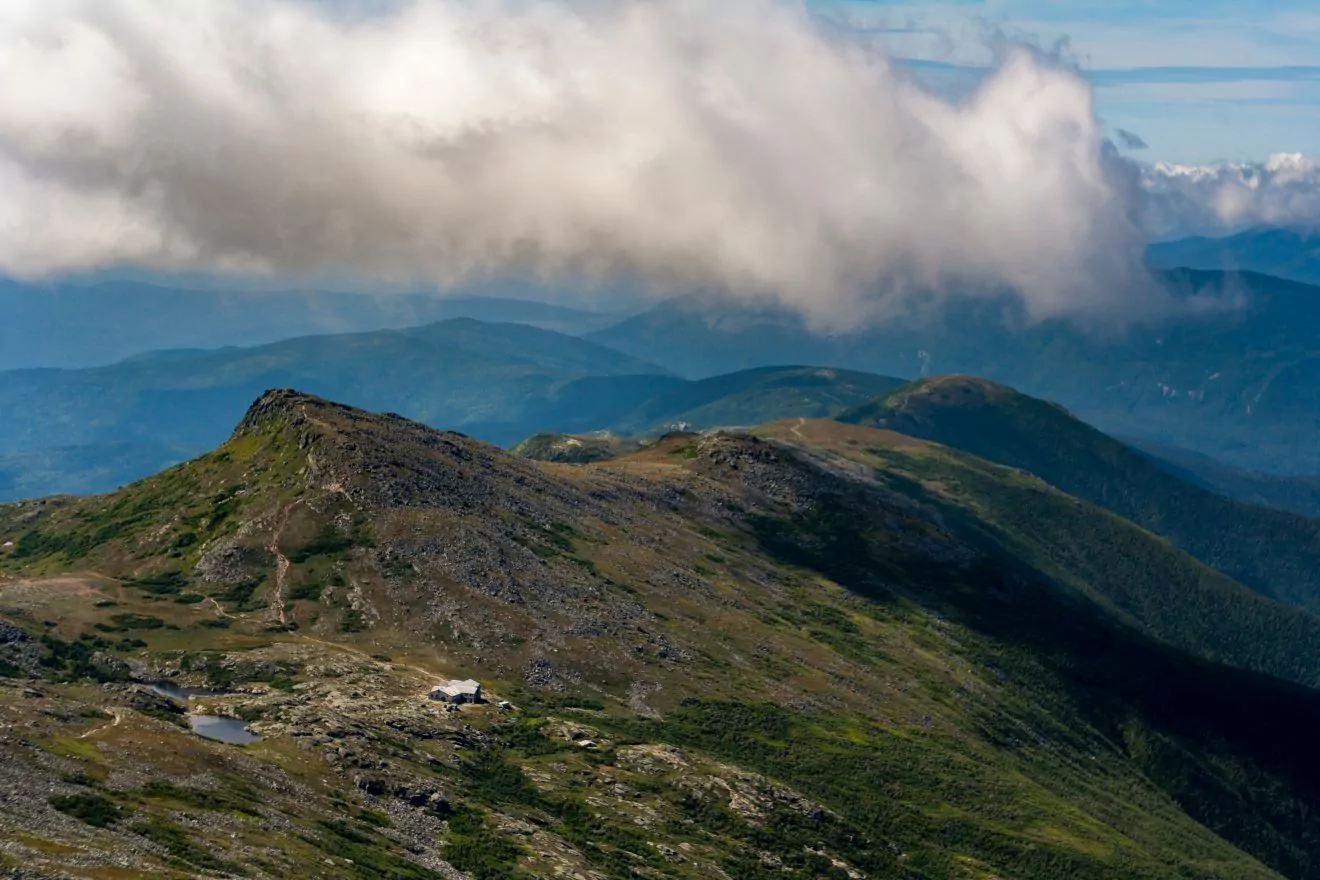
Mileage: 15 miles point-to-point | Length: 3 – 4 days | Elevation Gain/Loss: 3,600 feet
Traversing an alpine ridgeline and staying at high mountain huts — you expect that in Europe, but not in the U.S., right? But in the White Mountains of New Hampshire, you can enjoy the luxury of backcountry accommodations with the adventure of the alpine. Similar to the popular Presidential Peaks Traverse but less daunting, the High Peaks of the Pemigewasset Hut to Hut Trek offers the same appeal for a fraction of the difficulty. Staying along the Appalachian Trail (AT), you’ll bag peaks during the day and settle into cozy mountain huts at night. These trails offer a sense of camaraderie that is often hard to find when backpacking. As travelers from all over the world stay at the mountain huts, you’ll be able to chat about your hike over dinner.
On a hut-t0-hut trek , you’ll get to leave the tent and sleeping pad behind, shedding some of the heavy weight required for backpacking trips. If you’ve always wanted to spend the night in the backcountry, but aren’t ready to give up the luxuries of a bed, toilets, and running water, this will be a great introductory trip.
Also, you’re hiking above treeline for most of your trek, so the views per mile are exceptional. But, the terrain is a bit rougher than some of the other trails on this list.
Because this trek takes place primarily above the treeline, you should check the forecast , have good decision-making skills, and stay aware of thunderstorm conditions. The White Mountains are notorious for their erratic weather, so make sure to be prepared for some wild winds and weather.
You should book your stays in the AMC huts in advance. If you plan a point-to-point traverse, check out the shuttle system to ensure you can get back to your car at the end of your journey. The Appalachian Mountain Club strongly recommends reserving your shuttle; walk-ons are only accepted when space is available.
7. Lake Blanche, Wasatch Range, Salt Lake City
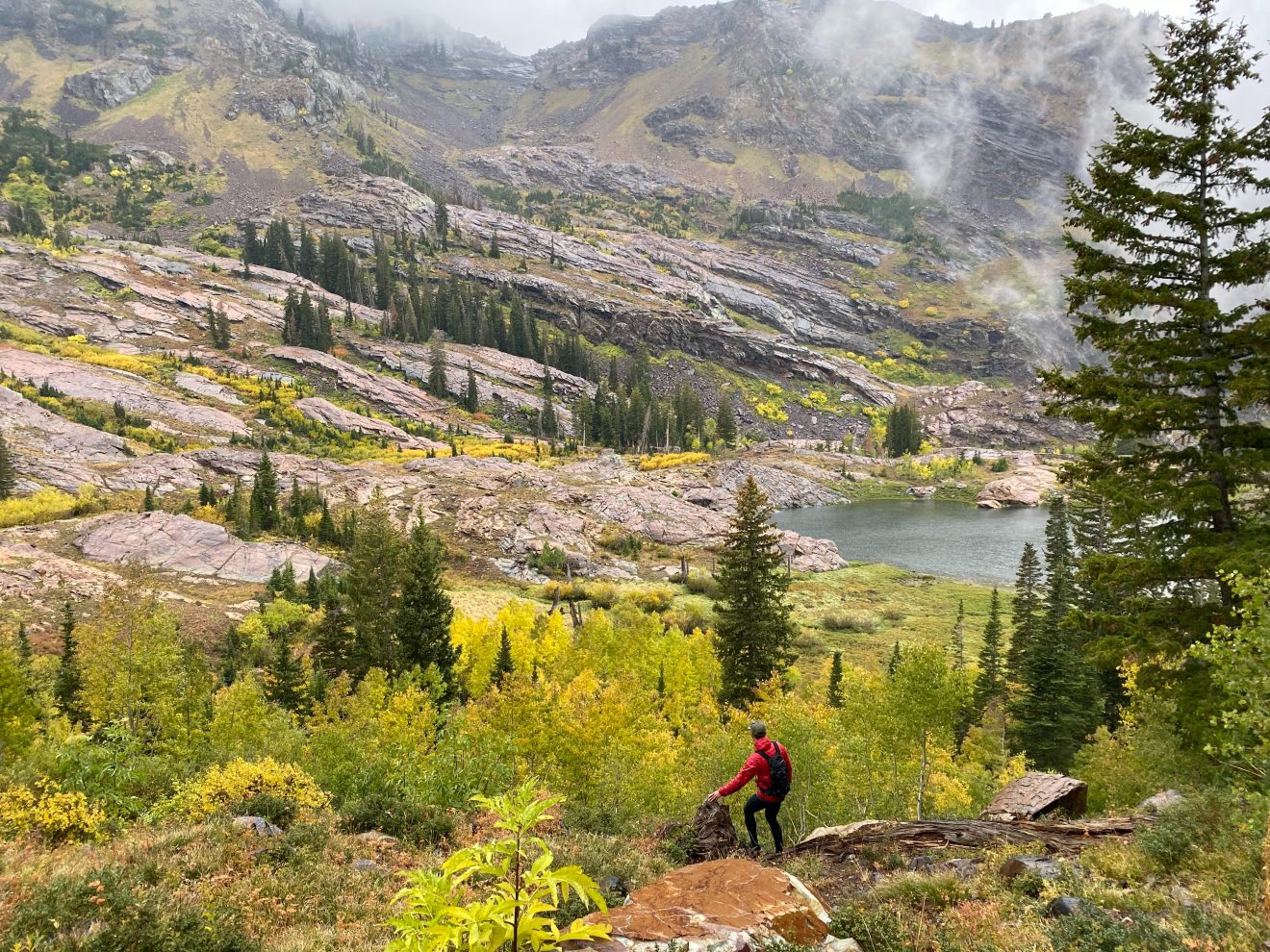
Mileage: 7 miles out-and-back | Length: 2 days | Elevation Gain/Loss: 2,700 feet
Lake Blanche is a popular day hiking destination in Big Cottonwood Canyon outside of Salt Lake City. Those that pack a bag to spend the night near the lakeshore (well, 200 feet from the water’s edge) will be rewarded by dwindling crowds and dazzling alpenglow on Sundial Peak. As you approach the photogenic basin, keep an eye out for moose grazing on aspens. Once you’ve set up camp, hike the spur trail to explore Lake Florence and Lake Lillan.
This backpacking trip can be completed as a quick overnight, as it is incredibly accessible from Salt Lake City, Utah. While the trail has a fair amount of elevation gain, the low mileage (3.5 one-way) makes this trip achievable for most first-time backpackers. Once you set up camp, you’ll have access to water. Also, while solitude can be desirable, you probably won’t be alone if you camp near Lake Blanche. Some first-time backpackers may feel reassured at the presence of other humans.
You do not need any permits for this backpacking trip. Check out the Uinta-Wasatch-Cache National Forest backcountry regulations before you go.
However, no swimming or campfires are allowed. Respect the watershed and don’t wash your dishes in the lake.
All-inclusive Backpacking Adventures
8. Heart Lake and Mount Sheridan, Yellowstone
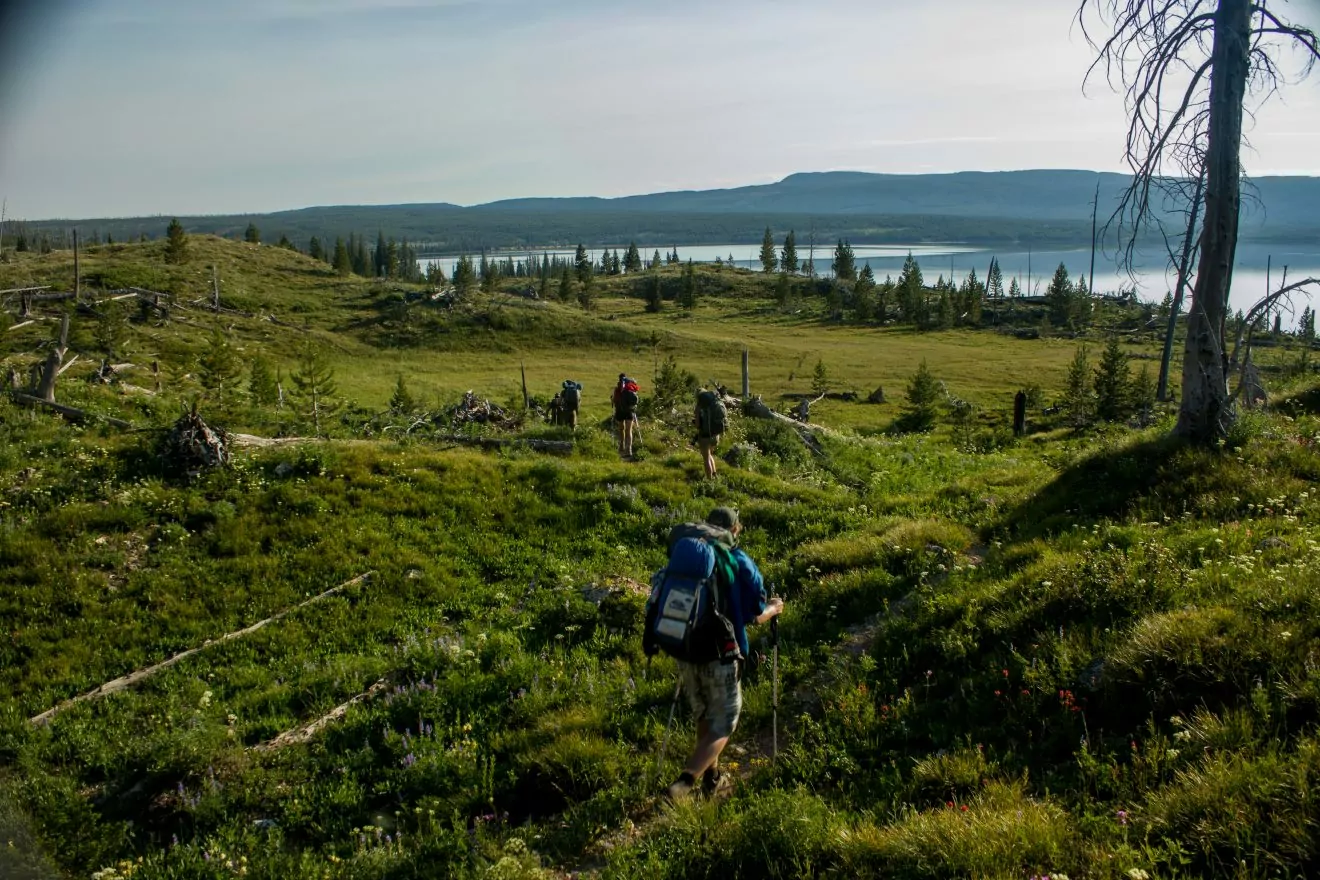
Mileage: 23 miles roundtrip | Length: 3 days | Elevation Gain/Loss: 900 feet (+ 1,800 as day hike from camp)
This remote region of Yellowstone is teeming with wildlife, rolling meadows, expansive lakes, and geothermal features. So what more could you ask for? Well, when you backpack to the shores of Heart Lake, you won’t want to miss Mount Sheridan. Adding on a summit attempt to an already fantastic hiking trail really elevates this itinerary. This area is so classically Yellowstone that you’ll fall in love with the subtleties, like a pine marten running through the trees, the feeling of the wind as you approach the ridgeline, and the rising steam of the hot springs along Witch Creek.
The Heart Lake Trailhead in Yellowstone National Park is a great jumping-off point for many backpacking trips, including our Heart Lake and Mount Sheridan and Heart Lake/Snake River trips. While they are both great options for a new backpacker, the Heart Lake/Mount Sheridan trip doesn’t require a shuttle, making it easier to execute for non-guided hiking parties.
You’ll set up a basecamp for two days near Heart Lake. There, you’ll get to relax along the lakeshore in the evenings. On your layover day, you’ll hike into the alpine during your summit attempt of Mount Sheridan. If you make it to the top (and even if you don’t), you’ll get sweeping views of the Absaroka Range, the Tetons, and Yellowstone Lake.
The rewards are big for a relatively flat 8-mile hike in to camp. This itinerary gives you plenty of downtime to enjoy the leisurely pleasures of backpacking, while also ensuring you work hard to get a well-rounded experience in Yellowstone.
When it comes to the Greater Yellowstone Ecosystem (Yellowstone, into the Tetons and beyond), you’ll have one big safety consideration when backpacking. Grizzly bears. This not-so-small detail is one of the only reasons this isn’t an ideal beginner trip. However, the elevation gain and mileage are very achievable by most beginners. So, if you like the idea of this trip but aren’t keen on hiking in grizzly country, join us on a guided trip and we’ll help you build the skills you need to travel with confidence.
If you do decide to hike in grizzly country without a guide, be sure to read up on safety protocol, hike smart, carry bear spray, and keep a bear-safe camp. You’ll also need to be prepared to hang all of your food at the designated bear hangs in the Park. We’ve written all about in this blog post .
If you want to stay overnight in Yellowstone National Park, you’ll need to obtain a permit . Heart Lake is one of the more popular backpacking destinations in the park, so you should make an advanced reservation. However, permits are also available for walk-ups up to two days before your trip date. If you do decide to chance your trip with a last-minute permit, you should have a backup itinerary in place in case you can’t secure your ideal campsite.
9. Ancient Lakes, Eastern Washington
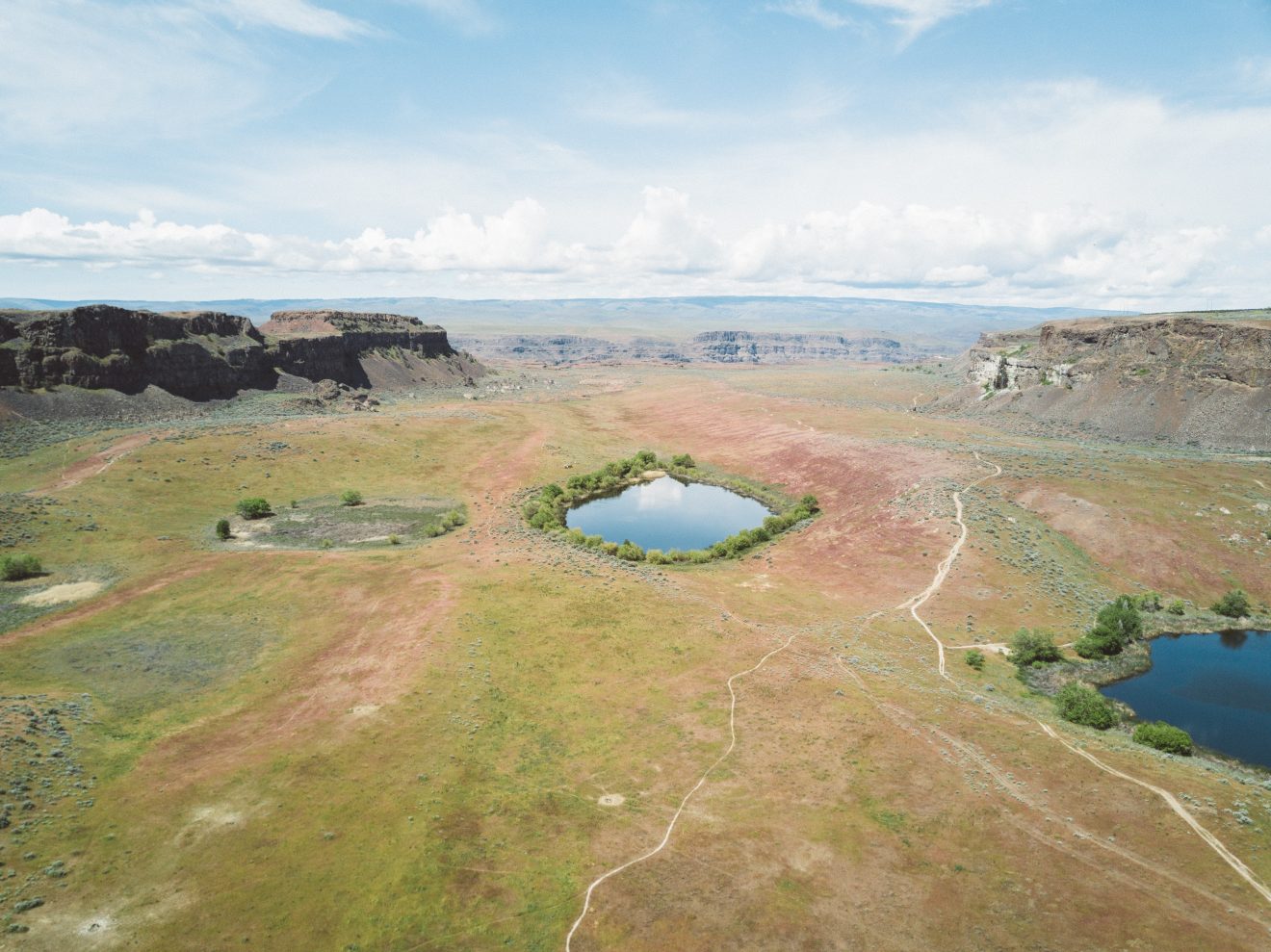
Mileage: 4 miles out-and-back | Length: 2 days | Elevation Gain/Loss: minimal
If you’re searching for the perfect early-season overnighter, look no further than Ancient Lakes near Quincy, Washington. This desert oasis is close enough to Seattle that you can squeeze in a quick weekend trip even if you only have Saturday and Sunday to play. As you wander among the columnar basalt rocks, you’ll watch waterfalls splash over the edges and create green streaks of life on the walls. Once you arrive at the lake, you’ll find many paths to explore the area. And nearly every campsite you can find has great views of the dark night sky.
Low-mileage and minimal elevation gain make this a great trip for beginners, kids, and the pup. While you do need to pack in all your water, you shouldn’t be deterred because you only have a 2-mile hike to the lake.
logistics and permits’
Pack in all the water you’ll need for your overnight trip! Even though you are hiking to lakes, all of the water is irrigation water from nearby farmlands. Agricultural runoff pollutes these water sources, so you’re better off bringing potable water from home. Also, you may want to avoid this one during the hot summer season. If you do backpack in this area during the summer, keep an eye out for rattlesnakes.
You do not need a permit to camp overnight in the Quincy Wildlife Recreation Area. However, you’ll need a Discover Pass to park at the trailhead.
10. Superior Hiking Trail, Minnesota
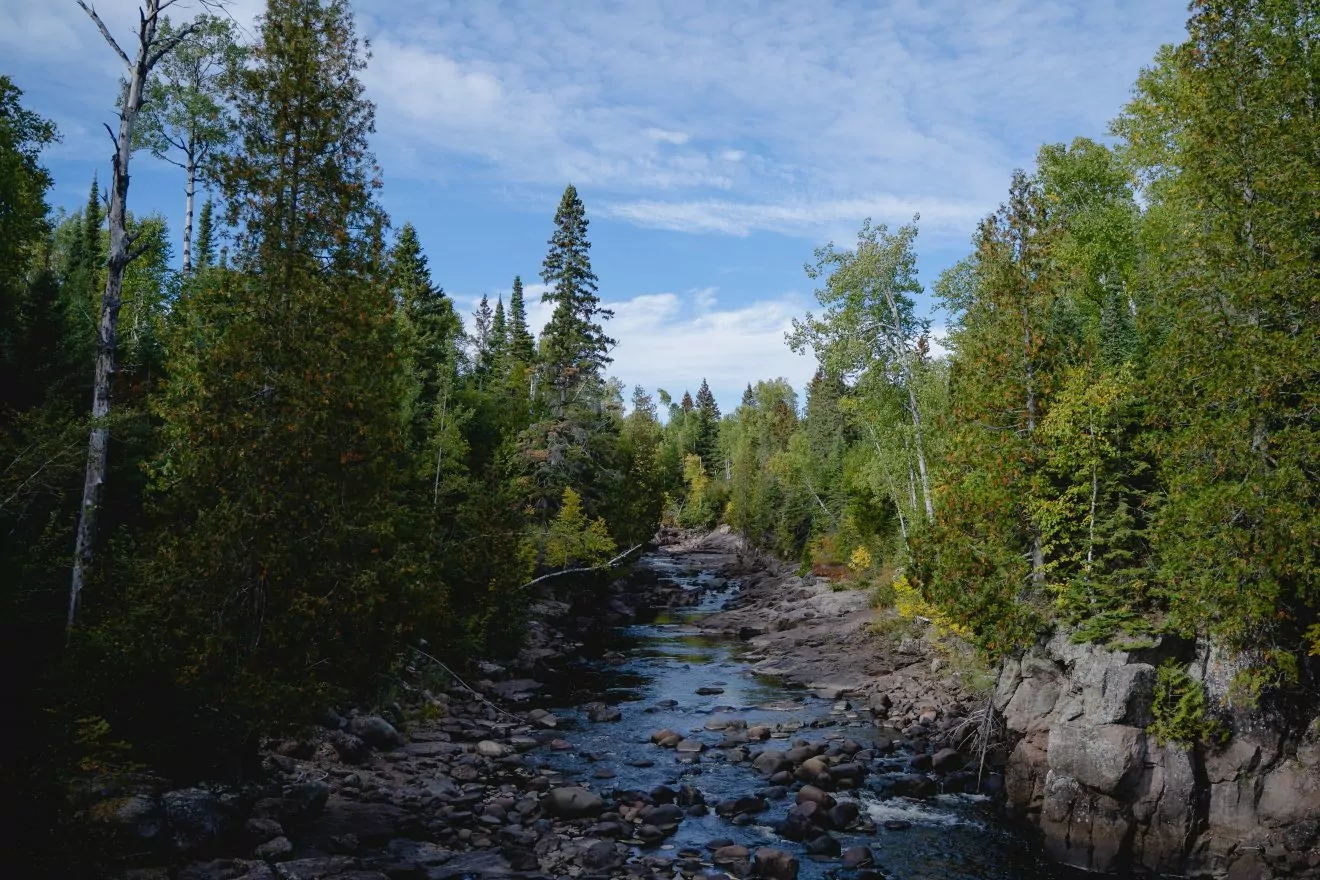
Mileage: varies (10+ mile one-way) | Length: varies (2+ days) | Elevation Gain/Loss: varies
We’re not recommending that you hike all 310 miles of this thru-hike for your first backpacking trip (not that we’d stop you…), but the Superior Hiking Trail (SHT) in Minnesota has many trail sections that you can complete in a weekend or on a three-to-four-day trip. Weave in and out of deciduous forests as you follow the shore of Lake Superior. You’ll cross deep gorges, pass fairytale-esque waterfalls, and even find your fair share of swimming spots. In the autumn, you’ll hike to vistas to see a sea of reds, oranges, and yellows. While the entire trail is stunning, some standout sections are from Caribou Falls State Wayside to Lutsen and from Two Harbors to Silver Bay .
The SHT hiker’s shuttle makes it easy to customize your route for your timeline and hiking ability, without having to do an out-and-back hike. Just choose one of 50 different trailheads and hike north or south! Most hikers travel from south to north. The trails are well-marked with a blue blaze.
When you’re on the trail, you encounter designated campsites very frequently. So, you never have to hike far to find a place to rest your head (unless you want to pack in the miles!) Additionally, some sections of the trail pass through towns. If you’re considering your first thru-hike or week-long trip, restocking supplies is incredibly easy.
No permits or reservations are required to hike and camp along the SHT. During busy weekends, you may have to share campsites with other hiking parties.
The trail does pass through state parks. In these areas, you can only camp with a reservation and fee. If you don’t want to make reservations, plan your itinerary so you camp in the other numerous campgrounds.
11. Glacier Gorge, Rocky Mountain National Park
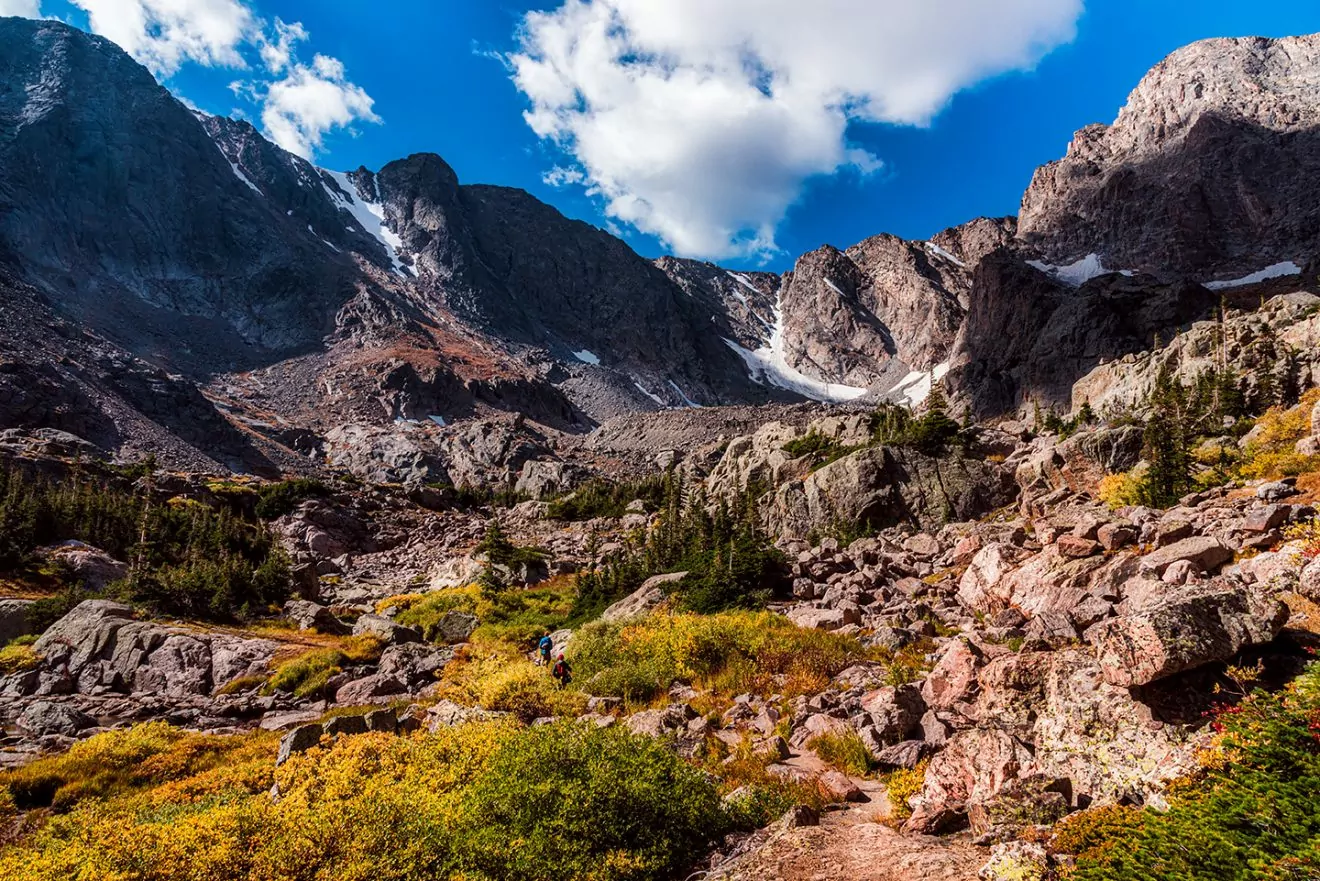
Mileage: 10 miles roundtrip | Length: 2 – 3 days| Elevation Gain/Loss: 1,700 feet
If you don’t mind the company of other hikers, Glacier Gorge is a fantastic destination for a first backpacking trip in Rocky Mountain National Park . It’s hard to snag a backcountry permit for this coveted area, but if you do, you’ll stay in one of two designated campsites — either in the Glacier Gorge Valley or along Andrews Creek. If you’re staying at Andrews Creek, establish your basecamp and set out on a hike to Sky Pond , a sparkling alpine lake nestled beneath Taylor and Powell Peaks. Spend an extra day exploring the area and head up to Andrews Glacier. If you’re at the Glacier Gorge site, bring a fishing rod and test the waters at Jewel Lake. Or, hike up to Black Lake and Ribbon Falls.
The campsites are relatively close to the trailhead. Once you set up camp, you’ll have opportunities to explore stunning high mountain lake basins without the weight of a heavy pack. Starting from the Glacier Gorge Trailhead, you don’t have to gain much elevation to get some pretty impressive views.
You’ll need to reserve a wilderness camping permit if you plan to spend the night in Rocky Mountain National Park. As there are only two designated campsites in this area, the spots fill up quickly. If you plan to fish, you’ll need a valid Colorado fishing license .
In Rocky Mountain National Park, you must carry and store all your food and scented items in a bear canister. This is the only food storage method permitted in this park.
12. Observation Peak Trek, Yellowstone National Park
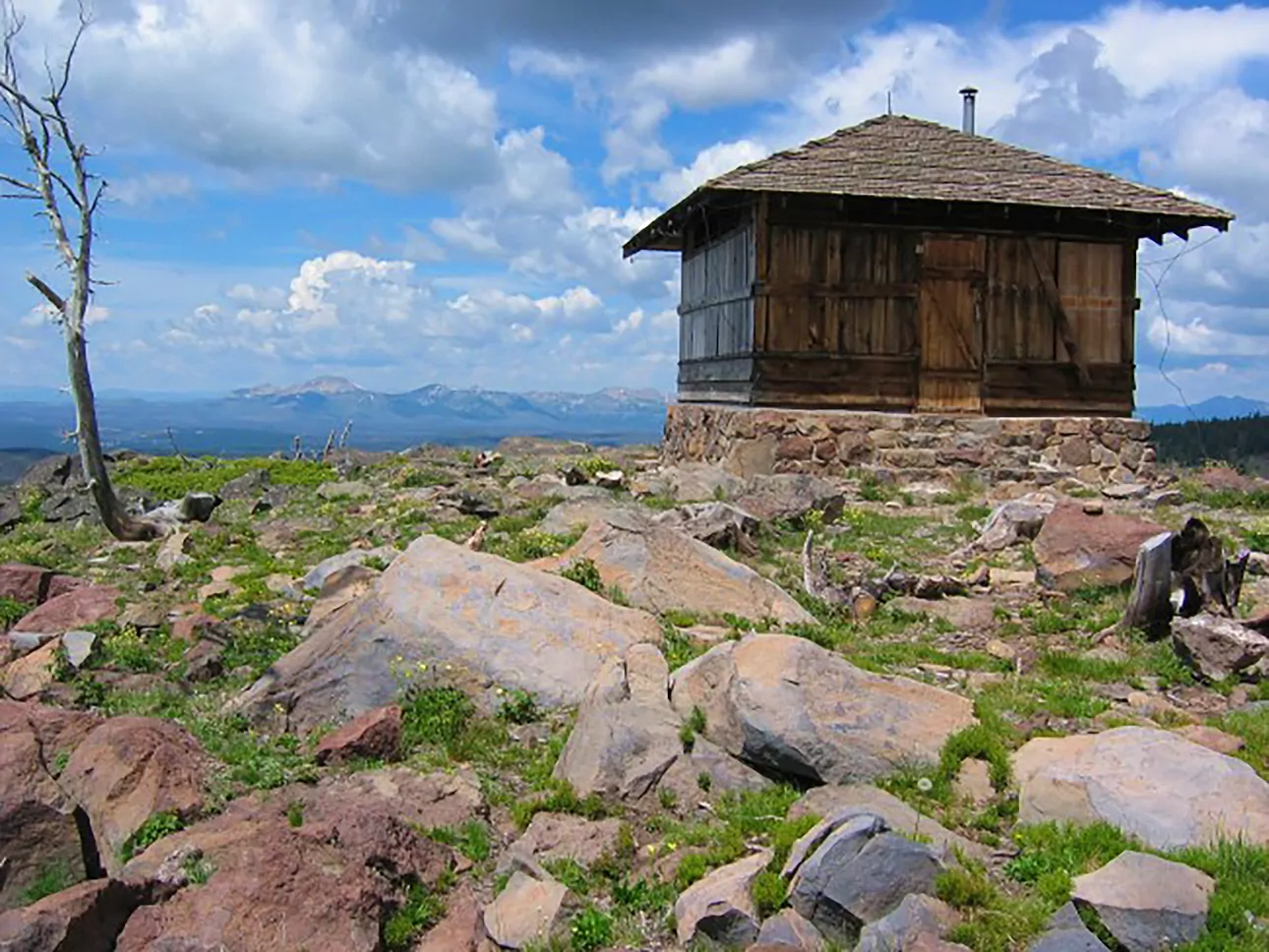
Milage: 10MI / 16KM roundtrip | Length: 2-3 days | Elevation Gain/Loss: 1300 ft
If you’re looking for an introduction to backpacking that will have you deep in the backcountry without having to hike for days, then a trek to Observation Peak is an excellent option. In the heartland of wild Yellowstone National Park, this relatively popular trail can be done in 2 or 3 days and gives you some of the most stunning scenery in the park. You can either chose to day hike to Observation Peak with a basecamp at Cascade Lake or include this summit on the first day of your trek before setting up camp. With moderate elevation gain and well maintained trails coupled with stunning lakes and vistas, this trail is one of the best extended weekend options in Yellowstone.
Why is it Great for a beginner?
An Observation Peak trek is a great option for first time backpackers as there are so many options for customizing the trip to what you want. Depending on if you are going for 2 or 3 days, you have options to hike to Observation Peak and take in the views, stroll to Grebe Lake and fish for trout, or simply relax at Cascade Lake if you want to rest your legs. Plus, the milage is minimal and doesn’t leave you exhausted by the time you reach camp. This trail is popular enough to make first time backpackers feel comfortable with others around, but doesn’t have so many people as to spoil the wilderness effect.
Logistics and Permits
The biggest logistical concern of hiking in Yellowstone is the wildlife. Grizzly bears are very active in this area and other wildlife such as bison and elk can also pose danger to hikers. This is one of the only downsides to embarking on this trip as an introduction to backpacking. However, with the moderate elevation and easy milage, you’ll be able to prepare for the possible dangers of wildlife and still complete this trip safely. If the wildlife seems like a bit much but the hike sounds appealing, Wildland Trekking offers this trip in both 2 and 3 day options so that you can get your feet wet before going out there on your own.
Like everywhere in Yellowstone, permits are required for overnight camping. Yellowstone’s traditional backpacking season is shorter than other national parks, mostly limited to summer, so you’ll want to make advanced reservations to ensure you get the route you want. Walk up permits are available at ranger stations 1 or 2 days before you begin your trek, but they go quickly each morning. It’s a good idea to have a back up itinerary in case you don’t get the permit you want. Permits are included on guided trips
Wildland Trekking offers this trip as an all-inclusive guided hike with meals, gear, transportation, permits, and an expert mountain guide all included. Guided trips are a great way to find out what backpacking is like before getting out there on your own. Click here to learn more!
13. Little Lakes Valley, Inyo National Forest, California
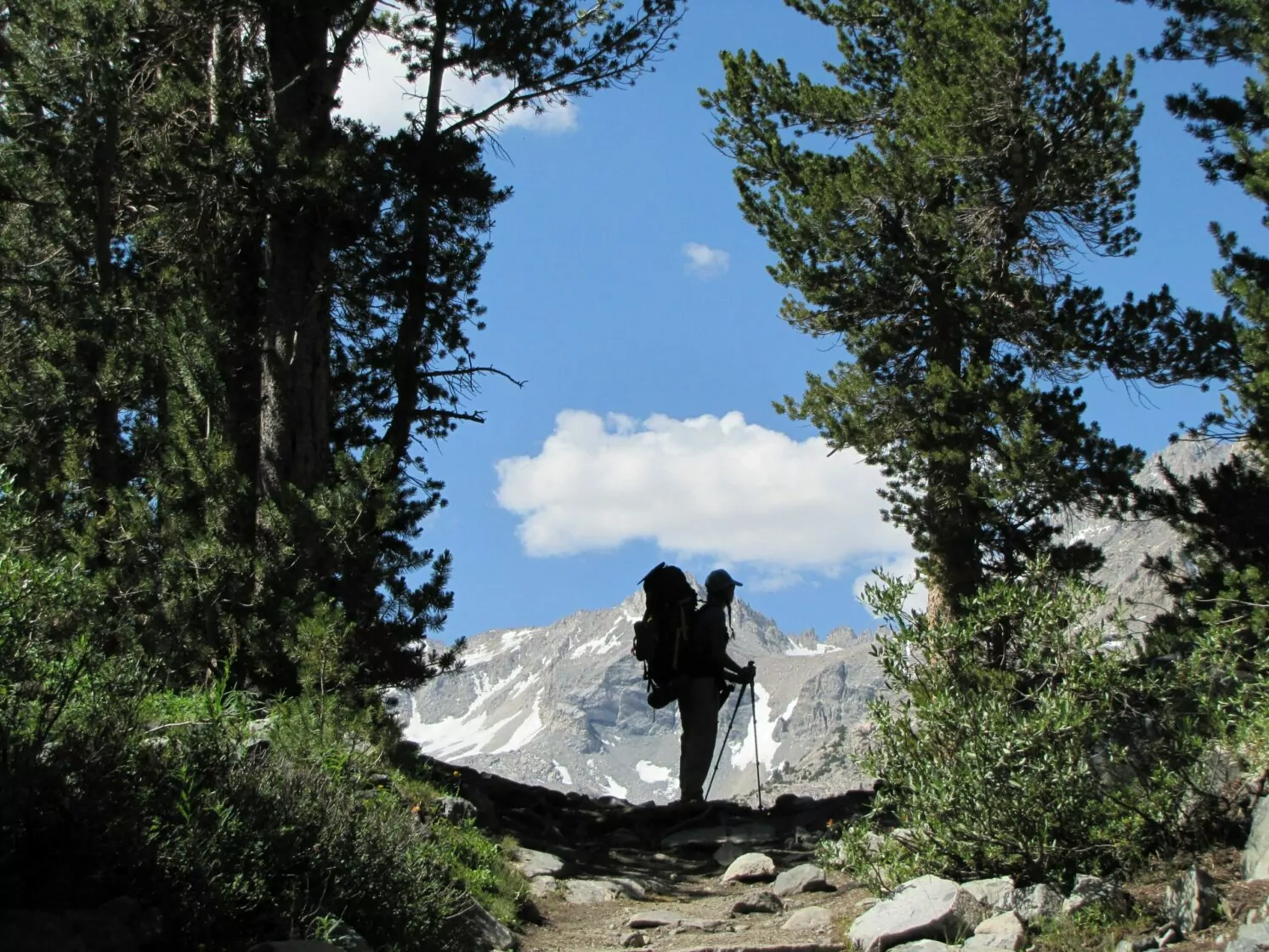
Milage: 8-10MI / 13-16KM Roundtrip | Length: 2-3 days | Elevation Gain/Loss: 1218 ft
Just north of Bishop on California’s Highway 395 is a blink-and-you’ll-miss-it turnoff with one of the Eastern Sierra’s best short distance hiking destinations: Little Lakes Valley. This valley, accessed from Mosquito Flats , is a great destination for a first time backpacking trip. With over a dozen serene alpine lakes, this valley is overflowing with campsite options, day hiking, fishing, and stunning views. While the trail is easily assessable, it’s no overly crowded and with the abundance of campsites, hikers may get an opportunity to have a lake to themselves. Located in the Inyo National Forest, there’s much less competition for permits compared to national park trails, but the scenery is no less spectacular.
Little Lakes Valley is great for beginner backpackers because of the big bank for your buck (or view for your step) that you get on this short and relatively flat trail. There is some elevation gain on the way into the valley, but that means it’s downhill on the way back! The abundance of lakes and streams make finding water a breeze and the pristine lakes with a back drop of snow capped, jagged peaks is unbeatable. Plus, the trail is easily accessible from Highway 395 and Tom’s Place at the turnoff is a great place to spot at for a burger on the way out!
Logistics for backpacking in Little Lakes Valley are pretty minimal as the short trail is out and back and there is only one access point. Your biggest concern is going to be the elevation as the trailhead is over 10,000 ft above sea level. All backpackers (not just beginners) who don’t live at elevation should spend at least one night (if not two) at a nearby campground that’s around 7,000 to 8,000 ft in order to acclimate to the elevation. Convict Lake is a good, close-by option for this.
Only attempt this hike in summer and early fall and make sure to check the weather before you go to assess road and snow conditions. Permits are required to spend the night here, but there is much less competition for them compared to national parks. You can make reservations online or get walk up permits at Inyo National Forest’s backcountry permit office.
This is bear country and you will need to use bear resistant containers for all food and smelly items. There are no campfires allowed anywhere in the valley and water collected from lakes and streams should be filtered.
14. Half Dome, Yosemite National Park
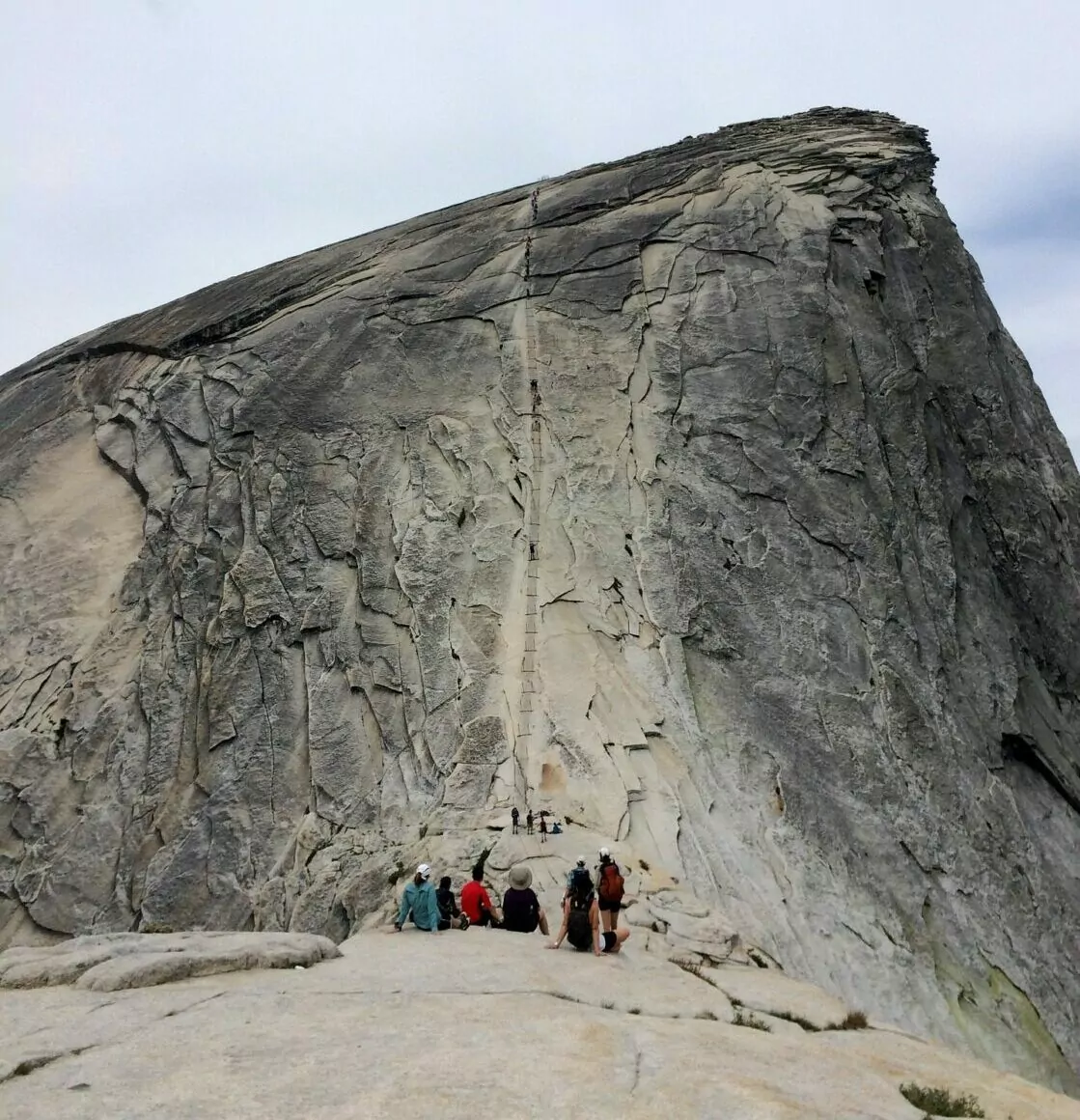
Milage: 16MI / 26KM Roundtrip | Length : 4 days | Elevation Gain/Loss: 2845 ft
First, a disclaimer: this trip is hard. Hiking to and up Half Dome is a challenge with large elevation gains and lots of exposure to heights. Beginning with the Mist Trail and ending with hiking the cables , this hike is not to be underestimated. But the views from the top are worth it. While many people do this hike in a single day, backpacking to the base of Half Dome and then summiting in the morning before any day hikers arrive is a great option, allowing you to skip the extremely long and strenuous milage day. It is notoriously difficult to get permits to hike Half Dome, but the backpacking permit is separate from the day hiking permit and will be easier to get.
So if this trip is so hard, why is it included in this list of best trips for beginner backpackers? Well, beginner trips don’t necessarily mean easy trips. If you are already an avid outdoors person, in good physical condition, and accustomed to hiking, you might want your first backpacking trip to be a bit of a physical (if not a technical or logistical) challenge. In this case, Half Dome may be a great option for you, especially if you’ve already done it as a day hike.
While the elevation is still hefty even for avid hikers, backpacking to the monolith cuts down the milage to reasonable days, making a backpacking trip arguably easier than a day hike. Of course, you might consider going with a guiding company due to the somewhat technical terrain on the granite and to avoid the hassle of getting permits.
Hiking Half Dome comes with some logistics to work out. The cables on the last miles of the climb are only up from late May through early October when there won’t be snow and ice on the granite. In addition, you won’t be able to hike on a rainy day (or even a day that is threatening rain) as the granite becomes extremely slippery when wet. Most accidents happen in wet weather. Check the forecast and make sure there are no storms brewing.
Permits are notoriously difficult to obtain for Half Dome, but backpacking permits are a little bit easier as you are not competing against all the day hikers for a spot. You can reserve permits on the National Park Service’s website.
The trail is in and back, so you won’t have to worry about transportation if you park your car at the trail head. Remember, this trail is commonly done as a day hike, so don’t expect to have backcountry solitude on this trek.
Backpacking to Half Dome with a guiding company can be a great way to challenge yourself physically, but have an expert guide to show you the ropes of backpacking before you get out there on your own. We offer this trek as a guided tour for anyone wanting a bit of a challenge with great rewards. All of our trips are all-inclusive with meals, gear, transportation, permits, and an expert mountain guide all included. Click here to learn more!
15. West Rim, Zion National Park
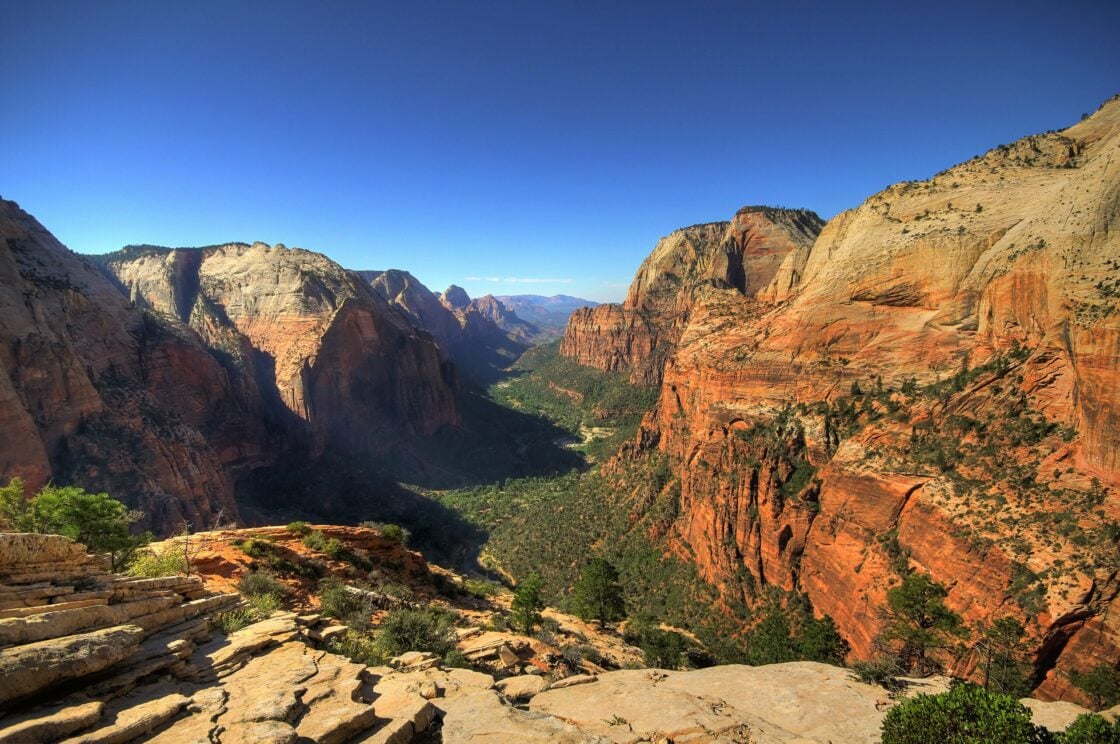
Milage: 16MI / 27KM Point to Point | Length: 2 days | Elevation Gain/Loss: 1700 ft
Beginning far from the gorgeous yet busy canyon that is Zion’s main attraction, the West Rim trail is a scenic, mostly downhill, 2 day backpacking trip that will knock the socks off any first time backpacker. Even seasoned backpackers will be kept interested on this moderate trail with non-stop views of Zion’s majestic red rock canyons and some campsites from which you can see both the sunset and the sunrise. Beginning at Zion’s highest point at Lava Point and hiking down toward the canyon, this trip takes hikers up to the alpine portions of Zion and then down into traversing through the classic canyons. And to top it all off, you’ll end at Scout Lookout with some of the most famous views in the park.
The West Rim in Zion is a great trip for first time backpackers because it is simply loaded with gorgeous views and isn’t too strenuous. You’ll be able to take leisurely mornings when hiking this trail over two days and if you start at Lava Point, it’s almost entirely downhill! (You will want to bring trekking poles however, all that downhill hiking can be hard on the knees). The elevation and milage are moderate and you simply can’t beat the views down into the canyon. While Zion is known for its crowds, you won’t find this trail overly crowded, giving first time backpackers a chance for some solitude on the trail.
Zion’s West Rim comes with a few logistical issues, but none that a first time backpacker can’t figure out. The trail is out and back so you will need to either park a car at the end of the trail and drive a second one to the trail head or use a shuttle service. Shuttles can be arranged from town easily.
Another logistical concern is water. There are seasonal springs along the trail, but the only one that flows year round is Cabin Spring. Water from streams and rivers may be impacted by a recent bacteria bloom that contain cyanotoxins, making the water unsafe for drinking and swimming. Please see the Zion’s official website for current updates on the cyanobacteria bloom.
Permits are required for overnight use and they double as campsite reservations for one of the 9 campsites along the trail. Walkup permits are available, but it’s best to reserve them online to make sure you get the permit you want. Zion has stricter regulations about backpacking compared to other national parks, so make sure to read the trail rules before setting out.
About Hannah Singleton

Hannah is a content strategist, writer, and guide for Wildland Trekking Company. She was born and raised on the East Coast but currently resides in Salt Lake City, UT where she spends her time exploring the wonders of the Rocky Mountain West. You can check out more of her freelance writing at www.hannah-singleton.com.

wildland Wires
Sign up to receive our exclusive Wildland Wire emails and stay up to date with Wildland Trekking's promotions, discounts, contests, outdoor tips and tricks, trip reports and more!
JavaScript seems to be disabled in your browser. For the best experience on our site, be sure to turn on Javascript in your browser.
- Create an Account
- Compare added products
- Superfeet Blog
10 of the Best Weekend Backpacking Trips in the US
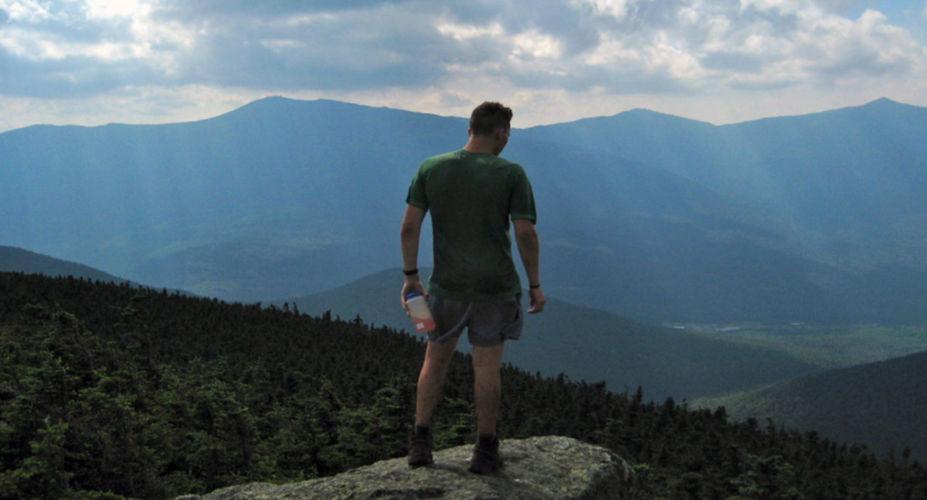
Easily one of the best ways to spend a long weekend, regardless of the time of year, is trekking a trail over rocky mountain passes, along breezy coastlines, or in deep, verdant woodlands. Whether you make plans to revisit an old favorite or knock a new one off your bucket list, backpacking always presents a memorable adventure.
From Southeastern classics like Roan Mountain, to New England treasures like a hut-to-hut trip in the Presidentials, to epic and challenging trails in the Tetons, here are some of America's greatest backpacking trips.
1. Pictured Rocks National Lakeshore
19 miles, 1-2 days, Easy
The view of Grand Portal Point from a distance (along the North Country Trail). Rachel Kramer
Situated in the upper Midwest, the Pictured Rocks National Lakeshore is a see-it-to-believe-it sort of landscape with towering sandstone cliffs, impossibly blue lake waters, waterfalls, beaches, and dense woodlands. It also happens to be home to a 42-mile section of the 4,600 mile North Country National Scenic Trail along the south shore of Lake Superior, stretching from Munising, MI, to Grand Marais, MN.
Backcountry camping is available at 14 campgrounds along this 71,400-acre linear park. In the winter, under the right conditions, mammoth ice caves form, attracting thousands of visitors.
The 4.4 miles of the lakeshore path between the Mosquito and Chapel rivers is the most popular section of the North Country Trail. It follows the cliffs through deciduous forest and over sandy sections within view of Grand Portal Point and Lake Superior.
Most hikers start and end their day hikes at Grand Sable Visitor Center on the north end. Further south, the Coves Group to Munising Falls is an ambitious 19.2-mile trek. Yet another option is to start at Munising Falls at the southern end and take a ferry to Grand Island National Recreation Area. A popular marathon and 50K is run around the perimeter of the island in July, switching from clockwise to counter-clockwise year to year.
2. Superior Hiking Trail
18 miles, 1-2 days, Moderate
Taking in the views of Lake Superior Adam Kahtava
The Superior Hiking Trail is a 310-mile long footpath in northeastern Minnesota that follows the ridgeline on the North Coast of Lake Superior.
Most accessible is the 40-mile southernmost section through Jay Cooke State Park to the northern boundary of the city of Duluth. There are no campsites there, and due to flood damage in 2012, parts of this section remain diverted.
To the north, however, is the 18-mile stretch from Silver Bay to Country Road 6 where views of the Big Lake and smaller glacier-scoured lakes are frequently in view through the birch and maple canopy. The colors peak in late September and early October, if you can time your trek then. (Avoid the trail in May and early June, when the clouds of mosquitoes and black flies at their thickest.)
This section of the SHT includes a short but steep climb up Mount Trudee to a 30-foot waterfall on the Baptism River. If you don't catch a glimpse of the deer, wolves, or mountain lions known to inhabit the region (don't worry; they're more afraid of you than you are of them), you may still see their tracks.
Rockier and more technical sections of the SHT are favored by the trail runners who race out of Lutsen, MN, in May (25K and 50K) and September (26.2, 50 and 100 miles).
3. Roan Mountain Highlands
14 miles, 1-2 days, Difficult
The views from these ethereal highlands are stunning and constant, and bring to mind visions of Scotland and Wales. Joe Giordano
Roan Mountain is a 20-mile massif that lies along the Tennessee-North Carolina border. It consists of five sub-peaks, and is divided into two sections by Carvers Gap. To the west of Carvers Gap are Roan High Bluff and Roan High Knob, with Tollhouse Gap and Rhododendron Gardens lying between the two peaks.
A 14-mile section of the Appalachian Trail traverses the Roan Mountain between Carvers Gap and Highway 19E along the northern border of TN and NC. Heading south from 19E, plan to hike 8 miles to the Overmountain Shelter, a.k.a. “The Barn.” Stay inside with other backpackers or pitch your tent in its vicinity. Either way, you’ll be waking to a spectacular sunrise over the valley.
Pack up and trek the final tough 5 miles over three balds. As you approach Carvers Gap, you'll cross Grassy Ridge, the longest stretch of grassy bald in the Appalachian Mountains.
4. Grayson Highlands State Park
7 miles, copious bouldering, 1-2 days, Moderate to Difficult
Camping among the rhododendrons in Virginia's Grayson Highlands Jake Wheeler
Within southwestern VA lies the Jefferson National Forest. And within the forest lies Grayson Highlands State Park , a gateway to Mount Rogers and to a number of miles along the Appalachian Trail.
To summit Mount Rogers, the state’s highest peak at 5, 729 feet, there’s a 6.7-mile Mount Rogers National Recreation Trail from the Grindstone Campground six miles east of Troutdale. Or take the scenic 2.3-mile Wilburn Ridge Trail from the state park. There are no views from the forested peak, but on either route you’re likely to encounter wild ponies and clusters of exposed and inviting boulders.
In fact, both AT thru hikers and day visitors would do well to check out the bouldering scene in the Grayson Highlands. The Listening Rock Trail offers the most bouldering opportunities, followed by the AVP and Boneyard areas. Climbers take in beautiful top-outs, especially after conquering the Highland Highball, in the Highlands Bouldering Area.
Backcountry camping is not allowed within Grayson Highlands State Park, but camping is allowed in the Mount Rogers National Recreation Area (MRNRA). Hikers traveling north on the AT exit the park when they cross Big Wilson Creek. You’re welcome to camp across the creek, just past the Wise Shelter fence.
5. Standing Indian, NC
24-mile loop, 1-2 nights, Moderate
The Standing Indian Shelter McDowell Crook
A two-night stay is recommended to fully take in the Standing Indian Loop in NC’s Nantahala National Forest. Fifteen miles of the 24-mile Standing Indian Loop is on the Appalachian Trail, but all of it showcases the Nantahalas’ most impressive and beautiful features.
Knowing you start the trek at 4,000 feet makes the multiple 5,000-foot peaks a little less intimidating. For the AT, the Standing Indian trip is a moderate hike. All the better, as the views along the way are some of the most stunning you'll find in the Smokies.
From the Standing Indian Campground, travel up the Long Branch Trail until it connects with the AT. Mt. Albert is only 5.5 miles from the trailhead, but plan to spend your first night at the summit. In the morning, drink in the panoramic view before descending to Carter Cap, where there's a shelter and water. Expect to spend most of the day walking along a ridge with sweeping views.
Gradually you’ll make your way to the treeless and spectacular peak of Standing Indian itself. There is one small campsite on this bald, so if you want to snag it, you'll need to begin your second day very early in the morning.
On your final day, head back down to the Standing Indian Campground on the 7-mile Kimsey Creek Trail through dense hemlock groves and rhododendron tunnels. Keep in mind that in the early spring months, you’re likely to find snow and ice on this side of the mountain.
6. The Long Trail
23 miles, 2 days, Difficult
Some of the views you'll find along the Long Trail in Vermont Nate Merrill
The Long Trail, the oldest long-distance hiking trail in America, is a 272-mile footpath that follows the main ridge of the Green Mountains from the Massachusetts-Vermont stateline to the Canadian border. The Long Trail stretches the length of Vermont and crosses the state’s highest peaks.
It can take nearly three weeks to thru-hike the Long Trail and the 53 mountains (27 of which are 3,500 feet or higher) along it. It can be tackled section by section, too.
One of the toughest sections, the 23 miles from Birch Glen Camp northwest to the Buchanan Shelter, includes 8,000 feet of climbing and descending—including 1,700 feet at a 17 percent grade to the summit of Camels Hump . The exposed scramble over rock slabs pays off with views of Lake Champlain and the Adirondacks to the west, Mount Washington to the east, and Mount Mansfield to the north.
The descent along the ridgeline bottoms out with a 3.6-mile hike to the outskirts of Jonesville, VT. Stay overnight at the Duckbrook Shelter or wait to camp on the western slopes of Bolton Mountain at the Buchanan Shelter. There are six shelters along this stretch, thanks to the Green Mountain Club which built the trail between 1910 and 1930 and maintains it to this day.
7. Presidential Traverse, NH
23 miles, 1-2 days, Difficult to Moderate
Overlooking the White Mountains of New Hampshire after a strenuous climb Ry Glover
The Presidential Traverse in the White Mountains of New Hampshire is nearly 23 miles long with close to 9,000 feet of elevation gain. Best hiked from north to south, to bag the highest of 10 peaks first, the traverse demands a dawn-to-dusk effort if you don’t have three to four days to spare.
The traverse is almost entirely above the treeline, where the whiteout conditions are common and can cause one to turn back. Besides the right apparel, a map and compass are essential.
The first day is the toughest, with 4,000 feet to climb over the 3.8-mile Valley Way Trail to the peak of Mt. Madison. Continuing south on the Gulfside Trail, backpackers summit Adams and Jefferson to earn the right to lie down in the grass of Monticello Lawn.
Appreciate the rest, because Mt. Washington—the highest peak in the White Mountains—is next. Expect bad weather before reaching the snack bar at the summit, which tourists reach by road and rail.
From there the climbing is largely over, while the views of the southern Presidential range are not. The Crawford Path, the oldest continually maintained footpath in the U.S., leads to the Lake of the Huts and Mount Monroe. The going only gets easier past mounts Franklin, Eisenhower, Pierce, and Jackson.
8. Olympic National Park
Mileage varies, 1-3 days, Moderate to Difficult
With roughly 600 miles of trails, there are essentially endless opportunities for backpacking in Olympic National Park David Fulmer
At 1,442 square miles, Washington's Olympic National Park is nearly twice as large as Great Smoky Mountain National Park, and 300 square miles larger than Yosemite. The park has more than 600 miles of sensational trails, the majority of which are designated wilderness by the National Park Service, and 60 miles of craggy and picturesque coastline.
The backpacking options are numerous, but summitting Mt. Olympus, the tallest peak in the park, is a must. A campground within the park’s Hoh Rainforest is open year-round, so stay there and you can also enjoy backpacking the trail to Royal Basin and the Upper Royal Basin beyond where unparalleled views of glacial mountains and tarns await.
Easier hikes, from LaPush to Shi Shi and the popular Ruby Beach, are also often rewarded with whale sightings.
9. Teton Crest Trail
25 miles, 2-4 days, Difficult
Backpacking along Paintbrush Divide, arguably the most scenic stretch along the Teton Crest Trail Brian Saunders
If the Teton Crest Trail is not on your bucket list, it should be. Check it off by taking on the 25-mile section between Death Canyon to Cascade Canyon, and conquer the Alaska Basin and Hurricane Pass in the process.
The Phillips Pass Trailhead, halfway up Teton Pass, is the place to start. Plan to camp at Alaska Basin where a permit is not required because it lies just outside the boundaries of Grand Teton National Park.
Return to the park the next day to go up and over Hurricane Pass, and down into the South Fork of Cascade Canyon. End your Crest Trail trip there or head up the North Fork of Cascade Canyon to your last campsite. That would give you another day to hike Lake Solitude as well as Paintbrush Divide and Paintbrush Canyon , stopping at the North Jenny Lake parking area.
10. Old Rag in Shenandoah National Park, VA
10 miles, 1 day, Difficult
Breathlessly drinking in the views of Shenandoah National Park David Fulmer
The Old Rag Loop is the most challenging of the more than 500 trail miles within Shenandoah National Park in VA. It may be only 10 miles, but it takes 8 hours to complete, according to the National Park Service. They're not joking.
The most popular way to hike the Old Rag Loop is up the Ridge Trail, across the rock scramble to the summit, than down the Saddle Trail to the Weakley Hollow Fire Road.
The first two miles of the wooded trail gets increasingly steeper, and the vegetation changes noticeably. Once you're out of the woods onto the ridgetop, the scrambling over giant granite boulders begins. From the summit, you can breathlessly drink in the 200,000-acre expanse of the Shenandoah National Park, a portion of which is federally designated wilderness.
From here it is advisable to take the Saddle Trail, a fire road, back to your vehicle. It's 1.2 miles longer but much flatter and quicker.
Written by Joel Patenaude for RootsRated in partnership with Superfeet.

- Hiking & Trekking
Canadian Rockies
The tour was absolutely amazing. Took me well out of my comfort zone with camping but I loved it all the Andrew was awesome. He was so knowledgeable and went out of his way to make sure we gained the utmost out of our tour. He knew so many little places to take us to and helped out so much in advising us on the best hikes and places to go to. Tents were roomy and easy to put up. All the camping grounds were clean and welcoming. I just love Canada and was so grateful to see it in a different way and not on a tour bus. Thoroughly recommend this tour.

Hiking Utah's Mighty 5
Rachel De Genaro -our guide was excellent. It is unbelievable how well she preformed all the roles of a guide, cook, shopper, driver and care taker to all of us. She was phenomenal! She was calm and organized. She as well as the people in our group made the trip more fun and enjoyable. Thumbs up!!!! G adventures though could have been a better communicator as to what to expect and prepare
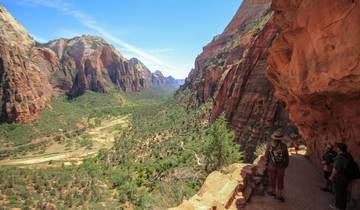
Zion to San Francisco Adventure

Hiking in the Canadian Rockies
Excellent trip, definitely recommend it!
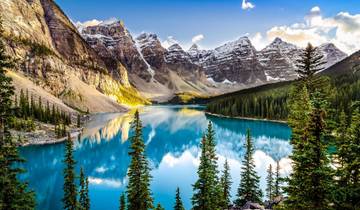
12 Day Rockies Hiking and Camping Tour
Fabulous trip - highly recommended.Not too much time travelling so able to hike and enjoy the scenery.
- €140 deposit on some dates Some departure dates offer you the chance to book this tour with a lower deposit.
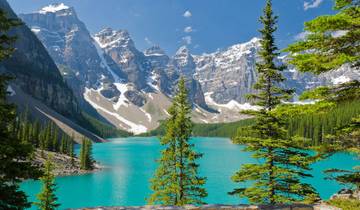
- Mountain Hikes
Walking in the Canadian Rockies
Fantastic guide, great group of people to travel with.
- 10% deposit on some dates Some departure dates offer you the chance to book this tour with a lower deposit.

9 Day Rockies Hiking and Camping Tour
Couldn't recommend the tour more, exceeded all expectations. Had fantastic group and guides. Guides did everything to make it a memorable and comfortable trip for all. Miss it already and hope to do another tour in the future
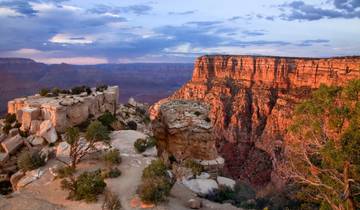
- Walking Adventure
National Parks Walk
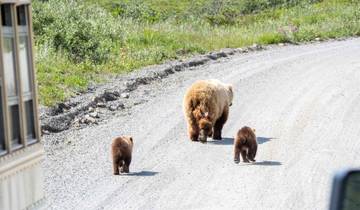
Alaska & Yukon Explorer
Really fabulous experience hiking Alaska and Yukon, beautiful, and often majestic scenery. We had a couple of close encounters with black and grizzly bears, which was a real treat, all from the safety of the minivan. The weather was just beautiful, only rained 1 day of the 15 day tour. The hotels were a welcome treat at the end of the day's hike, and especially recommend those who included breakfast in their stay because not all did. Our guide, Stefan, was very knowledgeable about the hikes and the countryside, but had to be reminded to translate from German to English for me, when informing the mainly German group (who also spoke English). Overall it was a very memorable experience...My friends in NZ have tagged Ruby Range Tours as their next adventure...Maakere - Rotorua,NZ
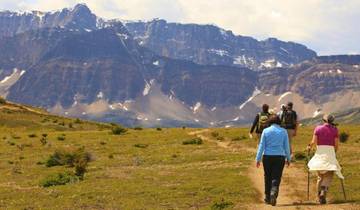
The Best of Banff and Jasper, Hoteltour
Overall very good hiking and sightseeing tour. Nice group of people, 10 with the leader 11. Happy with accommodation, breakfast and facilities where we stayed. Good to travel in a spacious and air conditioned coach. The places we visited and hiked were mostly amazing. What let the experience down slightly is insufficient time allocated for the long hikes for slower but fit hikers like myself. There were at least 2 others who struggled with the same problem. We could have done with another hour to allow for more frequent and slightly longer breaks. Then we could have completed the longer and tougher hikes. As it is we had to stop before reaching the top as we were exhausted. It is very important when hiking mostly steep routes (where it is up and up and up) all the time and there are older hikers 60+ but fit hikers to allow more time and longer breaks. They cannot be expected to keep up with much younger fit hikers! The tour is advertised for ages up to 80 but it would help if more was done to accommodate older, fit hikers.
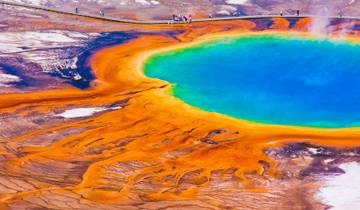
4 day Yellowstone and Tetons in depth tour from Salt Lake City Small Groups Tour
Great tour, Kit did a great job guiding us. I got to see so many great parts of Yellowstone.
- 5% deposit on some dates Some departure dates offer you the chance to book this tour with a lower deposit.
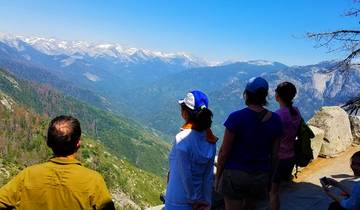
- Christmas & New Year
USA – 8 Days Arches Canyonlands Antelope Zion Bryce Grand Canyon
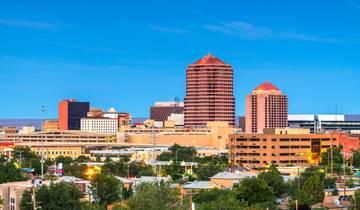
USA: National Parks Road Trip (End Los Angeles, 12 Days)
- €100 deposit on some dates Some departure dates offer you the chance to book this tour with a lower deposit.
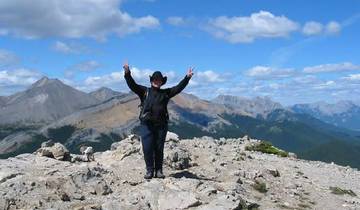
The Best of Banff and Jasper, Campingtour
It was a memorable experience. Just definitely not something for me, or one I would do again as I prefer more variety. It got really boring and tiring for me hiking and looking at the same thing. I’d probably add more other different activities in my itinerary and maybe take it a bit slow. I felt so rushed.
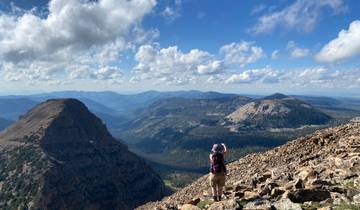
Rocky Mountain Immersion: Explore Yellowstone, Grand Teton, and Rocky Mountain National Parks
What people love about hiking & trekking tours in north america.
I have great time. Dusty is the best tour manager. I have very good first camping trip.
the best way to explore the vastness and glory of the Utah desert is by camping and hiking in small groups. I enjoyed this trip immensely, it was challenging enough but not too much. Our guide was a brave and resourceful powerful woman. I am planning my next trip with you already!
Great week..great people especially the two guides Jordan and Mikeala
Destinations
- Alaska (16)
- Arizona (25)
- California (39)
- Colorado (18)
- Montana (5)
- Washington (15)
- Wyoming (44)
Hiking & Trekking Tours
- Attraction-Based Hikes (53)
- Mountain Hikes (43)
- Centre Based Walking Holidays (8)
Travel Styles
- 10 Best Hiking & Trekking Companies
- Your Guide to Planning a Private Hike 2024/2025
- Best Hiking Tours in The World 2024/2025
Discover TourRadar
- See All Tour Operators in North America
- Alaska Vacation Packages
- Egypt Tours
- India Yoga, Meditation & Himalayas - 10 Days
- Ecuador Travel Guide | All You Need to Know
- 10 Best Northern Lights Tours in December
- Best Time to Visit Masai Mara: Month by Month Infographic
- Best 10 Days Thailand Itineraries (with Reviews)
- 1 800 970 7299
- Live Chat (Online) Live Chat (Offline)
- My Wishlist
- Find a Trip
Your browser 'Internet Explorer' is out of date. Update your browser for more security, comfort and the best experience on this site.

Hiking & Backpacking Tours
- Destinations
- United States
- Hiking & Backpacking Tours
When it comes to immersing yourself in the great outdoors, nothing beats camping in the wilderness beneath a sky full of sparkling stars.
Have all the fun of an adventurous outdoor experience without any of the organizational hassle by embarking on a hiking & backpacking tour through some of the USA’s most captivating landscapes – the Intrepid way. Take in the sights of national treasures like Zion National Park , Joshua Tree National Park, and Olympic National Park during the day, and at night, help your guide set up camp, swap stories with your fellow travelers, and let the sounds of Mother Nature slowly sing you to sleep. Simply put, unforgettable doesn’t even begin to describe it.
Backpacking vs base camp vs hut-to-hut

Backpacking
Our backpacking trips are all about switching off and getting back to basics. Say goodbye to running water, and hello to cathole toilets! Carrying a backpack loaded with camping gear, personal items and group supplies, you’ll hike through untamed backcountry and set up a new camp each day with your group. Two words: pack light.
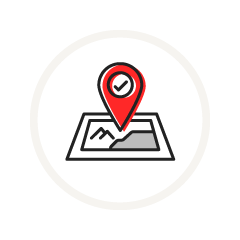
Our base camp trips are perfect if you don’t want to lug a backpack around, or if you'd prefer to camp with a few extra creature comforts. After enjoying daily hikes on front country trails, you’ll return to the same campsite each day equipped with proper toilets, showers, bigger tents and a camp kitchen.
If you’re an adventurous type who also likes sleeping on a real mattress (we don't blame you), our hut-to-hut trips could be for you. You’ll still need to carry your backpack as you hike through the backcountry, but you’ll stay in huts each night that range from basic bunkhouses to comfortable motels depending on the trip.
Our backpacking tours
Hiking and backpacking in yellowstone, 4 days from 1605.
See the best of Yellowstone on an Intrepid small group hiking and camping adventure...
Hiking and Backpacking Yellowstone's Bechler River Traverse
5 days from 2045.
Avoid the crowds and see the best of Southern Yellowstone National Park’s backcountry...
Hiking and Backpacking North Carolina's Appalachian Mountains
3 days from 1070.
Discover great trails, incredible views, spectacular summits and more on a small group...
Our base camp tours
Hiking and camping in zion, 3 days from 1560.
Experience Utah’s most famous national park as a standalone canyon country experience...
Hiking and Camping in Joshua Tree
4 days from 1775.
Experience Joshua Tree’s surreal landscapes, cool oases, and famous Joshua Trees on a 4...
Hiking and Camping in Yellowstone
5 days from 2230.
See the best of this iconic national park on five spectacularly diverse, hand-picked...
Hiking and Camping in Utah
6 days from 2360.
Experience Utah’s most famous national park destinations and see the best of Zion,...
Our hut-to-hut tours
Hike new hampshire's appalachian trail and presidential peaks, 4 days from 1895.
Spend an incredible 4 days hiking the highest mountains in New Hampshire, the...
Highlights of our hiking & backpacking tours
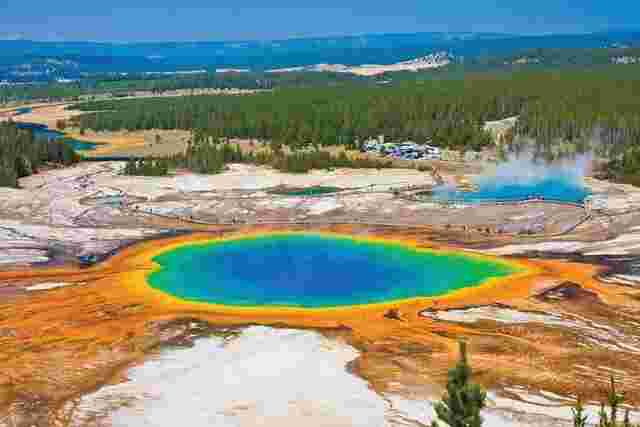
Take in the sights of Yellowstone National Park
Leave the busy roads and noisy sounds of everyday life behind as you embark on an adventure through one of the USA’s most beloved parks. Brimming with epic natural features, Yellowstone National Park boasts landscapes that need to be seen to be believed and luckily for you, you’ll get to see them all on hikes during the day before resting your body and camping out under the stars every night.
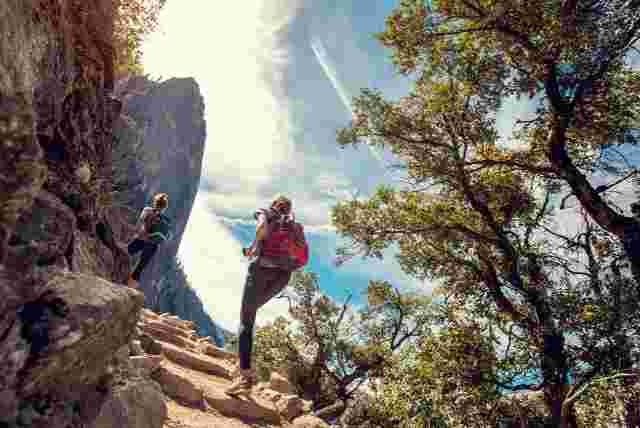
Marvel at the natural wonders in Yosemite
If you’re searching for remarkable sights that’ll give your camera its hardest workout yet, then search no longer – Yosemite National Park’s North Rim offers all that and so much more. Perfect for both outdoor enthusiasts and hardcore hikers, this trail boasts giant waterfalls, majestic peaks, and flower-filled meadows you’re bound to ooh and ahh over. And at night, set up camp, enjoy a hearty meal, and fall asleep under the night sky’s twinkling stars.
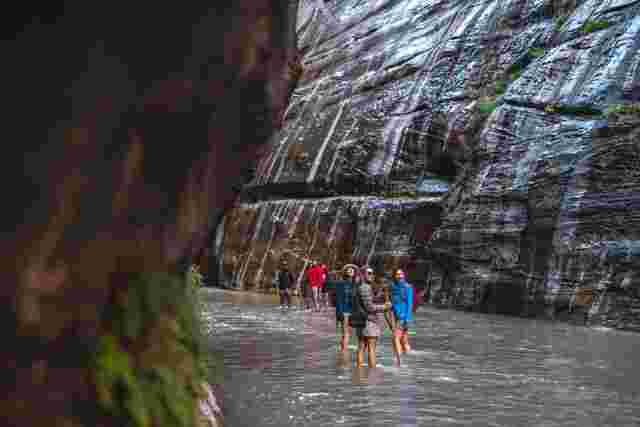
Explore Utah's wild west
Picture this: you wake up to the peaceful sounds of Mother Nature and have your morning coffee surrounded by spring-fed creeks, huge canyons and colourful cliffs. Spend six days hiking in Utah ’s most iconic national parks and watch these otherworldly landscapes come alive. Trek through Bryce Canyon’s awe-inspiring “hoodoos” and natural amphitheatres, wade through the rushing waters of Zion’s slot canyons, and explore the labyrinth of potholes, arches, and grottos in the dreamy Escalante.
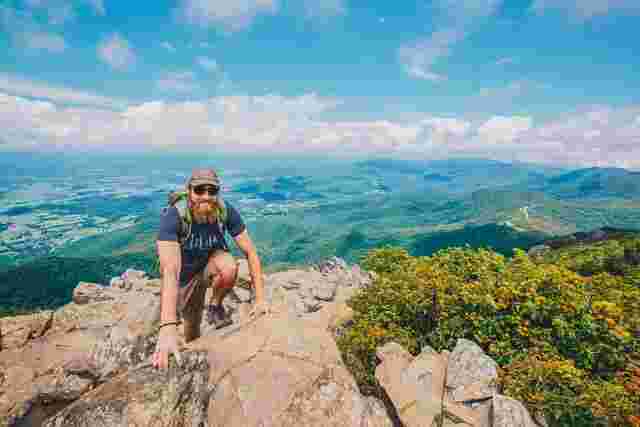
Hike the Appalachian Trail
Explore one of the most beautiful sections of the Appalachian Trail on a three-day backcountry adventure through the Blue Ridge Mountains. You’ll journey deep into the wilderness of the Cradle of Forestry, wind through postcard-perfect grassy meadows and witness the majestic cascades of Looking Glass Falls – maybe jumping in for a swim to cool down. The best part? You’ll camp on the summit of the spectacular Shining Rock and enjoy lunch on huge ledges overlooking the rolling plains of Ivestor Gap.
Popular US National Parks
Our US National Park Tours offer something for all kinds of adventurers, explore our range below.

Yosemite National Park

Yellowstone National Park

Denali National Park

Grand Canyon National Park

Zion National Park

Glacier National Park

Joshua Tree National Park

Badlands National Park

Death Valley National Park

Arches National Park

Olympic National Park

Mount Rainier National Park

Kenai Fjords National Park

Rocky Mountain National Park

Winter hiking and snowshoeing tours

Walking and trekking tours
Our hiking & backpacking tour reviews, essential info & faqs, what's the range of backpacking and hiking trips available.
We offer a wide range of all-inclusive backpacking and hiking tours in some of the USA's best national parks and scenic trails. Apart from getting yourself to the meeting point and bringing your personal items, everything is organised and provided for you including an expert hiking guide, permits and fees, meals, and most camping and hiking gear. Our trips range from base camp tours that include easy to moderate day hikes on front country trails to multi-day backpacking or hut-to-hut adventures in high mountains and backcountry routes.
What do I have to carry when we hike?
On our backpacking and hut-to-hut tours you'll need to carry a backpack that weighs between 25-45 lbs (11-20 kg) depending on the itinerary and season. It'll be loaded will be with your personal items (clothing, camera, toiletries, water bladder, etc), camping gear (tent, sleeping bag, sleeping pad, etc), and a portion of the group's food supplies or camping gear. Base camp tours are a bit different – we'll return to the same campsite each day so you can leave your main bag at camp. You'll still need a small daypack to carry your water bottle, snacks, camera and any other essential items while we're out hiking.
Should I bring/pack anything special?
We'll provide you with camping gear including a daypack, trekking poles, tent, sleeping bag, sleeping pad and pillow. Essentials you'll need to bring from home include a three-litre water bladder or bottle, hiking clothes and boots, headlamp, toiletries and medication, camera and any other personal items you might need. Just remember, it's no fun lugging a really heavy bag around so try to pack as light as possible.
How fit do I need to be to join?
While our range of backpacking and hiking trips differ in difficulty, it is recommended that you have a reasonable level of fitness so that the tour's enjoyable and you can get the most out of your holiday. To do this, try participating in some form of physical activity (such as long walks, running, cycling, etc) at least six weeks out from your trip. It's also a good idea to do some shorter test hikes with a backpack or something similar so you can become comfortable carrying your gear when the trip comes.
To help you choose the trip with the right level of difficulty, our team will forward an assessment form to you at the time of booking, and we will be open to discussing your choice and making suggestions if need be. You won't be confirmed for the trip until your form has been received and reviewed.
What sort of safety precautions are taken?
We value the safety of our customers, staff and fellow travellers very highly so you can rest assured that you'll be safe throughout the duration of your trip. Our leaders are well-trained and experienced (as well as insured) and don't cut corners when it comes to the wellbeing and safety of others. This means we only take well-researched trails and listen to all safety warnings when it comes to changing weather conditions.
Do I need special insurance for backpacking trips?
The short answer is no and yes - you won't need any extra insurance to cover any additional or technical activities that come with a backpacking and hiking trip but you will need to have an insurance policy that covers activities such as hiking and trekking. To make sure you're appropriately covered, we recommend presenting your insurer with the trip's itinerary.
Are backpacking and hiking trips accessible?
Intrepid is committed to making travel widely accessible , regardless of ability or disability. That’s why we do our best to help as many people see the world as possible, regardless of any physical or mental limitations they might have. We’re always happy to talk to travellers with disabilities and see if we can help guide them towards the most suitable itinerary for their needs and where possible, make reasonable adjustments to our itineraries.
Do I need a COVID-19 vaccine to join a backpacking and hiking trip?
Travellers on this particular trip are not required to produce proof of full vaccination against COVID-19. However, any guest who has been in close contact with someone known to have COVID-19, or who develops flu-like symptoms (cough, fever, shortness of breath/difficulty breathing, muscle pain, headache, sore throat, body aches/chills, recent loss of taste or smell), or who tests positive for COVID-19 within 14 days of their scheduled trip will not be allowed to join the trip without a negative COVID-19 test result.
Read more about North America

16 Beginner Backpacking Trips You Will Want to Take
W ho wants a vacation filled with the same things you do every day? For a true break in your routine that teaches you new skills and reacquaints you with what it means to be human, try a backpacking excursion! We will cover where should you go, and what do you need to know for beginner backpacking trips that will become great memories.
Backpacking hones crucial survival skills, such as how to set fires in damp environments, treat minor injuries and find your way without GPS.
It also gets you into the great outdoors — that magical realm that exists beyond your office door. It’s full of wonders, such as beautiful flowers and fascinating creatures, and holds all sorts of juicy health benefits.
Why plan a vacation that involves a mild spin on your daily activities? Get into the wild with our picks for the best beginner backpacking trips. These are the best locations for getting outside and learn something new about yourself and your world.
Backpacking, Defined
It may surprise you to learn that backpacking simply refers to the act of traveling from place to place while carrying your belongings on your back. Although most people visualize heading into the wild, it’s the mode of transportation, not the destination, that defines the practice.
Backpacking differs from camping in that you trek in and out with everything you need on your back . There’s no driving to the campsite and hooking up to power or even dragging your cooler from the car to the fire pit. You’ll carry your shelter, food and necessary supplies, including first aid, maps and equipment, in your back frame.
Beginner Backpacking Trips- Our Favorite Destinations
Now comes the fun part — planning your destination. There’s something for everyone right here in the United States, including newbies. Here are 16 of the hottest destinations for beginner backpacking trips that will test your mettle but still provide adequate access to services to make you feel comfortably safe.
1. The Appalachian Trail
The Appalachian Trail stretches for more than 2,000 miles from Maine to Georgia. Few backpackers traverse the entire length, but this scenic system that passes through multiple states offers ample smaller excursions for beginners. Best of all, it’s readily accessible by nearly anyone on the East Coast with adequate bus fare and Uber money.
For example, Mt. Marshall Loop is a relatively short hike with great views, perfect for beginner backpackers. The trail is only 13.8 miles , including a 15-20-minute viewpoint detour that’s great for kiddos who love scaling giant boulders.
What makes it sparkle is its proximity to several paid campgrounds, including the Shenandoah Valley Campground, so those who don’t want to stay in the big woods can easily trek closer to civilization to bed down for the night.
Other worthwhile backpacking treks off the Appalachian trail include:
- McAfee Knob , Catawba, Virginia
- Springer Mountain , Georgia
- Mt. Cammerer, North Carolina
- Little Rock Pond via Long Trail , Vermont
- Bald Pate Mountain and Table Rock , Maine
2. The Pacific Crest Trail
The beloved “PCT,” as it’s known in hiking parlance, suffered quite the wallop in 2023, with record snowfall surpassing 50 feet in some areas. Although parts of this trail are not for the faint of heart, others are perfect for beginner backpackers. The trail winds through three states and five distinct sections:
- Southern California
- Central California
- Northern California
Each is unique in topography and climate, so spend time researching where you plan to go. What are some of the best two- to three-day backpacking trips along the PCT? Try these excursions:
- Chewing Gum Lake: This 4.5-mile excursion is north of Yosemite and south of Tahoe.
- Bear Lake: This seven-mile trek features a gentle 500-foot elevation gain.
- Chain Lake: The Box Springs Trailhead 4.4 miler has a more severe 864-foot elevation gain.
These are wise choices for beginner hikers since each can be done in a single day. If you’re a seasoned backpacker, here are a pair of challenging hikes in the area:
- Alder Creek Falls: This trek is ideal for heartier beginner backpackers, featuring about 8.2 miles and a 1,000-foot elevation gain.
- Waterfall Camp in the Desolation Wilderness: This is another tough one that ends in a gorgeous setting after 10.5 miles and a 1,522-foot elevation gain.
3. The Continental Divide
The Continental Divide rounds out the backpacking world’s illustrious triple crown — something only a hair over 500 people have ever done. It seems spending months in the great outdoors, free from other obligations, isn’t realistic for most people.
However, you can get your fix in a more reasonable time frame with one of these two- to three-day backpacking trips along the Continental Divide, spanning over 3,100 miles across five states. Explore one of the following:
- Gooseberry Springs Trail, New Mexico: Hike up Mt. Taylor, a sacred mountain among the Navajo.
- Bear Lake, Colorado: Multiple sites abound around this lake and trail system. Bring your bear spray.
- Big Meadow and Granite Falls, Colorado: This hike is great for viewing elk, moose and deer.
- Bridger Pass Road North, Wyoming: Take an optional side trip to the Teton Reservoir off this six-mile trek.
- Lemhi Pass toward Goldstone Pass, Montana: Follow the footsteps of Lewis and Clark on this variable-length trek.
4. Yellowstone National Park
National parks sparkle for beginner backpackers because they offer various campsites and accommodations for backpackers. For example, Yellowstone National Park has ample dispersed campsites around Yellowstone Lake.
Be mindful of seasonal limitations, considering many sites close from October 15 through April due to weather conditions. Once mid-October arrives, you’ll find dispersed camping with no amenities.
Yellowstone Lake is among the best places for beginner backpackers in this extreme wilderness, and you should visit during the summer months. Summer highs typically hit the mid-70s, providing a comfortable hike through an American landmark.
The highest temperatures you can expect come from the Norris Geyser Basin, reaching 706 degrees Fahrenheit in its underground water.
Read our complete guide to all the amazing things to do in Yellowstone National Park with kids .
5. Yosemite National Park
Yosemite is another national park with excellent treks for beginner backpackers. Many adventures depart from Tuolumne Meadows, a magical sight in the evening when sunset casts the fields in a mystical golden glow.
Early spring and summer are the peak times for viewing waterfalls, but make early reservations. The park charges a $35 entrance fee, which allows you to park for seven days and backpack to your heart’s delight, as long as you stay away from wild critters and carry bear spray, just in case.
Here are our favorite things to do in Yosemite with kids .
6. Joshua Tree National Park
If you appreciate sunshine more than snow and ice, Joshua Tree National Park is your go-to backpacking destination. You’ll want to avoid the hottest months of June, July and August, but spring and autumn in the desert is a delight, and nighttime temps stay above freezing — although the thin atmosphere makes them feel mighty cold.
The best beginner’s backpacking trek here is the Boy Scout Trail , which takes you through the Wonderland of Rocks . While it’s tempting to let little boulderers climb to their hearts’ content, stay close to the trail to avoid getting lost. The Big Pine Trail is another trek of equivalent length that is a favorite among birders.
Check out our great guide to exploring Joshua Tree with kids .
7. Zion National Park
You could spend a summer in Utah visiting five national parks, but if you only have time for one, set your beginner backpacker soles on the dirt at Zion National Park.
The Angel’s Landing, West Rim and Telephone Loop is perhaps the most famous, traversing 15.5 miles over a two- or three-day span. Coalpits Wash at 7.2 miles is a great one if you have less time.
Zion is one of those all-season parks that is fun to visit any time of year. Check our guide to visiting Zion in winter and our full guide to things to do in Zion with kids .
8. Grand Teton National Park
The Grand Tetons transport you to a landscape that looks like it should be in Switzerland, right here in the United States. One of the best trails is undoubtedly the Cascade Canyon to Lake Solitude route, a 16-mile round-trip path featuring over 2,500 feet of elevation gain — spread it out over three days to make it enjoyable. You’ll find ample campsites just south of the lake, and bear spray is a must.
As you might have suspected, we have a geat guide on things to do in Grand Teton National Park as well!
9. The Grand Canyon
Upon arriving at the Grand Canyon, you’ll see countless signs reminding you not to attempt to hike to the river and back in one day. How else, though, to see wonders like Havasu Falls , located on the Havasupai reservation? The only way is to backpack — and make reservations well in advance.
Additionally, bring plenty of hydration. While the Colorado River is pure enough to drink from in parts, there’s not a drop to be found before reaching the Village eight miles in.
If you want to backpack inside the park, definitely make reservations for the Bright Angel Campground well in advance and secure your backcountry permit as well. The hike back up from the canyon bottom is only for advanced hikers and best for teens and tweens.
We have great guides to the Grand Canyon South Rim as well as the Grand Canyon North Rim. Both are quite distinct so I suggest trying to visit each of them over time but keep in mind that they are hours apart from each other by road.
10. Arches National Park
Your tour of the Southwest heads north to Utah once more to Arches National Park. This location is ideal for beginner backpackers as the uniquely delicate sandstone formations mean there are only four designated spots for backcountry camping.
You must carry ample water since few, if any, natural sources exist. However, the hikes to many of the most photographic spots are between half a mile and a mile and a half in length, letting you capture multiple frame-worthy pictures.
These are our favorite things to do in Arches National Park with kids .
11. Capitol Reef National Park
Capitol Reef is the least visited of Utah’s five national parks, making it perfect for people who relish solitude. It’s also among your cheapest options — although you’ll need a permit for backcountry camping, you can pick one up for free.
Spring Canyon and Upper Muley Twist Canyon are perfect overnight treks for beginner backpackers , while more remote locations like Halls Creek Narrows require nearly a week.
Here is our full guide to visiting Capitol Reef National Park with kids .
12. Acadia National Park
Head to the northeastern wilds of Maine at Acadia National Park for a completely different landscape. Like all such locations, it offers multiple options for backpackers.
The Mountain Carriage Loop offers inland challenges, while the easy Ocean Path Trail is perfect for families with young kids. Bernard Mountain tempts those who appreciate solitude.
Here are the best things to do in Acadia National Park with your family.
13. Sequoia National Park
Trees and mountains are taller in the west, and a visit to Sequoia National Park makes giant redwoods your nighttime canopy. Although many of the most popular routes in this forest span multiple days, Redwood Canyon is home to the largest sequoia grove in the world and is a great beginner backpacking destination.
The Hart Tree and Fallen Goliath Loop is 6.5 miles in length. It crosses Redwood Creek, past Hart Meadow, and through Tunnel Tree until reaching Hart Tree, the largest sequoia in the grove.
Mineral King is Sequoia National Park’s High Sierra destination, with several overnight hikes originating from this area. Camping is allowed as soon as 2.5 miles in on a few of the trails and all the scenery in this part of the park is spectacular.
It’s possible to do the Pear Lake as an out-and-back overnight or a three-day trek. You’ll traverse 11.9 miles and gain 3,080 feet in elevation, so it pays to hit the cardio extra hard at the gym in the weeks before your adventure.
Here are our favorite day hikes in Sequoia and Kings Canyon National Parks .
14. Ancient Lakes, Washington
Some destinations have a unique backpacking vibe you have to experience. Ancient Lakes, Washington is one such spot.
Although the entire Ancient Lake Loop spans 12 miles , you can take numerous shorter treks and camp at any of the established sites around the lakes. Here, established means there’s a fire ring, so don’t expect toilets or running water — it’s primitive.
15. Verde Valley, Arizona
Scores of tourists flock to Sedona, the Verde Valley’s most well-known spiritual mecca, but what about the folks who come for the great outdoors? Although there’s no dispersed camping within the city limits, travel to the heart of town and take Schnebly Hill Road to the parking area before the rough stuff for the Jeep tours begins.
From there, trek the four-mile Munds Wagon Trail for some of the most breathtaking red rock scenery imaginable. Continue past the Cow Pies and ascend to the Coconino Plateau, where you can enjoy dispersed camping galore amid the elk, black bear and occasional Mexican gray wolf.
16. Superior Hiking Trail, Minnesota
The Superior Hiking Trail spans over 300 miles along Lake Superior’s north shore. While there are multiple designated campsites, you must stay within their confines and respect private property rights.
Bring extra spray in May, as ticks and mosquitoes emerge in droves, although late summer and early fall are glorious times to visit. It may be the best place to get outdoors in July while still beating the heat.
What Supplies Do You Need for a Backpacking Trip?
The supplies you need for a beginner backpacking trip fall into distinct categories and groups. Here’s what you should consider for each one:
- Shelter: The smaller the tent, the better for preserving body warmth. Seek a model you can set up with your trekking poles to save space, and consider adding a ground cover for added protection against the cold.
- Sleeping arrangements: While a bivvy bag will do in a pinch, the right sack for your trek’s climate preserves comfort.
- Navigation equipment: A map and compass are musts, as cellphones and smartwatches don’t always work in the wild. A satellite system like Garmin is helpful if you can afford it.
- First aid: Include prescriptions you take regularly.
- Clothing: Extra underwear and socks are musts, while the rest depends on the destination.
- Food: Ensure you get at least 2,500 calories daily.
- Water: Water weighs over 8 pounds per gallon , so invest in a bladder for your backpack and purification tools like a Lifestraw and tablets.
- Tools: Bear spray is a must in some areas. Additionally, a knife, multitool, paracord, sheet of plastic (for making solar stills in desert areas), headlamp, flashlight, power banks and charging cords are helpful.
Pro-tip: Your phone can also serve as evening entertainment. Download a few podcasts, including some scary campfire tales — the latter only if you dare.
What Should You Wear on Your Backpacking Trip?
Dressing for your beginner backpacking trip depends in large part on your destination. A September trip to Yellowstone, where nighttime temperatures may plunge below freezing, is quite different from a similar excursion in the Florida Everglades.
That said, you can’t go wrong if you dress in layers. The basic rule is this:
- Your first layer should wick sweat away from your body and consist of a material like silk, merino wool or a synthetic — not cotton.
- Your second layer is where you pile on the insulation with plenty of flannel and fleece.
- Your third layer is water- and wind-proofing and protects you from the elements, like a thin vinyl jacket over a sweatshirt.
However, you can take some liberties. For example, some folks like a heavy vest that insulates their vital organs but prefer to keep their extremities relatively free. A lightweight pair of leggings under denim shorts protects your lower half on chilly mornings and readily tucks away once the sun rises high enough in the sky.
Remember, you must also protect your extremities. Unless you head somewhere where nighttime temperatures are guaranteed to stay above 60 degrees, pack a hat, gloves, thick socks and possibly a balaclava in truly frigid temps.
Jack Shaw is a Senior Outdoors Writer for Modded Magazine. Driven by his passion for writing, Jack loves to traverse the wilderness, travel and explore the unknown. He has over six years of experience writing professionally and loves engaging in new projects. His works have been published in The Travel Magazine, EcoHotels, Duluth Pack and more.


COMMENTS
Rocky Mountains. Pawnee And Buchanan Pass Loop: The premier backpacking trip in the Indian Peaks Wilderness. Devils Thumb + Kings Lake Loop: The best single night backpacking trip in the Indian Peaks Wilderness. Fancy Pass, Missouri Lakes Loop: Hike this popular loop in the Holy Cross Wilderness. Four Pass Loop: Colorado's most coveted ...
Distance: 221 miles. Difficulty: 4. The John Muir Trail's 211 miles from Yosemite Valley to the highest summit in the Lower 48, 14,505-foot Mount Whitney in Sequoia National Park, has often been described as "America's Most Beautiful Trail"—and hyperbolic as it sounds, it's hard to argue against that lofty claim.
2. The North Coast Route —Olympic National Park,Washington. Positioned along the coastal portion of Washington's Olympic National Park, this 20-mile backpacking trail is an ideal entry point for inexperienced backpackers with a penchant for seaside views.
Mammoth Lakes. #4 in Best Places to Hike in the USA. This California town in the Eastern Sierra draws adventure travelers with a long ski season, but its 300-plus miles of trails that curve ...
Photo: Shutterstock. Why you should go: get all the glory of hiking the Appalachian Trail without having to walk the full 2,180 miles. Location: 100-Mile Wilderness, Maine Distance: 93 miles (weirdly not 100) Elevation gain: 15,000 feet Type: point-to-point Recommended number of nights: 7 to 10 The Appalachian Trail is hiked by hundreds of thru-hikers every year.
4. Hike the Little River Trail to Backcountry Campsite #30, Great Smoky Mountains National Park. Photo by Adam Welch. Distance: 12.34 miles. Elevation: 412 feet. Type: Out-and-back. This 12+ mile trail is located in Great Smoky Mountains National Park and follows a reclaimed railway bed along the Little River.
Travel Destinations North America 8 Once-in-a-Lifetime Backpacking Trips From a trail in Isle Royale National Park with spectacular views to a hike that hits four 6,000-foot peaks in 30 miles ...
10 Days Backpacking the USA Itinerary - A Jetsetting Holiday. 1.New York City, 2.Chicago, Illinois, 3.Los Angeles, California, 4.Miami, Florida. A 10-day itinerary in the USA doesn't offer a whole lot of time to see the country, but you'll still have lots of options with a larger budget.
Best Backpacking Trips In The Midwest: Chicago in Illinois is an affordable city to visit, which means plenty of free things to do and cheap hostels to stay in. The Windy City is the third biggest city in the states and is far more affordable than the top two position holders, New York and Los Angeles.
Take away the worry of planning and the risk of being unprepared by planning a Zion Basecamp Tour with Wildland Trekking. Now only will this tour give you an unforgettable experience in the Narrows, but you will have a chance to see other parts of the park as well. 5. Enchanted Valley - Olympic National Park.
The 10 Best National Park Backpacking Trips. January 28, 2024 by Michael Lanza. By Michael Lanza. Olympic, Grand Canyon, Yosemite, Glacier, Zion, Grand Teton, Mount Rainier, Canyonlands, Sequoia, Great Smoky Mountains. To backpackers, these names read like a list of America's greatest cathedrals in nature—and no surprise, because these ...
At the end of that road, however, is the starting point of one of the best backpacking trips in America's national parks. The Cascade Pass Trail takes hikers to the alpine meadows, glaciers and epic views of the North Cascades. At 3.7 miles one way, this is the most popular day hike in North Cascades National Park.
Profile Lake in New Hampshire is one of America's 10 Best Backpacking Trips. The Pemi Loop is 50.7 km of intense hiking - more than 2,743 m in elevation gain - with eight 1,219 m-plus peaks encircling the western half of New Hampshire's Pemigewasset Wilderness.Featuring rugged terrain and spectacular vistas, this trip is best done in two or three days.
10 Best Backpacking Trips in U.S. National Parks - National Geographic. 1 of 10. Wonderland Trail in Mount Rainier. Location: Washington State Length: 93-mile loop Days on the Trail: 7 to 14 All ...
Lost Coast Trail with @zukespets. (9) John Muir Trail (California) Easily one of the most celebrated mountain footpaths in the world and definitely a legendary backpacking bucket-list item, the roughly 214-mile-long John Muir Trail—which partly shares the same route as the Pacific Crest Trail—serves as a stunning introduction to the alpine glories of the High Sierra.
The next day, head six miles to Ruby Canyon, camp 2. On day 3, hike another six miles to Turquoise Canyon. The longest day is day 4, heading 14 miles past Sapphire and Agate Canyons to the campsite at Boucher Creek. On the last day, hike the final 10 miles to Hermit's Rest.
Backpacking in North America. Spanning from the arctic region of Northern Canada to the jungles of Southern Mexico, the continental landmass of North America is home to many well-trodden backpacking trails, but there is still so much to discover. Between the awe-inspiring national parks, sprawling metropolitan cities, and charming towns, there ...
The Smokies | Tennessee & North Carolina. Backpacking through the Smokies is truly otherworldly. Photo by Kirk Thornton. For Appalachian Trail thru-hikers, the 72 miles of A.T. within the Smokies represents one of the most revered sections of the entire 2,200 mile route. For weekend (and weeklong) warriors, this stretch represents one of the ...
The State of Washington. The State of New York. The State of North Dakota. The State of Utah. The State of Colorado. The State of California. Specifically, we singled out the best backpacking trips by region including the Pacific Northwest, the Mountain West, the Northeast, Midwest, Southwest and Southeast.
As with any outdoor activity, safety should always be a top priority. Before embarking on a backpacking trip, it's important to research the area, check weather conditions, and pack appropriate gear and supplies. With proper planning and preparation, a backpacking trip in North America can be a truly unforgettable experience.
2. Shining Rock Wilderness, North Carolina. Mileage: 22 miles roundtrip | Length: 4 days | Elevation Gain/Loss: 2,300 feet with backpacking packs (plus 1,700 ft with a day pack) The Shining Rock Wilderness in the Blue Ridge Mountains of North Carolina is one of the most spectacular East Coast backpacking destinations.
From Southeastern classics like Roan Mountain, to New England treasures like a hut-to-hut trip in the Presidentials, to epic and challenging trails in the Tetons, here are some of America's greatest backpacking trips. 1. Pictured Rocks National Lakeshore. 19 miles, 1-2 days, Easy. The view of Grand Portal Point from a distance (along the North ...
Lisi gong 3 Aug, 2023. 5. I have great time. Dusty is the best tour manager. I have very good first camping trip. Canadian Rockies. Michelle Langelier 11 Oct, 2023. 5. the best way to explore the vastness and glory of the Utah desert is by camping and hiking in small groups.
Spend six days hiking in Utah 's most iconic national parks and watch these otherworldly landscapes come alive. Trek through Bryce Canyon's awe-inspiring "hoodoos" and natural amphitheatres, wade through the rushing waters of Zion's slot canyons, and explore the labyrinth of potholes, arches, and grottos in the dreamy Escalante.
What are some of the best two- to three-day backpacking trips along the PCT? Try these excursions: Chewing Gum Lake: This 4.5-mile excursion is north of Yosemite and south of Tahoe.